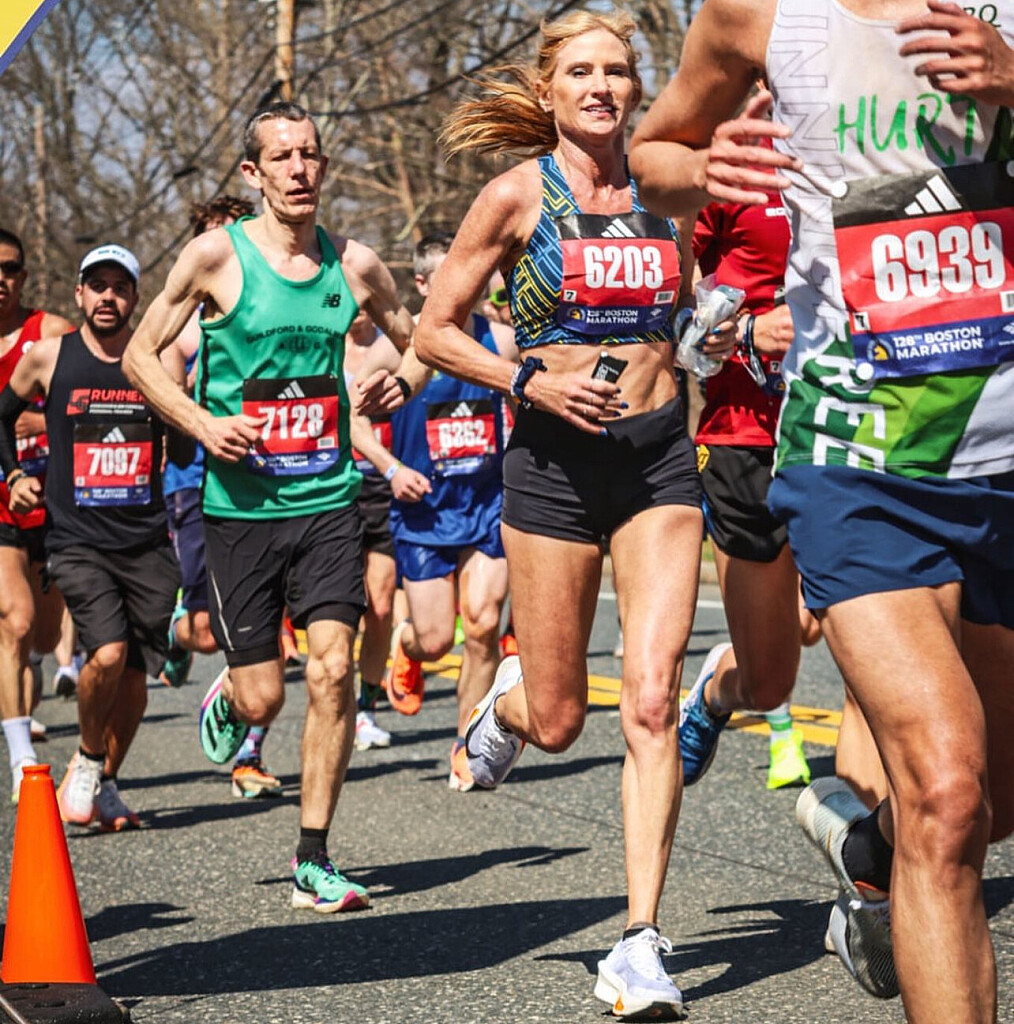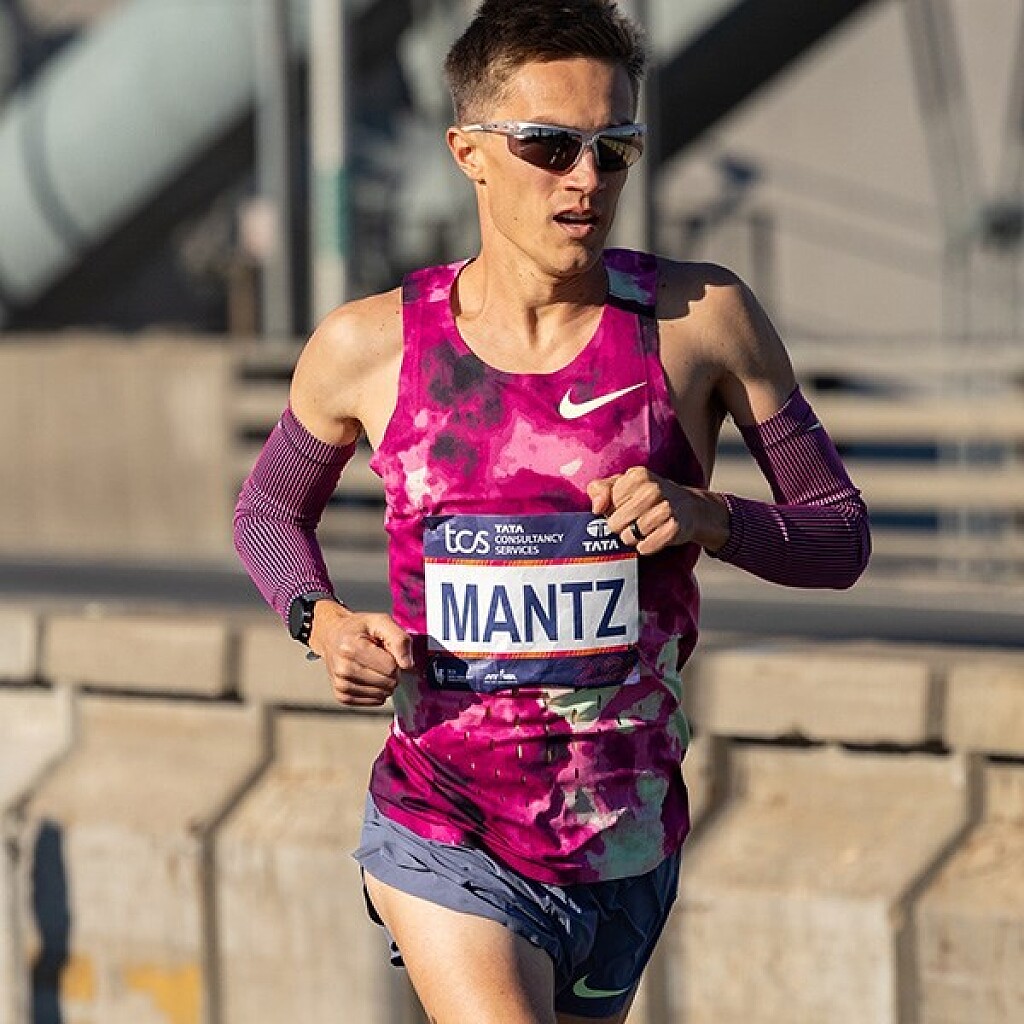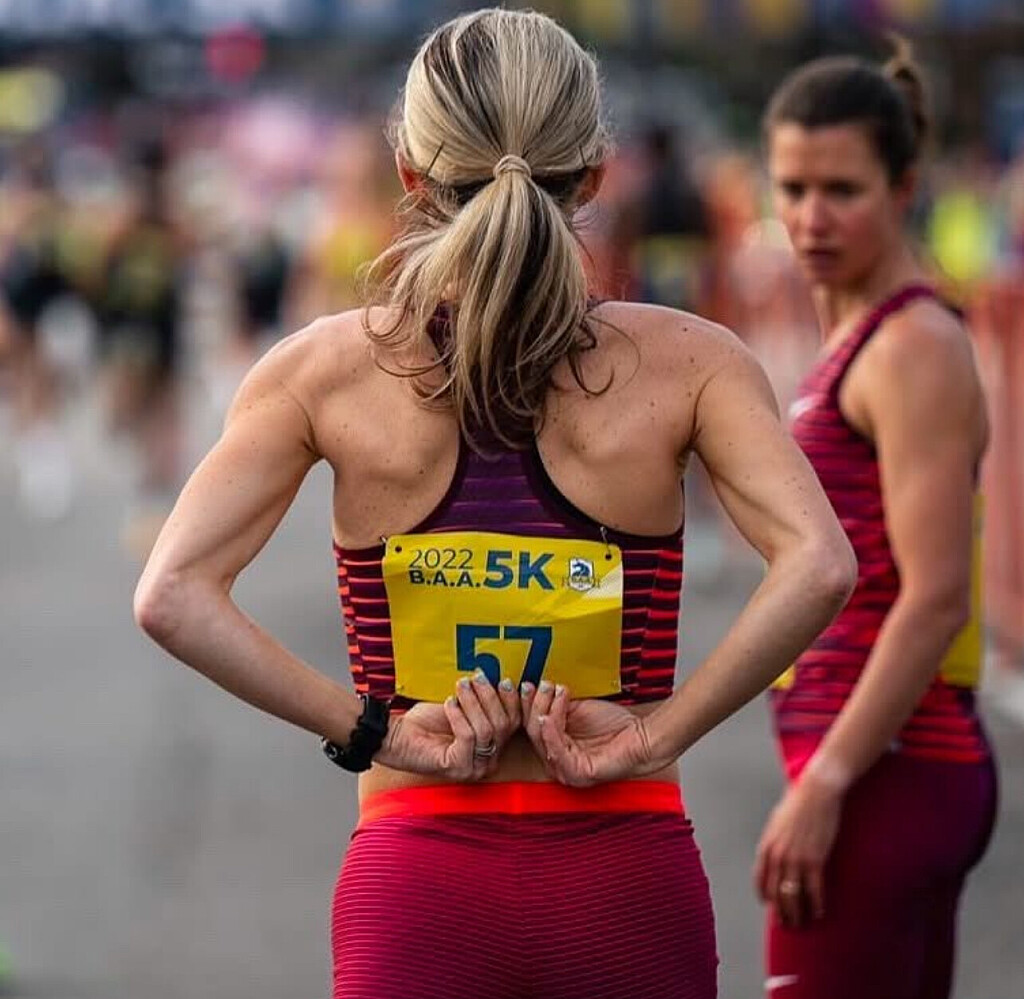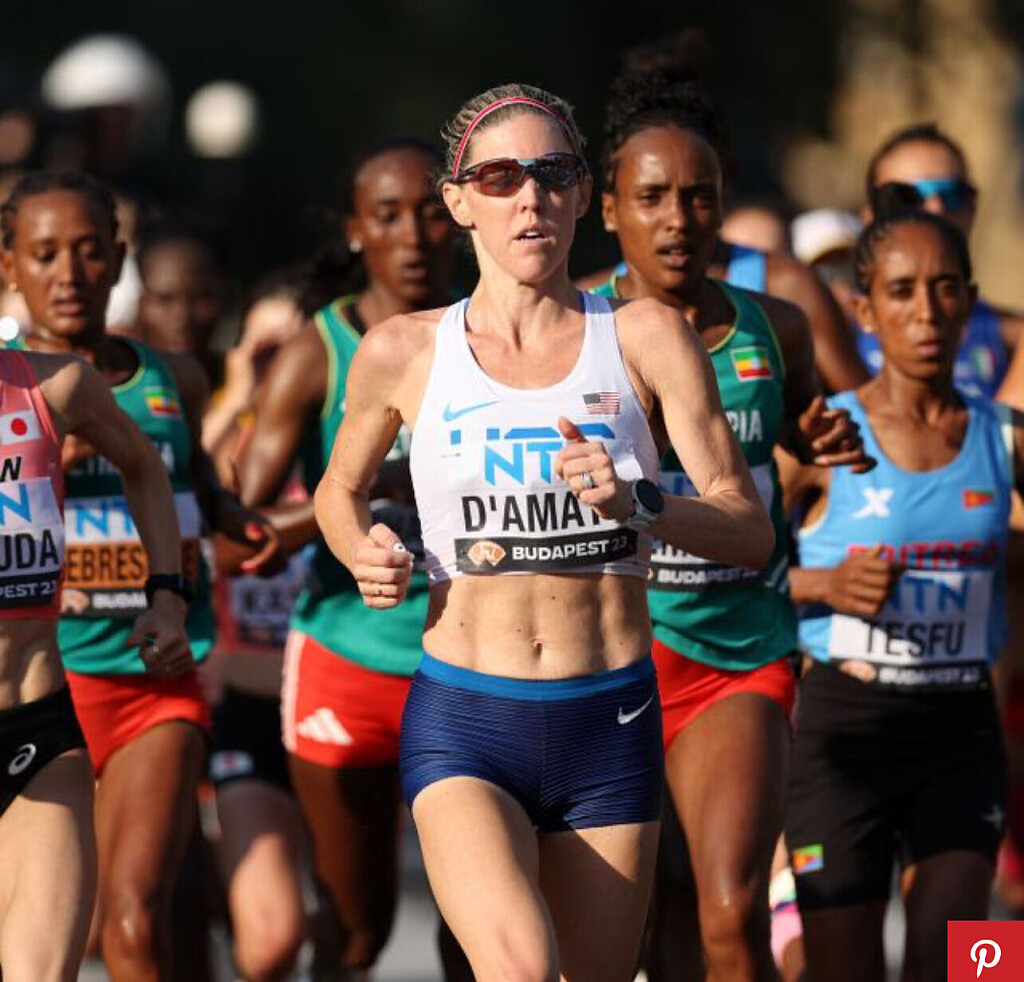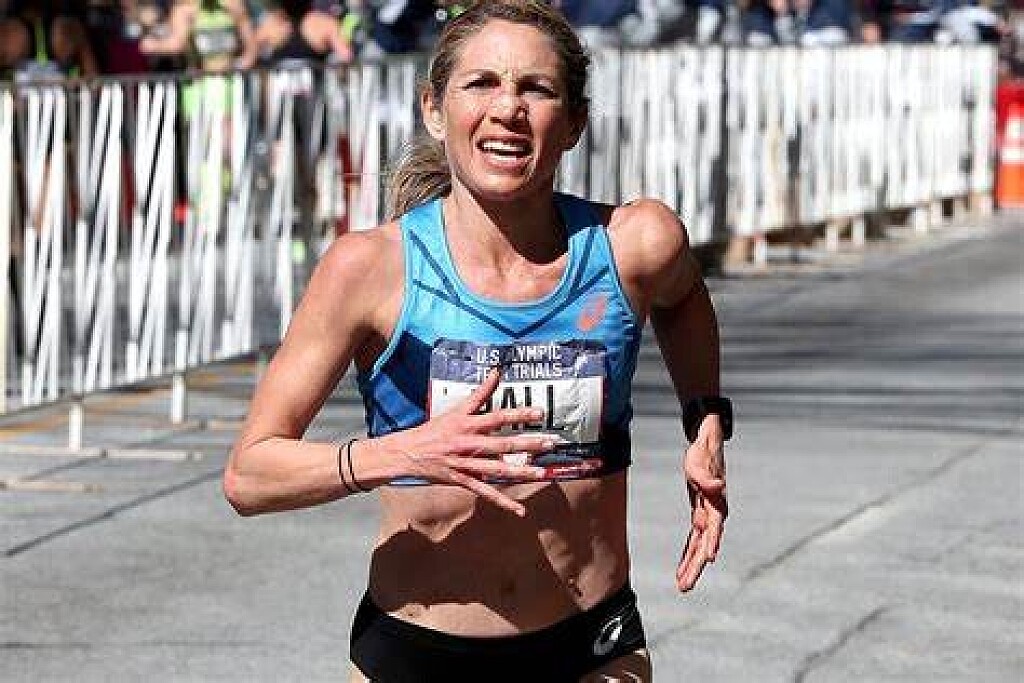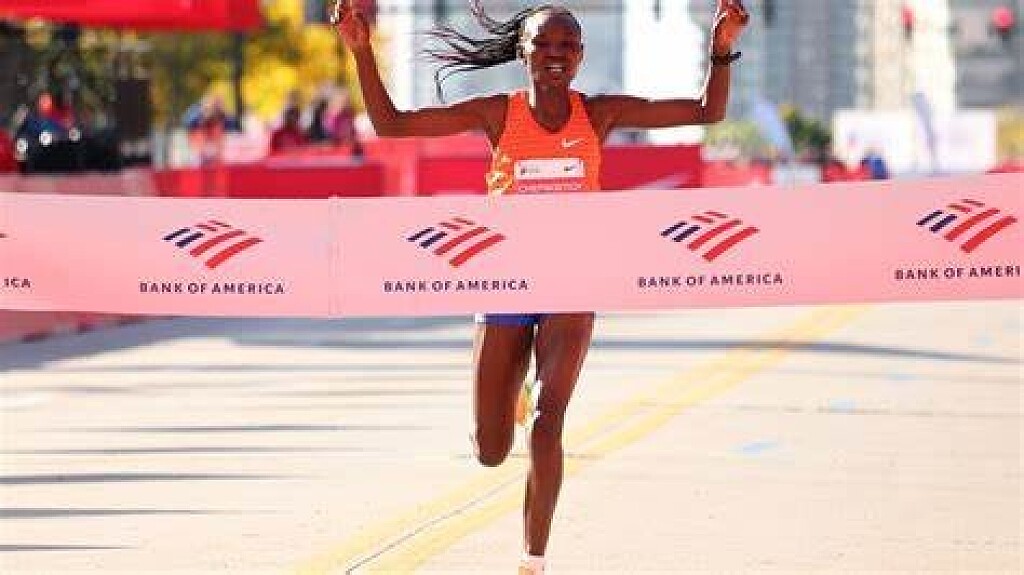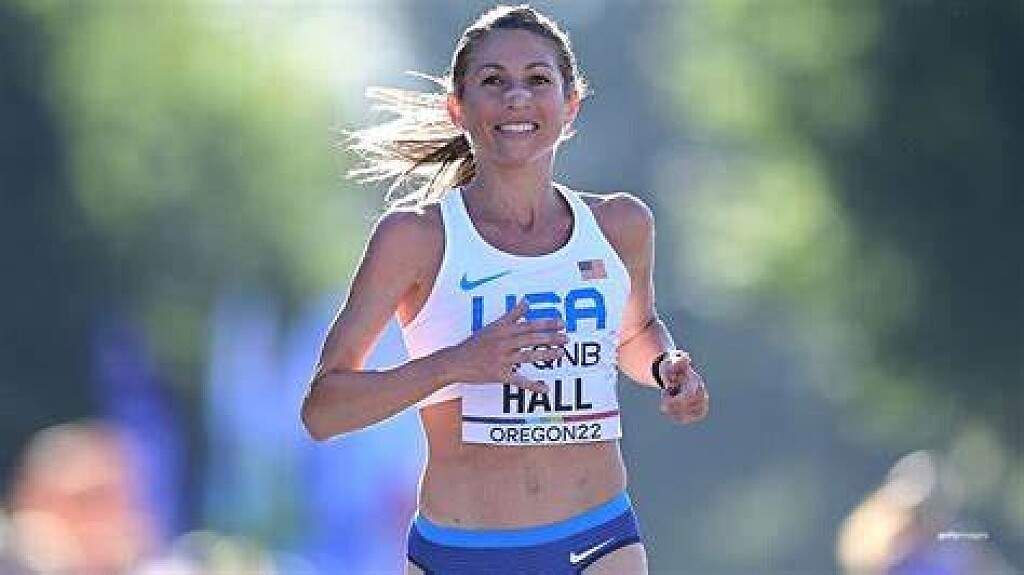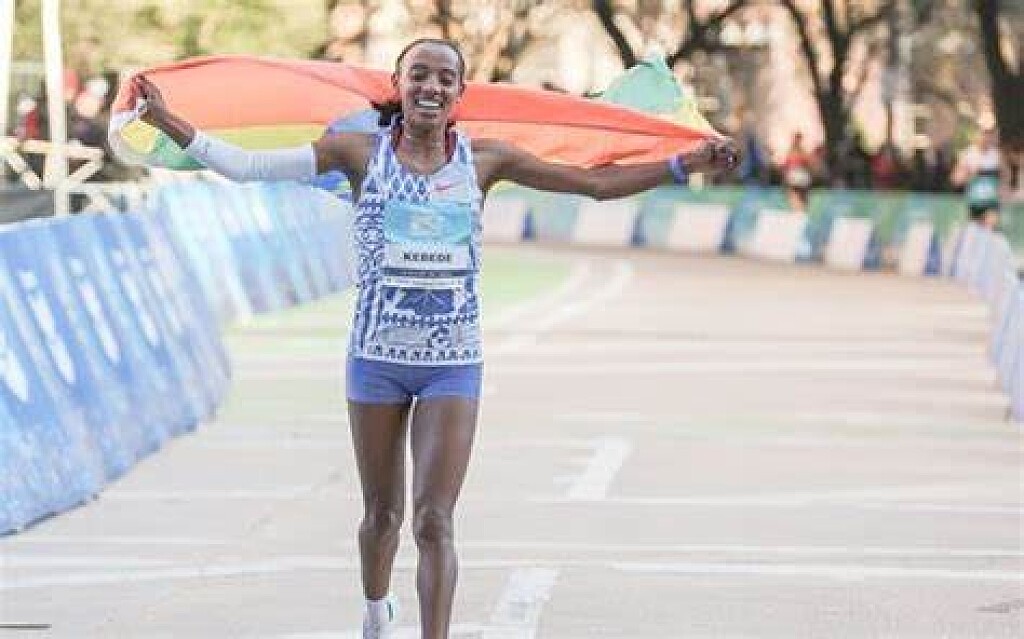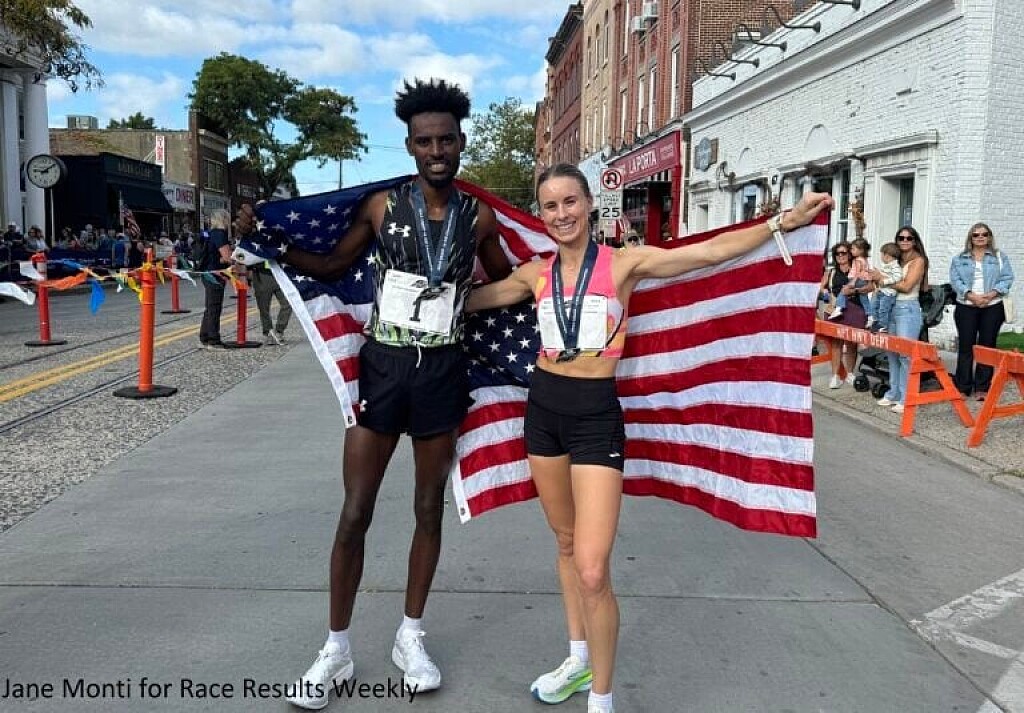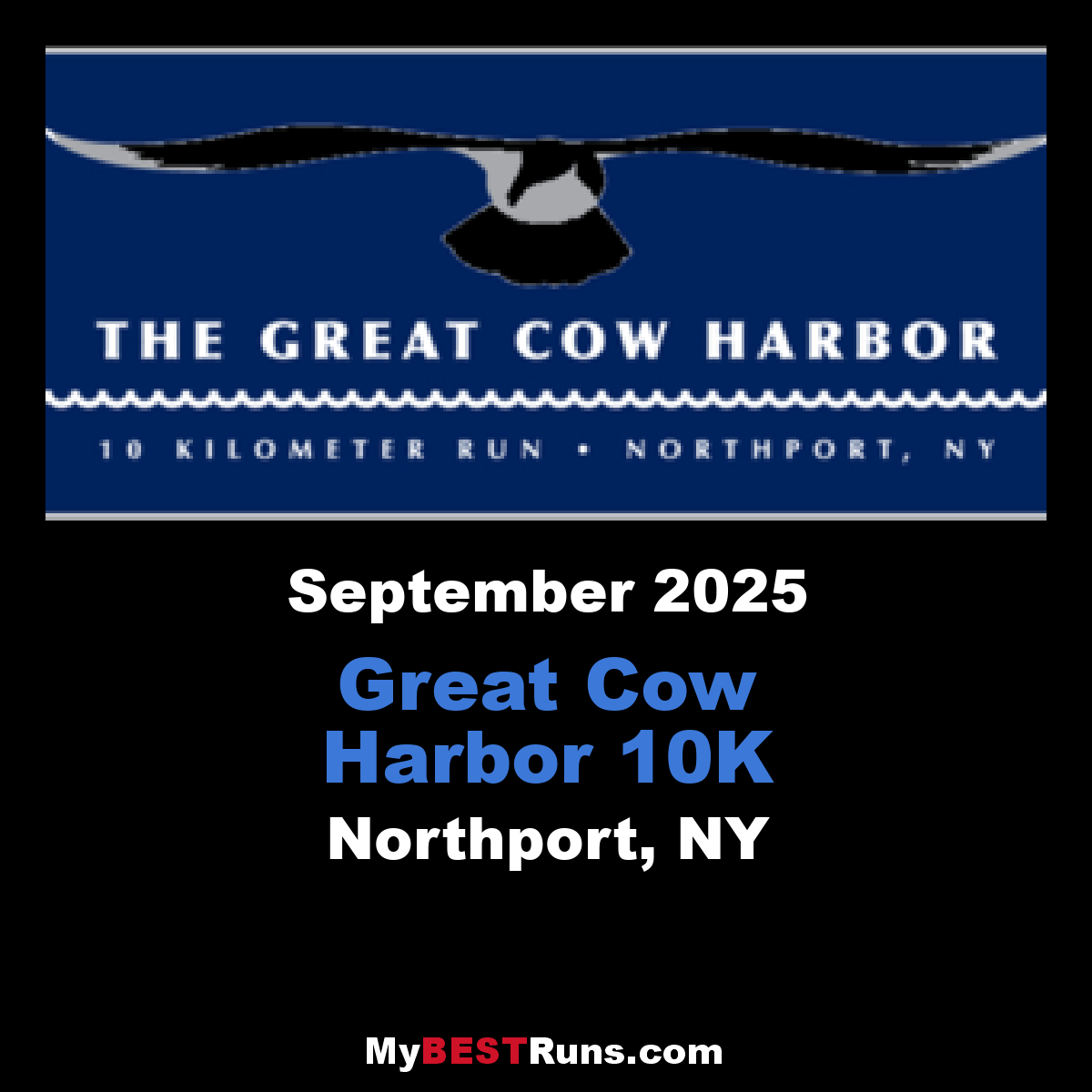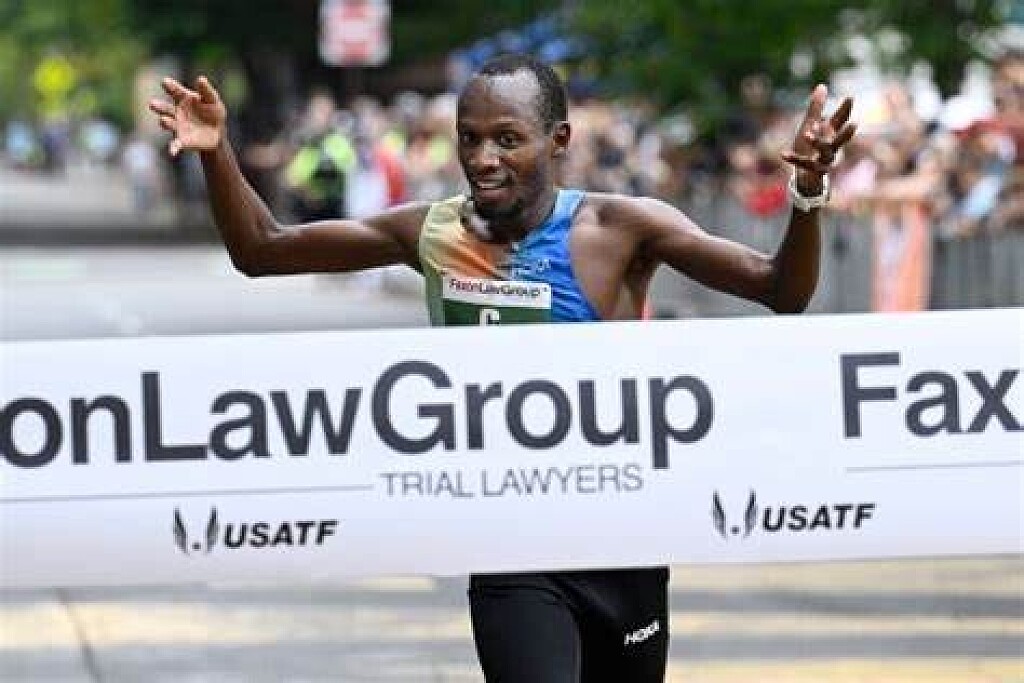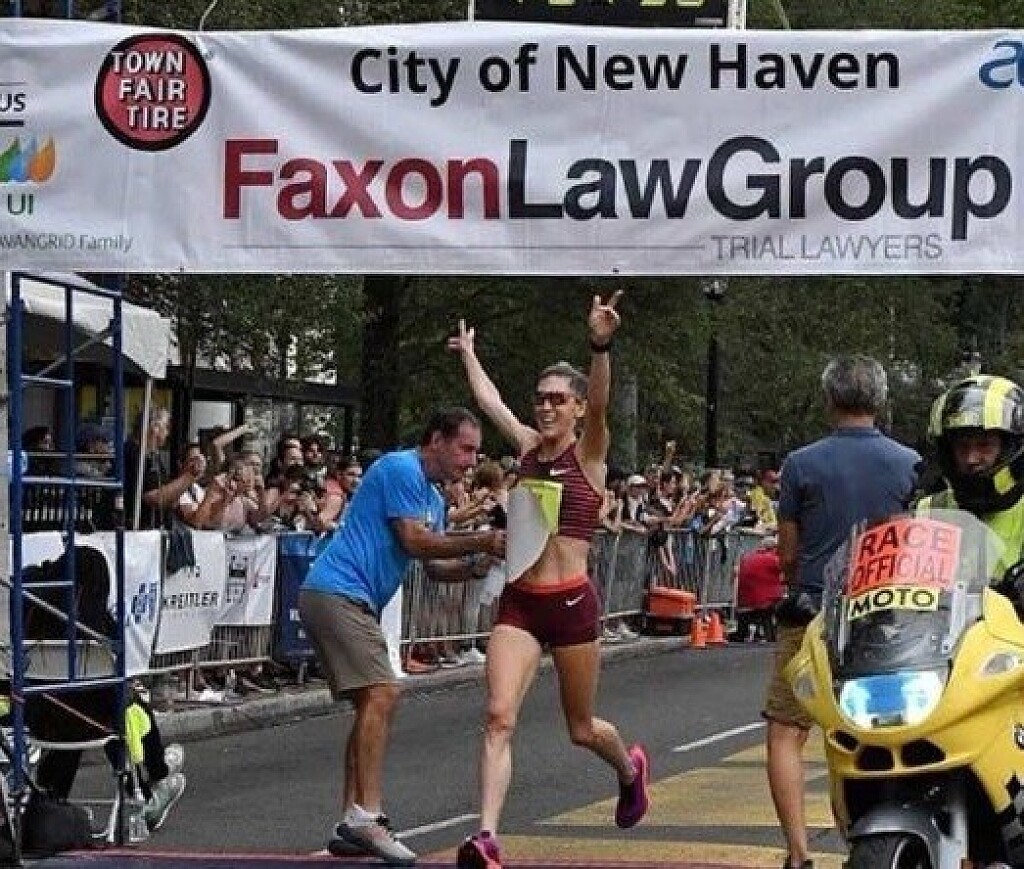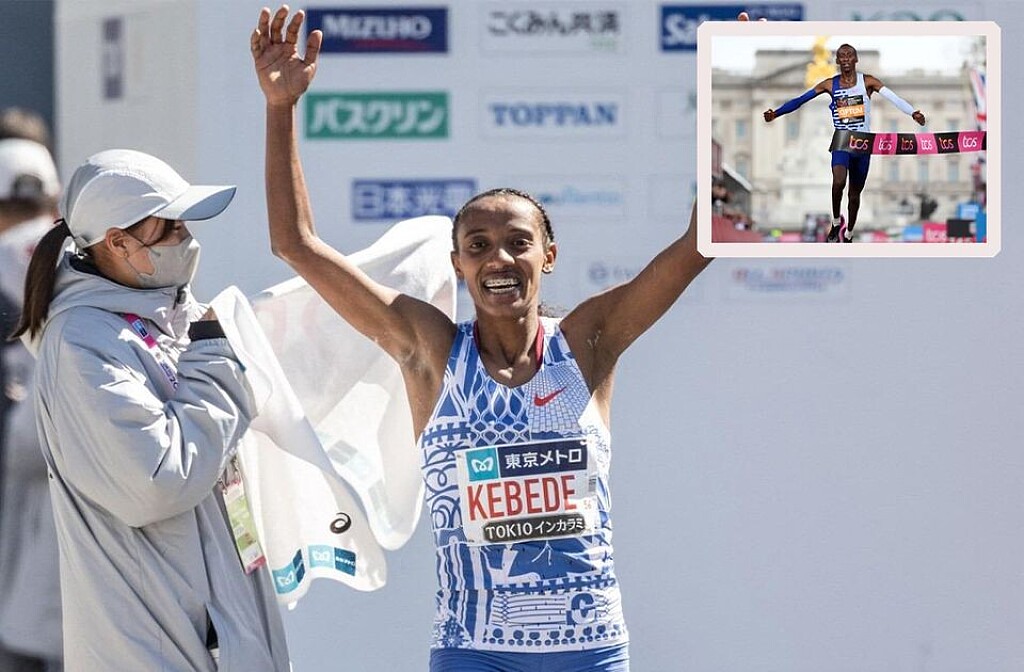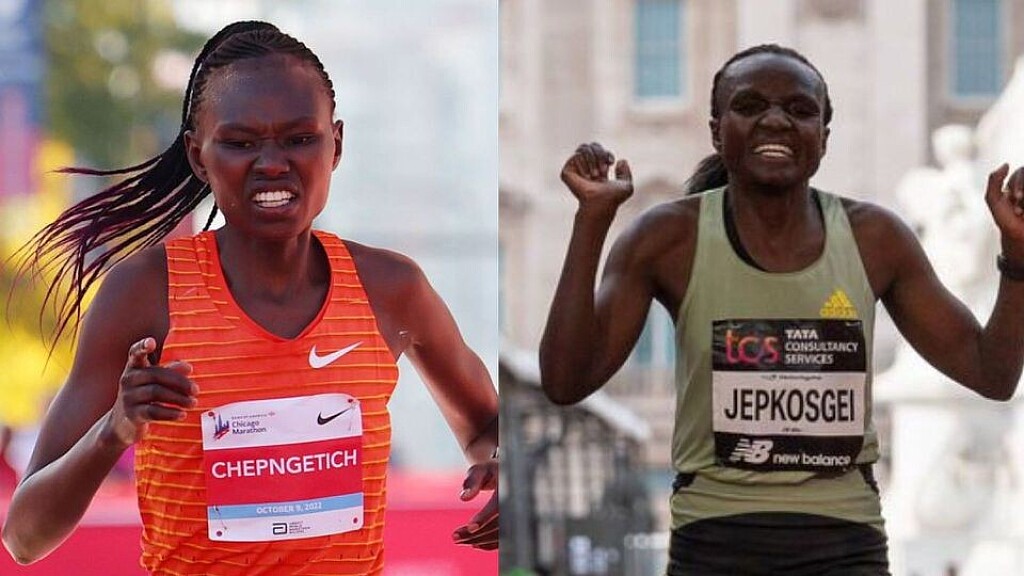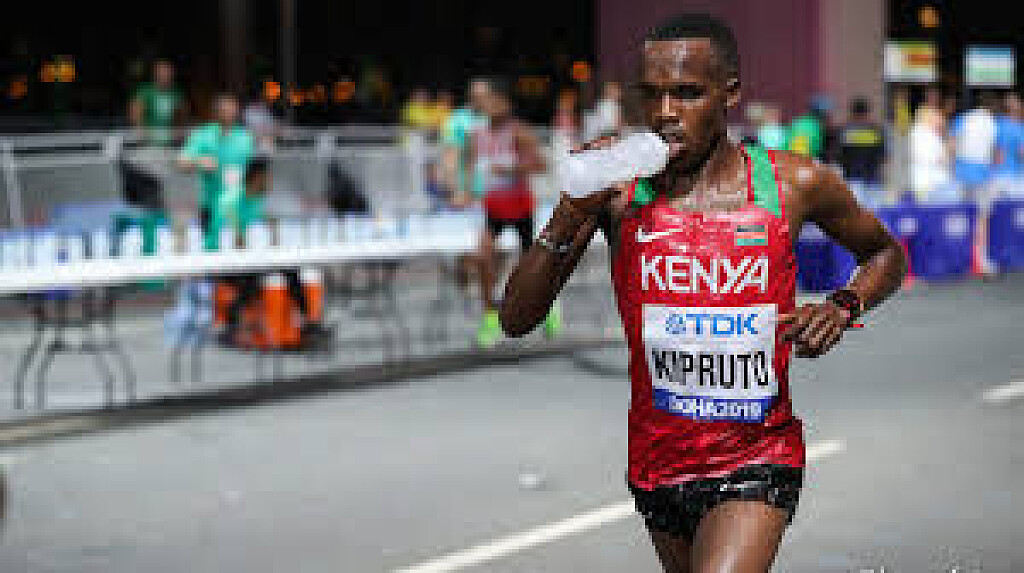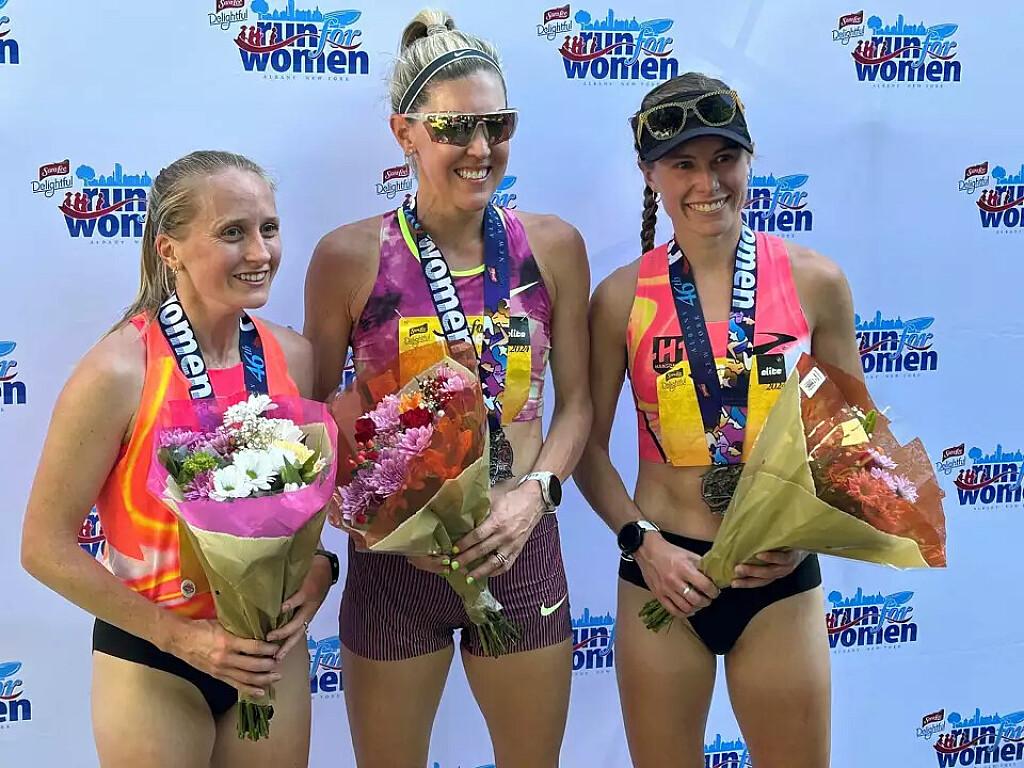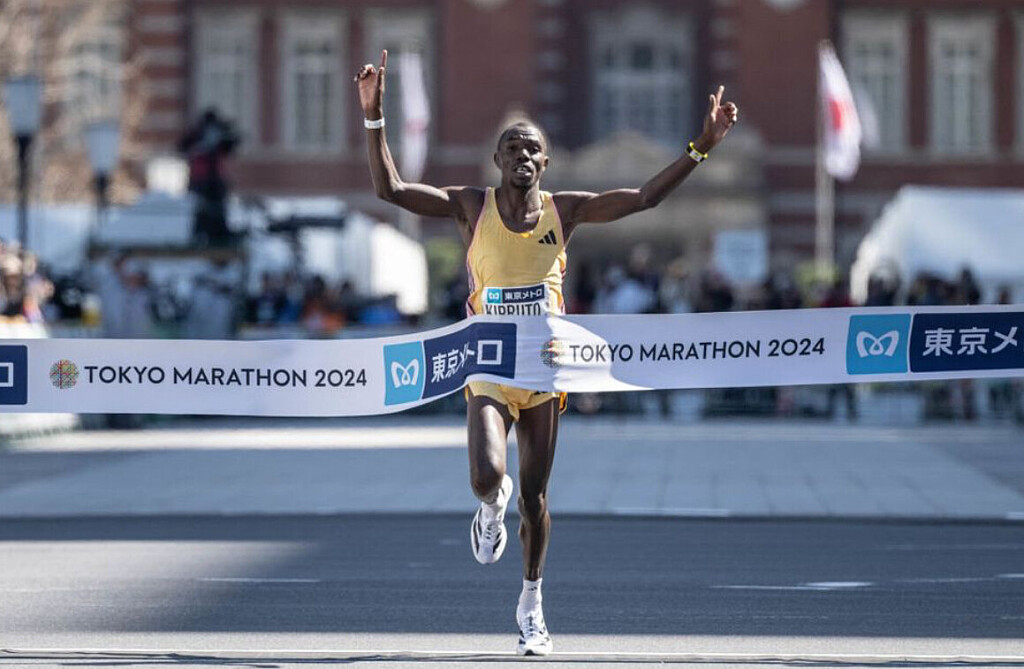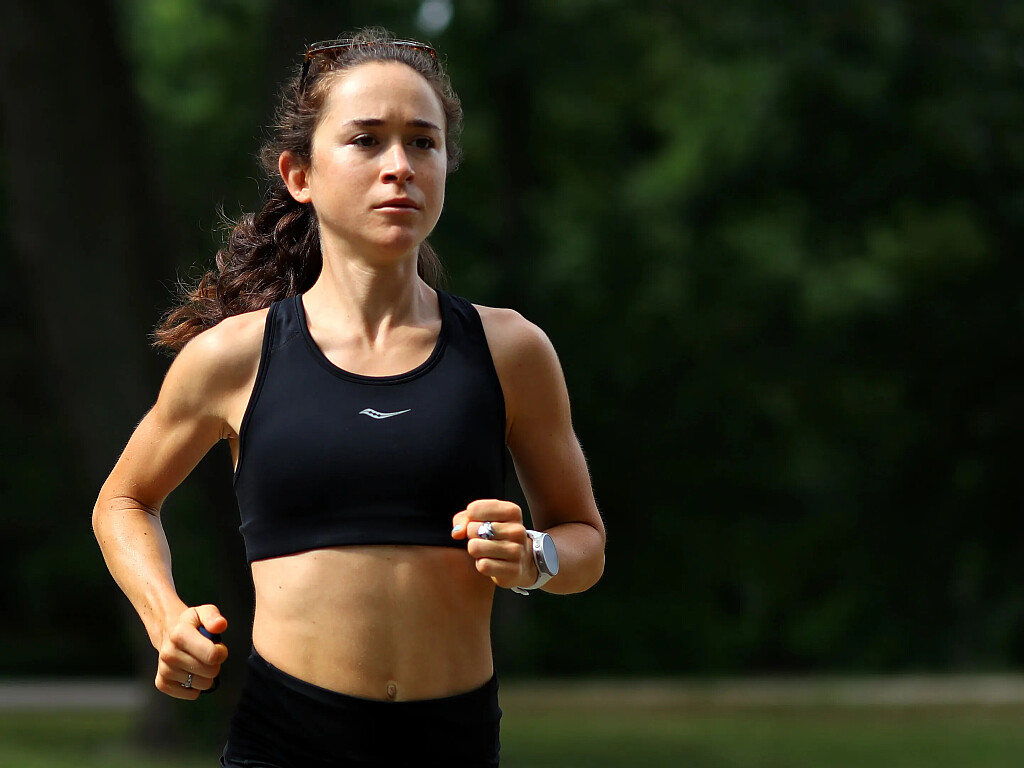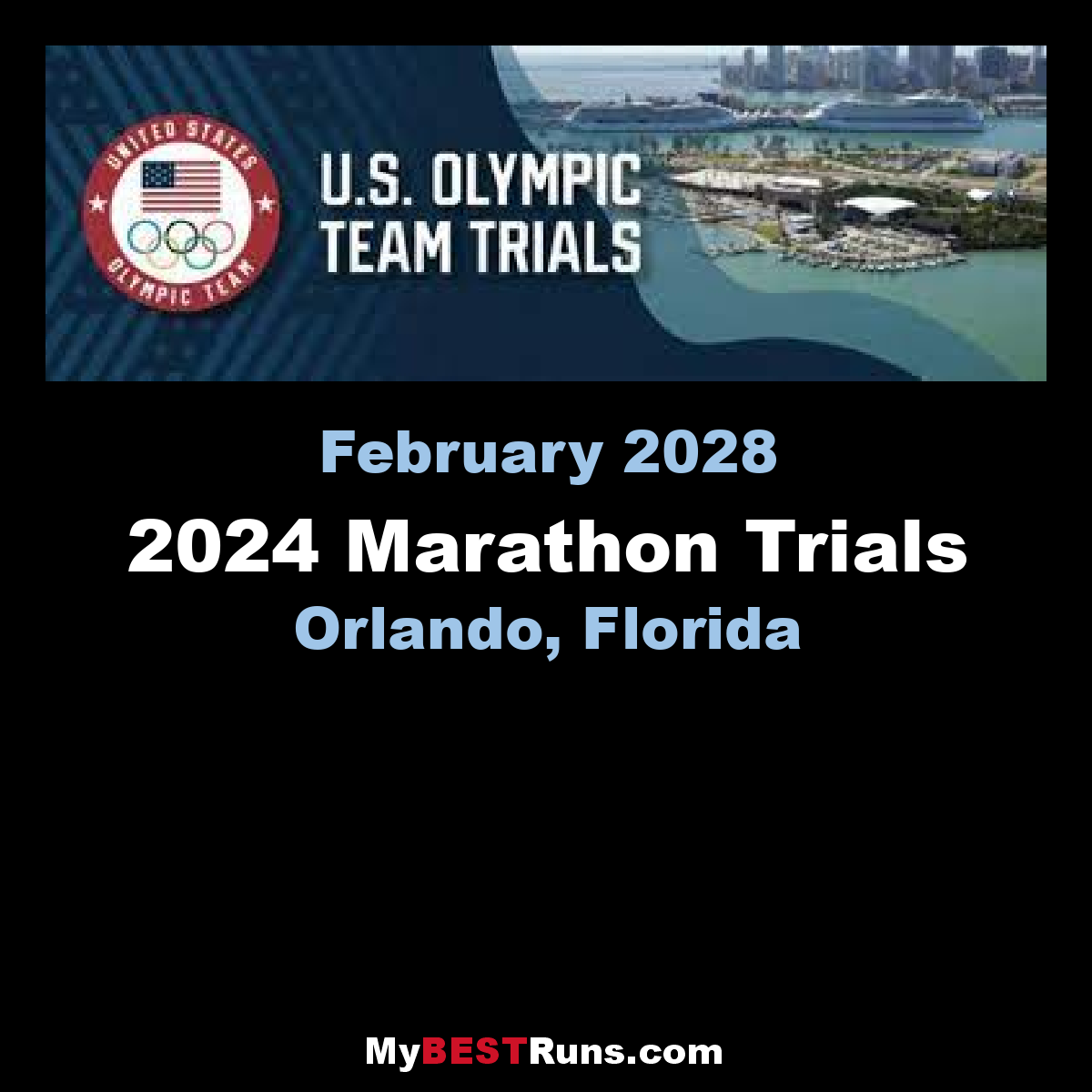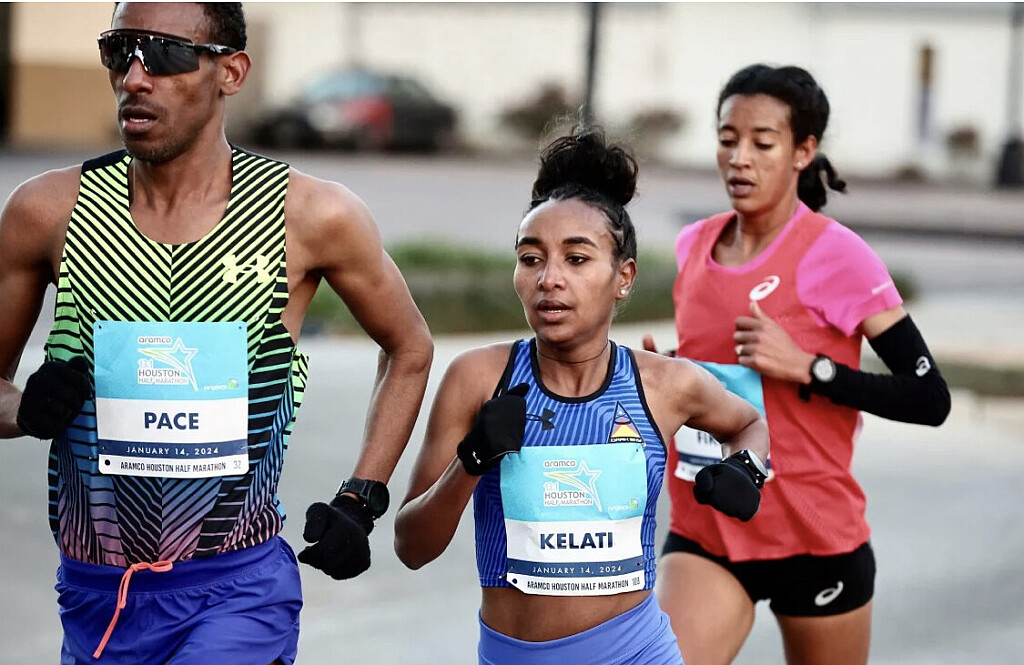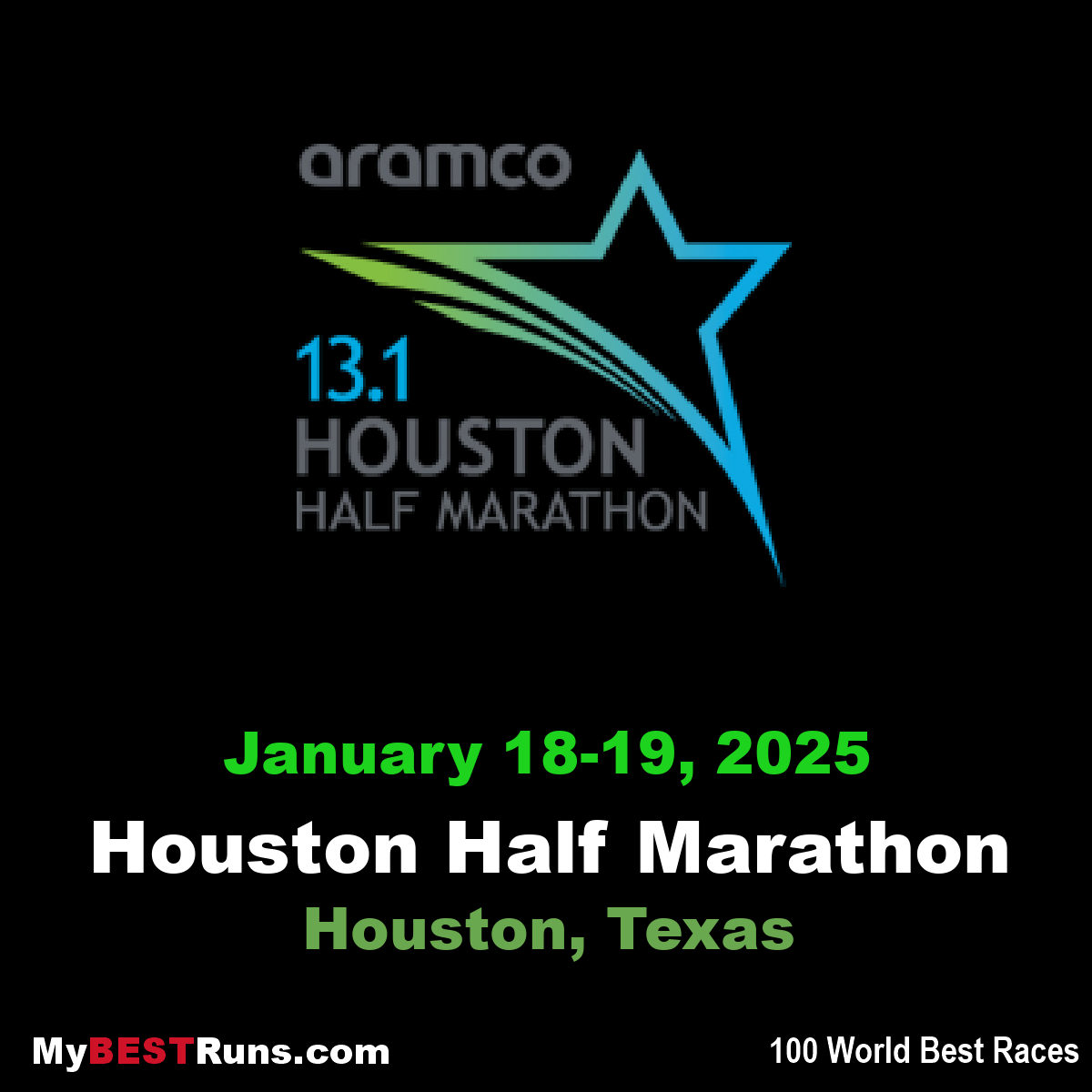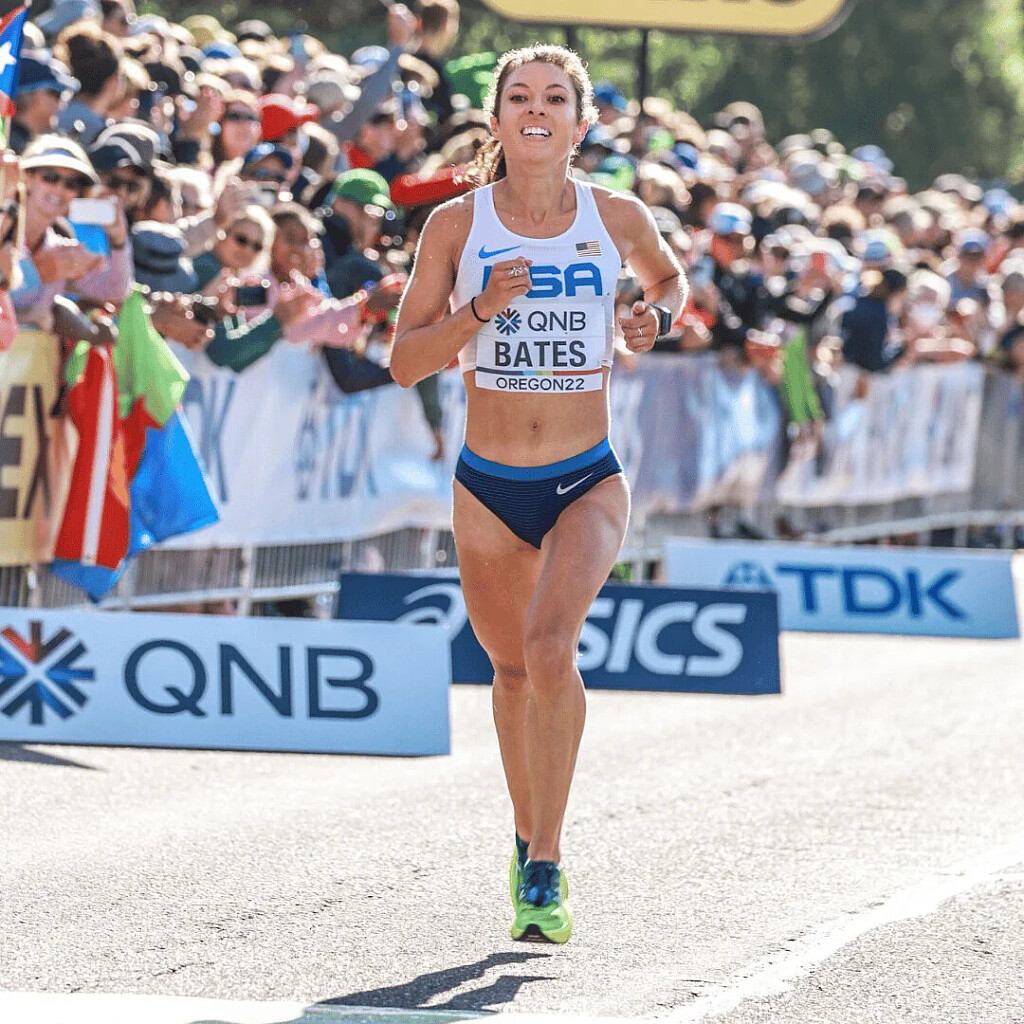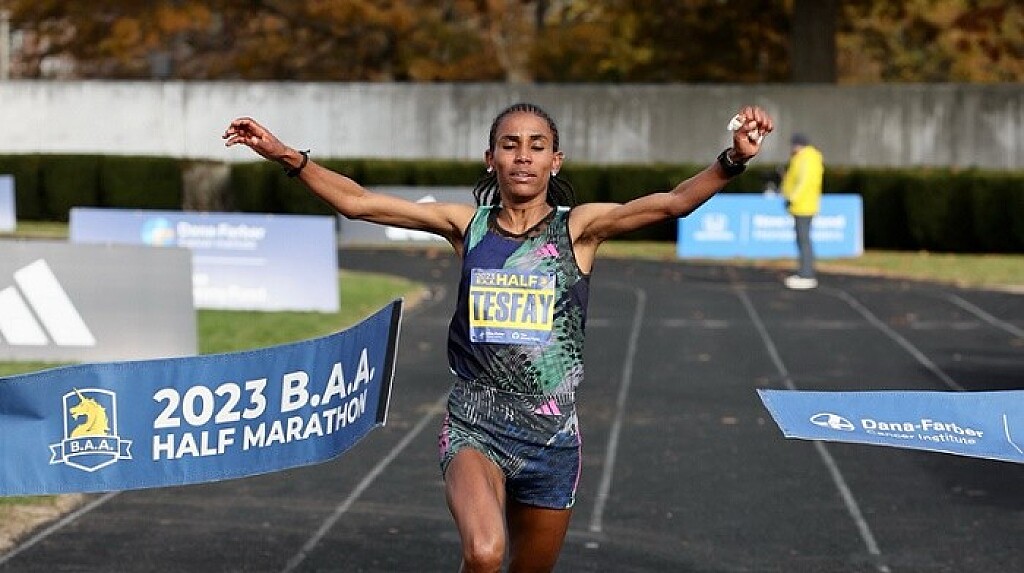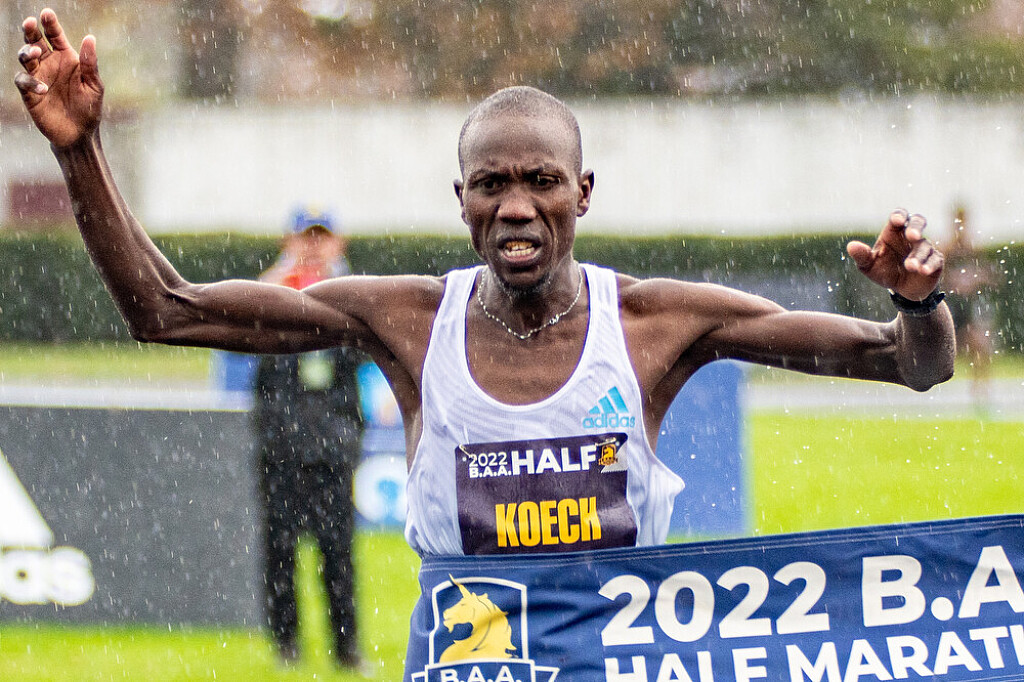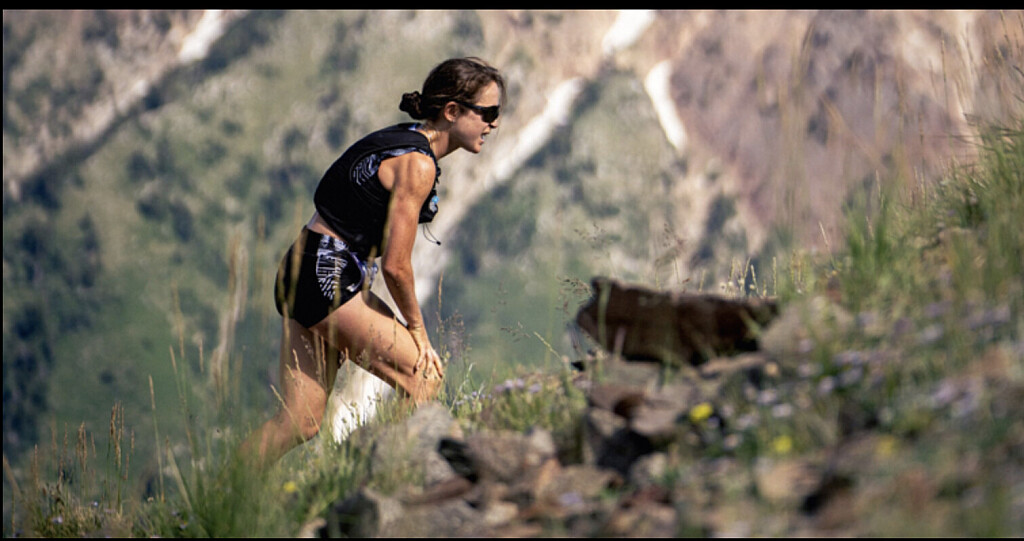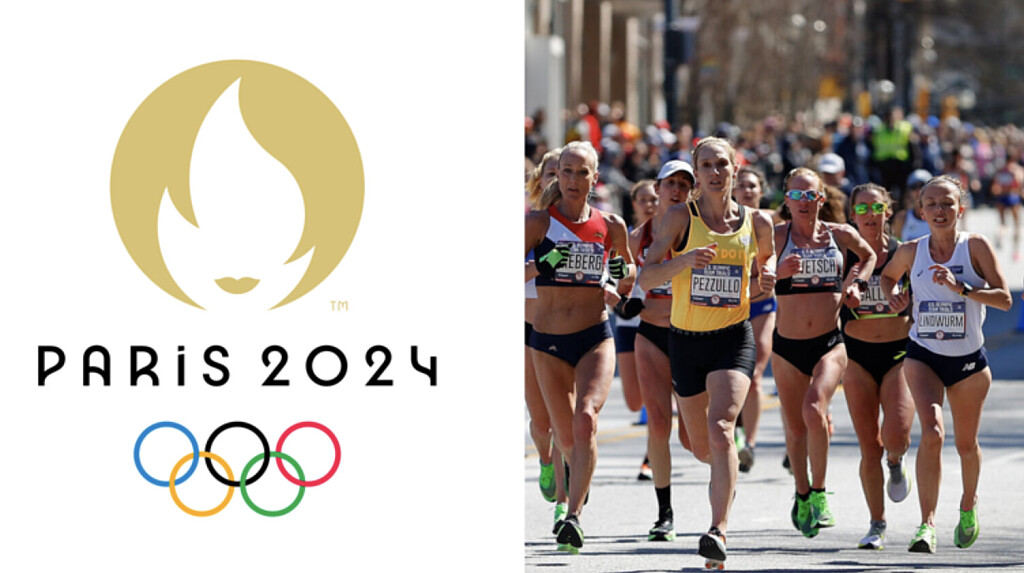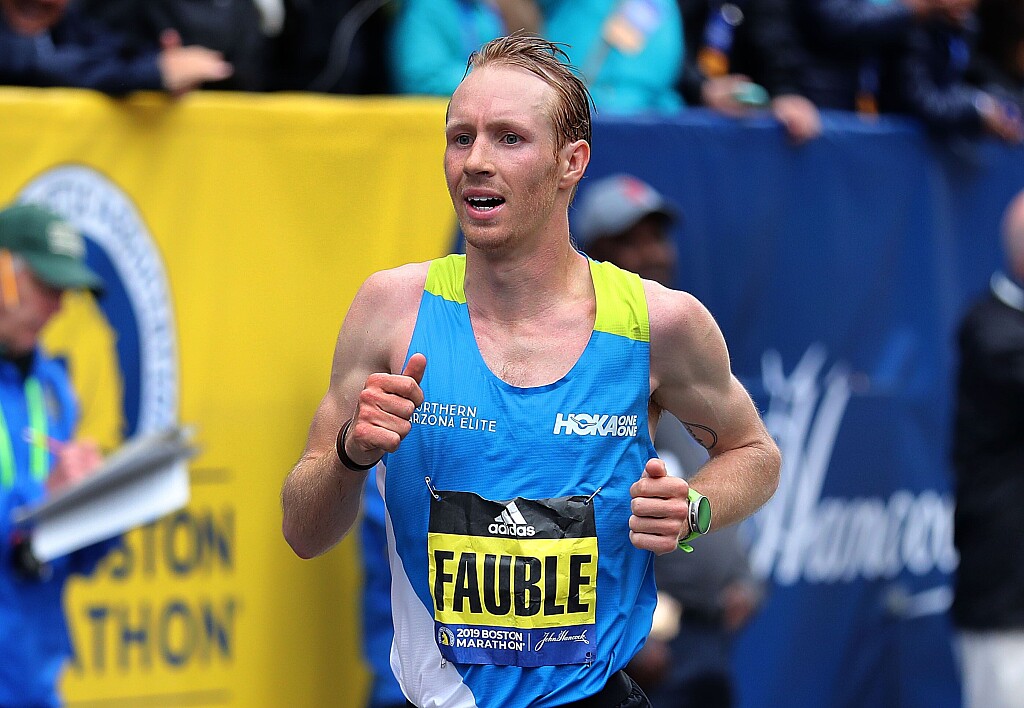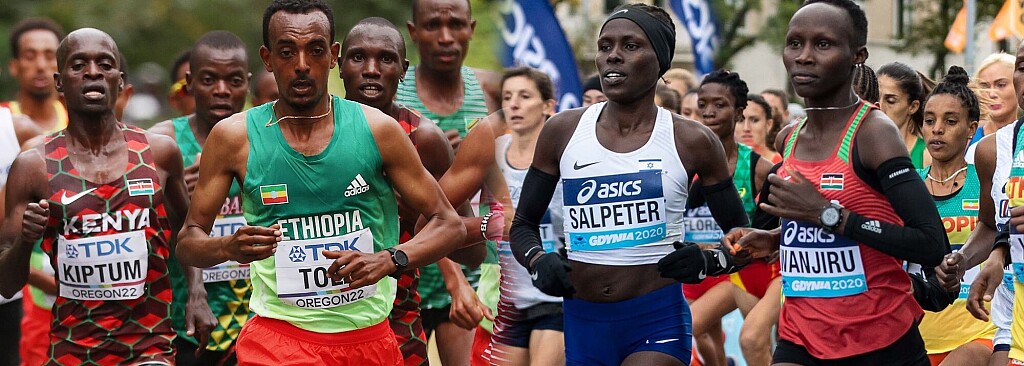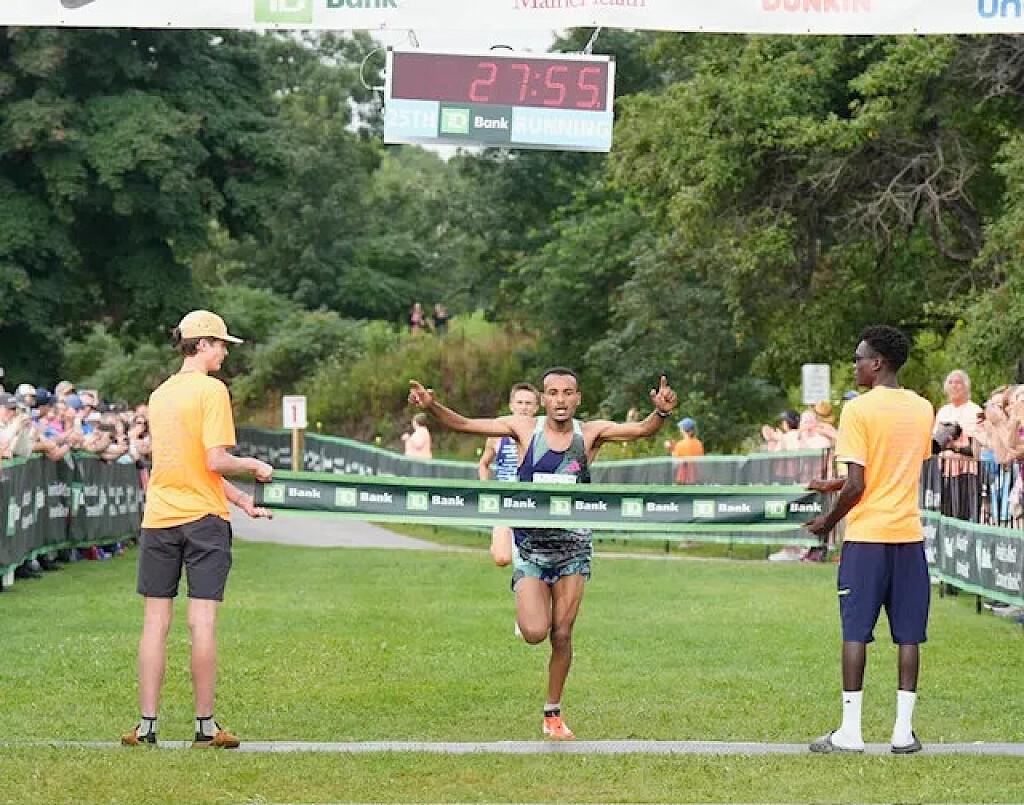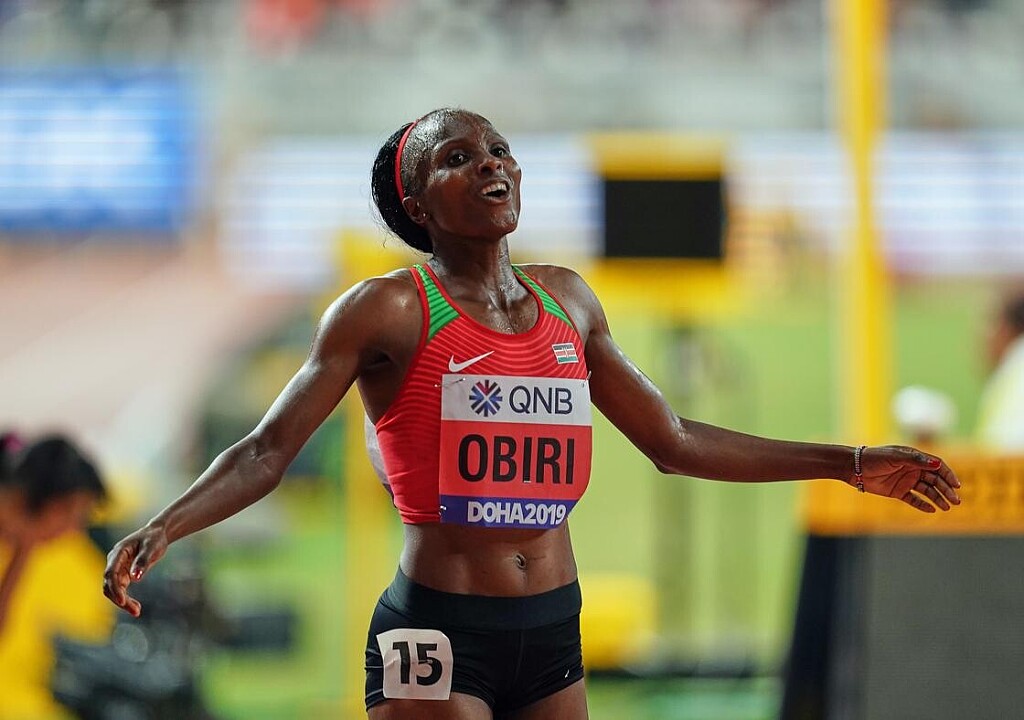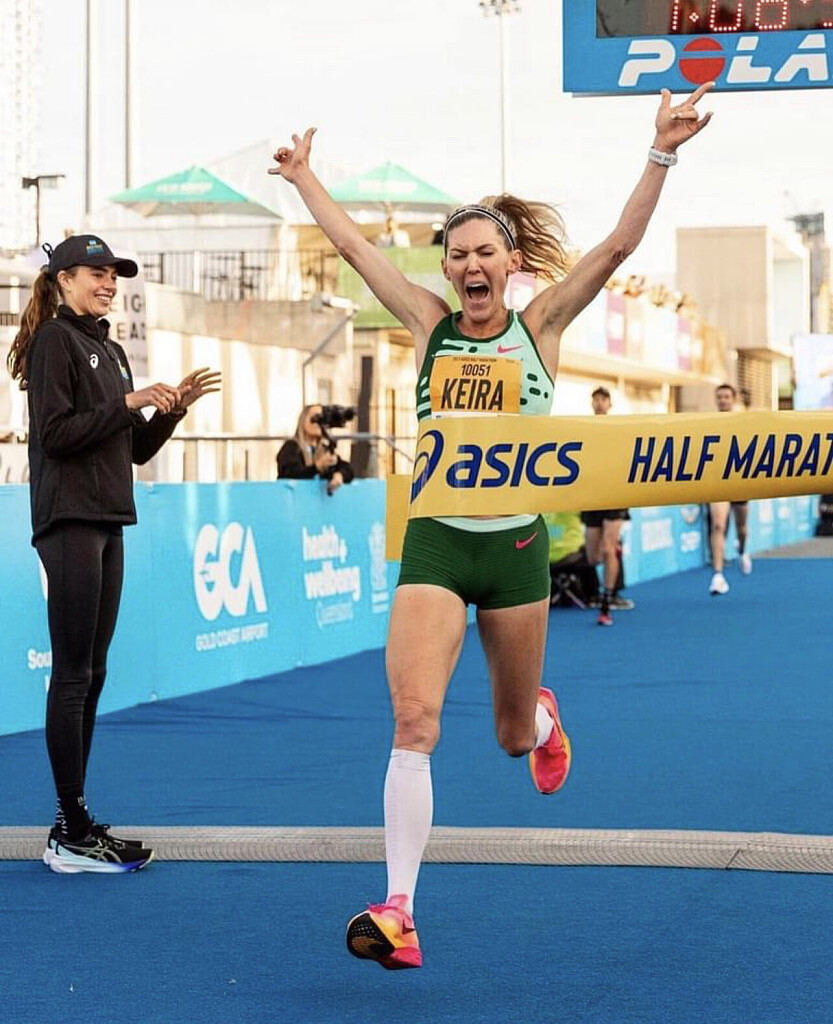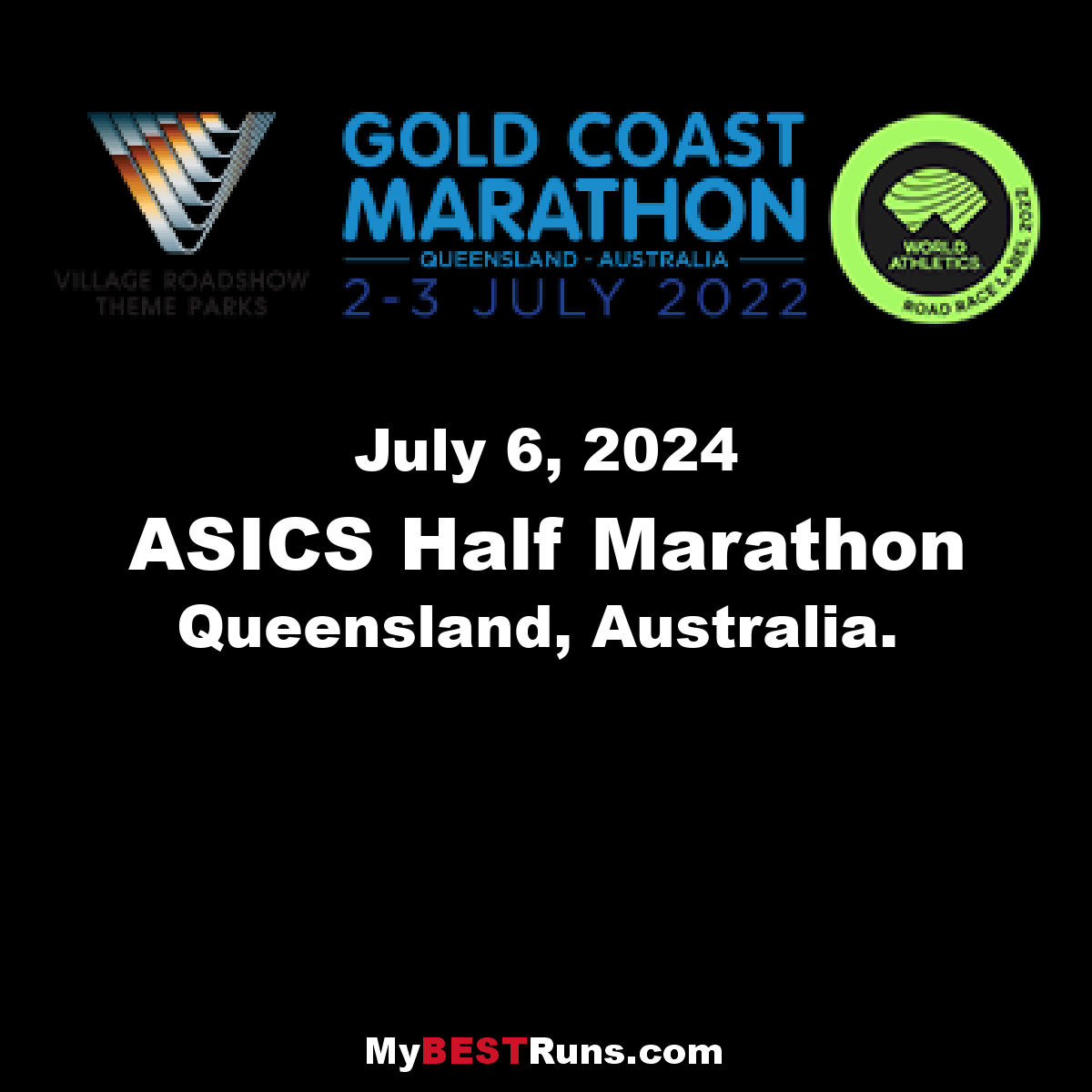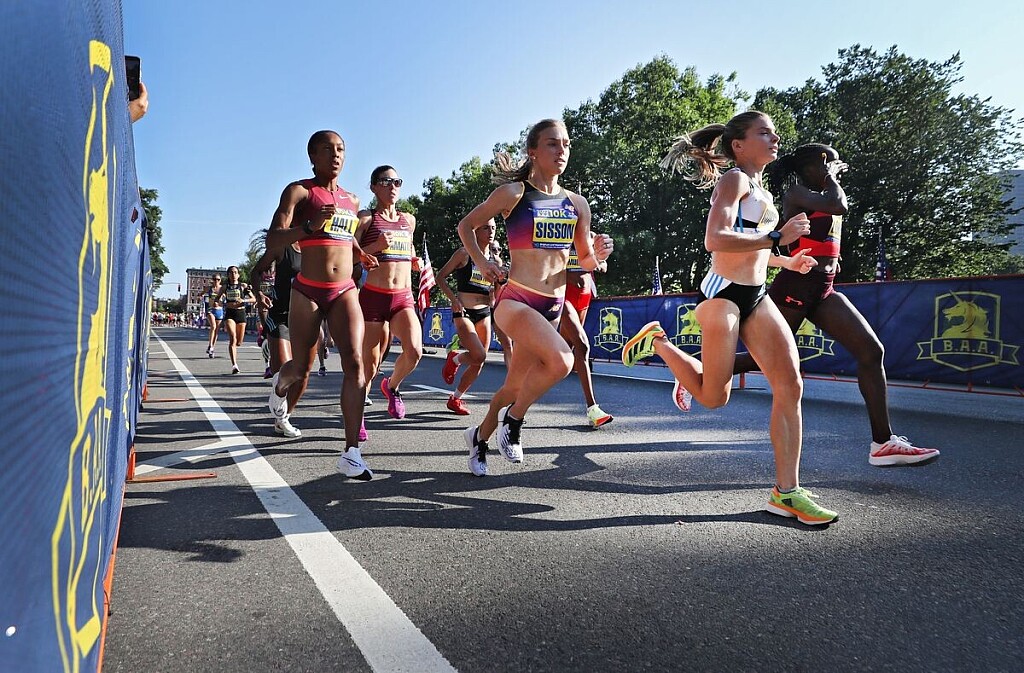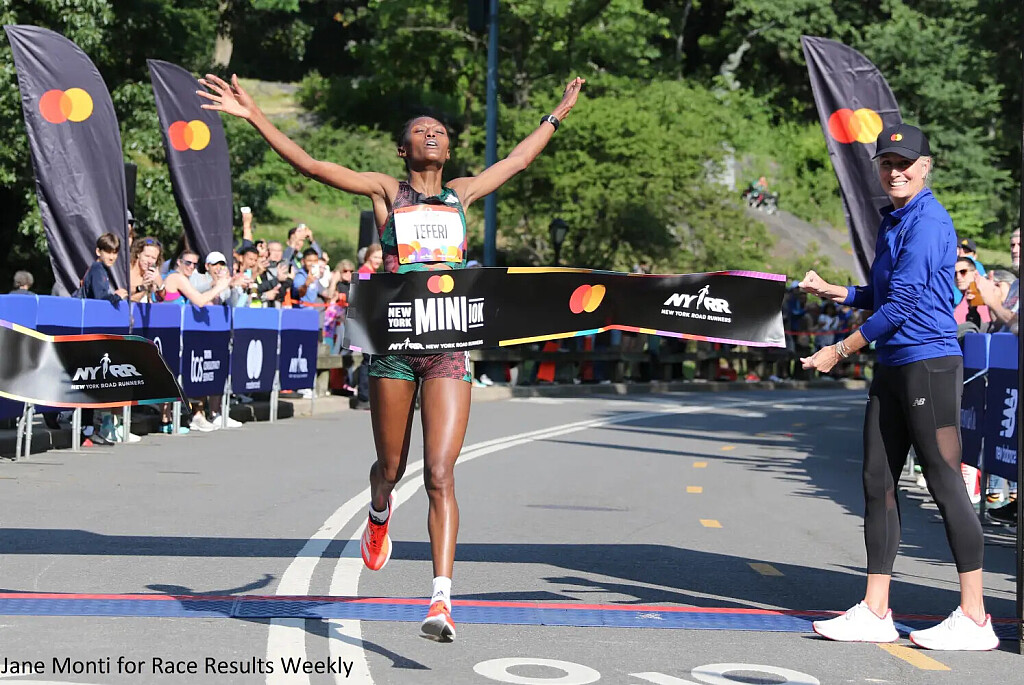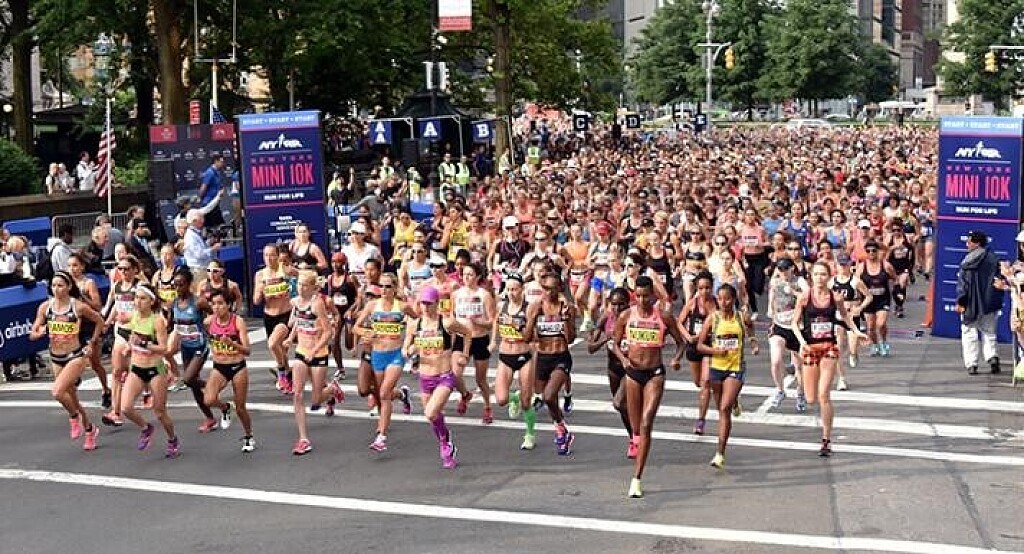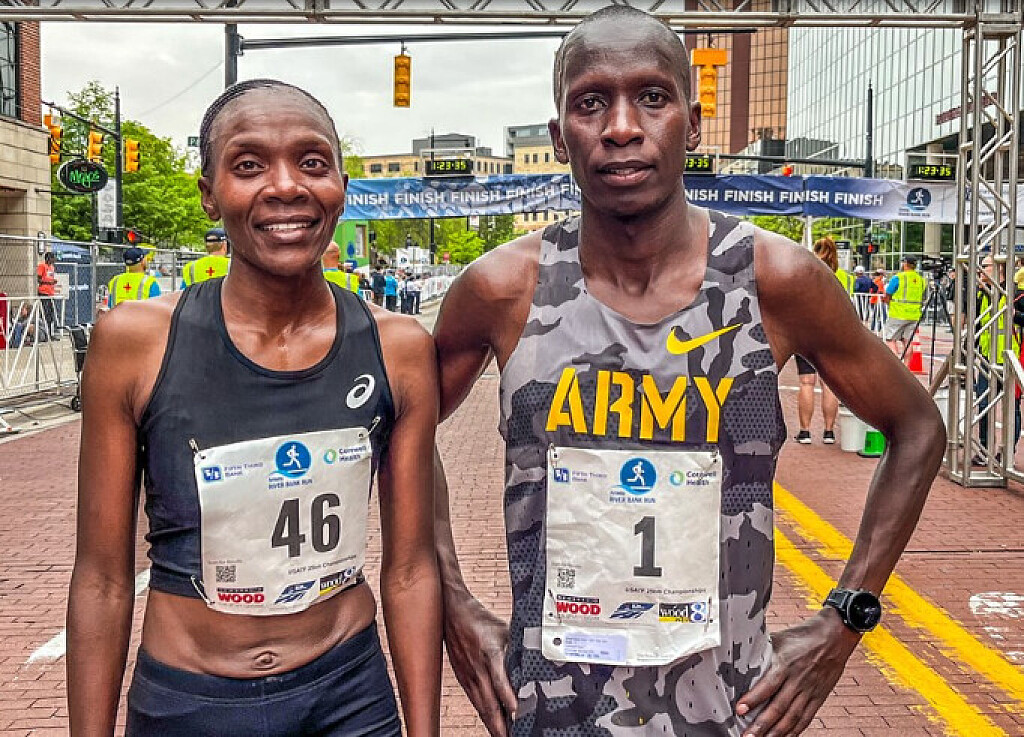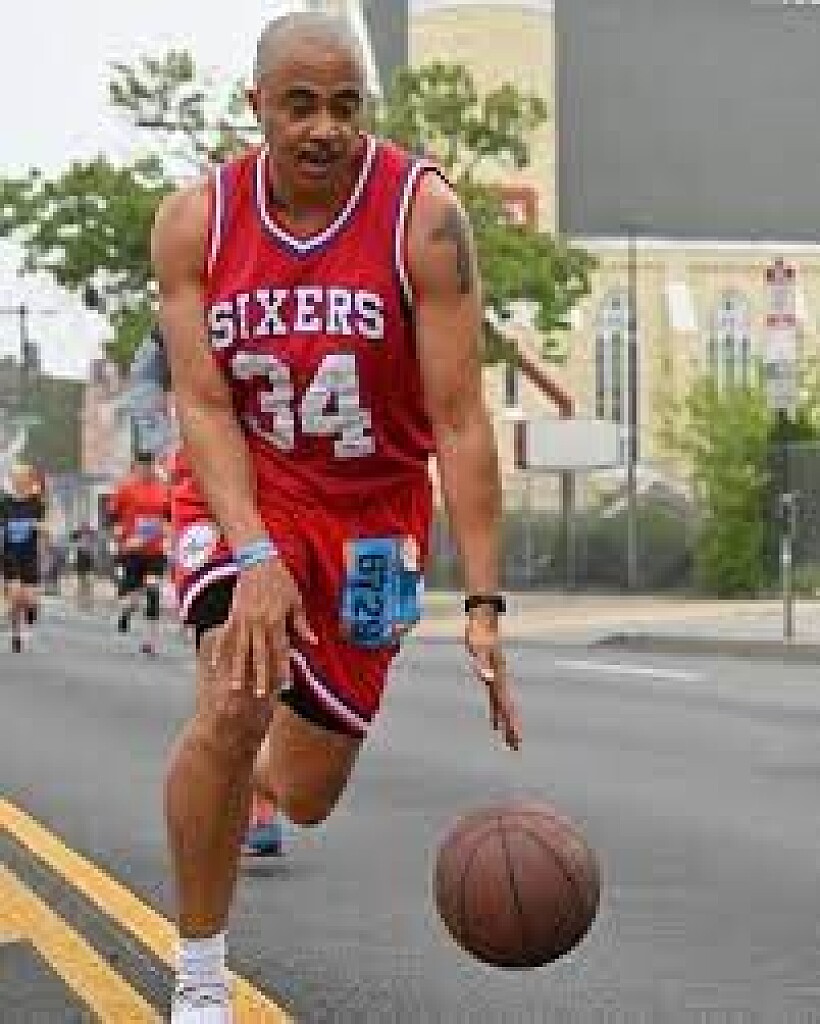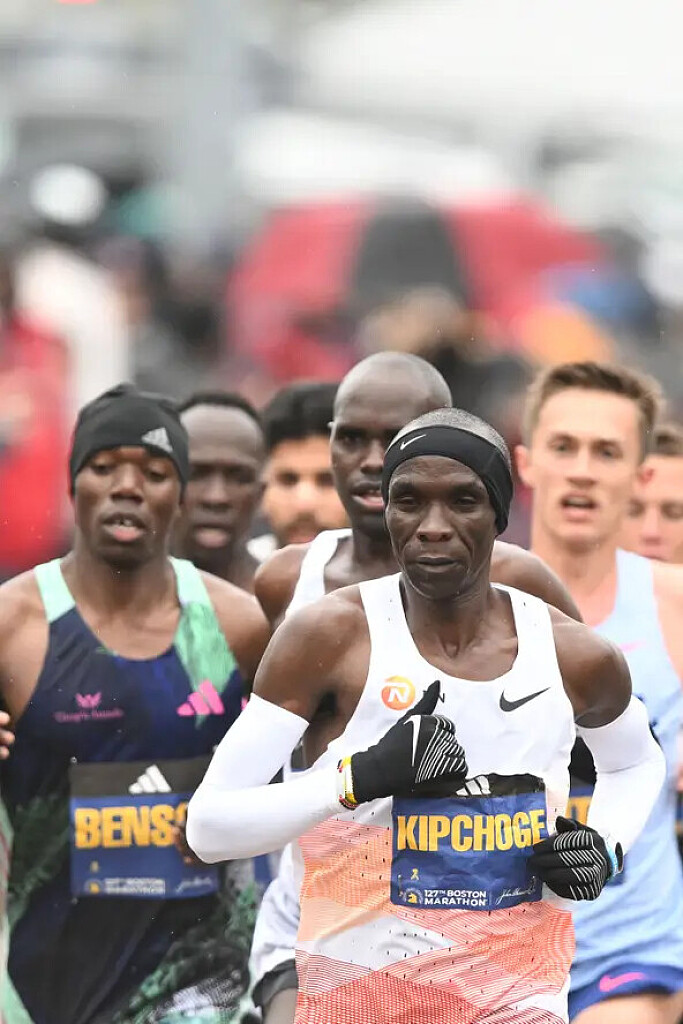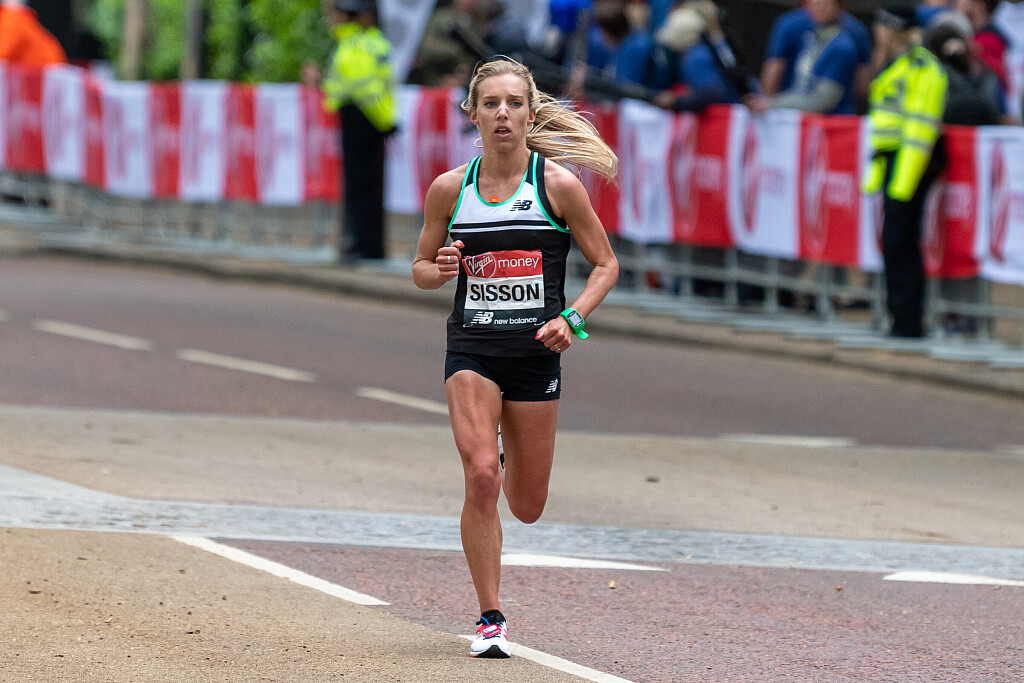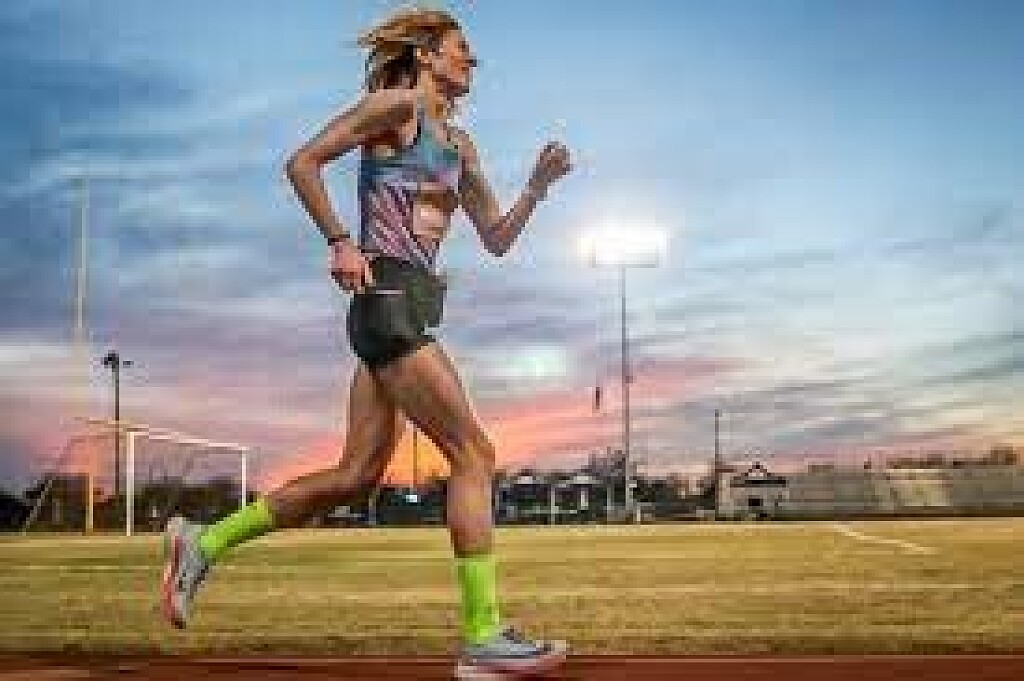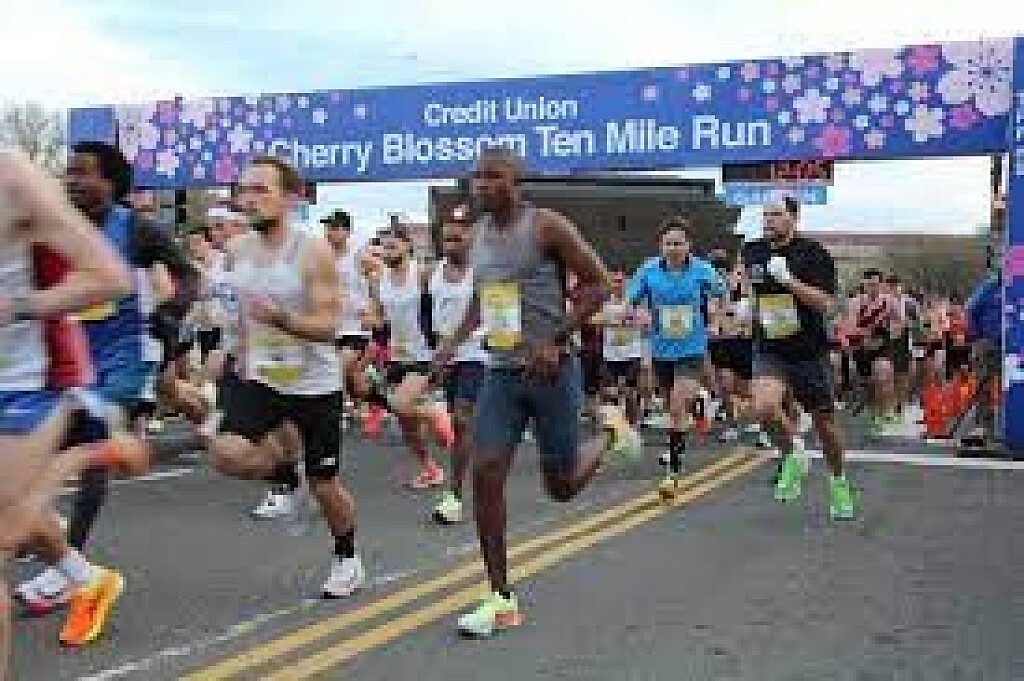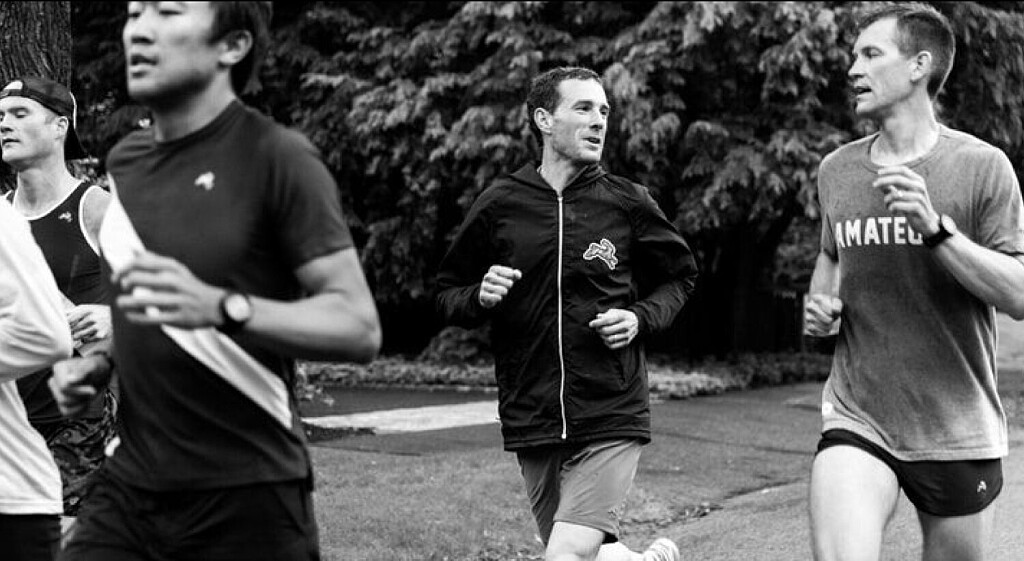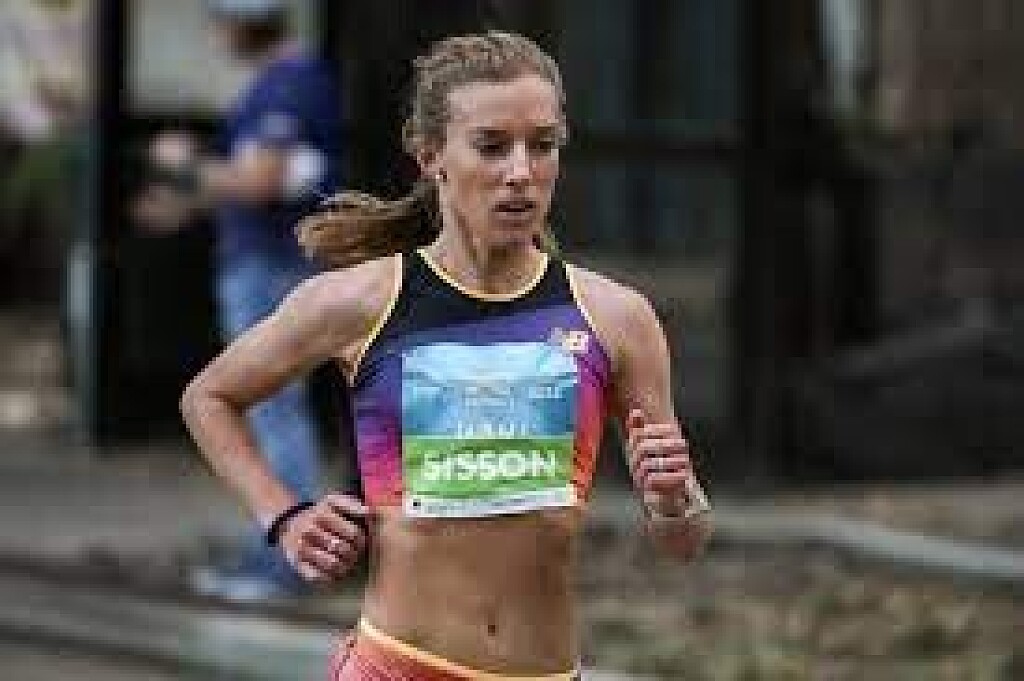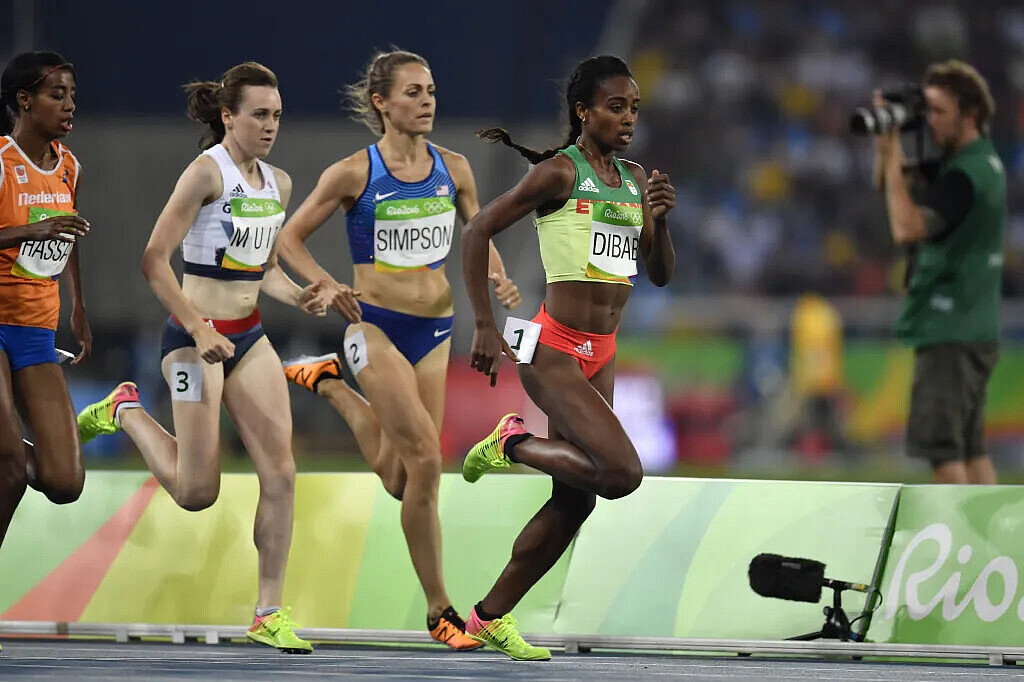Running News Daily
Running News Daily is edited by Bob Anderson. Send your news items to bob@mybestruns.com Advertising opportunities available. Train the Kenyan Way at KATA Kenya and Portugal owned and operated by Bob Anderson. Be sure to catch our movie A Long Run the movie KATA Running Camps and KATA Potato Farms - 31 now open in Kenya! https://kata.ke/
Index to Daily Posts · Sign Up For Updates · Run The World Feed
Articles tagged #Keira
Today's Running News
American Stars Ready to Shine at the 2025 Boston Marathon
The 129th Boston Marathon, set for Monday, April 21, 2025, promises to be a historic showdown between international champions and a formidable field of elite American runners. With defending champions Hellen Obiri and Sisay Lemma returning to defend their titles, the depth of competition will be among the strongest in recent memory.
Elite American Men
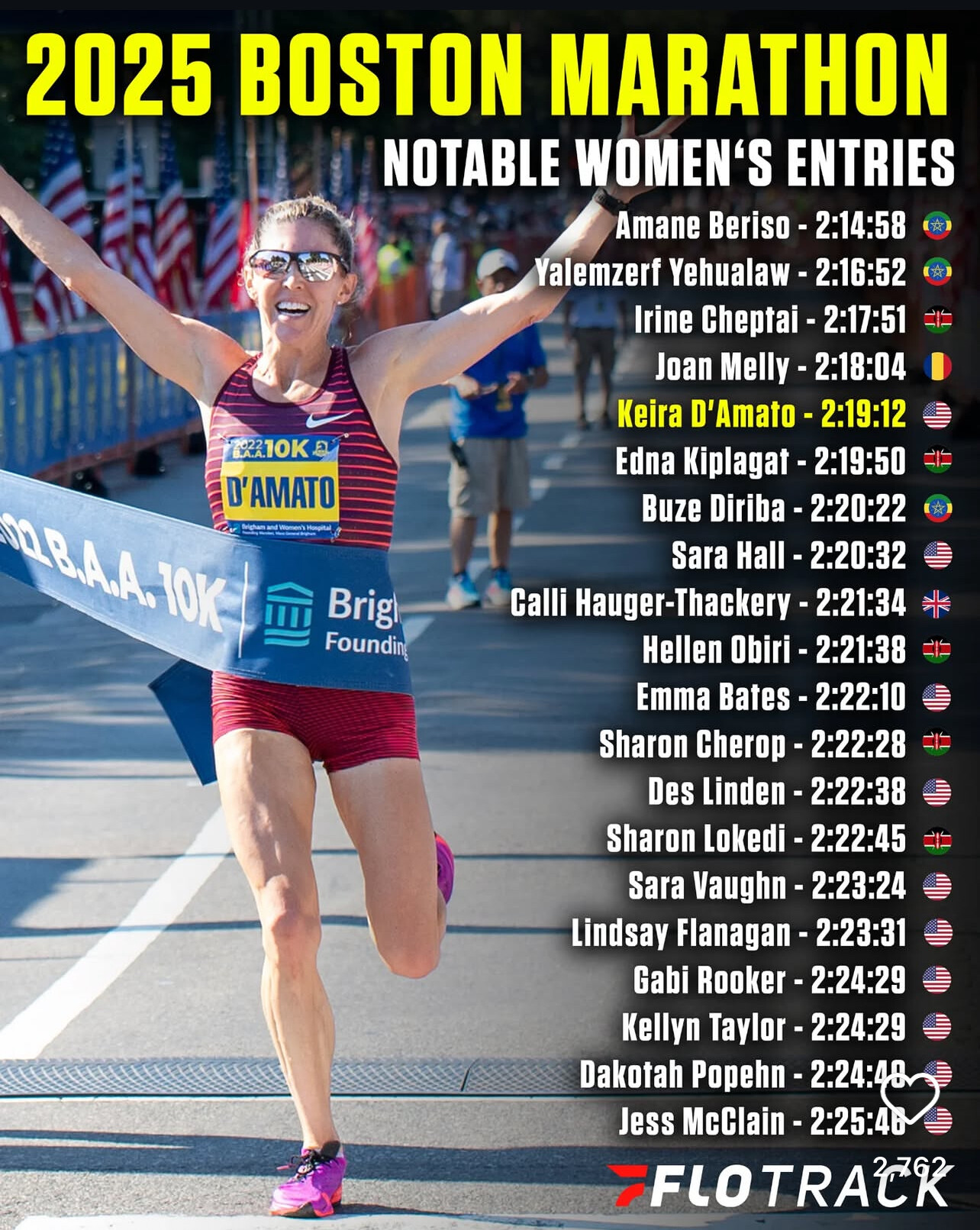
• Conner Mantz – PB: 2:07:47
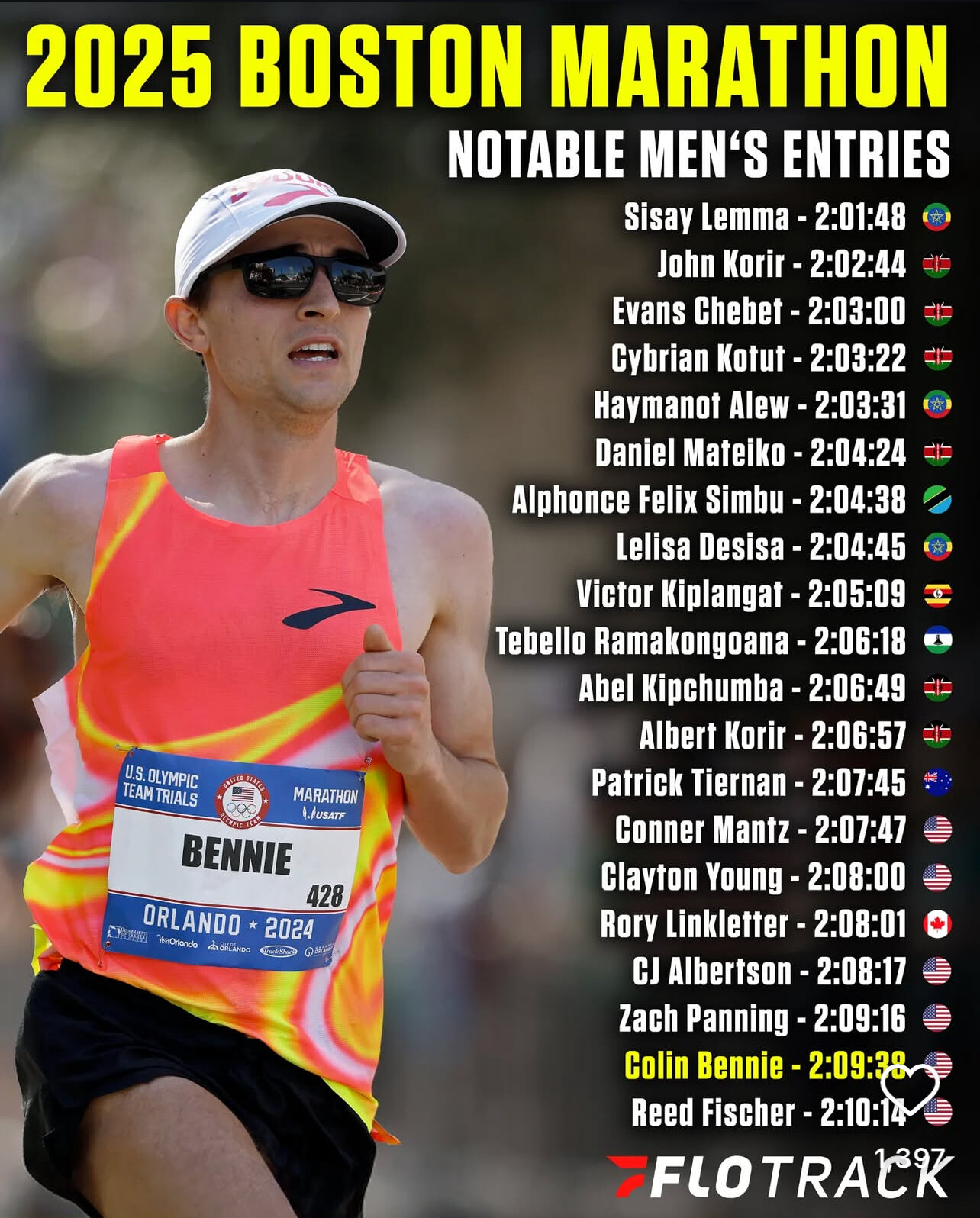
Mantz enters Boston as one of the top American hopes, fresh off an 8th-place finish at the Paris Olympics and 6th in New York City.
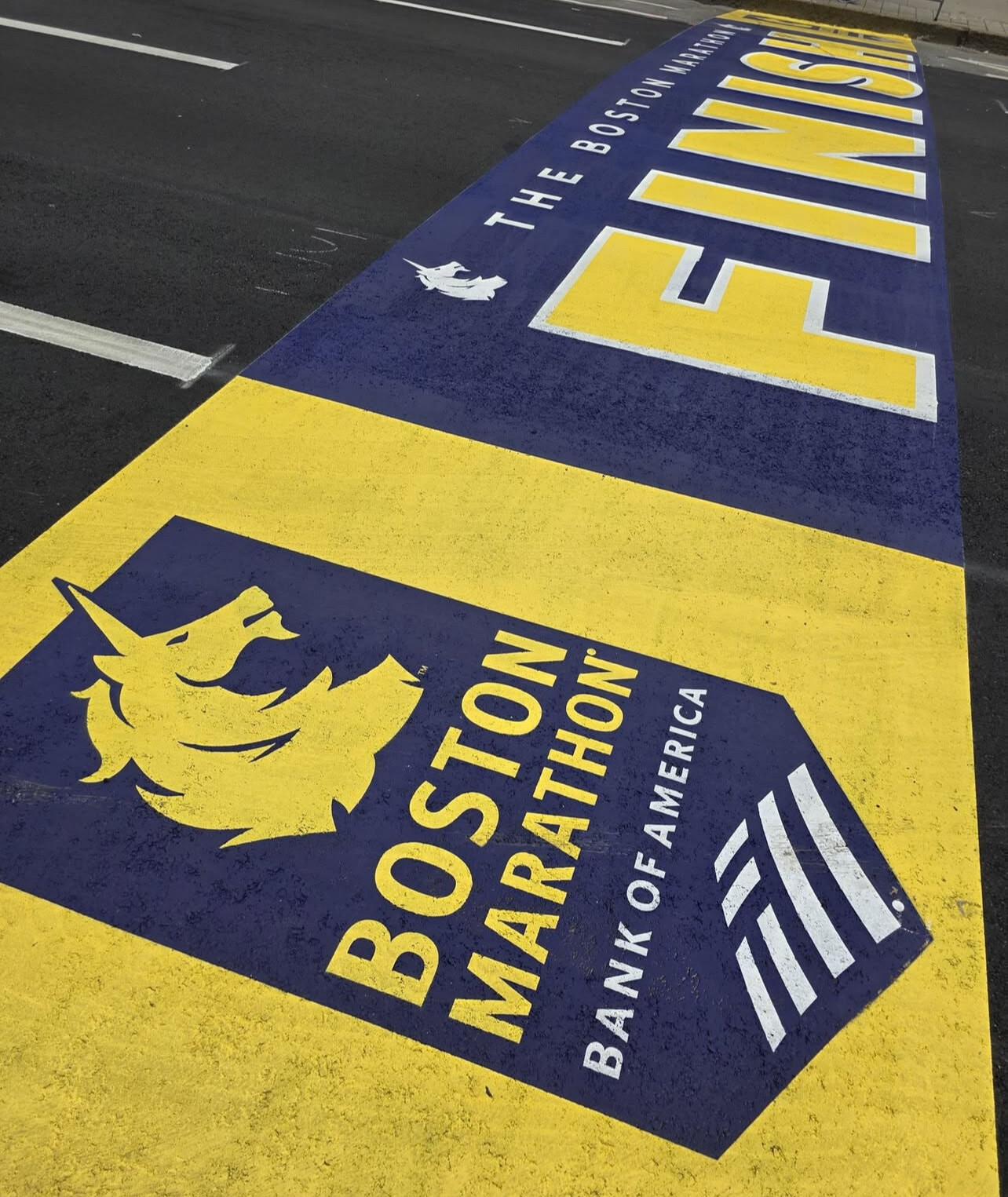
• Clayton Young – PB: 2:08:00
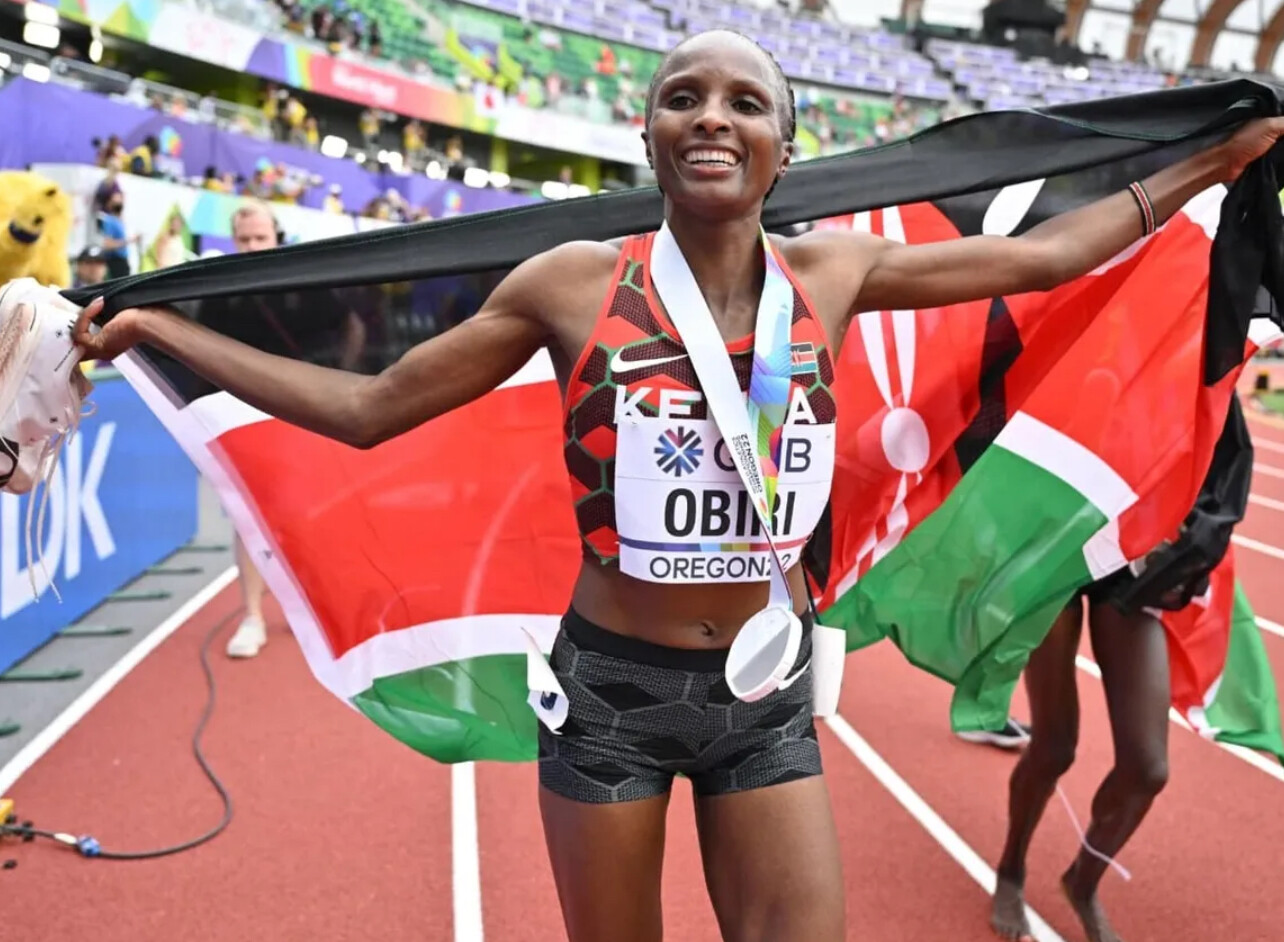
Training alongside Mantz, Young placed 9th in Paris and 7th in NYC, and continues to close the gap with the world’s best.
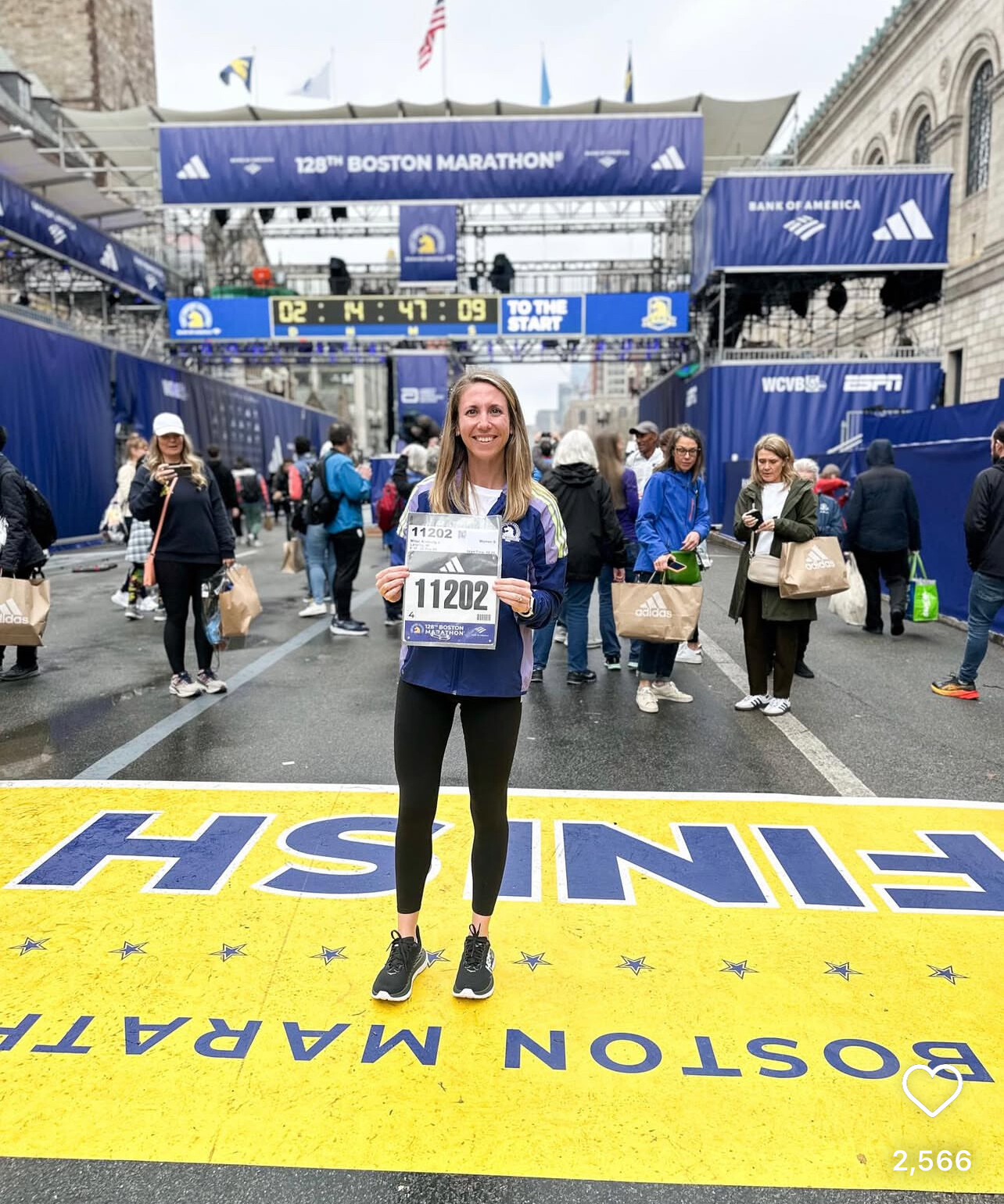
• CJ Albertson – PB: 2:08:17
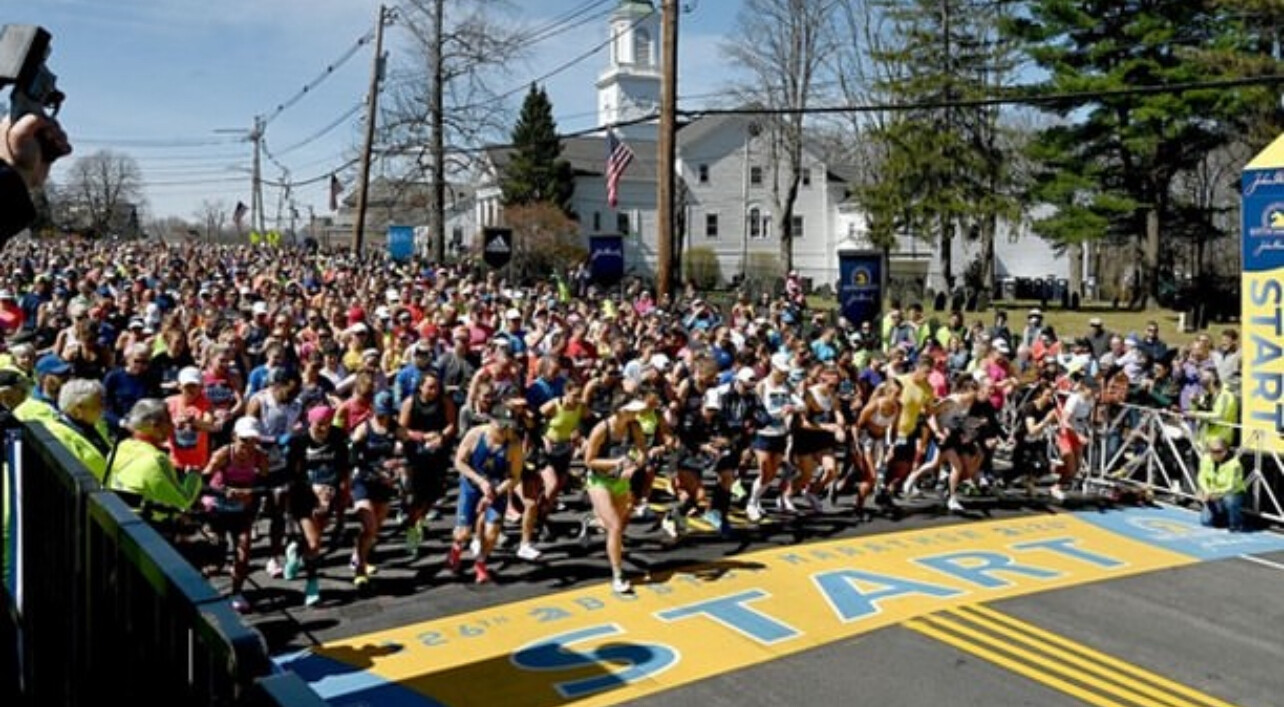
Known for his fearless tactics and high mileage, Albertson ran his personal best at the 2024 Chicago Marathon.
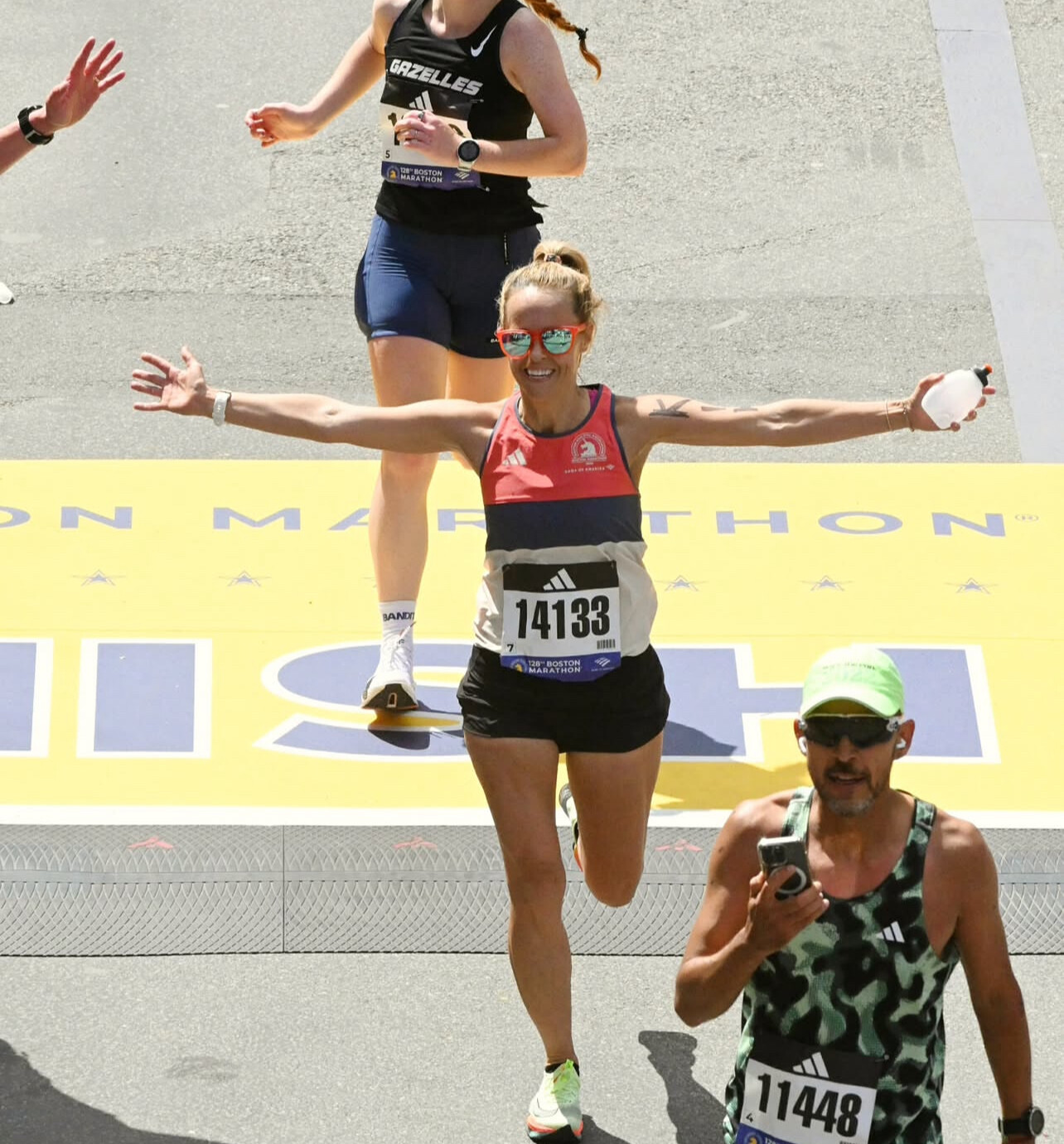
• Zach Panning – PB: 2:09:16
The 5th-place finisher at the U.S. Olympic Trials, Panning brings aggressive racing and consistent progress to Boston.
• Colin Bennie – PB: 2:09:38
The Massachusetts native and 2021 top American finisher returns with home course advantage and renewed focus.
Elite American Women
• Keira D’Amato – PB: 2:19:12
The former American record holder returns from injury with momentum and the experience to contend.
• Emma Bates – PB: 2:22:10
Bates was the top American at the 2024 Boston Marathon and continues to improve with every outing.
• Sara Hall – PB: 2:20:32
One of the most experienced American marathoners, Hall posted a 2:23:45 in Berlin last fall.
• Desiree Linden – PB: 2:22:38
The 2018 Boston champion returns for her 12th Boston start, a fan favorite with unmatched experience.
• Dakotah Popehn – PB: 2:24:40
Popehn was the top American finisher at the Paris Olympics and brings strong international credentials.
• Jess McClain – PB: 2:25:46
McClain placed fourth at the U.S. Trials and will be making her Boston debut as a rising star.
International Elite Field
Men’s Division:
• Sisay Lemma (ETH) – PB: 2:01:48
The defending champion and one of the fastest marathoners in history, Lemma seeks to repeat in Boston.
• John Korir (KEN) – PB: 2:02:44
The 2024 Chicago Marathon champion is a serious threat in any race he enters.
• Evans Chebet (KEN) – PB: 2:03:00
Boston champion in 2022 and 2023, Chebet looks to reclaim his title and join the three-time winners’ club.
Women’s Division:
• Amane Beriso (ETH) – PB: 2:14:58
The fifth-fastest woman in history is making her Boston debut.
• Yalemzerf Yehualaw (ETH) – PB: 2:16:52
Still just 25, Yehualaw adds tremendous firepower to the field.
• Hellen Obiri (KEN) – PB: 2:21:38
The two-time defending champion is chasing history with a potential third straight victory on Boylston Street.
Race Day Details
• Date: Monday, April 21, 2025
• Start Times:
• Wheelchair Division – 9:02 AM
• Handcycle & Duo Participants – 9:05 AM
• Elite Women – 9:32 AM
• Elite Men & Wave 1 – 10:00 AM
• Wave 2 – 10:25 AM
• Wave 3 – 10:50 AM
• Wave 4 – 11:15 AM
• Tracking & Coverage: Available through the B.A.A. Racing App with live updates, leaderboards, and interactive course maps.
“I’ve run over a thousand races in my life, and nothing compares to Boston,” says My Best Runs editor Bob Anderson. “When I ran 3:32:17 here at age 65, I felt like a rock star the entire way. The crowd was unbelievable—cheering, encouraging, lifting every runner forward. Boston isn’t just about the elites—it’s about the thousands of others out there chasing their dreams on the same course.”
With a deep American field and some of the fastest runners on the planet, the 2025 Boston Marathon is shaping up to be one of the most competitive in history. Whether it’s a breakout run or a hard-fought defense, fans can expect something unforgettable from this year’s race.
by Boris Baron
Login to leave a comment
Boston Marathon
Among the nation’s oldest athletic clubs, the B.A.A. was established in 1887, and, in 1896, more than half of the U.S. Olympic Team at the first modern games was composed of B.A.A. club members. The Olympic Games provided the inspiration for the first Boston Marathon, which culminated the B.A.A. Games on April 19, 1897. John J. McDermott emerged from a...
more...Boston Marathon 2025 Race Preview and Predictions - Can one of the Americans pull off an upset?
The 129th Boston Marathon is set for Monday, April 21, 2025 in just over a month, once again taking place on Patriots’ Day in Massachusetts. This year’s edition marks the first under the sponsorship of Bank of America, signaling a new chapter for the world’s oldest annual marathon. With an elite field packed with world-class runners and unpredictable spring weather, the race promises another thrilling showdown from Hopkinton to Boston.
Race Details & Course Overview
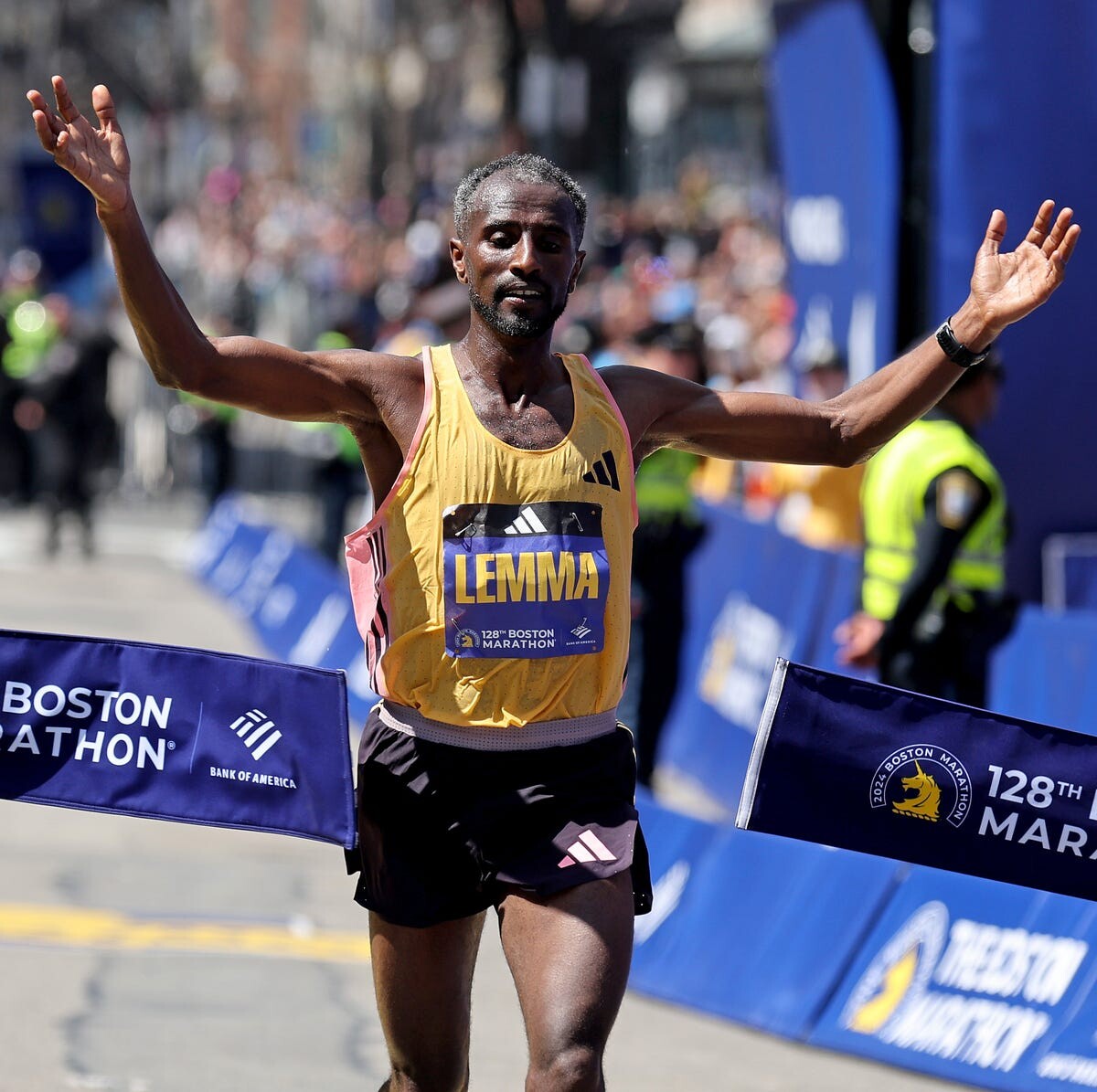
The Boston Marathon’s iconic point-to-point course spans 26.2 miles, starting in Hopkinton and ending on Boylston Street in Boston’s Copley Square. Runners will navigate rolling hills, including the challenging Newton Hills and the infamous Heartbreak Hill at mile 21. The course favors experienced runners who can manage both the early downhill sections and the later climbs.
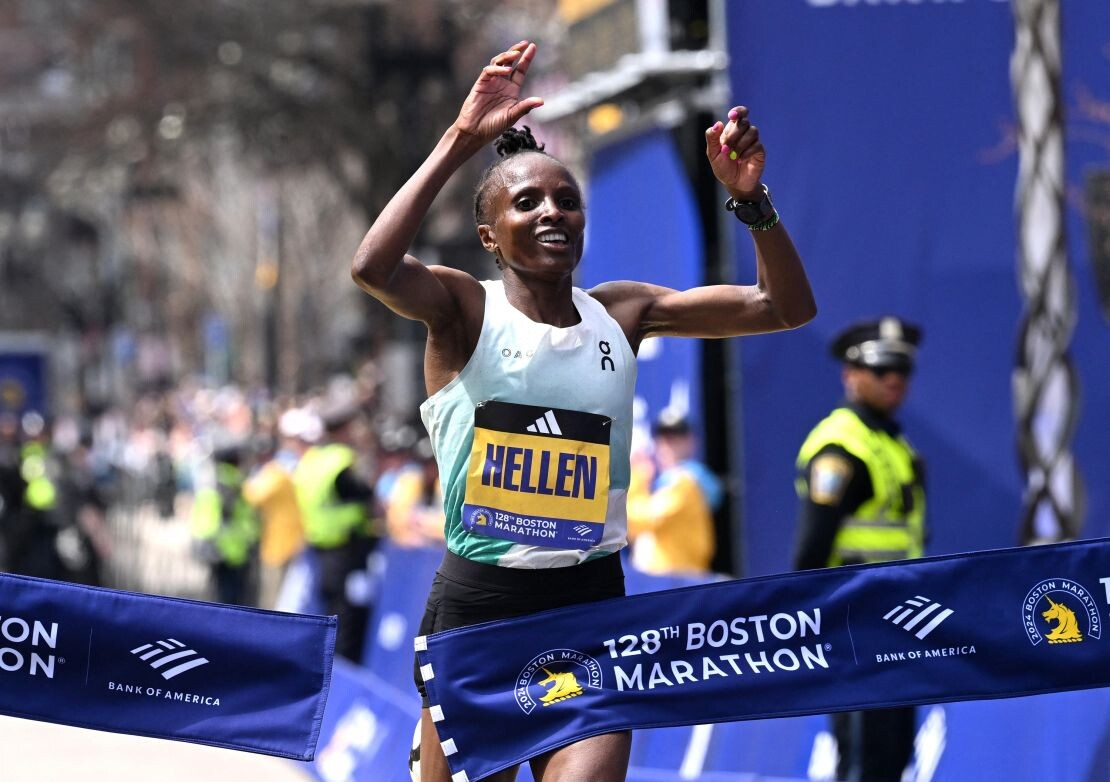
Weather will be a key factor, as New England’s spring climate is unpredictable. Ideal conditions for runners would be cool temperatures around 45–50°F with overcast skies and a tailwind, but past races have seen everything from heatwaves to freezing rain. Early forecasts suggest favorable conditions, but as always, runners must be prepared for anything.
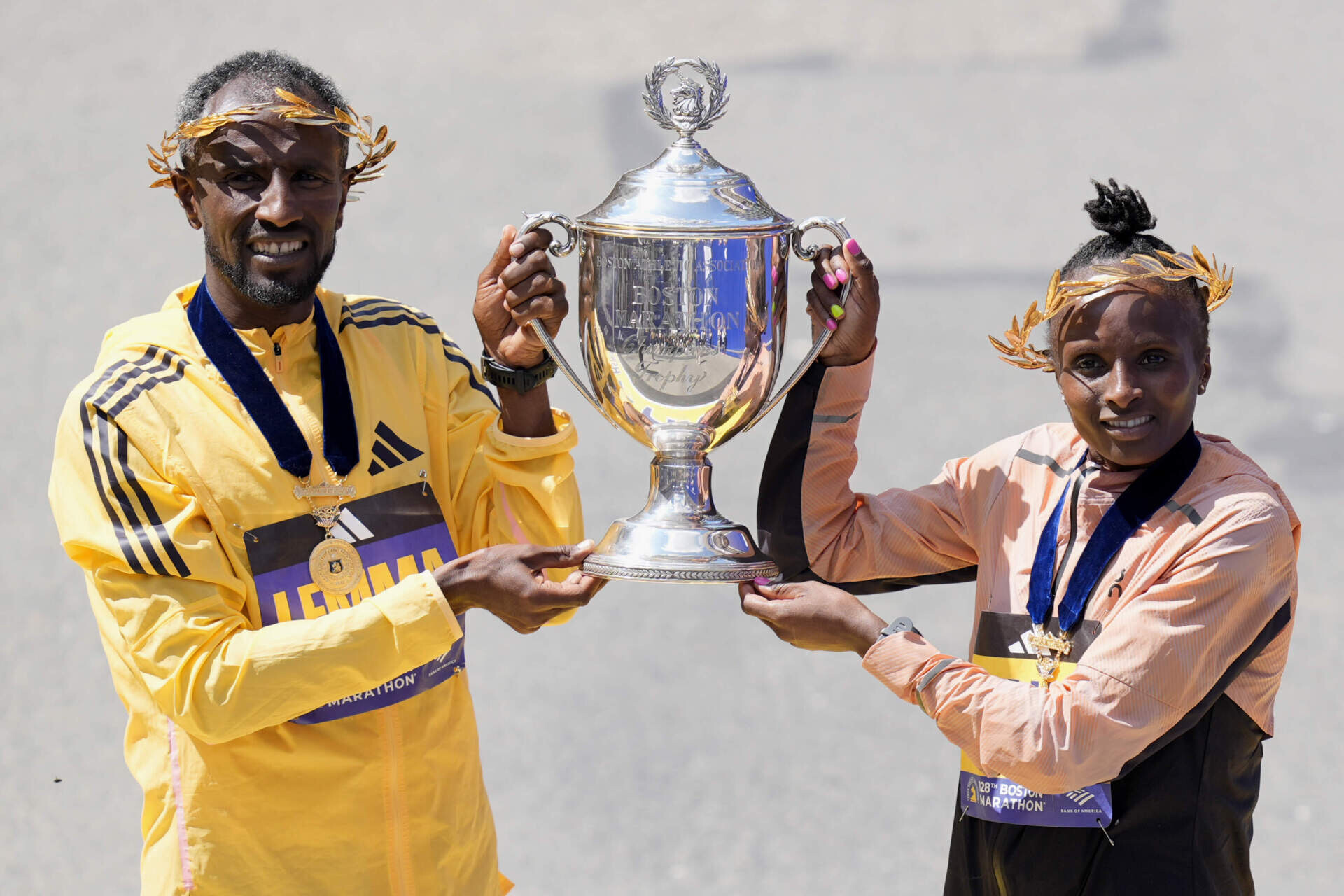
Men’s Elite Field
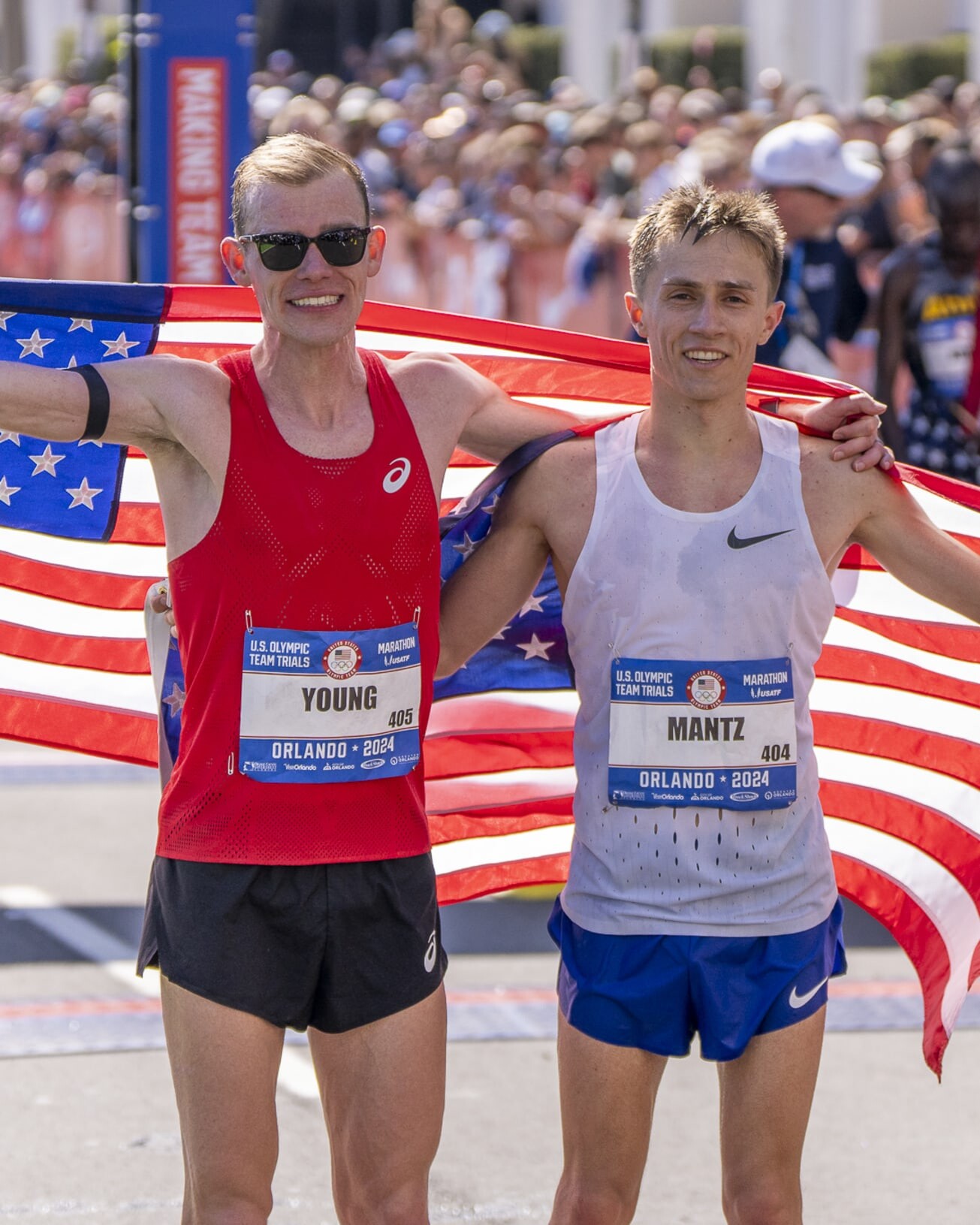
The men’s race features defending champion Sisay Lemma, who is aiming to retain his title after a dominant performance last year. Evans Chebet, the 2022 and 2023 champion, returns hungry to reclaim the crown. John Korir, fresh off a victory at the Chicago Marathon, brings world-class speed that could shake up the competition.
A strong American contingent is headlined by Conner Mantz and Clayton Young, both of whom finished in the top ten at the Olympic marathon. Mantz, in particular, has shown outstanding form, recently breaking the American half marathon record. CJ Albertson, a familiar name in Boston for his bold racing tactics, will also be in the mix, potentially pushing the early pace.
The race is expected to be tactical, with the Newton Hills playing a decisive role. If the pack remains tight through Heartbreak Hill, it could come down to a late-race battle along Boylston Street.
Women’s Elite Field
Hellen Obiri returns seeking a historic third consecutive Boston Marathon title, a feat not accomplished in over two decades. Known for her lethal finishing speed, Obiri has mastered the Boston course and will be the woman to beat.
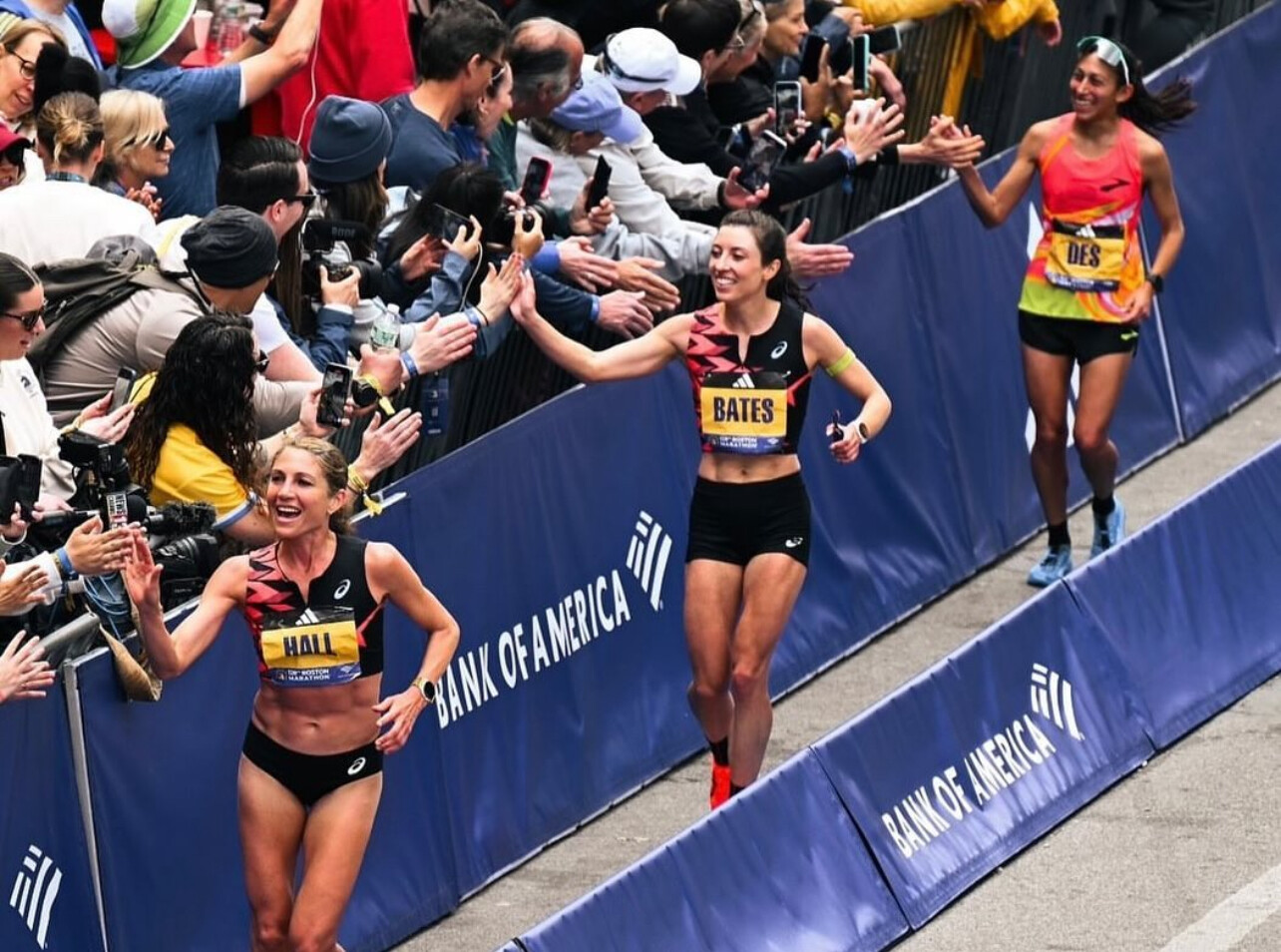
Challenging her will be Amane Beriso, the reigning world marathon champion, and Yalemzerf Yehualaw, a former London Marathon winner with sub-2:17 speed. Sharon Lokedi, last year’s runner-up, will also be in contention, having nearly edged out Obiri in a dramatic finish.

The American field is deep, with contenders including Sara Hall, Keira D’Amato, Emma Bates, and former champion Des Linden. While breaking into the top three will be a challenge, a top-five finish is within reach for the top U.S. women.
Predictions & Final Thoughts
The men’s race is expected to be a battle between the experienced champions and rising American stars. If the race is fast from the start, runners like Korir and Lemma may have the edge. However, if it becomes a strategic affair, Mantz and Young could position themselves for a breakthrough performance.

On the women’s side, Obiri’s experience and closing speed make her the favorite, but the depth of the field suggests another closely contested race. If Beriso or Yehualaw can push the pace early, it could disrupt Obiri’s plans for a late kick.
With a historic Patriots’ Day celebration and an elite field ready to compete, the 2025 Boston Marathon is shaping up to be an unforgettable race. Whether defending champions hold their ground or new winners emerge, all eyes will be on Boylston Street this April.
by Boris Baron
Login to leave a comment
Boston Marathon
Among the nation’s oldest athletic clubs, the B.A.A. was established in 1887, and, in 1896, more than half of the U.S. Olympic Team at the first modern games was composed of B.A.A. club members. The Olympic Games provided the inspiration for the first Boston Marathon, which culminated the B.A.A. Games on April 19, 1897. John J. McDermott emerged from a...
more...Keira D’Amato Announces Her Return to the Boston Marathon with Passion and Purpose
Keira D’Amato is the American half marathon record holder with a time of 1:06:39 at the 2023 Gold Coast Half marathon on July 1, 2023. She held the American women's record in the marathon with her time of 2:19:12 at the 2022 Houston Marathon, until Emily Sisson set a new record time on October 9, 2022.
Krira, one of the most electrifying american athletes in distance running, has officially announced her return to the Boston Marathon in 2025. In a heartfelt post on Facebook, D’Amato reflected on her lifelong connection to the iconic race, sharing her journey from being a Boston Marathon spectator to an elite competitor, and now, a returning champion with “unfinished business.”

A Lifelong Fan Turned Competitor
D’Amato’s relationship with the Boston Marathon began long before she donned an elite bib. In her post, she reminisced about being a devoted fan of the race, watching the action unfold on TV countless times and cheering passionately along the famed streets of Wellesley. Her early admiration for the event sparked a personal goal—to qualify for Boston, a feat that became a challenging yet transformative chapter in her running career.
“I’ve chased the BQ [Boston Qualifier] dream and come up short,” D’Amato shared. “I built up the courage and strength, and I went after it again and finally dipped under the qualifying standard.”
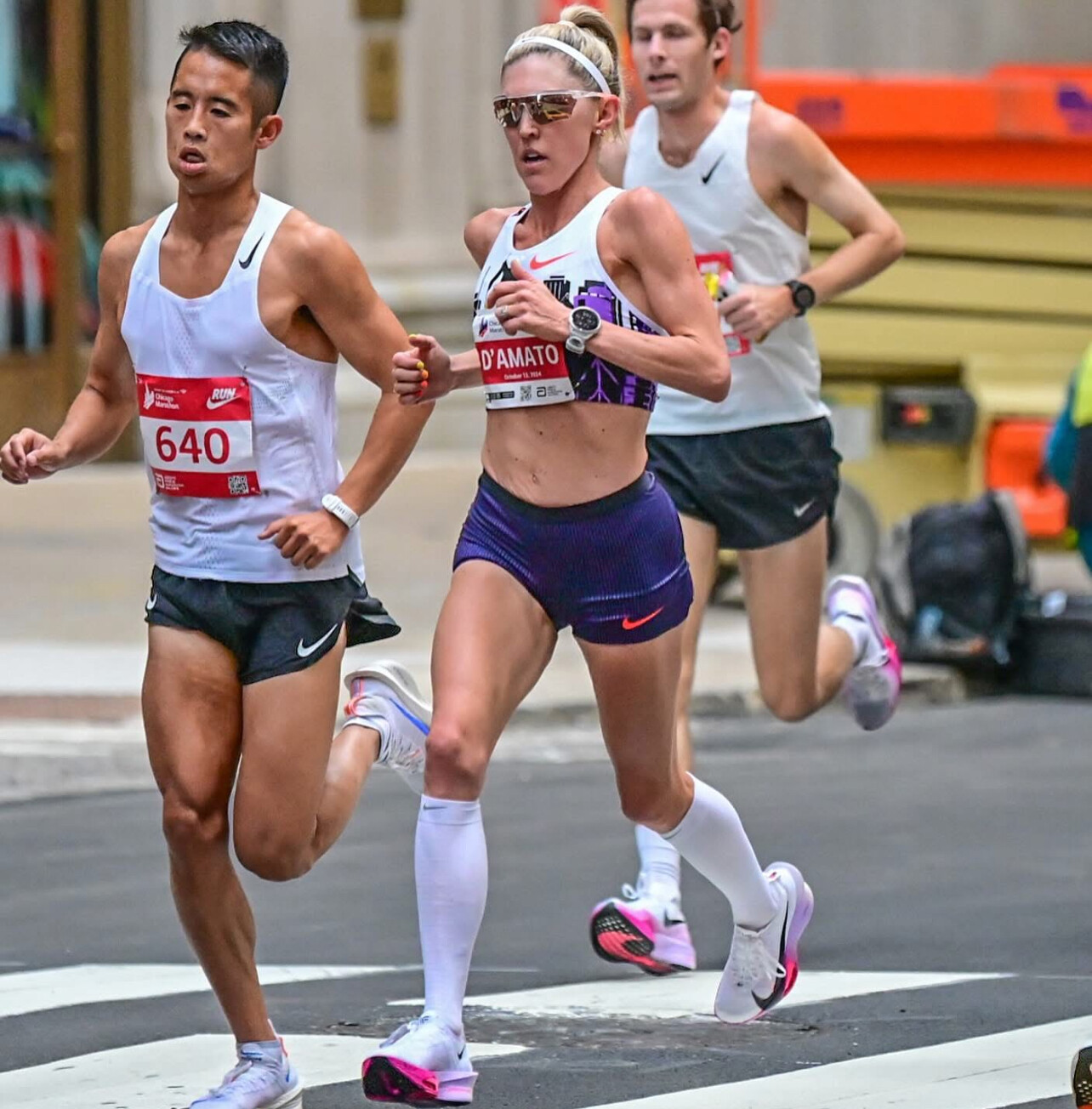
That perseverance paid off in 2018 when she not only achieved her goal but found herself racing in Boston as part of the prestigious elite women’s field.
A Return with “Unfinished Business”
Fast forward to 2025, and D’Amato’s Boston story is far from over. After breaking the American marathon record in 2022 and solidifying her place among the world’s best, D’Amato is now returning to the storied streets of Boston with new goals, fierce determination, and a deep appreciation for what the race means to her.
“Now, in 2025, I’m coming back to Boston with unfinished business,” she declared. “Boston, I’m back.”
The phrase “unfinished business” hints at D’Amato’s competitive fire and her aspiration to leave an even greater mark on the historic course. Whether it’s contending for a podium finish or chasing personal milestones, her return is sure to electrify this year’s race.
A Personal and Historic Connection
The Boston Marathon, steeped in tradition and known for its challenging course and unpredictable conditions, resonates deeply with D’Amato’s own story of resilience and reinvention. Her journey from a recreational runner and working mom to breaking records and competing at the highest levels is a testament to her grit and passion—a perfect reflection of Boston’s spirit.
As she counts down the days to Patriot’s Day, her excitement is palpable, and her story continues to inspire runners of all levels to dream big, face setbacks, and keep striving for their personal bests.
The Countdown to Patriot’s Day
D’Amato’s announcement has sparked anticipation among fans and the running community as the Boston Marathon, slated for Monday, April 21, 2025, promises to be another unforgettable chapter in marathon history. With D’Amato in the mix, the race is sure to deliver thrilling moments and inspire runners worldwide.
Whether she’s racing for victory or personal redemption, one thing is certain: Keira D’Amato’s return to Boston is one to watch.
by Boris Baron
Login to leave a comment
Boston Marathon
Among the nation’s oldest athletic clubs, the B.A.A. was established in 1887, and, in 1896, more than half of the U.S. Olympic Team at the first modern games was composed of B.A.A. club members. The Olympic Games provided the inspiration for the first Boston Marathon, which culminated the B.A.A. Games on April 19, 1897. John J. McDermott emerged from a...
more...Hellen Obiri of Kenya will return to the Boston Marathon in April and attempt to win for the third time in a row.
In the race’s history, only four other women (Bobbi Gibb, Sara Mae Berman, Uta Pippig, and Fatuma Roba) have won three times a row, according to race organizers, who released the elite field today. The race is set for April 21.
Last year, Obiri broke the race open by covering the 24th mile in 4:41 and won in 2:22:37, 8 seconds ahead of her countrywoman Sharon Lokedi, who will also return to Boston.
Obiri, 35, trains in Boulder, Colorado, with the On Athletics Club, and she has been on the podium in five of the six marathons she has run. In addition to her two Boston titles, she won the New York City Marathon in 2023, finished second there in 2024, and won the Olympic bronze medal in Paris. (The only blemish on her marathon record was her sixth-place finish at her debut in New York in 2022.)
Obiri and Lokedi will be challenged by Amane Beriso and Yalemzerf Yehualaw of Ethiopia. Beriso has a personal best of 2:14:58 from the Valencia Marathon in 2022. She’s currently the fifth-fastest woman of all time.
Sisay Lemma of Ethiopia, the defending men’s champion, will also return to Boston. Lemma’s 2:01:48 from Valencia in 2023 makes him the fourth-fastest man in history.
Last year in Boston, Lemma got out to a large early lead, and the course record seemed almost certain to fall. But by the Newton hills, Lemma was feeling his hot early pace and slowed considerably. He held on to win in 2:06:17.
His challengers at the 2025 race will include Evans Chebet of Kenya, who has won the race twice (2022 and 2023) and was third in 2024. John Korir of Kenya, who won the 2024 Chicago Marathon in a fast 2:02:44, will also be back to race in Boston. He was fourth last year.
A Strong American Field
Many top Americans are entered into Boston. On the women’s side, they include Keira D’Amato, who briefly held the American record of 2:19:12 in 2022, and Sara Hall, who had a strong race at last fall’s Berlin Marathon, where she ran 2:23:45. She’ll turn 42 the week before the race.
D’Amato told Runner’s World in a text message that she is recovering from the injury in her left foot—stress reactions in her calcaneus and talus—that caused her to drop out of Chicago. “Hoping all the cross training has made me Boston Strong,” she wrote. “I’m building up conservatively to have a killer 2025.”
Olympians Dakotah Popehn and Des Lindenwill run (Linden for the 12th time), as will Emma Bates, the top American at Boston last year, Olympic Marathon Trials fourth-place finisher Jess McClain, and notables Sara Vaughn, Kellyn Taylor, and Lindsay Flanagan.
On the men’s side, Olympians and training partners Conner Mantz and Clayton Young, who finished eighth and ninth at the Games, respectively, will run Boston. They’ll be joined by CJ Albertson, who runs several fast marathons each year (five in 2024, including his PR of 2:08:17 in Chicago) and Zach Panning, who was fifth at the Olympic Marathon Trials.
by Runner’s World
Login to leave a comment
Boston Marathon
Among the nation’s oldest athletic clubs, the B.A.A. was established in 1887, and, in 1896, more than half of the U.S. Olympic Team at the first modern games was composed of B.A.A. club members. The Olympic Games provided the inspiration for the first Boston Marathon, which culminated the B.A.A. Games on April 19, 1897. John J. McDermott emerged from a...
more...Sara Hall Smashes Her Own American Masters Record
In her fourth marathon of 2024, Sara Hall finished 10th at the Valencia Marathon in Spain in 2:23:45. Hall, 41, shattered her own U.S. masters record, 2:26:06, which she set at the Olympic Marathon Trials in February.
The race was won by Megertu Alemu of Ethiopia in 2:16:49.
Hall averaged 5:29 per mile pace in Valencia. It was her best marathon since 2022, when she ran 2:22:10 at the World Championships in Eugene, Oregon, and placed fifth.
Hall has been frequent racer throughout her career, not needing much time to recover between races. Her entry into Valencia was a last-minute addition, after she raced in Chicago eight weeks earlier, and the race did not go according to plan. (Hall was 18th in 2:30:12.) She also ran Boston this year, finishing 15th in 2:27:58.

She posted to her Instagram account after the race.
“After a long stretch of not feeling like myself since Boston, it felt so good to have my normal fight out there,” Hall wrote, in part. “Applied the lessons I learned from Chicago, handled the very similar conditions much better. Chose to believe in myself even when my confidence had been rattled over and over. What a dream to do this four times this year.”
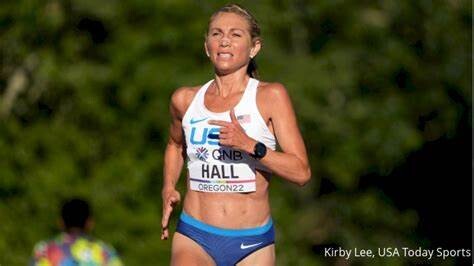
Hall elaborated in a text message to Runner’s World that she missed several bottles in Chicago—she fumbled a couple, and others she didn’t drink much out of—and became dehydrated in the humid conditions. “This time just was much more intentional to consume fluids even if I didn’t feel like I needed it,” she said.
She also increased her electrolytes and said she went out more conservatively than she would normally run and did at Chicago. Hall ran half spits that were almost even—1:11:40 and 1:12:05.
Hall’s PR is 2:20:32 from the Marathon Project in Chandler, Arizona, a one-time event set up for elite runners during the pandemic. That PR puts her fifth on the U.S. all-time list, behind Emily Sisson, Keira D’Amato, Betsy Saina, and Deena Kastor.
Her career is notable for its duration. Hall has appeared in every Olympic Trials since 2004, either on the track or in the marathon, or both. She is coached by her husband, Ryan Hall, who is third on the U.S. all-time list for men’s marathoners.
Hall was not the only record setter in Valencia. Roberta Groner, 46, who represented the U.S. at the 2019 world championships in Doha, Qatar, where she finished sixth, ran 2:29:32, setting an American record for the 45–49 age group.
Groner’s record should be safe for at least the next three years—or until Hall turns 45 in April 2028.
by Sarah Lorge Butler
Login to leave a comment
VALENCIA TRINIDAD ALFONSO
The Trinidad Alfonso EDP Valencia Marathon is held annually in the historic city of Valencia which, with its entirely flat circuit and perfect November temperature, averaging between 12-17 degrees, represents the ideal setting for hosting such a long-distance sporting challenge. This, coupled with the most incomparable of settings, makes the Valencia Marathon, Valencia, one of the most important events in...
more...The Evolution of Marathon Running: A Kenyan Perspective
I can still vividly remember when 2:08:32 in the marathon seemed like an unbreakable barrier. Derek Clayton of Australia set this world record back in 1969 at the Antwerp Marathon—a time so remarkable that it stood for nearly 12 years. Now, hundreds of runners have far surpassed that mark. Today, running a sub-2:05 marathon has become almost routine, particularly for athletes from Africa.
On the women’s side, the achievements are just as groundbreaking. Ruth Chepngetich of Kenya recently made history at the 2024 Chicago Marathon by breaking the 2:10 barrier, finishing in a stunning 2:09:56. While this remarkable time is still awaiting ratification, it is set to redefine the boundaries of women’s marathon running. This performance follows the previous world record of 2:11:53, set by Tigst Assefa of Ethiopia at the 2023 Berlin Marathon. These times show just how far women’s marathon performances have progressed in recent years.
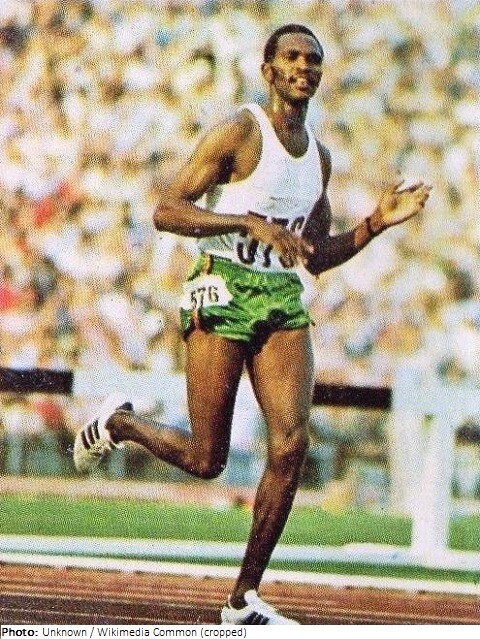
While advancements like “magic” shoes have undoubtedly played a role in these extraordinary performances, it’s important to note that better pacing by other professional runners, now a standard practice, has also made a significant difference. These pacesetters help keep athletes on target through much of the race, ensuring consistency and reducing mental strain. However, the story of record-breaking runs runs much deeper than technology and pacing strategies.
In Kenya alone, there are at least 80,000 distance runners who dream of nothing else but becoming professional athletes. For them, running isn’t just a passion—it’s a path to success and stability.
At the Kenyan Athletics Training Academy (KATA), the training camp I established in Thika, Kenya, we house, feed, and train aspiring athletes. I Each week, I receive messages from 10 or more runners hoping to join our program. For these athletes, running is not a hobby or a pastime. It’s a career aspiration, with the ultimate goal of winning races and securing prize money. They love running, but make no mistake—their drive is fueled by the potential to achieve financial security and support their families.
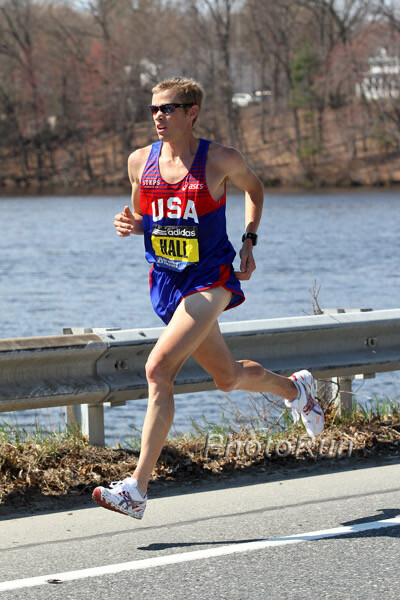
Contrast this with the United States, where very few runners train with the sole focus of becoming professional athletes. Instead, many children grow up dreaming of careers in sports like baseball, basketball, football, or, more recently, soccer. The talent pool for these sports is massive, and from this base, the superstars emerge.
That said, American marathoners have delivered incredible performances. Ryan Hall’s 2:04:58 at the 2011 Boston Marathon remains a monumental achievement, showcasing what U.S. athletes are capable of on a favorable course. On the women’s side, runners like Keira D’Amato (2:19:12) and Emily Sisson (2:18:29, an American record) are setting new benchmarks, proving that the U.S. can compete at the highest levels.
In the U.S., running is often a lifestyle choice rather than a career ambition. Recreational and “fun” runners dominate the scene, which has its benefits—contributing to a higher average life expectancy (76 years in the U.S. compared to 63 in Kenya). In Kenya, it’s rare to see runners over 40 years old out training. The focus there is on younger athletes whose primary goal is to make a living through running.
For many in Kenya, running is the equivalent of pursuing a high-paying job in other fields. This mentality dates back to pioneers like Kip Keino, who opened the door for countless Kenyan athletes to achieve global success. His legacy inspired generations, and today, Kenyan runners—both men and women—continue to push the limits of human potential.
As marathon times keep dropping and prize money continues to grow, I believe we’ll see even faster performances from both men and women—especially in Africa, where running is deeply ingrained as a pathway to opportunity.
by Bob Anderson
Login to leave a comment
Legese and Chepngetich lead Chicago Marathon fields
Ruth Chepngetich heads to the Bank of America Chicago Marathon on the hunt for a hat trick, while Birhanu Legese is the fastest in the men’s field for the World Athletics Platinum Label road race on Sunday (13).
The women’s race features a clash between Chepngetich, her Kenyan compatriot Joyciline Jepkosgei and Ethiopia’s Sutume Kebede – three sub-2:17 runners who form part of a field that includes another six women to have dipped under 2:20.
Chepngetich, the 2019 world marathon champion, won in Chicago in 2021 and 2022, and followed that with a runner-up finish to Sifan Hassan last year. She clocked 2:14:18 on that occasion, while her PB of 2:14:18 set in Chicago in 2022 makes her the fourth fastest women’s marathon runner in history.
She ran 2:24:36 for her most recent marathon, in London in April, and placed ninth, but then clocked 1:05:58 to win the 21k Buenos Aires half marathon in August.
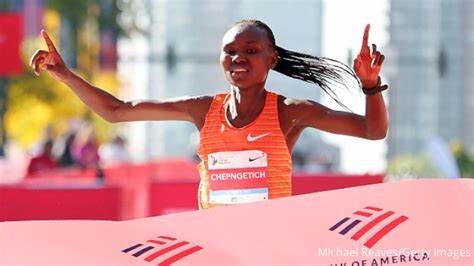
Jepkosgei, who won the London Marathon in 2021 and New York City Marathon in 2019, finished fourth in Chicago last year in 2:17:23.
She improved by one place when returning to marathon action in London in April, setting a PB of 2:16:24.
It’s Kebede who leads this season’s top list, thanks to the PB of 2:15:55 she set to win the Tokyo Marathon in March. That puts her at No.8 all time and she will be hoping to make the most of the fast course in Chicago.

“After seeing what my teammate Kelvin Kiptum did last year, I want to come to Chicago to do something great,” said Kebede, who finished 15th in last year’s race.
Kiptum, who was part of Kebede’s training group, died in a road traffic accident in February, just four months after he set his world marathon record of 2:00:35 in Chicago. This year, the event will honour Kiptum’s legacy with a moment of silence at the start line.
Joining Chepngetich, Jepkosgei and Kebede on that start line will be three more women with PBs under 2:18 – Ethiopia’s Degitu Azimeraw, Ashete Bekere and Hiwot Gebrekidan – plus Kenya’s Irine Cheptai, who ran 2:18:22 in Hamburg in April.
The field also features the second and third fastest ever US women’s marathon runners, Keira D’Amato and Betsy Saina, who have also dipped under 2:20. They are joined in this competitive field by their compatriots Sara Hall and Emma Bates.
Ethiopia’s Legese leads the men’s field with the PB of 2:02:48 he ran in Berlin in 2019. That performance puts him sixth on the men’s world marathon all-time list but since then his highest marathon finish has been a third place, achieved in Rotterdam with a 2:05:16 run in April.
The two-time Tokyo Marathon champion will want to return to winning ways when he heads back to Chicago, where he placed 10th when making his World Marathon Majors debut in 2018, but he faces tough opposition.
Six other men in the field have PBs faster than 2:06, including Kenya’s Amos Kipruto, Vincent Ngetich and John Korir, and Ethiopia’s Dawit Wolde, Amedework Walelegn and Mohamed Esa.
Kipruto, the 2019 world bronze medallist, and Ngetich have matching PBs of 2:03:13. Kipruto won the London Marathon in 2022 and trains with Benson Kipruto, who won that year’s Chicago Marathon, while Ngetich was second in the Berlin Marathon last year, five places ahead of Kipruto. He was also third at this year’s Tokyo Marathon.
Korir ran his PB of 2:05:01 when finishing third in Chicago in 2022, while Wolde ran 2:03:48 in Valencia last year, Esa has a best of 2:05:05 from Amsterdam in 2022 and Walelegn clocked 2:04:50 in Rotterdam in April, finishing runner-up – one place ahead of Legese.
Looking to join them at the front of the field will be Kenya’s Daniel Ebenyo, the world 10,000m and half marathon silver medallist who makes his marathon debut. The 29-year-old ran a 59:30 half marathon in Berlin in April, 26 seconds off his PB set in Manama in 2022.
Ethiopia’s Jemal Yimer Mekonnen, who finished fourth in the half marathon at last year’s World Road Running Championships behind runner-up Ebenyo, is back in marathon action after his win in Seoul in March.
Among the athletes racing on home soil are USA’s Zach Panning, CJ Albertson and Brian Shrader.
Elite fields
WomenRuth Chepngetich (KEN) 2:14:18Sutume Kebede (ETH) 2:15:55Joyciline Jepkosgei (KEN) 2:16:24Degitu Azimeraw (ETH) 2:17:58Ashete Bekere (ETH) 2:17:58Hiwot Gebrekidan (ETH) 2:17:59Irine Cheptai (KEN) 2:18:22Keira D'Amato (USA) 2:19:12Betsy Saina (USA) 2:19:17Sara Hall (USA) 2:20:32Emma Bates (USA) 2:22:10Buze Diriba (ETH) 2:23:11Sara Vaughn (USA) 2:23:24Susanna Sullivan (USA) 2:24:27Gabi Rooker (USA) 2:24:35Lindsay Flanagan (USA) 2:24:43Stacey Ndiwa (KEN) 2:25:29 Lauren Hagans (USA) 2:25:56Annie Frisbie (USA) 2:26:18Jackie Gaughan (USA) 2:27:08Dominique Scott (RSA) 2:27:31Diane Nukuri (USA) 2:27:50Makena Morley (USA) 2:30:25Anne Marie Blaney (USA) 2:30:43Amy Davis-Green (USA) 2:33:09Aubrey Frentheway (USA) debut
MenBirhanu Legese (ETH) 2:02:48Amos Kipruto (KEN) 2:03:13Vincent Ngetich (KEN) 2:03:13Dawit Wolde (ETH) 2:03:48Amedework Walelegn (ETH) 2:04:50John Korir (KEN) 2:05:01Mohamed Esa (ETH) 2:05:05Jemal Yimer (ETH) 2:06:08Kyohei Hosoya (JPN) 2:06:35Toshiki Sadakata (JPN) 2:07:05Tatsuya Maruyama (JPN) 2:07:50Yuichi Yasui (JPN) 2:08:48Jorge Castelblanco (PAN) 2:09:24Zach Panning (USA) 2:09:28Brian Shrader (USA) 2:09:46CJ Albertson (USA) 2:09:53Tomoki Yoshioka (JPN) 2:10:03Reed Fischer (USA) 2:10:34Nathan Martin (USA) 2:10:45Colin Mickow (USA) 2:11:22Kevin Salvano (USA) 2:11:26Jacob Thomson (USA) 2:11:40Turner Wiley (USA) 2:11:59Shadrack Kipchirchir (USA) 2:13:02JP Flavin (USA) 2:13:27Charlie Sweeney (USA) 2:13:41Ben Kendell (USA) 2:15:49Phil Parrot-Migas (CAN) 2:15:53Aaron Gruen (USA) 2:15:56Daniel Ebenyo (KEN) debutPeter Lynch (IRL) debutAlex Maier (USA) debutAlex Masai (USA) debut
by World athletics
Login to leave a comment
Bank of America Chicago
Running the Bank of America Chicago Marathon is the pinnacle of achievement for elite athletes and everyday runners alike. On race day, runners from all 50 states and more than 100 countries will set out to accomplish a personal dream by reaching the finish line in Grant Park. The Bank of America Chicago Marathon is known for its flat and...
more...Ruth Chepngetich leads Chicago Marathon elite line-ups
The Kenyan will be targeting her third victory in Chicago whilst Ethiopia’s Birhanu Legese leads the men’s field.
This weekend, all eyes will be on Chicago as the city hosts the Bank of America Chicago Marathon on Sunday (October 13), promising a thrilling showdown amongst top-tier athletes.
In the women’s competition, Kenya’s Ruth Chepngetich, a former Chicago Marathon winner in 2021 and 2022 and the fourth-fastest woman in marathon history, is set to return to the course, which winds through 29 neighborhoods.
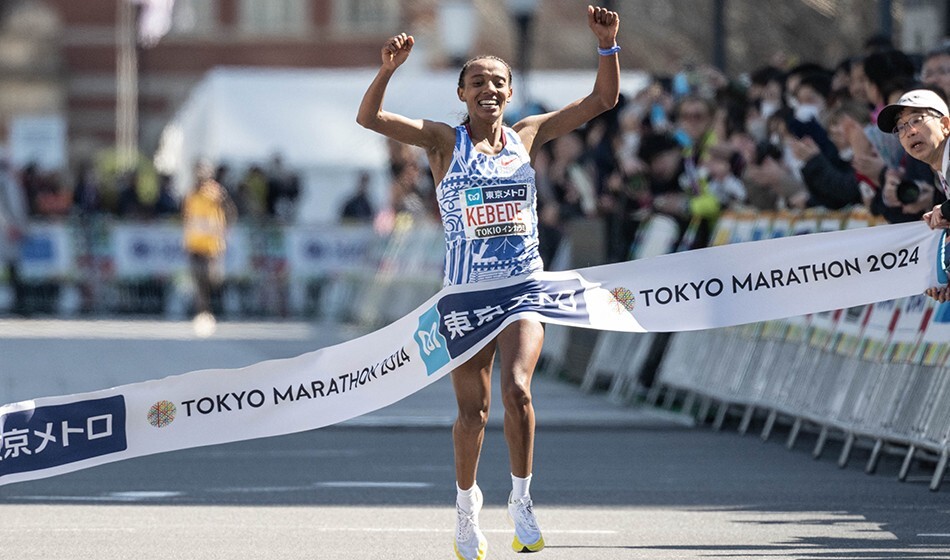
The 30-year-old enters as the fastest woman in this year’s line-up after winning the title in 2022 by running her fastest time of 2:14:18. At the time, she was 14 seconds short of Brigid Kosgei’s world record of 2:14:04, before Tigist Assefa (2:11:53) and Sifan Hassan (2:13:44) went quicker in 2023.
The 2019 world champion secured a second-place finish in Chicago last year behind Sifan Hassan.
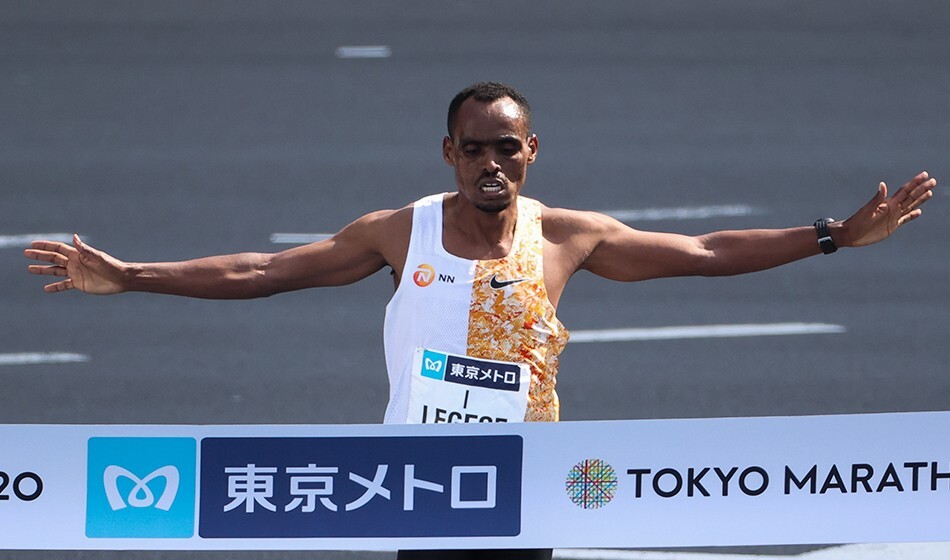
Yet, it will not be an easy run to victory for Chepngetich. Ethiopia’s Sutume Kebede, fresh off her Tokyo Marathon win, arrives with the fastest marathon time of 2024, having ran 2:15:55 in Tokyo.
Kebede has had a stellar year, setting a record time of 64:37 at the Aramco Houston Half Marathon – the fastest-ever women’s half marathon time on US soil.
Chepngetich and Kebede will be joined by Kenya’s Joyciline Jepkosgei, who has previously taken titles at the New York City Marathon in 2019 and London Marathon in 2021. Jepkosgei finished third this year in London where she clocked her personal best of 2:16:24.
American athletes Keira D’Amato (2:19:12) and Betsy Saina (2:19:17) join the list of athletes. D’Amato, a former American record holder in the marathon, is making a comeback as a competitor after working as a commentator. Meanwhile, Saina, who had to withdraw from the Chicago Marathon in 2019 due to illness, returns to make her mark.
The men’s race will also feature a highly competitive field with Ethiopia’s Birhanu Legese leading the charge. Legese, who recorded an impressive 2:02:48 at the 2019 Berlin Marathon is the fastest on paper.
A two-time Tokyo marathon champion, this will be his second time tackling the Chicago course after finishing 10th in 2018 with a time of 2:08:41. Most recently, Legese took third place at the 2024 Rotterdam Marathon.
Legese will be up against strong competition, particularly from Kenya’s Amos Kipruto and Vincent Ngetich, who both hold personal bests of 2:03:13.
Kipruto, a bronze medallist at the World Championships in Doha 2019, claimed victory at the 2022 London Marathon. Ngetich won bronze in the Tokyo marathon earlier this year.
by Jasmine Collett
Login to leave a comment
Bank of America Chicago
Running the Bank of America Chicago Marathon is the pinnacle of achievement for elite athletes and everyday runners alike. On race day, runners from all 50 states and more than 100 countries will set out to accomplish a personal dream by reaching the finish line in Grant Park. The Bank of America Chicago Marathon is known for its flat and...
more...Six American runners to watch in the 2024 Chicago Marathon
Excitement is building for this year’s Chicago Marathon that takes place on Sunday 13 October. Once again, a stellar field has been assembled including some of the best American runners operating today. Read on to find out which US athletes will compete in the 2024 Chicago Marathon.
It’s been seven years since the last American was victorious in the Chicago Marathon, with Galen Rupp crowned winner of the men’s race in 2017. In the women’s race, you need to go back almost 20 years to find the last US winner, when Deena Kastor became the first female American to claim victory on the streets of Chicago in almost a decade.
But with this year’s Chicago Marathon just days away, a strong group of elite American runners will take on the challenge of the 42.195km race, bringing with them experience, pedigree and the hopes of a nation as they battle for glory on home soil.
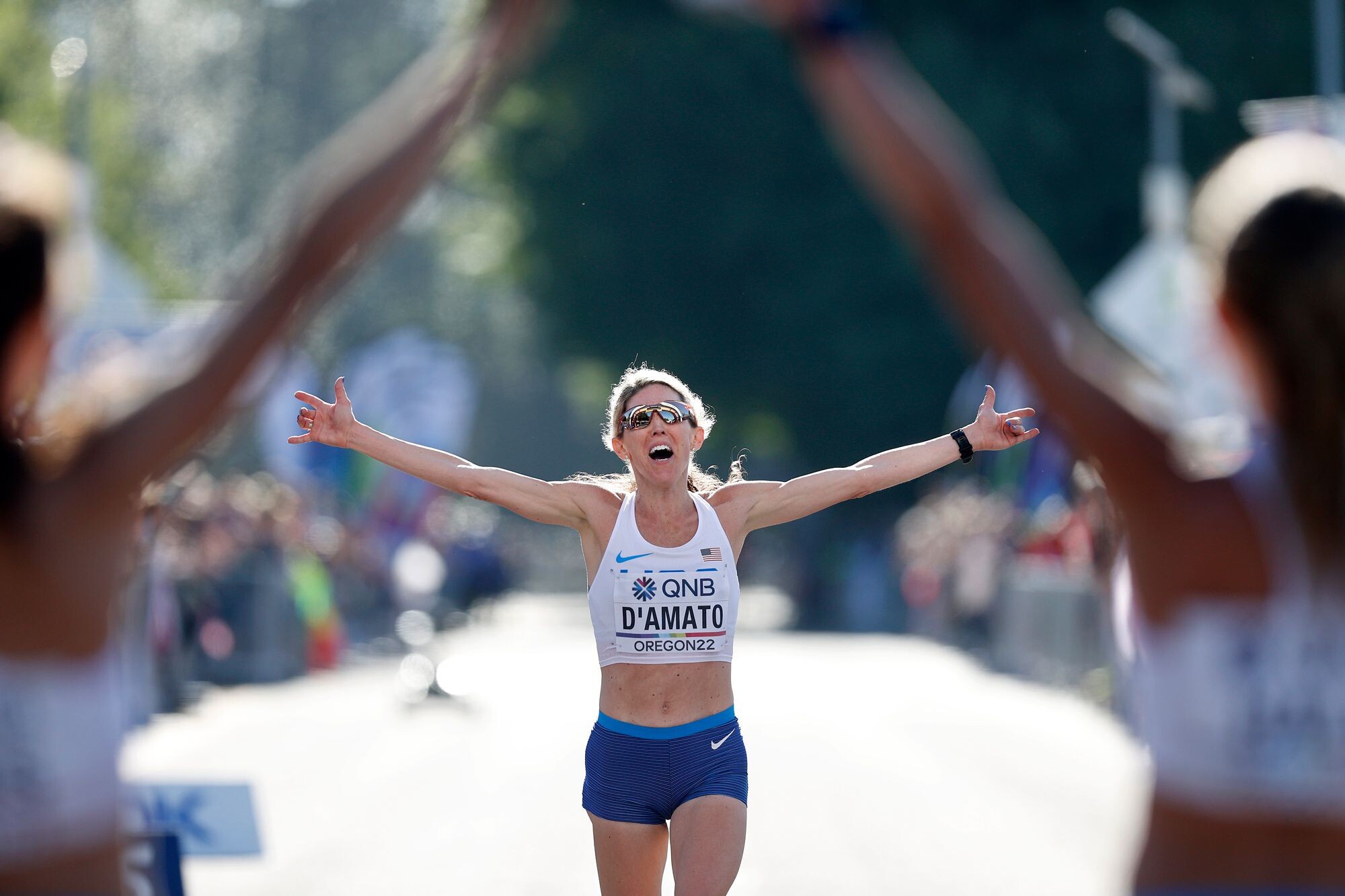
Read on to discover the top American athletes competing in the 2024 Chicago Marathon.
Top Americans in the 2024 Chicago Marathon women’s race
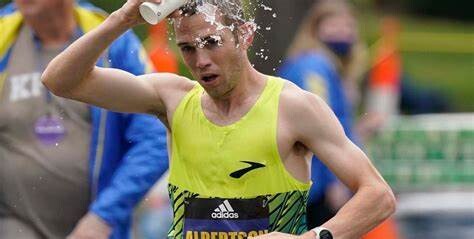
Keira D’Amato
Keira D'Amato, the former fastest female American runner of all time, has an exceptional track record in long-distance events. The 39-year-old still holds the fastest US women’s time in the half marathon at 1:06:39, set in the Gold Coast, Australia in 2023, while her best in the 42.195km race is an impressive 2:19:12, which she achieved in Houston in 2022.
This year, D’Amato will have speedy support by her side, as she revealed her pacer for the Chicago Marathon will be none other than Rio 2016 Olympic 1500m gold medallist Matthew Centrowitz. Can the addition to her race-day crew catapult D’Amato to glory in the Windy City? All will be revealed on Sunday.
Born in Kenya, Betsy Saina has since received her US citizenship and will be one of the favourites to hold the title of fastest American in this year’s Chicago Marathon women’s race. Saina became a mother in 2021 but has gone from strength to strength since then, becoming the fastest female American marathoner in 2023. While her dreams of making the Olympic team for Paris 2024 were not realised, she comes into this year’s Chicago Marathon showpiece with one of the fastest times among all US runners with a personal best of 2:19:17 set at the 2024 Tokyo Marathon.
A fan favourite and former American marathon record holder, Sara Hall has vast experience in elite marathon running, which includes a third-place finish in the 2021 Chicago Marathon.
Perhaps her most memorable performance was in the 2021 London Marathon where she produced a stunning all-out sprint finish to claim second-place in Britain’s capital.
At 41 years old, Hall will be among the older members of the elite field but she is showing few signs of slowing down. She finished fifth in the 2024 Olympic marathon trials and in April this year ended the Boston Marathon as the second-fastest American finisher in a time of 2:27:58.
Top Americans in the 2024 Chicago Marathon men’s race
Zach Panning
During the US marathon trials for the last Olympics, Zach Panning sent the crowd into a frenzy with a courageous run where he led from the front for almost three-quarters of the race. Panning eventually fell off the pace to finish the trials in sixth place, with only the top three nominated for the team.
However, the fearlessness of the 29-year-old, who holds a personal best of 2:09:28, makes him one of the most exciting runners in the field.
Following his 10th-place finish in the 2024 London Marathon, Brian Shrader is back on home soil hoping to impress on the streets of Chicago, where he finished 11th last year in a personal best time of 2:09:46.
While a DNF in the Olympic trials shattered Shrader’s dreams of going to Paris 2024 he enters this race with real aspirations of finishing as the top American and perhaps challenging the front-runners in the elite men’s race.
Perhaps best known for his exploits over distances that trickle into the category of ultrarunning, CJ Albertson’s pace over the legendary 42.195km distance makes him one of the top three American men in the Chicago Marathon field.
The former world record holder over 50km enters Sunday’s race with a best marathon time of 2:09:53 set at the 2024 Boston Marathon, where he finished seventh.
Albertson finished fifth in the 2024 Olympic trials but his recent form shows just why he is one of the most talked-about US athletes operating in the marathon today.
by Athletics
Login to leave a comment
Bank of America Chicago
Running the Bank of America Chicago Marathon is the pinnacle of achievement for elite athletes and everyday runners alike. On race day, runners from all 50 states and more than 100 countries will set out to accomplish a personal dream by reaching the finish line in Grant Park. The Bank of America Chicago Marathon is known for its flat and...
more...Sutume Kebede: Inspired by former training teammate Kelvin Kiptum's historic win ahead of 2024 Chicago Marathon
After missing selection the for Paris 2024 Olympics, the reigning Tokyo women's marathon champion - and fastest marathoner this year - is set to compete in Chicago on Sunday October 13th. You can watch the race on the Olympic Channel via Olympics.com.
As a world-leading marathoner, Sutume Kebede has accumulated training volumes of up to 700 hours weekly on forest paths and dirt roads around the world.
But there are some brief stints of her workouts that have stayed with her over the last few months.
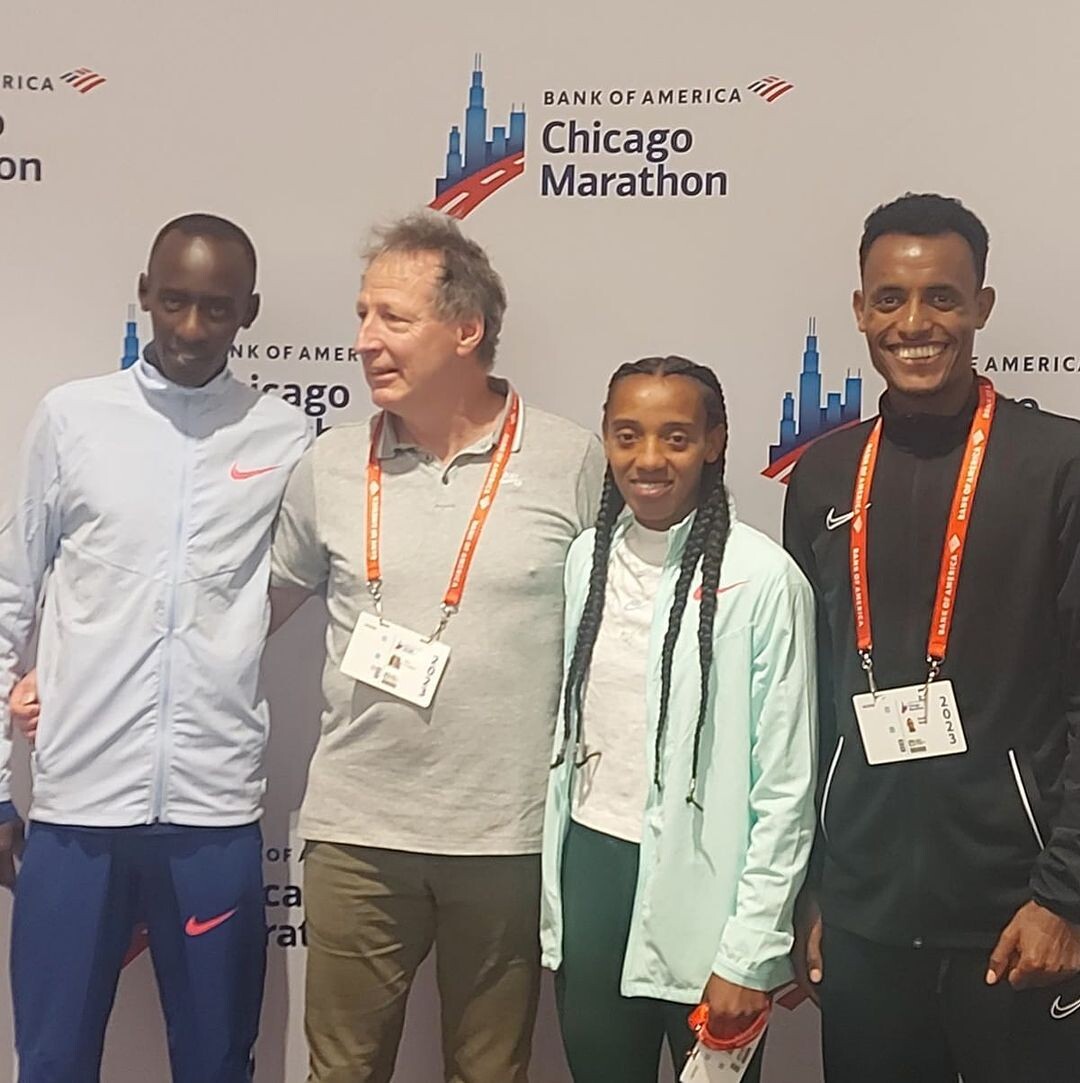
The Ethiopian chose Chicago, where she trained last year in a group that included the late world marathon record holder Kelvin Kiptum. It was a routine experience that is now etched forever in her memory.
She is hopeful that the utterly incredible run that changed the men’s marathon can inspire her to achieve her greatest marathon win.
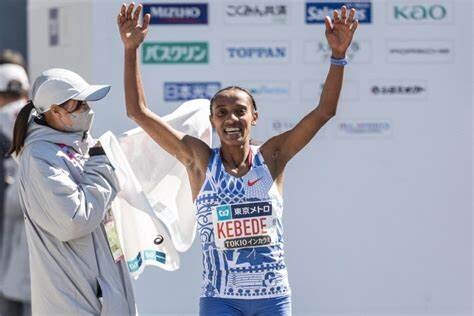
“After seeing what my teammate Kelvin Kiptum did last year, I want to come to Chicago to do something great,” she said on setting her sights on winning a first World Marathon Majors in the U.S.
The fastest woman over the marathon distance this year headlines the Chicago Marathon on Sunday October 13, looking to continue making history with every stride.
Sutume Kebede looks to extend her strong form in Chicago after Tokyo win
When Kebede chose to race competitively, she looked up to one of the greatest track distance runners ever, Tirunesh Dibaba. She based herself at the legend’s Athletics Training Academy, training as a 5000m and 10,000m athlete.
And when she was ready for the international stage, the budding Ethiopian runner, who grew up as one of ten siblings, decided to forego the track and head straight to the roads.
In May 2015, the then 21-year-old achieved the world's best performance in the 25km with a time of 1:21:55, which was also an Ethiopian record.
This was a pivotal moment that gave her the courage to stay on the roads and make her debut at the Dubai Marathon in 2016.
A few years, and lots of half marathons and several marathons later, Kebede, now 29, has carved her name among the best marathoners. She is coached by her husband Birhanu Mekonnen, a retired roadrunner who prematurely ended his career to fully support hers. She is always quick to credit him as one who helped her reach this position.
Kebede has achieved a new level this year. She ran the fastest women’s half marathon on US soil when she won in Houston last January, beating a strong field that included Olympic silver medallist Hellen Obiri. Her unexpected victory of 1:04.37 set her up for her biggest win yet.
She returns to Chicago to run again, though with a heavy heart, but at the pinnacle of her career after winning the 2024 Tokyo Marathon in 2:15:55, the eighth-fastest woman of all time.
“I am extremely happy to come back to Chicago and run on a course that has proven to be very fast,” said Kebede, who is motivated to try again in Chicago, where she last met Kiptum. They were both managed by Marc Corstjens at Golazo Talent. The flashbacks of their training sessions around the Windy City and their ensuing races are still very fresh in her mind.
It’s been a year of highs and lows for the East African runner. As the fastest woman marathoner this year, she was banking on being an automatic pick for the Paris 2024 Olympics. But after missing out on selection, she opted to give the Chicago Marathon another shot. She was 15th last year when Olympic champion Sifan Hassan raced to the second-fastest time of the year.
"All the races I've won bring me joy, but my victory in the Tokyo Marathon, one of the world's major marathons, stands out as a highlight,” she told Ethiopian press.
She will face a strong field led by the two-time Chicago Marathon winner Ruth Chepngetich, runner-up last year, and 2021 London champion Joyciline Jepkosgei, who is coached by her husband Nicholas Koech and trains with American Betsy Saina. Saina is among the local stars tipped to shine alongside former American marathon record holder Keira D’Amato.
The races will also be broadcast live on Olympics.com in a number of territories.
by Evelyn Watta
Login to leave a comment
Bank of America Chicago
Running the Bank of America Chicago Marathon is the pinnacle of achievement for elite athletes and everyday runners alike. On race day, runners from all 50 states and more than 100 countries will set out to accomplish a personal dream by reaching the finish line in Grant Park. The Bank of America Chicago Marathon is known for its flat and...
more...Jessica McClain And Biya Simbassa Capture USATF Road Titles At Great Cow Harbor 10k
That’s what Jessica McClain shouted as she broke the tape at the Great Cow Harbor 10-K here this morning where she won her first-ever national title. The 32 year-old from Phoenix, who finished fourth at the 2024 USA Olympic Team Trials Women’s Marathon last February, stopped the clock at 31:40, a new course record by 13 seconds.
She’ll leave this picturesque seaside town on Long Island with total race winnings of $10,500: $8,000 for first place and $2,500 for setting a new course record. Her time was also a championships record, bettering Marla Runyan’s 2002 mark of 31:46 set in Boston.
“It was so fun,” an elated McClain told Race Results Weekly just after finishing. “I was literally out here just to race and have a good time before New York (City Marathon), and the motivation now is just head-down training, staying in Phoenix the next six weeks.”
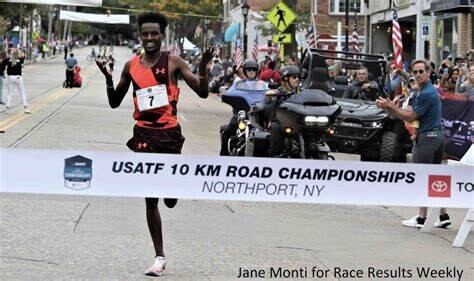
McClain was part of a strong lead pack in the first mile which included Natosha Rogers, Erika Kemp, Emma Grace Hurley, and Amanda Vestri. Keira D’Amato, Annie Rodenfels, and Katie Izzo ran together about six seconds back. The quintet ascended the steep James Street Hill in the second mile, then ran together towards the 5-K mark, unable to appreciate the breathtaking views of Northport Harbor to their left. Rogers got the $500 5-K prime, but McClain held back. She was thinking instead about the overall title.
“I knew some of the women would be motivated by the 5-K bonus,” McClain explained. “So I was like, just tune-out and stay in the mix until then, and then just feel it out. When I felt comfortable enough, make a move and make it definitive.”
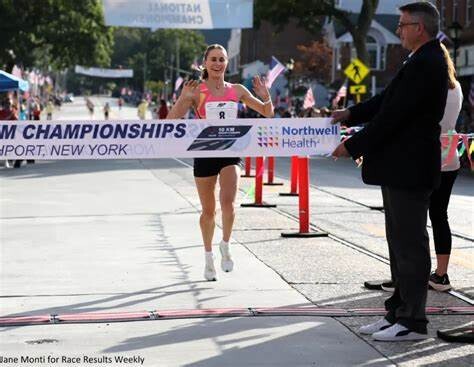
Her legs full of strength from marathon training, McClain pulled away in the fourth mile. She ran the mostly downhill second half of the race in a snappy 15:42, much faster than the second-place Rogers (16:03). Spurred on by the hundreds of spectators who lined both sides of the course, the Brooks-sponsored athlete sailed to the finish line on Main Street alone. She was particularly pleased with her tactics today.
“I’ve been really bad about getting out and making half-assed moves,” McClain admitted with a chuckle. “I was really trying to get to a point where I was antsy and just go.”
Despite suffering from a badly upset stomach in the final mile, Rogers was a clear second in 32:00. Hurley, the overall leader in the USATF Running Circuit points race, took third in 32:05 and Kemp, who won here in 2021, got fourth in 32:10. D’Amato, who will run the Bank of America Chicago Marathon in three weeks, completed the top-5 in 32:13.
Her legs full of strength from marathon training, McClain pulled away in the fourth mile. She ran the mostly downhill second half of the race in a snappy 15:42, much faster than the second-place Rogers (16:03). Spurred on by the hundreds of spectators who lined both sides of the course, the Brooks-sponsored athlete sailed to the finish line on Main Street alone. She was particularly pleased with her tactics today.
“I’ve been really bad about getting out and making half-assed moves,” McClain admitted with a chuckle. “I was really trying to get to a point where I was antsy and just go.”
Despite suffering from a badly upset stomach in the final mile, Rogers was a clear second in 32:00. Hurley, the overall leader in the USATF Running Circuit points race, took third in 32:05 and Kemp, who won here in 2021, got fourth in 32:10. D’Amato, who will run the Bank of America Chicago Marathon in three weeks, completed the top-5 in 32:13.
by David Monti
Login to leave a comment
Great Cow Harbor 10K
One of the Most Prestigious 10K Races in the Country Background The Great Cow Harbor 10K Run has been designated as the 2024 USA Track & Field National 10K Championship. Runner's World has named the Great Cow Harbor 10K Run as one of the top 100 races in the US, and New England Runner regularly places it in its Top...
more...Could the women's American marathon record fall at this year's Chicago Marathon?
The 2024 Bank of America Chicago Marathon on Oct. 13 poses an exciting opportunity for elite runners to capture record-breaking times -- and this year is no different. Could a women's record fall during the race?
The lineup, which was released earlier this summer, is highlighted by two of the "10 fastest women of all time" and the the second and third fastest American women of all time.
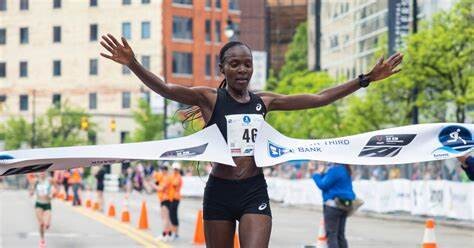
“We are accustomed to making history at the Bank of America Chicago Marathon,” Executive Race Director Carey Pinkowski said in a statement. “With some of the fastest athletes in the world joining us this fall, we are hopeful to build on the tradition of great performances this year.”
For the Americans, Keira D'Amato and Betsy Saina headline the country's best.
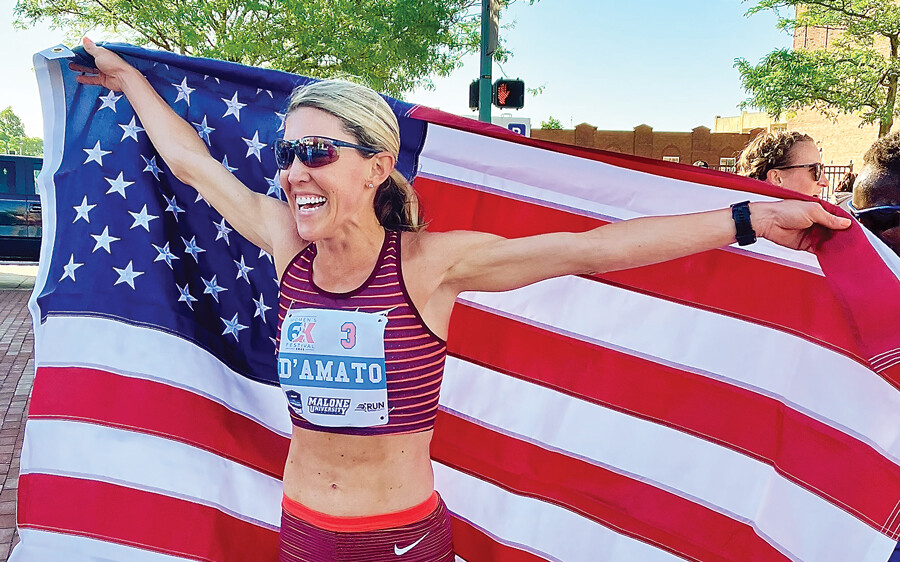
D'Amato, the former American marathon record holder, will return to the starting line after being part of the broadcast team for the past two years.
“I have a special history with the Chicago Marathon,” said D’Amato who finished fourth in 2021. “The past two years I’ve run my mouth in the lead vehicle for NBC. I’m excited to get back to running my legs.”
D'Amato first broke the American marathon record in 2022 in Houston, topping a time that had stood for 16 years.
Emily Sisson broke that same record shortly after during the 2022 Chicago Marathon. D'Amato was among the long line of legendary female runners celebrating Sisson at the Chicago finish line that year.
Saina, who placed fifth in this year’s Tokyo Marathon, will look to record her first Chicago finish after dropping out of the race in 2019 due to illness. She's run the third-fastest marathon time of any American woman, one spot behind D'Amato.
Sara Hall and Emma Bates are also in the field for the Americans. Hall's best time of 2:20:32 comes from Chandler in 2020. Bates ran her best time in 2022 at the Boston Marathon with a 2:22:10 finish.
Among the most notable names at the starting line will be Sutume Kebede, of Ethiopia, who holds the fastest marathon in the women's field and whose finish at the 2024 Tokyo Marathon made her the eighth fastest of all time.
“I am extremely happy to come back to Chicago and run on a course that has proven to be very fast,” Kebede, who had a disappointing finish in the 2023 Bank of America Chicago Marathon, said in a statement. “After seeing what my teammate Kelvin Kiptum did last year, I want to come to Chicago to do something great.”
Kenya's Ruth Chepngetich will also return to the start line in October. She won the race in both 2021 and 2022 while finishing runner-up during last year's 2023 race. Her 2:14:18 from the 2022 Chicago Marathon stands as the fourth-fastest time by a woman in history.
Here is the lineup for the women's elite division.
Bank of America Chicago Marathon Professional Field – Women’s Open Division
The Chicago Marathon is not immune to seeing record-breaking times.
Kenya's Kelvin Kiptum obliterated the men's marathon world record at the 2023 Chicago Marathon, running it in 2 hours and 35 seconds. He overcame Eliud Kipchoge's previous record by 30 seconds with his time. Tragically, Kiptum later died shortly after in a car accident in February. He was 24.
At the 2022 Chicago Marathon, Emily Sisson defeated the women's American marathon record in 2 hours, 18 minutes and 29 seconds. She finished second place in the race to Kenya's Ruth Chepngetich, who ran 2:14:18; the second-fastest marathon time by a woman in history.
Let's not also forget Joan Benoit Samuelson broke the women's American marathon record in 1985 with a time of 2:21:21. The time still stands as the seventh-fastest time by an American woman today.
Three of the four fastest marathon times in women's history were run at the Chicago Marathon. Will spectators see another on Oct. 13?
by NBC Sports Chicago Staff
Login to leave a comment
Bank of America Chicago
Running the Bank of America Chicago Marathon is the pinnacle of achievement for elite athletes and everyday runners alike. On race day, runners from all 50 states and more than 100 countries will set out to accomplish a personal dream by reaching the finish line in Grant Park. The Bank of America Chicago Marathon is known for its flat and...
more...Hillary Bor sets national record at the New Haven 20K, Keira D’Amato wins women’s race
Two-time Olympian Hillary Bor fell in the U.S. Olympic Trials in the steeplechase and did not make it to Paris.
Neither did Keira D’Amato, who dropped out of the Olympic Marathon Trials after running with
Hilary Bor and Keira D'Amato won USATF national titles in the 20K Monday by winning the men's and women's races at the 47th Faxon Law New Haven Road Race.Bor finished the 20K (12.4 miles) race in 58 minutes, 9 seconds, while D'Amato crossed the finish line in 1:06:25.
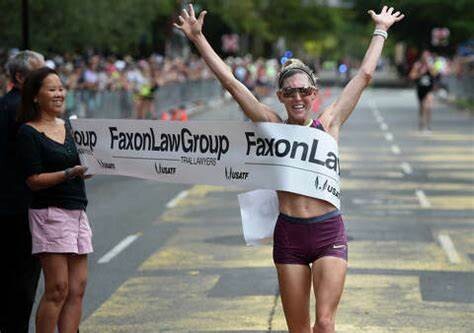
Bor's time set the national championship record. He pulled away from Nathan Martin (58:26), Biya Simbassa (59:29) and Aidan Reed (58:31).
Bor, from Colorado, was a member of the 2016 U.S. Olympic team and competed in the steeple chase.
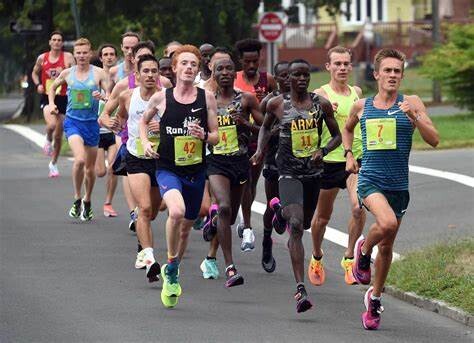
D’Amato, from Virginia, also won the Faxon Law New Haven 20K in 2022 when she set the course record. She held off Jess McClain (1:06.50), Savanah Berry (1:07:03) and Annie Frisbie (1:07:19).
Both earned the Ryan Shay Memorial Award, given annual in honor of the 2004 Faxon Law New Haven Road Race winner who died while participating in the 2007 Olympic Trials Marathon in New York City. The award is presented in recognition of Shay’s hard work and dedication to the sport, as well as longtime support of the New Haven Road Race, which he ran four times.
Connecticut's top finisher in the male division was West Hartford's Grant O'Connor, who placed 23rd in 1:02:54. The top state performer in the female division was Glastonbury's Alyssa Natario, whose time of 1:14:41 was 13th.
Other Connecticut residents to place in the top 25 in the female division were: Fairfield's Megan Connolly, Wallingford's Katie Overstrum, Woodbridge's Laura Pierce, Manchester's Olivia Mondo, Colchester's Alayna Bigalbal and East Lyme's Rebecca Snielson
The race, which drew more than 5,000 participants, also included a 5K, half marathon, half marathon relay and kid's fun run.
Benjamin MacDonald of Susbury, Mass. won the half marathon in 1:10:01, with Tabea Themann of Hamburg, Virginia winning the female division in 1:18:11. Westport's Clare Kutnick was second in the division in 1:21:48.
Prospect's Colin Slavin won the 5K title in 15:31 for the men, while Milford's Courtney Kitchen won the female division in 17:46.
by Lori Riley
Login to leave a comment
New Haven Road Race
The Faxon Law New Haven Road Race, renowned as the longest-running USATF 20K National Championship, is scheduled for Monday, September 1, 2025 (Labor Day), in New Haven, Connecticut. This event will once again host the Men's and Women's USATF 20K National Championships, attracting elite athletes, including past champions and U.S. Olympians. Participants can choose from various race options, including the...
more...U.S. Olympians highlight field in 2024 Faxon Law New Haven Labor Day Road Race
Three U.S. Olympians highlight a competitive field set to run on Labor Day in the Faxon Law New Haven Road Race, the host of the USA Men's and Women's 20K Championship.
There's one Olympian competing in the women's field: Rachel Smith represented America at the Tokyo Olympics in the 5,000 meters and became this year's 15K National Champion.
Jess McClain finished fourth at this year's Olympic Trials Marathon.Virginia's Keira D'Amato leads the women's field. She set the course record when she won the race in 2022.
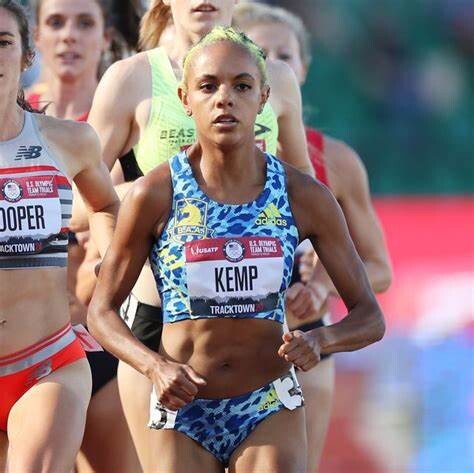
The 2021 race champion, Erika Kemp, will also be competing.
Moving over to the men's field, there are two runners with Olympic appearances. Woody Kincaid represented the U.S. in the last two Olympics. He ran the 10,000 meters in Paris and the 5,000 meters in Tokyo. This marks Kincaid's first 20K.
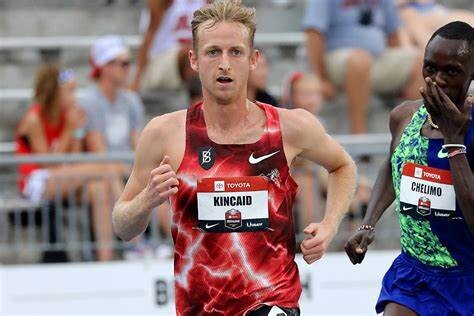
Hillary Bor is the other Olympian. He represented America in the 2016 Steeplechase. Another challenger will be Sam Chelanga, who has finished in the top three in five appearances in New Haven's 20K. Also competing is West Hartford's Ben Lanza, who is one of Connecticut's top distance runners.
The female and male 20K winners will receive the Ryan Shay Memorial Award. Shay passed away while participating in the 2007 Olympic Trials Marathon in New York City. The award is in recognition of Shay’s hard work and dedication to the sport, as well as longtime support of the New Haven Road Race.
"We're very excited about having many of the country's top runners compete in New Haven," said John Tolbert, Elite Athlete Coordinator in a release. "We have very deep Men’s and Women’s race fields. With a cool day, the men’s and women’s 20K American records could be in jeopardy.”
Labor Day is Sept. 2. The race will begin on the New Haven Green. The Kids Fun Run starts at 8:10 a.m. The 20K, Half Marathon and 5K all start at 8:30 a.m.
by Christine Butterfield
Login to leave a comment
New Haven Road Race
The Faxon Law New Haven Road Race, renowned as the longest-running USATF 20K National Championship, is scheduled for Monday, September 1, 2025 (Labor Day), in New Haven, Connecticut. This event will once again host the Men's and Women's USATF 20K National Championships, attracting elite athletes, including past champions and U.S. Olympians. Participants can choose from various race options, including the...
more...Why Ethiopian marathon star wants to clinch Chicago Marathon victory in honor of Kelvin Kiptum
The reigning Tokyo Marathon holder has explained why she will be doing everything to win in Chicago to honor the fallen former marathon star Kelvin Kiptum.
This year’s fastest women’s marathoner, Sutume Kebede of Ethiopia, has revealed her real motivation ahead of the 46th Bank of America Chicago Marathon.
Kebede's remarkable 2:15:55 victory in the 2024 Tokyo Marathon makes her the eighth fastest woman of all time.
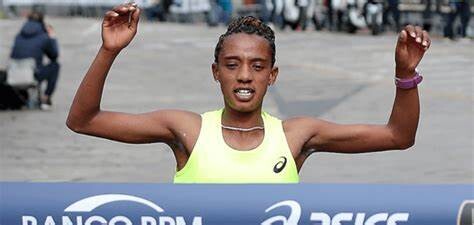
This achievement came just two months after she set the record for the fastest half marathon ever completed in the United States at the Aramco Houston Half Marathon in January, with a winning time of 1:04:37.
Kebede is part of a training group that once included the late Kelvin Kiptum, who was tragically killed in a car crash this past February, just four months after setting the marathon world record at the 2023 Bank of America Chicago Marathon.
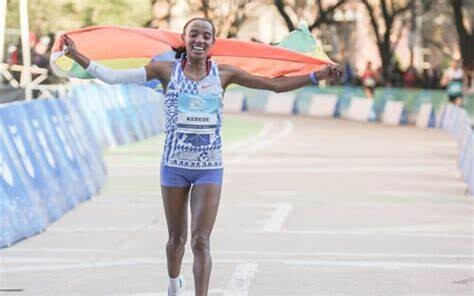
Returning to Chicago with a strong motivation to win, Kebede expressed her excitement: “I am extremely happy to come back to Chicago and run on a course that has proven to be very fast.”
Kedebe has revealed her real motivation to make amends from last year’s shortcomings.
“After seeing what my teammate Kelvin Kiptum did last year, I want to come to Chicago to do something great.” Kebede had a disappointing finish in the 2023 Bank of America Chicago Marathon, but she is determined to make a significant impact this year.
Kebede will face fierce competition, including the fourth fastest woman in history, Ruth Chepngetich of Kenya.
Chepngetich, the 2021 and 2022 Chicago champion, was runner-up last year and is eager to reclaim her title. Another top contender is fellow Kenyan Joyciline Jepkosgei, a TCS London and TCS New York City Marathon Champion who placed fourth in the 2023 Chicago Marathon.
Joining these East African stars are the second and third fastest American women of all time. Former American marathon record holder Keira D’Amato, who has been part of the broadcast team for the past two years, will return to the start line this year.
D’Amato, who finished fourth in Chicago in 2021, is eager to compete again. Betsy Saina, who placed fifth in this year’s Tokyo Marathon, will also compete, aiming for her first Chicago finish after dropping out in 2019 due to illness.
The 46th Bank of America Chicago Marathon promises to be an exciting race, with some of the fastest women in the world vying for the coveted title.
by Mark Kinyanjui
Login to leave a comment
Bank of America Chicago
Running the Bank of America Chicago Marathon is the pinnacle of achievement for elite athletes and everyday runners alike. On race day, runners from all 50 states and more than 100 countries will set out to accomplish a personal dream by reaching the finish line in Grant Park. The Bank of America Chicago Marathon is known for its flat and...
more...Ruth Chepng’etich, Joyciline Jepkosgei confirmed for 2024 Chicago Marathon
Ethiopians will challenge Kenyan stars Ruth Chepng’etich and Joyciline Jepkosgei at the 2024 Chicago Marathon, promising a thrilling race.
Two of Kenya's marathon luminaries Ruth Chepng’etich and Joyciline Jepkosgei have been confirmed to compete in the 2024 Chicago Marathon on October 13.
This news comes with a mix of excitement and high expectations as they prepare to face formidable Ethiopian opposition in a race that promises thrilling competition.
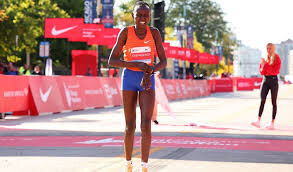
Chepng’etich, a two-time Chicago Marathon winner, returns to the Windy City with hopes of reclaiming her title.
She previously stunned the running world by clocking a phenomenal 2:14:18 in 2021, securing her a spot as the fourth fastest woman in marathon history.
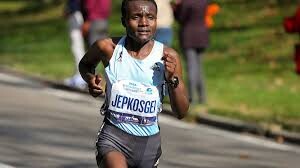
Despite her non-selection for the Paris Olympics, Chepng’etich's record speaks volumes about her resilience and prowess.
Her participation in Chicago marks a significant step as she aims for a hat-trick of wins in a city that has witnessed some of her greatest triumphs.
On the other hand, Joyciline Jepkosgei, the 2019 New York City Marathon champion and a seasoned competitor with a personal best of 2:16:24, is no stranger to the pressures of big city marathons.
With victories in both New York and London, Jepkosgei's strategic racing and endurance will be key assets as she navigates the Chicago course alongside Chepng’etich.
However, the Kenyan duo’s ambitions will be tested by strong Ethiopian contenders, including Sutume Kebede the reigning Tokyo Marathon champion with an impressive personal best of 2:15:55.
Kebede's entry adds a layer of intensity to the race, setting the stage for a gripping showdown among some of the world’s elite marathoners.
Further adding to the international flavor of this year's Chicago Marathon are other Kenyan runners like Mary Ngugi-Cooper, who posted a 2:20:22 at the 2022 London Marathon, and Stacey Ndiwa, who recently finished with a time of 2:25:29 in Los Angeles.
The American contingent is led by Keira D’Amato, who has a personal best of 2:19:12 and is transitioning from her 10th place finish in the 10,000m at the U.S. Olympic trials to her first marathon of the season.
Sara Hall and Emma Bates who have shown strong performances in past Chicago Marathons will also return aiming to capitalize on their familiarity with the course and local support.
by Festus Chuma
Login to leave a comment
Bank of America Chicago
Running the Bank of America Chicago Marathon is the pinnacle of achievement for elite athletes and everyday runners alike. On race day, runners from all 50 states and more than 100 countries will set out to accomplish a personal dream by reaching the finish line in Grant Park. The Bank of America Chicago Marathon is known for its flat and...
more...World champions to headline 2024 Chicago Marathon
As we inch toward the fall road racing season, the 2024 Chicago Marathon is the first Abbott World Marathon Major (AWMM) to announce its men’s and women’s elite list. Last year’s elite races in Chicago saw two course records and one world record set by the late Kelvin Kiptum—something that will be hard to beat. But the 2024 field does not lack talent or potential, with former world champion and fourth-fastest marathoner in history Ruth Chepngetich headlining the women’s field and world 10,000m silver medallist Daniel Ebenyo making his marathon debut in the men’s field.
The men’s race
Ebenyo has had a successful career on the track, winning multiple medals at World Championships and Commonwealth Games, but never individual gold. He is currently ranked by World Athletics as the top 10,000m runner in the world, holding a personal best of 26:57.80, which he set in 2023. The 28-year-old was not selected for the 10,000m by the Kenyan Olympic team for Paris 2024 after an eighth-place finish at the Kenyan Trials.
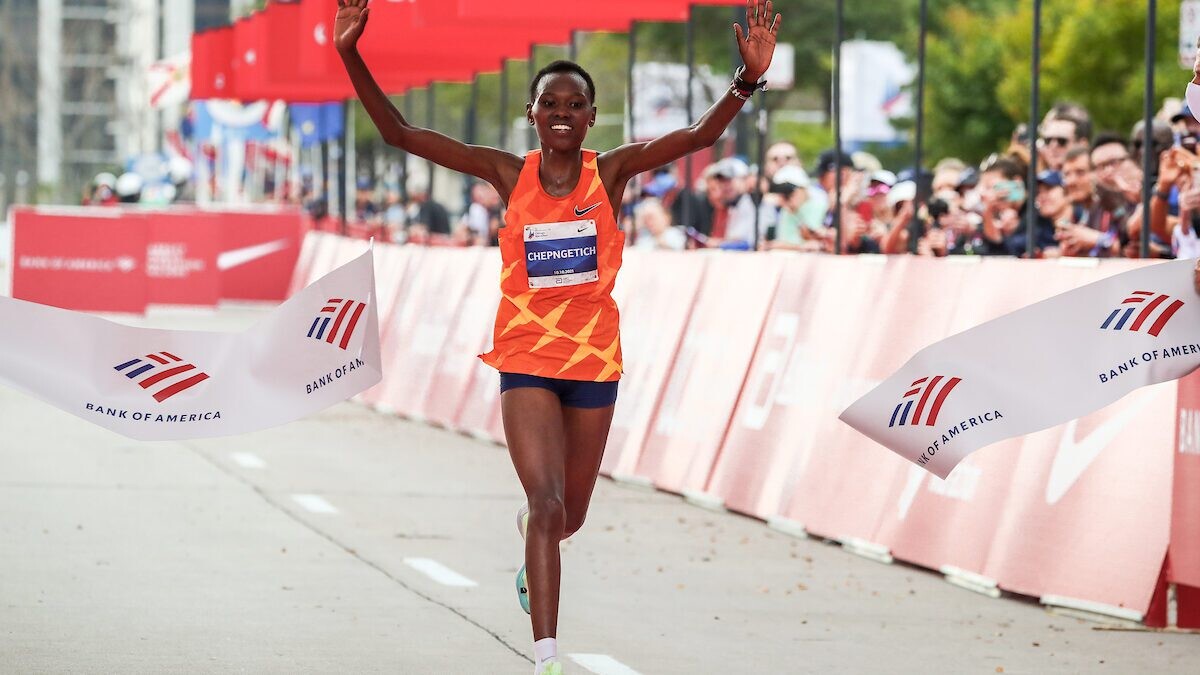
Although the Kenyan star has had success on the track, he has also flourished in his short career on the roads, winning silver in the half-marathon at the inaugural World Road Running Championships in Riga, Latvia. He holds a personal best of 59:04 for the half distance and a world best over 25 km (1:11:13).
Ebenyo’s potential over 42.2 km will be hard to predict; many people had high expectations for three-time world 10,000m champion Joshua Cheptegei of Uganda, but he struggled in his marathon debut last December in Valencia, clocking 2:08:59 for 37th place.
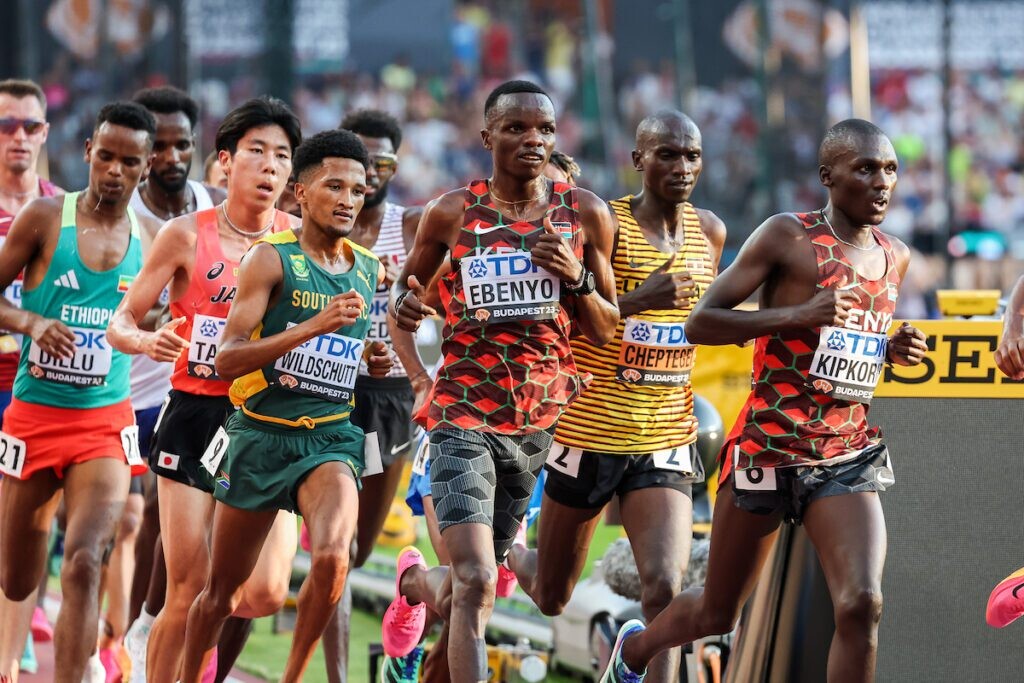
Joining Ebenyo in the men’s field is 2022 London Marathon champion Amos Kipruto, who has the fastest personal best in the field (2:03:13 from the 2022 Tokyo Marathon). Kipruto has podiumed at three of the six AWMMs and is known as one of the best tactical marathoners in the world. Chicago will be Kipruto’s first marathon since his seventh-place finish in Berlin last year.
The lone Canadian in the men’s field is Phil Parrot-Migas of London, Ont. This will be the third marathon of his career. He holds a personal best of 2:15:53, set in Hamburg in April.
The women’s field
At the 2022 Chicago Marathon, Chepngetich was on a world-record pace until the final kilometre, ultimately missing it by 14 seconds (2:14:18). This capped off her second-straight Chicago victory, following in the footsteps of her compatriot, Brigid Kosgei. Last year, Chepngetich was second to Sifan Hassan’s course record-setting run, in 2:15:37. Her personal best is the fastest in the field by a minute and a half, and with her experience on the flat and fast course, she’s going to be a tough athlete to beat come Oct. 13.
Besides Chepngetich, there’s a strong American contingent, consisting of three of the country’s top five fastest marathoners: Keira D’Amato, Sara Hall and Betsy Saina. D’Amato had a rough go at the 2024 U.S. Olympic Trials, and was unable to finish, due to injury. Months later, she announced a coaching change and a planned move to Utah to train under distance running guru Ed Eyestone, the coach of U.S. Olympic marathoners Conner Mantz and Clayton Young. D’Amato, who will turn 40 in October, told Runner’s World she made the switch because she wanted a different perspective on her training and a chance to learn from someone new.
Saina comes into the race as the strongest American athlete, placing in the top five of her last three marathons, including a win at the 2023 Sydney Marathon. Sydney is currently a candidate to be added as the seventh AWMM, joining Tokyo, Berlin, London, Boston, Chicago and NYC.
by Marley Dickison
Login to leave a comment
Bank of America Chicago
Running the Bank of America Chicago Marathon is the pinnacle of achievement for elite athletes and everyday runners alike. On race day, runners from all 50 states and more than 100 countries will set out to accomplish a personal dream by reaching the finish line in Grant Park. The Bank of America Chicago Marathon is known for its flat and...
more...Keira D'Amato wins Run for Women
Keira D'Amato of Richmond, Va. led from start to finish to win the 46th Delightful Run for Women on Saturday morning in Albany.
D'Amato, former American record-holder in the marathon and half-marathon, prevailed in a time of 15 minutes, 41 seconds on the 5-kilometer course that begins and ends on Washington Avenue next to the state Capitol.
D'Amato held off a late challenge from Amy Davis-Green of Madison, Wis., who came in second in 15:45, followed by Jessie Cardin of Sutton, Mass. in third at 15:51. Davis-Green and Cardin are teammates with the Hansons-Brooks Original Distance Project.

Freihofer’s Run for WomenTop finishers
1. Keira D’Amato, 15:41

2. Amy Davis-Green, 15:45
3. Jessie Cardin, 15:51
4. Anne-Marie Blaney, 15:57
5. Regan Rome, 16:39
6. Whitney Macon, 16:47
7. Emma Eastman, 16:54
8. Annmarie Tuxbury, 17:00
9. Kathryn Munks, 17:02
10. Amanda Chambers, 17:30
Masters division (40 & over)
1. Sascha Scott, 19:04
2. Meg Versteegen, 19:13
3. Margaret McMahon, 19:38
by Mark Singelais
Login to leave a comment
Freihofer's Run For Women
Freihofer's, a leading baker of wholesome products, is committed to fostering the growth and recognition of women in sports and inspiring all generations of women to experience the benefits of exercise and good nutrition. That's why we're proud to sponsor the annual Freihofer's Run for Women 5K -- one of the world's largest and most prestigious all-female road races. TheRace...
more...Hillary Bor Smashes His American Record at Cherry Blossom 10-Miler
Ugantda's Sarah Chelangat (51:14) broke the women's course record as American Emily Durgin (51:26) ran fast to finish second.
Two-time Olympic steeplechaser Hillary Bor enjoyed a triumphant return to the nation’s capital, winning his second consecutive USATF 10-mile championship title this morning at the Credit Union Cherry Blossom 10-Miler and lowering his own national record by a healthy 15 seconds in the process. Bor, 34, who was coming off of a strong half-marathon debut in New York City three weeks ago, finished third overall behind Kenyans Wesley Kiptoo (45:54) and Raymond Magut (45:55), clocking 45:56. Another American, Nathan Martin, also ran under Bor’s previous record of 46:11, stopping the clock at 46:00.
“Last year when I ran this race I ran 46:11 and it shows the fitness,” Bor told Race Results Weekly while wrapped in an American flag. “I went to Rabat for my steeplechase. I broke my foot and still ran 8:11. Last summer I was really, really struggling with the injury; I was just rehabbing from June to September.”
But today Bor –who represents Hoka, and like last year wore bib 13– felt healthy mile after mile. In cool and sunny conditions he was in the lead pack of seven at 5-K (14:14), and was the race leader at 10-K (28:36) where eight men remained in contention for the overall title including Kiptoo, Magut, Kenya’s Shadrack Kimining, and Americans Teshome Mekonen and Biya Simbassa. The leaders were averaging 4:38 per mile, but Bor felt the pace slow a little bit past the 10-K mark.
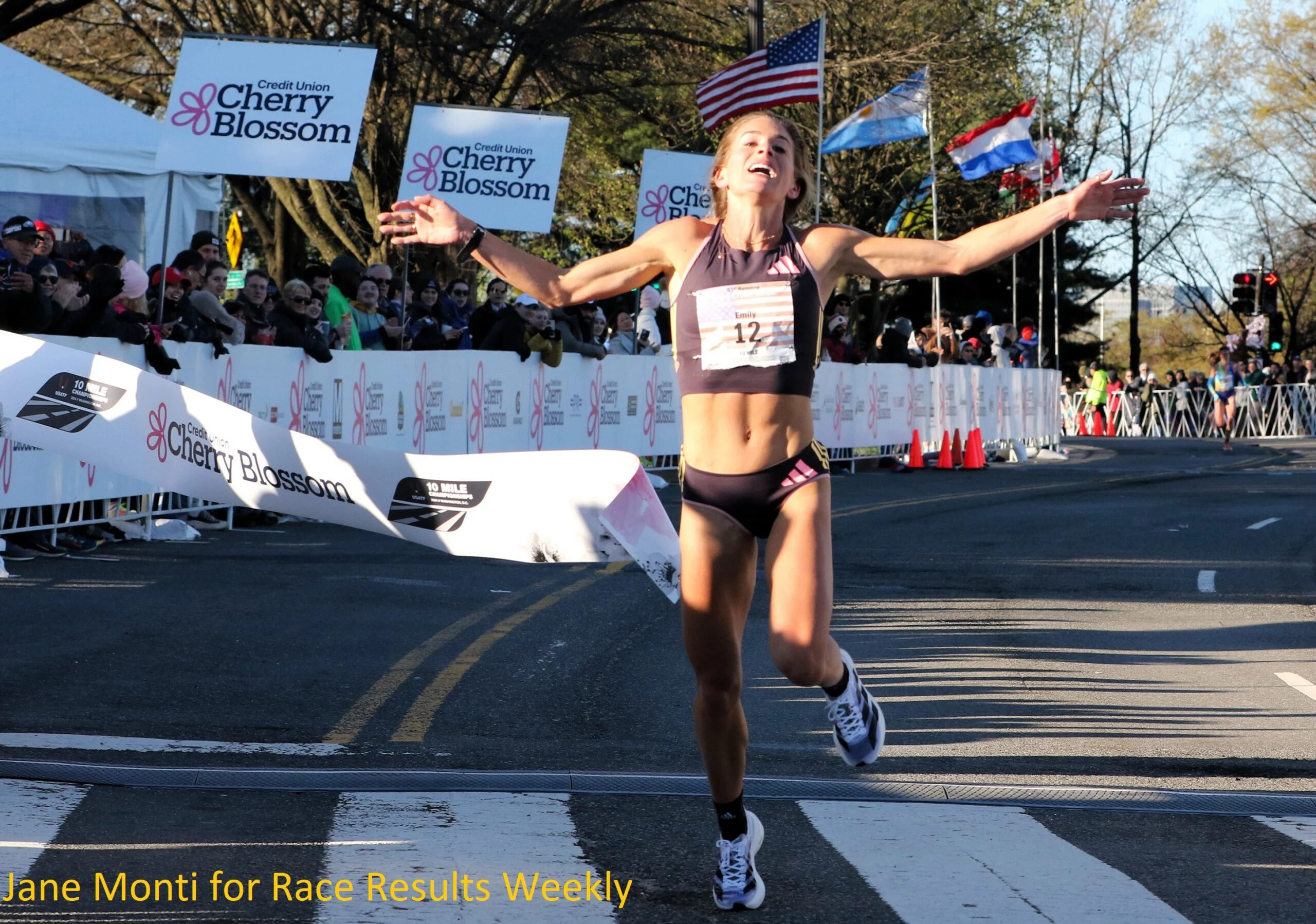
“Between 10-K and 15-K, we slowed down,” Bor continued. “We kind of wait and look at each other.”
With less than a mile to go, four men still had a chance for the win: Bor, Kiptoo, Magut and Martin. The race wouldn’t sort itself out until the final 800 meters where the course goes uphill, turns left, then goes back downhill for the finish line adjacent to the Washington Monument. Bor thought he could take the overall win, but Kiptoo had other ideas.
“The last 800 I was just kind of waiting,” said Kiptoo, who runs for Hoka Northern Arizona Elite. “I was like, everybody is making a move and I was like just good to wait until that last 600, and that’s where I knew I was going to win.”
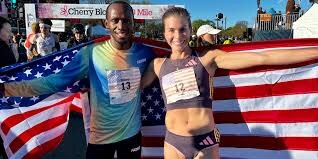
Kiptoo streaked to the finish line to take the overall title, but only had a second on Magut and two seconds on Bor in the end. On the financial front Bor was the big winner, earning $10,000 for the USATF title and another $2,000 for finishing third overall. Kiptoo earned $6,000 for the overall win plus a $1,000 bonus for running sub-46:00. Magut won $3,750 for finishing second overall and running sub-46:00 (time bonuses were only available for the first and second place finishers).
“The fitness is there,” said Bor, who will move back to the track where he hopes to make his third consecutive Olympic team in the steeplechase. “Ten miles has been good to me.”
Today’s race was bittersweet for Martin. The 34-year-old, who finished seventh at the Olympic Trials Marathon in February, ran an excellent race, breaking the national record, but still ended up second in the national championships.
“I was going for the win,” Martin told Race Results Weekly. “A mile to go I tried to take off and gap people and it didn’t work out. But, it was an awesome time.”
In the separate early-start elite women’s race, Uganda’s Sarah Chelangat repeated as overall champion in a new course record of 51:14. The 22-year-old led from gun to tape, and her time was a whopping 50 seconds faster than last year. She earned a total of $7,000: $6,000 for the win and $1,000 for breaking 52 minutes. She said that she had come to win.
“I’m happy,” said Chelangat, who represents Nike. “It is hard when you are running alone, but I’m happy because I won the race.”
Behind her, American Emily Durgin was running the race of her life. Durgin, 29, who represents adidas, moved from a chase pack of three at 10-K (31:45), where she ran with Ethiopians Kasanesh Ayenew and Tegest Ymer, to running alone by the final mile. She was too far behind Chelangat at 15-K to try for the overall win, but she kept pushing because she wasn’t sure if Rachel Smith (Hoka), the recently crowned USA 15-K champion, was catching up.
“The last mile I was more like, I hope Rachel doesn’t come from behind again,” Durgin said, referring to the USA 15-K Championships on March 2 where Durgin finished third. “At that point I was still trying to maintain a good time, and coming into this race I was like, I really want to win a national title, but I also wanted to run a fast time.”
Indeed she did. Durgin’s time of 51:26 was only three seconds slower than Keira D’Amato’s USATF record for an all-women’s race set in 2020 at a special event here in Washington during the pandemic.
“If I ended up second here today and still ran fast I was going to be happy with it,” Durgin continued. “Thankfully, I think I gapped Rachel enough so she wasn’t able to out-kick me this time.”
by David Monti
Login to leave a comment
Cherry Blossom Ten Mile Run
The Credit Union Cherry Blossom is known as "The Runner's Rite of Spring" in the Nation's Capital. The staging area for the event is on the Washington Monument Grounds, and the course passes in sight of all of the major Washington, DC Memorials. The event serves as a fundraiser for the Children's Miracle Network Hospitals, a consortium of 170 premier...
more...More Than 100 Professional Athletes to Race Boston 5K
Fast fields featuring Olympians, Paralympians, rising stars, and recent B.A.A. event winners will take center stage at the Boston 5K presented by Point32Health and B.A.A. Invitational Mile on Saturday, April 13. The deepest professional field in race history will include more than 100 accomplished athletes from 19 nations, set to square off for prize money and awards in the open, wheelchair, and Para Athletics Divisions.
“More than 40,000 athletes will take part in B.A.A. races across Boston Marathon weekend,” said Jack Fleming, President and Chief Executive Officer of the B.A.A. “Saturday’s Boston 5K and B.A.A. Invitational Mile fields feature some of the fastest American and international stars, many who are aiming to compete at the Olympics and Paralympics in Paris.”
A new champion will be crowned and the stage is set for another close race at the Boston 5K. Ben Flanagan (Canada), Edwin Kurgat (Kenya), and Alex Masai (Kenya) – all top-five finishers a year ago – will return. They were at the front of an exciting finish a year ago that saw the top 13 men come across the line within ten seconds of the winner.
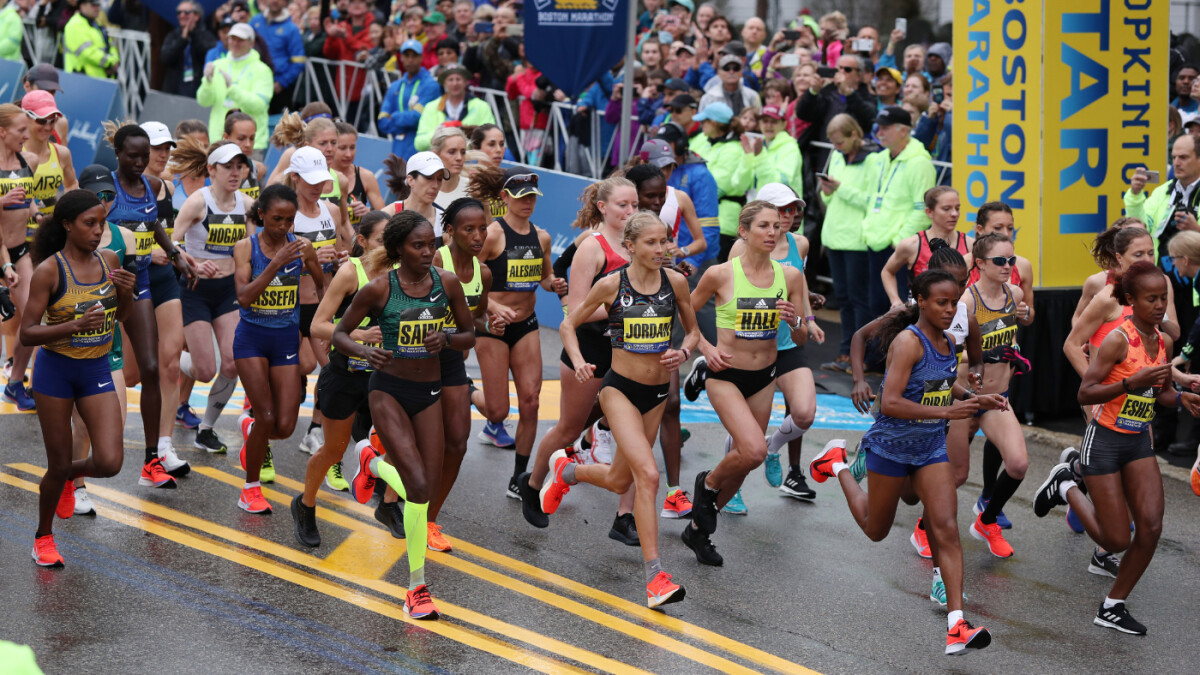
Top Americans Cooper Teare, Zach Panning, and Drew Hunter look to be at the front of the field. Teare is the reigning U.S. club cross country national champion, while Panning led a majority of February’s USA Olympic Team Trials – Marathon and Hunter is a former national champion indoors at 2 miles. B.A.A. High Performance Team members Eric Hamer and Barry Keane will be racing their hometown event.
Also on the start line will be Ben Kigen, an Olympic steeplechase bronze medalist in 2021; Simon Koech, last year’s Diamond League winner in the steeplechase; and Merhawi Mebrahtu, the 5,000m World Junior Championships silver medalist. Ethiopians Getnet Wale and Addisu Yihune are the two fastest men in the field, having gone sub-13:00 on the track for 5,000 meters.
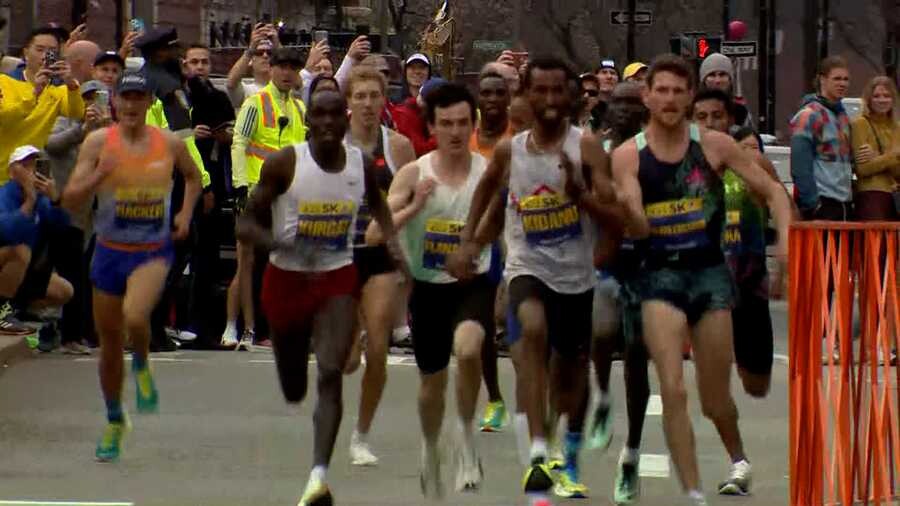
Leading the women’s field is USATF 5K National Champion and B.A.A. High Performance Team member Annie Rodenfels. Joining her are 2024 Team USA Olympic marathoner Dakotah Lindwurm, former American marathon record holder Keira D’Amato, perennial top-American Boston Marathoner Nell Rojas, as well as Team B.A.A. runners Abbey Wheeler, Bethany Hasz Jerde, and Megan Hasz Sailor.
Uganda’s Sarah Chelangat, the Cherry Blossom 10 Mile champion in 2023, and Mercy Chelangat, a former NCAA Cross Country and 10,000m winner, are both entered. Reigning B.A.A. Half Marathon champion Fotyen Tesfay of Ethiopia also comes back to Boston seeking another win.
In the wheelchair division, course record holder and six-time Boston Marathon champion Marcel Hug (Switzerland) will square off against Americans Daniel Romanchuk and Aaron Pike. Brazil’s Vanessa de Souza – the 2018 Boston 5K winner – is the women’s wheelchair division favorite. Perennial Para Athletics Division contenders El Amine Chentouf (T12, vision impairment), Brian Reynolds (T62, lower-limb impairment), and Marko Cheseto (T62, lower-limb impairment) will vie for prize money and podium placings. This will be the largest professional Para Athletics Division field in event history.
Nearly 10,000 participants will take part in the Boston 5K, serving as the first race of the 2024 B.A.A. Distance Medley series.
KRISSY GEAR LOOKS TO REPEAT IN B.A.A. INVITATIONAL MILE
Krissy Gear earned a hard-fought B.A.A. Invitational Mile win last year and now comes in with the target on her back as defending champion. Four of the top five finishers from 2024 return, including Susan Ejore (Kenya), Jazz Shukla (Canada) and Taryn Rawlings (USA). Micaela Degenero, the 2022 NCAA Indoor Mile champion, and 4:23.94 Helen Schlachtenhaufen are entered as well.
Massachusetts high school standout Ellie Shea will take on the professionals. The Belmont High School student-athlete finished 10th at last year’s B.A.A. Invitational Mile.
Massachusetts native and 3:52.94 miler Johnny Gregorek leads the men’s field of competitors. Melkeneh Azize of Ethiopia, the world junior champion at 3000m in 2022, and Harvard’s Vivien Henz, a national champion in Luxembourg, will each make their B.A.A. road racing debuts.
In addition to the professionals, student-athletes from each of the eight cities and towns that make up the Boston Marathon route will compete in a Scholastic Mile and Middle School 1K.
Login to leave a comment
B.A.A. 5K
The B.A.A. 5K began in 2009, and became an instant hit among runners from far and wide. Viewed by many as the “calm before the storm,” the Sunday of Marathon weekend traditionally was for shopping, loading up on carbohydrates at the pasta dinner, and most importantly- resting. But now, runners of shorter distances, and even a few marathoners looking for...
more...Men and women course records set at Tokyo Marathon
The Tokyo Marathon—the first World Marathon Major of 2024—took place Sunday morning in Japan. In near-perfect conditions, with a starting temperature of about 42 degrees, more than 37,000 runners took to the streets in Japan’s capital city. Course records fell, although several notable pre-race favorites fell short.
Benson Kipruto wins men’s race in a course record
It was a Kenyan sweep in the men’s race: Boston and Chicago Marathon champion Benson Kipruto, 32, of Kenya, won in 2:02:16, a course record by 24 seconds. Timothy Kiplagat, 30, placed second in a personal-best 2:02:55, while Vincent Kipkemoi Ngetich, 25, was third in 2:04:18.
Led by a trio of pacers, a pack of seven men blazed out at world record pace, traveling the first 5K in 14:16 (4:36 pace). By 15K, the pace had slowed, but only four men (and two pacers) remained: Kipruto, Kiplagat, and Ngetich, and Kenyan Eliud Kipchoge, 39, the two-time Olympic champion and former world record holder.
Unlike the men, the women started more conservatively, then picked up the pace. The lead pack covered the first 5K in 16:16, a 5:12 pace. Shankule led much of the race as competitors dropped off; the pack thinned to seven by 15K, four by 25K, and the top three by 30K as the pace ratcheted down (Shankule, Wanjiru,and Kebede covered 25K to 30K in 15:59, 5:09 pace).
Just before the 40K mark, Shankule fell back. Then, at the fluid stop just after the 40K mark, Kebede pulled ahead of Wanjiru, battling to the clock to better the 2:16:02 Brigid Kosgei ran here in 2021.
Sifan Hassan, 31, of the Netherlands, was fourth in 2:18:05—it was her third marathon, and her first loss. However, her time was still faster than the 2:18:33 she ran in her victorious London debut.
Saina shines after disappointment at Trials
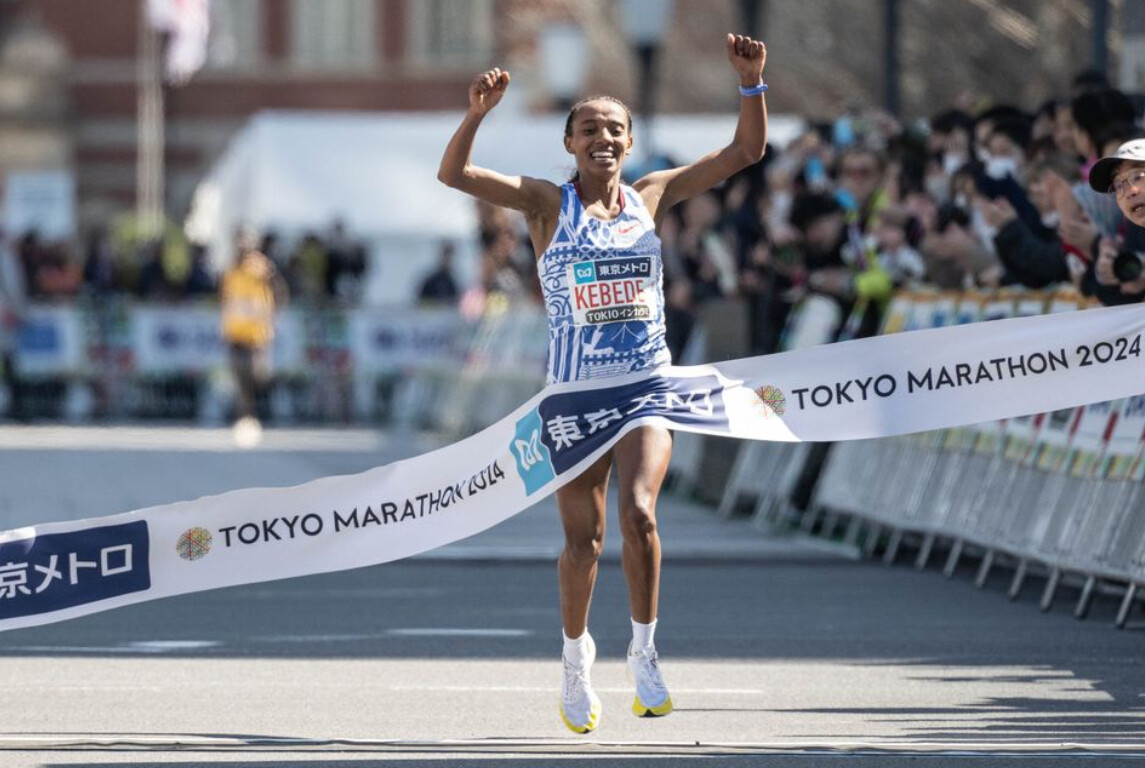
Four weeks ago, American marathoner Betsy Saina, 35, who had been a favorite to make the U.S. Olympic team, dropped out of the Olympic Marathon Trials in Orlando, Florida, after the 21-mile mark of the race. Even though Saina had been in contention for the third spot, she suddenly pulled off the course and flopped in the grass at the side of the road, a victim of the rising temperatures.
Saina quickly regrouped and was a late addition to the field for the Tokyo Marathon on March 3. In much cooler weather, Saina finished fifth in 2:19:17. It was a PR by 2:23, the third-fastest time by an American woman (behind Emily Sisson and Keira D’Amato), and some measure of redemption after the disappointment of the Trials. She averaged 5:18.7 per mile.
Benson Kipruto and Sutume Asefa Kebede both won in course records, and American Betsy Saina ran a big PR to take fifth.
by Runner’s World
Login to leave a comment
Tokyo Marathon
The Tokyo Marathon is a world-renowned annual marathon held in Tokyo, Japan. As one of the prestigious Abbott World Marathon Majors, it attracts elite and amateur runners from around the globe. The race holds World Athletics Platinum Label status, recognizing its high competitive standards, top-tier organization, and international appeal. Sponsored by Tokyo Metro, the Tokyo Marathon has grown into one...
more...Molly Seidel withdraws from Olympic Marathon Trials due to injury
Tokyo Olympic bronze medalist Molly Seidel announced she is withdrawing from Saturday’s U.S. marathon trials for the Paris Games due to a knee injury.
Seidel, 29, said in a video posted Thursday that she suffered a knee injury a month ago, couldn’t run on it and got an MRI that revealed a broken patella and a partially torn patella tendon.
“I have done everything in my power over this last month to try and get myself to the (starting) line,” she said. “I’ve had just the most incredible physios and doctors doing everything in their power to help me. I’ve been cross-training my (butt) off, but ultimately I got to this week, and my knee had not healed up enough, and I knew that I could not race a marathon hard on it in its current state without really, really injuring myself.”

The trials are Saturday at 10 a.m. ET from Orlando, airing live on Peacock with coverage on NBC, NBCSports.com and the NBC Sports app at noon.
Four years ago, Seidel placed second in the trials in her marathon debut to make the three-woman Olympic team.
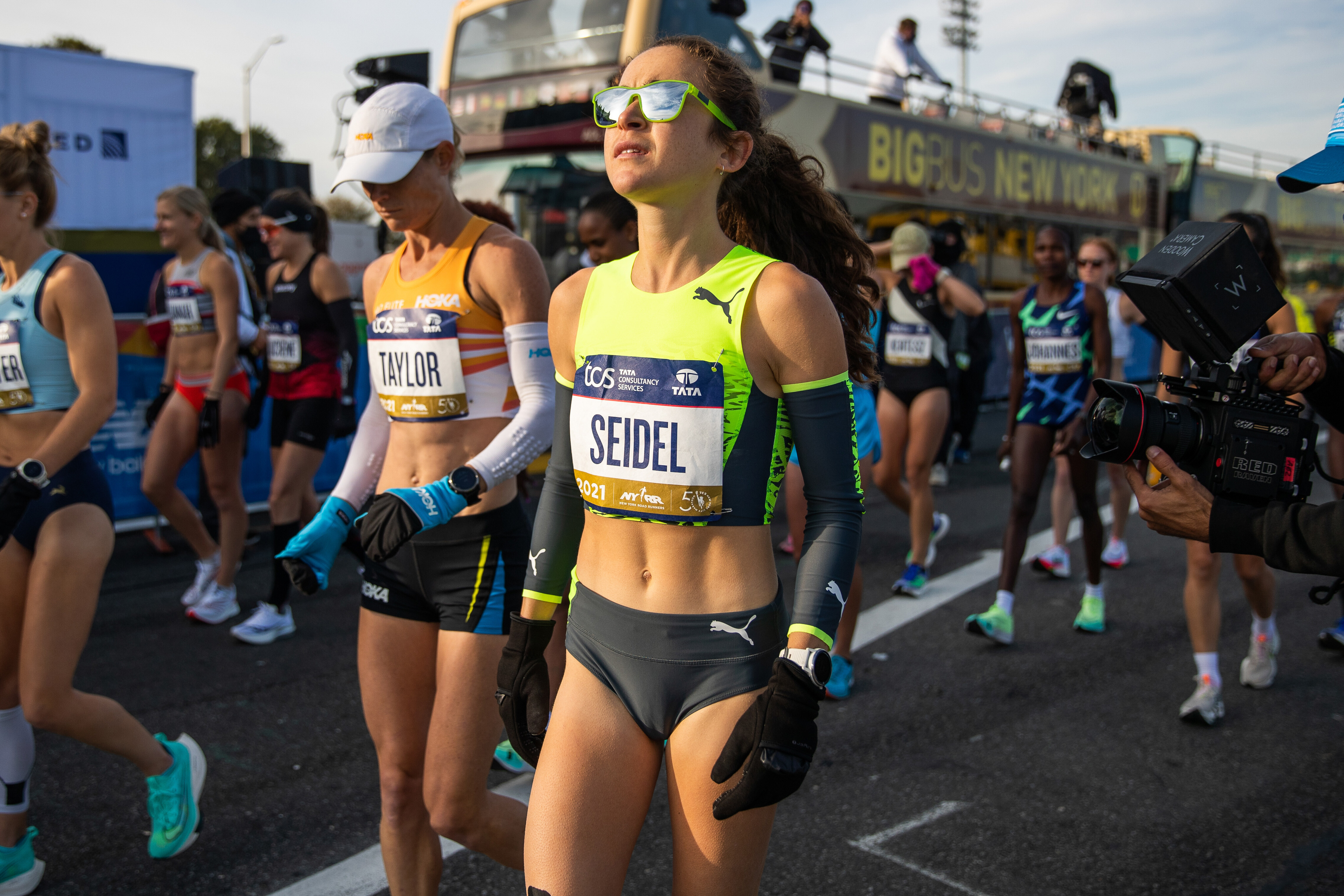
After the COVID-19 pandemic postponed the Tokyo Games by one year, Seidel finished third in the Olympic marathon held in Sapporo.
She became the third U.S. woman to win a marathon medal after Joan Benoit Samuelson, who won the first Olympic women’s marathon in 1984, and Deena Kastor, the 2004 bronze medalist.
After Tokyo, Seidel dealt with a hip injury and anemia, plus took time to focus on mental health after an eating disorder relapse.
Then last Oct. 8, Seidel finished a 26.2-mile race for the first time in two years. She was the second-fastest American woman at the Chicago Marathon, running a personal best and re-establishing herself as a prime candidate to make the Paris team of three at trials.
Seidel is the second contender to withdraw in the lead-up to trials.
Emma Bates, the third-fastest U.S. female marathoner of 2023, bowed out Jan. 7, saying then, “There’s just not enough time to be where I need to be.”
The field still includes three of the four fastest American women in history — American record holder Emily Sisson, former American record holder Keira D’Amato and Sara Hall, No. 4 on the all-time list.
Plus, former Iowa State teammates Betsy Saina (the fastest American in 2023) and Aliphine Tuliamuk (Tokyo Olympic Trials winner).
by Olympic Talk
Login to leave a comment
2028 US Olympic Trials Marathon
Most countries around the world use a selection committee to choose their Olympic Team Members, but not the USA. Prior to 1968, a series of races were used to select the USA Olympic Marathon team, but beginning in 1968 the format was changed to a single race on a single day with the top three finishers selected to be part...
more...For Betsy Saina, the U.S. Olympic Trials Marathon Presents a Chance to Represent Her Son
For much of last year, Betsy Saina had a plan. She would race the Chicago Marathon in October, eager to run alongside Emma Bates (who placed fifth at last year’s Boston Marathon in a new personal best of 2:22:10) in pursuit of breaking Emily Sisson’s American record of 2:18:29, set the previous year at that same race.
Saina, 35, a naturalized U.S. citizen who represented Kenya in the 2016 Olympics in Rio de Janeiro—she placed fifth in the 10,000 meters 30:07.78—had reason to be confident. Last spring, she set a new personal best of 2:21:40 with her fifth-place finish at the Tokyo Marathon, which wound up being the fastest marathon by an American woman in 2023 and made her the eighth-fastest U.S. female marathoner of all-time, solidifying her position as a top U.S. Olympic marathon team contender.
The Chicago Marathon had assured Saina’s agent, Tom Broadbent, that she was in for the race. But when the elite field was announced in August, Saina learned she had not been accepted, which not only threw a wrench in her fall training plans, but made for a lot of stress as she was planning her U.S. Olympic Marathon Team Trials buildup.
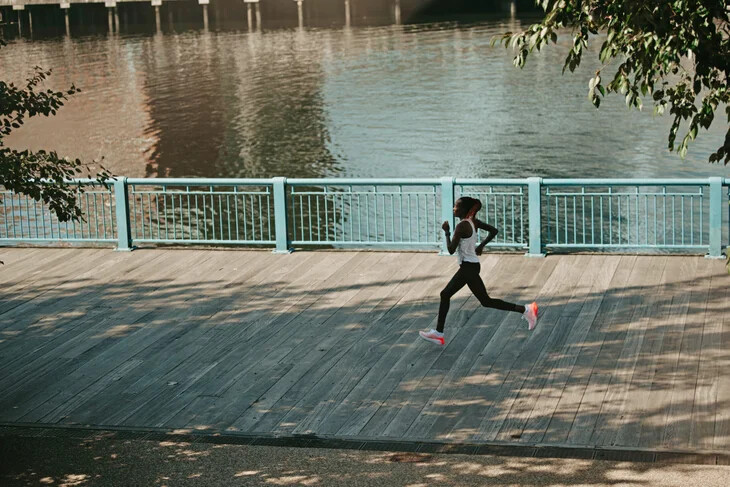
“I was shocked and spent three days looking at myself and trying to find any mistakes I made to not make the field, especially after running 2:21 in Tokyo,” Saina says. “I had never been rejected from a race before, and never got a response or an explanation as to why I didn’t make it. Being denied to run in Chicago honestly was one of the most disappointing things I’ve experienced in my career.”
Saina looked into entering the Berlin Marathon the following month, but had no such luck getting in with it being so late in the game. She was ultimately accepted into the Sydney Marathon (which shares its sponsor, ASICS, with Saina) on September 16. Unlike Chicago—with its fast, flat course that ended up having ideal racing conditions with temperatures in the 40s—Sydney has a hilly course and race-day weather was on the hotter side, with a starting temperature of 68 degrees.
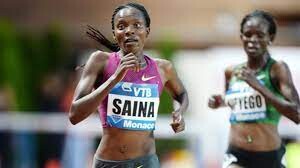
Despite the conditions, Saina proved herself once again, winning the race in 2:26:47. This sealed her confidence as she began to look ahead to the Olympic Trials in Orlando on February 3. If she’s one of the top three finishers in the women’s race in Florida, she’ll earn a spot on the U.S. team that will compete in the marathon at the Paris Olympics on August 11.
“Challenges make people strong, and running a good marathon on a harder course made me come back feeling motivated,” she says. “[Even though it wasn’t the faster time I originally wanted], it didn’t stop me from being a better version of myself.”
Transcendent Transplant
Despite her impressive performances in 2023, Saina has remained largely under the radar in terms of media coverage and fan predictions leading up to the Trials in Orlando, similarly to what fellow Kenyan-born marathoners Aliphine Tuliamuk and Sally Kipyego (both of whom made the last Olympic marathon team) experienced in 2020. The lack of attention relative to her competitors hasn’t fazed Saina, however.
“I know how to deal with pressure, having been in the sport since 2013, so as long as my training is going well, I don’t pay too much attention to what people say,” Saina says. “I’m just more excited to see many of the U.S. women [who are also] my friends, like Emily Sisson, Sara Hall, and Keira D’Amato, and to be racing so many amazing U.S. athletes for the first time.”
Saina’s result in Tokyo was only about a minute faster than her debut at the distance at the 2018 Paris Marathon, which she won in 2:22:56 (after dropping out of the 2017 Tokyo and New York City Marathons). It was also a confidence boost for Saina because it was also her first marathon since giving birth to her son, Kalya, now two, in December 2021, after previously running 2:22:43 and 2:31:51 at the 2019 Toronto Waterfront and Honolulu Marathons, respectively.
Saina—who originally came to the U.S. to attend Iowa State University where she trained alongside Tuliamuk and was a three-time individual NCAA champion and 11-time NCAA All-American—has remained in her hometown of Iten, Kenya, for the majority of the time since having her son, as her husband, Meshack Korir, is a doctor completing his postgraduate education there.
Although Saina became a U.S. citizen in late 2020 and has a home base in Colorado Springs, she made the decision to return to Kenya to have additional family support and childcare as she worked to come back from pregnancy and childbirth to prepare for the Olympic Trials, which she’ll return for just a few days before the race. Saina also keeps busy managing a couple of guesthouses, which she regularly rents out to visiting athletes and tourists. She also works with Cross World Africa, a nonprofit that sponsors underprivileged children in pursuing secondary and higher education.
“Before I came from Kenya, my family was struggling and we had to fundraise for my flight ticket to come to the U.S. Being here has changed my family in a different way—I have two sisters who are now nurses in the U.S., and my parents can now more easily fly to visit us, and while it is not where I began running, the U.S. where I began competing at such a high level,” she says. “My son also gives me so much motivation and is my inspiration. When I see him, I see beauty in myself and see myself getting better when I’m running. So I am excited both to compete and represent my son, and to hopefully wear the U.S. uniform because it has so much meaning for me.”
Back in Iten, Saina has been training in a group with personal pacemakers alongside 2019 New York City Marathon champion Joyciline Jepkosgei, which she describes as game-changing for her progress in the marathon. Both Saina and Jepkosgei, who is also the former world-record holder in the half marathon and Saina’s best friend from high school, are coached by Jepkosgei’s husband, Nicholas Koech.
“Sometimes you will train with people who don’t want to help someone else get better, but [Jepkosgei], who has run 1:04 [in the half marathon] and 2:17 [in the marathon] is unique in that she has sacrificed a lot, which I don’t think a lot of women will ever do for each other, and I don’t think I would either,” Saina says. “But she has been pushing me a lot since the first day I joined her, and I think that’s the reason I came back and I’ve had better races. I have someone to chase and it’s like competition in training, but in a good way.”
American Original
Saina returned to the U.S. twice last year, to race the USATF 25K Championships in Grand Rapids, Michigan, (where she took the win in 1:24:32 for her first U.S. title, narrowly beating D’Amato) and to be inducted into Iowa State’s Athletics Hall of Fame in September. Saina had planned to do some shorter U.S. races, including the Bolder Boulder 10K in May and the NYRR Mini 10K in June, following her national championship title in the 25K. However, she ultimately decided she couldn’t bear to be away from her son any longer.
“As a mom, when you’re away, you are so worried because you’re like, ‘How is he doing right now? How can I handle the pressure, being away from him?’” Saina says. “This year, it’s really different for me because the only race I want to travel to without Kalya is the Olympic Trials. He is growing now and getting better, so I want to travel with him afterward to compete in the USATF circuit. That’s the biggest goal for 2024, to travel with my son.”
Later this year, Saina hopes to also run the April 7 Cherry Blossom 10-Miler in Washington, D.C., the Mini 10K on June 8 in New York City, and a fast spring half marathon to pursue the current American record (which was broken yet again by Weini Kelati on January 14 in Houston), before running another marathon in the fall. In the meantime, she noted that she is especially eager to compete in one of the deepest fields ever assembled for the Trials.
Although Bates withdrew from the Trials, Saina figures to be one of the favorites in Orlando along with Sisson, Hall, Tuliamuk, D’Amato, and Seidel. However, Lindsay Flanagan (ninth in last summer’s world championships), Sara Vaughn, Susanna Sullivan, Gabriella Rooker, Dakotah Lindwurm, and Nell Rojas are all sub-2:25 marathoners, and thus top contenders, too.
“The U.S. is no longer small and non-competitive. Look at Molly Seidel. She got bronze at the Tokyo Olympics, and I remember when Amy [Cragg] was a bronze medalist at the 2017 World Championships. If you put that in perspective, it has changed even more right now compared to that time,” she says. “The competition [to make the U.S. team] is no longer as easy as the way some people [thought], and I’m super excited to be competing with a lot of solid women. There is no difference between the U.S. and other countries right now—it’s not just to go compete at the Olympics; they’re going to compete for the medals, just like other countries.”
by Emilia Benton
Login to leave a comment
2028 US Olympic Trials Marathon
Most countries around the world use a selection committee to choose their Olympic Team Members, but not the USA. Prior to 1968, a series of races were used to select the USA Olympic Marathon team, but beginning in 1968 the format was changed to a single race on a single day with the top three finishers selected to be part...
more...Ethiopians Jemal Yimer (60:42) and Sutume Kebede (64:37) won the overall titles in Houston Half
In what is becoming an annual tradition, Weini Kelati ran 66:25 on Sunday to break the American record at the 2024 Aramco Houston Half Marathon. It was the third straight year the record was broken in Houston as the 27-year-old Kelati, making her half marathon debut, followed in the footsteps of Sara Hall (67:15 in 2022) and Emily Sisson (66:52 in 2023) to become a record-breaker in Houston. Sunday marked the third time the record had been broken in the past year as Keira D’Amatolowered Sisson’s record to 66:39 at the Asics Half Marathon in Australia in July.
Kelati finished 4th overall as Ethiopia’s Sutume Kebede, a late addition to the women’s field, upset Hellen Obiri to win in 64:37, a US all-comers record that moves her into a tie for 9th on the all-time list. The time was a pb of more than three minutes for Kebede, who was previously best known for finishing 3rd at the 2020 Tokyo Marathon and running 2:18:12 at the 2022 Seoul Marathon. Obiri, who was with Kebede through 10k (30:28) faded over the second half and wound up a distant 2nd in 66:07.
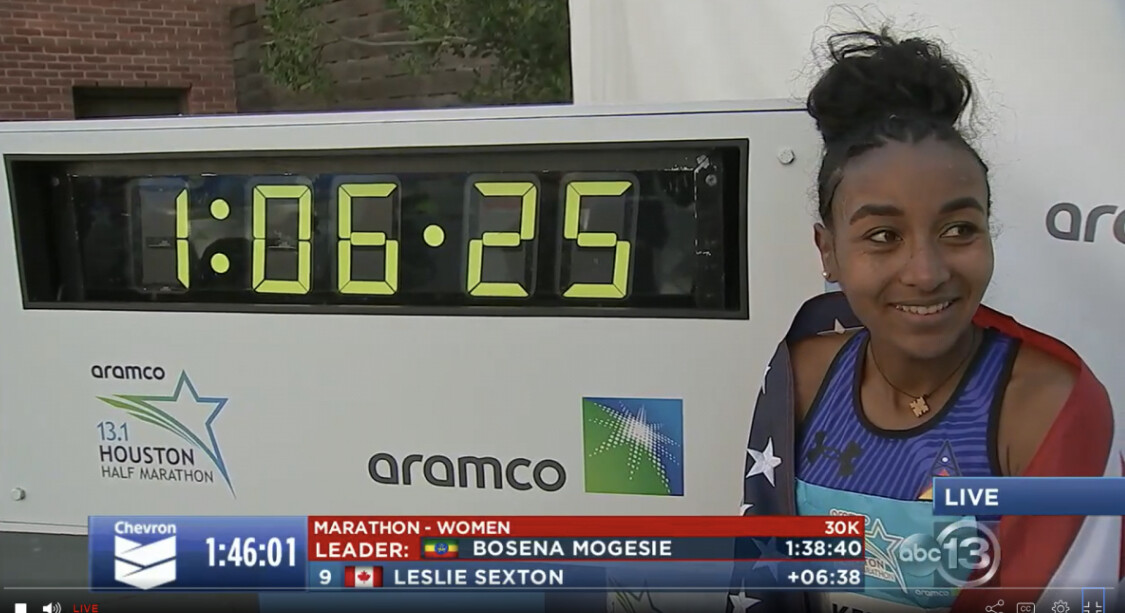
The men’s race came down to a five-man sprint finish with Ethiopia’s Jemal Yimer, who won in Houston in 2020 and was 4th at the World Half Marathon Championships in October, prevailing in 60:42. Wesley Kiptoo of NAZ Elite and Kenya was 2nd for the second straight year in 60:43 with 2022 champ Milkesa Mengeshaof Ethiopia 3rd in 60:45.
Biya Simbassa was the top American man in 60:45 in 4th, just ahead of a resurgent Diego Estrada, who led for the first 20 minutes and finished 5th in a pb of 60:49. Galen Rupp, tuning up for the Olympic Marathon Trials three weeks from now, hung back from the leaders and finished 14th in 62:37.
In the Chevron Houston Marathon, contested simultaneously, former NAIA star Zouhair Talbi of Morocco won the men’s race in 2:06:39 to boost his chances of Olympic selection. 2016 NCAA XC champion Patrick Tiernan, now training as part of Alistair and Amy Cragg’s Puma Elite Running team in North Carolina, was 4th in 2:07:45, hitting the Olympic standard and moving to #2 on the all-time Australian marathon list.
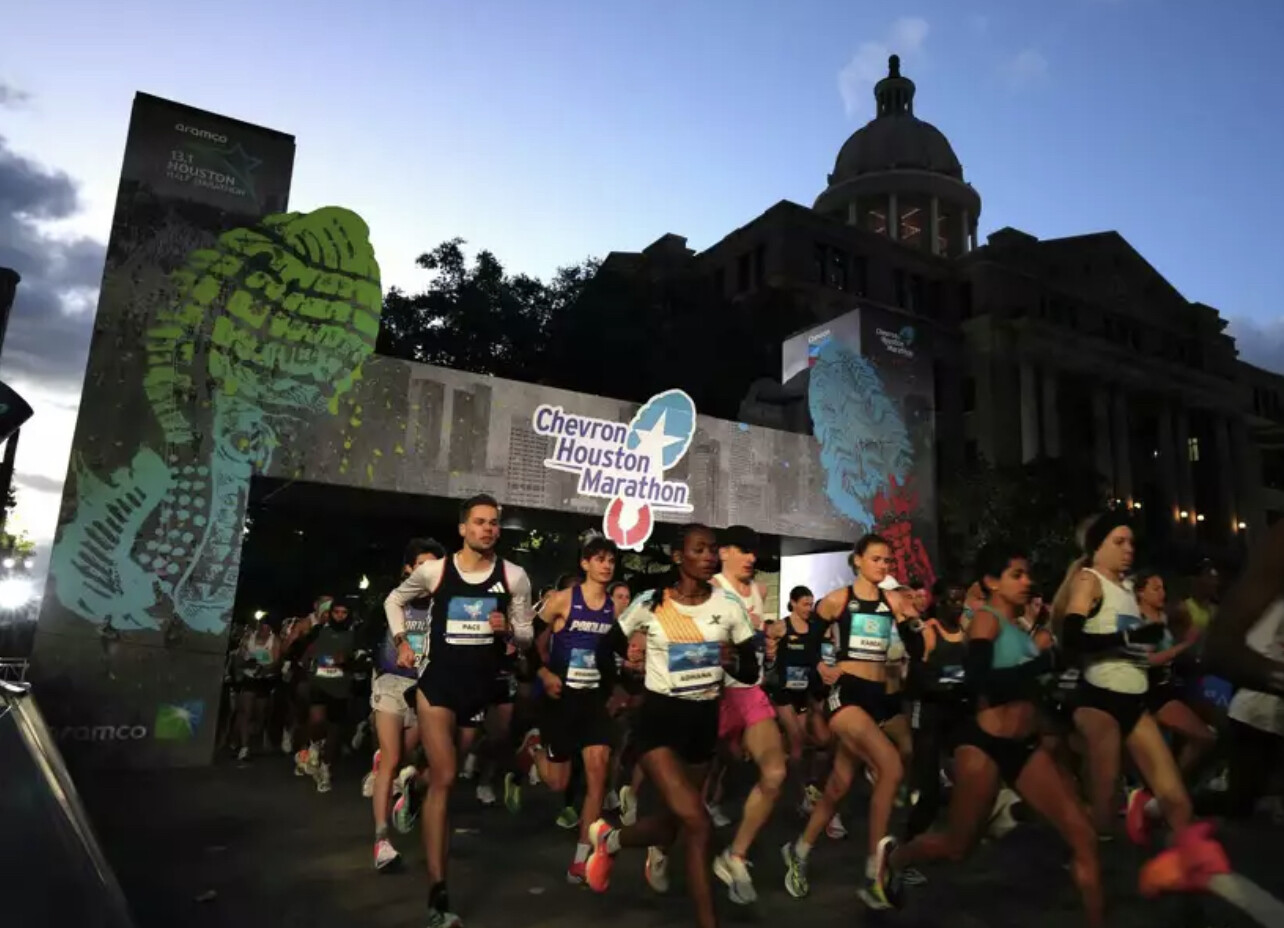
Ethiopia’s Rahma Tusa, the runner-up behind American Betsy Saina in September’s Sydney Marathon, won the women’s marathon in Houston in 2:19:33.
The races featured temperatures in the low 40s with 10 mph winds and gusts up to 17 mph, which made for a challenging end to the half marathon as miles 9, 10, and 11 were run directly into the teeth of the wind.
Below, six takeaways from the day’s racing in Houston.
2024 Houston Half Marathon men’s top 51. 60:42 Jemal Yimer, Ethiopia2. 60:43 Wesley Kiptoo, Kenya3. 60:45 Milkesa Mengesha, Ethiopia4. 60:45 Biya Simbassa, USA5. 60:49 Diego Estrada, USA14. 62:37 Galen Rupp, USA
2024 Houston Half Marathon women’s top 51. 64:37 Sutume Kebede, Ethiopia2. 66:07 Hellen Obiri, Kenya3. 66:24 Buze Diriba, Ethiopia4. 66:25 AR Weini Kelati, USA5. 67:36 Mestawut Fikir, Ethiopia
by Jonathan Gault (Let’s Run)
Login to leave a comment
Aramco Houston Half Marathon
The Chevron Houston Marathon provides runners with a one-of-a-kind experience in the vibrant and dynamic setting of America's fourth-largest city. Renowned for its fast, flat, and scenic single-loop course, the race has earned accolades as the "fastest winter marathon" and the "second fastest marathon overall," according to the Ultimate Guide to Marathons. It’s a perfect opportunity for both elite athletes...
more...Emma Bates Withdraws from Olympic Marathon Trials 2024
Emma Bates was widely considered a top contender to make the U.S. Olympic team in the marathon this year. But over the weekend, she announced she won’t be lining up at the Olympic Marathon Trials in Orlando, Florida, on February 3.
Bates, 31, tore her plantar fascia during October’s Chicago Marathon. On December 12, she posted that she had been healing well and was back to running on the ground for an hour at a time when she developed another injury, posterior tibial tendonitis.
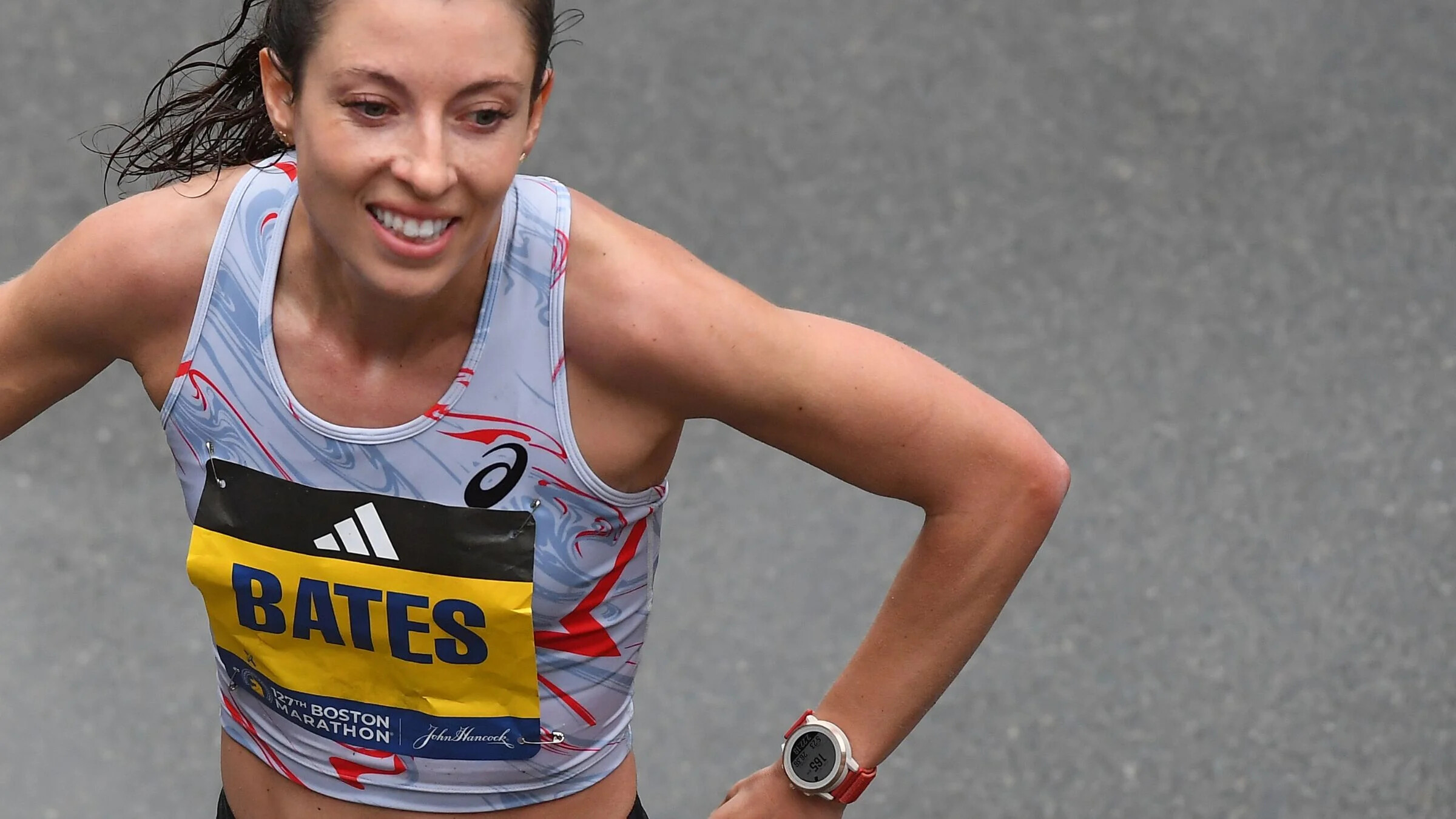
And in a tearful Instagram video posted Saturday night, Bates said that while she had returned to workouts with her Boulder-based training group, Team Boss, “we just know that there’s not enough time to be where I need to be.”
Bates’ personal best of 2:22:10 at the 2023 Boston Marathon, where she placed fifth, was the third-fastest time by an American last year.
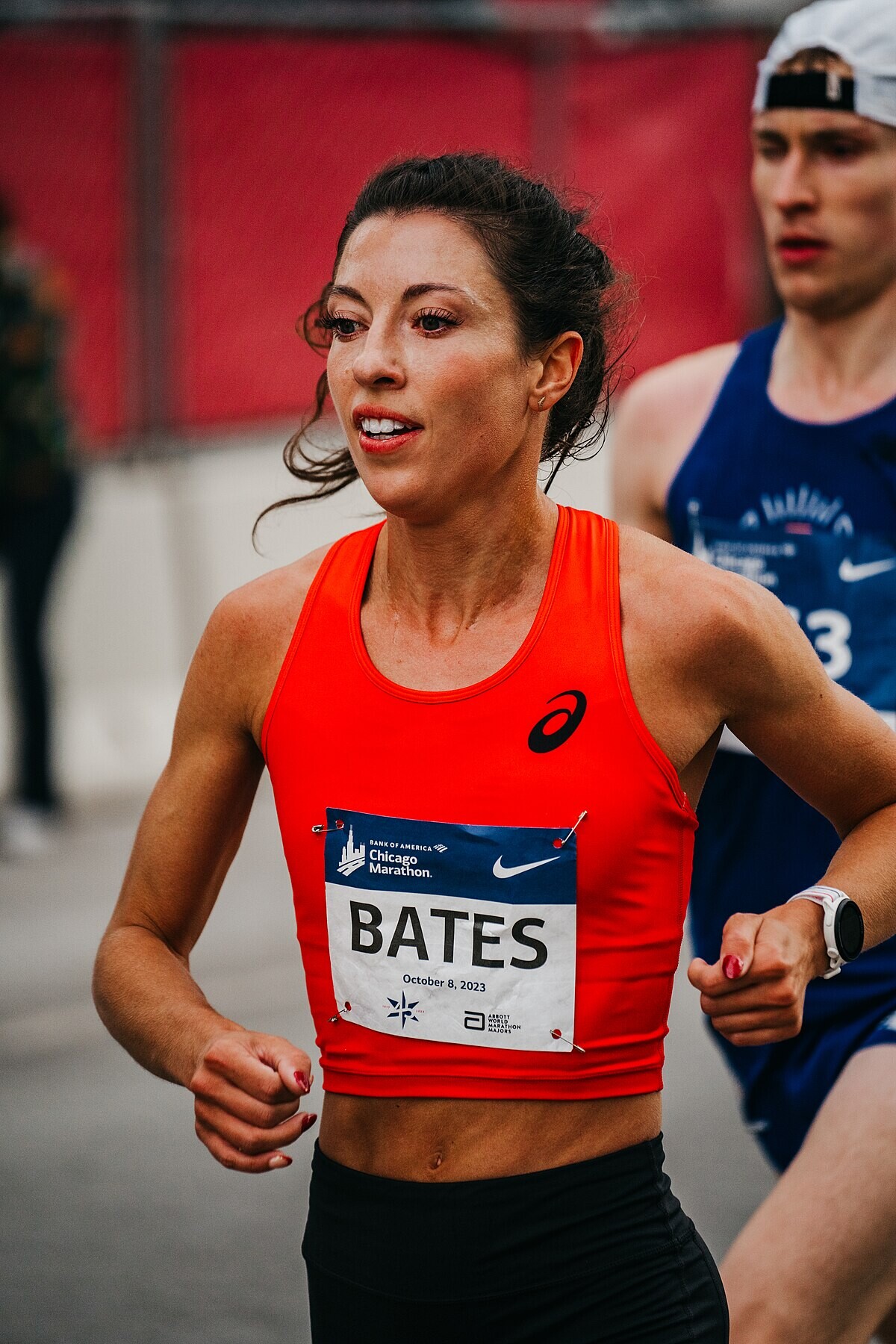
She headed into Chicago in the fall with high hopes—saying she was in shape to run 2:18 to 2:19 pace—but stepped in a pothole around mile 14. She finished 13th in 2:25:04 and left the finish line in a wheelchair. A week after the race, an MRI revealed a torn plantar fascia.
She put on a boot and began cross-training on the bike, knowing the buildup to the Trials wouldn’t be easy. With the new setback last month, she and coach Joe Bosshard decided it simply wouldn’t be possible.
Bates, a 2014 NCAA champion in the 10,000 meters at Boise State University, won her marathon debut and the USATF Marathon Championships with a 2:28:18 at the 2018 California International Marathon and has steadily improved since. In her second marathon, the 2019 Chicago Marathon, she finished fourth in 2:25:27.
Those performances made her a contender for the 2020 Olympic Marathon Trials, where she ran 2:29:35 to place seventh. But her next big breakthrough was around the corner. On a hot, humid day at the 2021 Chicago Marathon, she ran a personal-best 2:24:20 to place second.
And in 2022, she was part of a trio of Americans who produced top-10 finishes at the World Athletics Championships in Eugene, Oregon—she was seventh in 2:23:18, between Sara Hall (fifth in 2:22:10) and Keira D’Amato (eighth in 2:23:34).
Bates was clearly disappointed not to line up with the likes of Hall and D’Amato again in Orlando; “this one hurts a lot,” she wrote.
“It’s another four years to wait for another Olympic team,” she said in the accompanying video. “I’ll be OK. I’ll be OK.”
by Cindy Kuzma
Login to leave a comment
2028 US Olympic Trials Marathon
Most countries around the world use a selection committee to choose their Olympic Team Members, but not the USA. Prior to 1968, a series of races were used to select the USA Olympic Marathon team, but beginning in 1968 the format was changed to a single race on a single day with the top three finishers selected to be part...
more...Ethiopians sweep women's B.A.A. Half Marathon, Kenyan wins men's race
The 2023 B.A.A. Half Marathon presented by Dana-Farber Cancer Institute and the Jimmy Fund took place today, November 12, starting and finishing within Boston’s Franklin Park. Personal bests and fast times were achieved on a chilly fall day. Preliminary results can be found here.
In the professional open divisions, Fotyen Tesfay (Ethiopia) and Abel Kipchumba(Kenya) took home the women’s and men’s titles respectively, while Jenna Fesemyer and Hermin Garic, both of the USA, captured the wheelchair division victories. American Paralympian Liz Willisset a world record in the T61-64 division (lower limb impairment) in a time of 1:45:19. Among today’s finishers were more than 600 athletes representing the Dana-Farber Cancer Institute and Jimmy Fund, raising more than $700,000 to defy cancer.
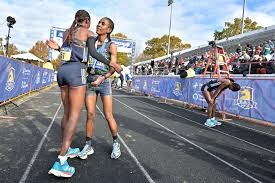
Warming up through the early miles, Tesfay and a sizeable lead pack passed 5 miles in 27:10 and 10 miles in 53:17. The race began to intensify as Tesfay, American record holder Keira D’Amato, B.A.A. 5K champion Senbere Teferi, and World Cross Country Championships silver medalist Tsigie Gebreselama covered the hilly course along Boston’s Emerald Necklace Park System.
While it was a pack with 5K to go, Tesfay was all alone entering White Stadium, breaking the tape in 1:08:46. In her Boston debut, Tesfay not only conquered the competition but also the cold temperatures.
“The pack was so big, but I managed to move ahead of them as I got close to the finish to take the win,” said Tesfay. “This is my first time running a half marathon in Boston and the coldest race I have ever run, so I am very happy to win.”
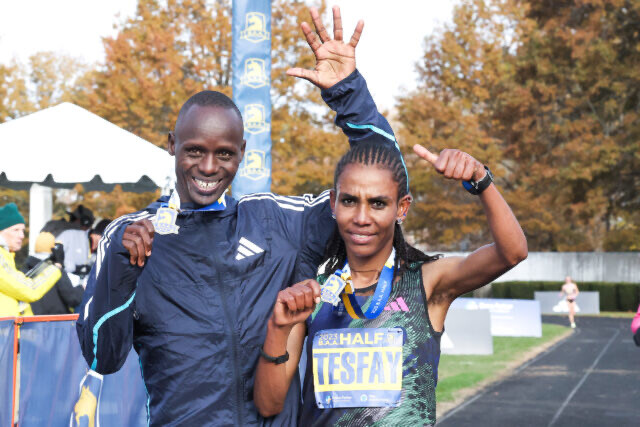
Teferi (ETH) and Gebreselama (ETH) rounded out the podium in 1:09:00 and 1:09:06, followed by D’Amato as the top American in 1:09:12.
In the men’s race, Kipchumba was determined to improve upon a ninth place finish a year ago. Running with Australian Olympian Pat Tiernan and defending champion Geoffrey Koech (Kenya) through five miles, Kipchumba began to break away little by little. At six miles it was a seven second lead, then at 10 miles the gap stood 30 seconds.
Kipchumba’s broke the tape all smiles in 1:01:32 with a hard-charging Tiernan second (1:01:56) and Yemane Haileselassie third in 1:02:17. Sam Chelanga, who won a silver medal in the 10,000m at the Pan Am Games on the track last week, was top American, seventh in 1:02:49.
“Today was difficult because it was very cold. And as we know, Boston has a lot of hills. But I managed to win the race, so I am happy,” said Kipchumba. “I like the crowds. They cheered me and I got a lot of energy to push the pace.”
Login to leave a comment
B.A.A. Half Marathon
Dana-Farber and the Jimmy Fund have partnered with the B.A.A. in the Half Marathon for 13 years as the race’s presenting sponsor. Through this relationship, team members have collectively raised more than $5 million to support groundbreaking cancer research, and enabled Dana-Farber scientists and clinicians to positively impact the lives of cancer patients around the world. Dana-Farber runners often participate...
more...Olympians and national champions to headline stacked professional athlete field at 2023 USATF 5K Championships
Weini Kelati, Courtney Frerichs, Keira D’Amato, Woody Kincaid, and Zach Panning to race for world’s largest 5K prize purse; Nearly 10,000 runners to follow in footsteps of pros by racing Abbott Dash to the Finish Line 5K.
Five Olympians, one Paralympian, and four athletes who competed at this year’s World Athletics Championships will race in the 2023 USA Track & Field (USATF) 5K Championships at the Abbott Dash to the Finish Line 5K on Saturday, November 4. The event will take place in Midtown Manhattan the day prior to the TCS New York City Marathon and will be broadcast live on USATF.TV. Abbott will return as the title partner of the event which features a $79,500 prize purse – the largest of any 5K race in the world.
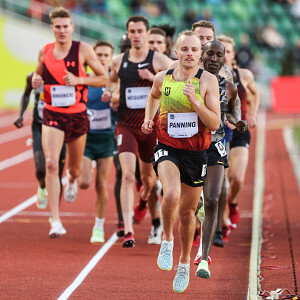
In the women’s race, two-time NCAA champion Weini Kelati will return in search of her third consecutive title in the event. Each of the last two years she has smashed the event record, taking the tape in 15:18 in 2021 and 15:15 in 2022. She will be challenged for the top spot on the podium this year by three-time national champion Keira D’Amato, 2023 U.S. cross-country champion Ednah Kurgat, and U.S. Olympians Abbey Cooper, Courtney Frerichs, Colleen Quigley, and Rachel Smith.
“Doing the Abbott Dash 5K is becoming a little bit of a early season tradition for me,” Kelati said. “Although my fall season looked a little bit different this year because of the opportunity I had to represent Team USA at the World Road Running Championships in Latvia, I’m really happy I get to come back to New York to try for my third straight 5K national title.”
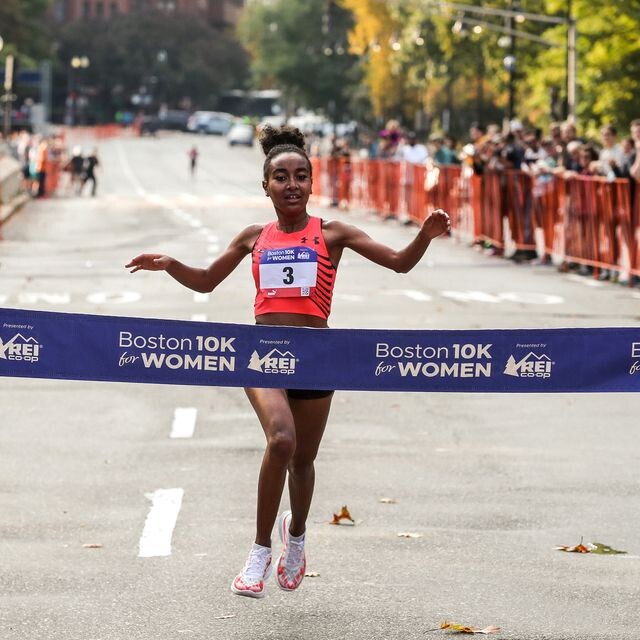
Woody Kincaid, the U.S. 10,000-meter champion and American record-holder in the indoor 5,000 meters, will lead the men’s field. Lining up against him will be Olympic champion Matthew Centrowitz, the top American finisher at the World Athletics Championships marathon this year Zach Panning, 2023 B.A.A. 5K champion Morgan Beadlescomb, and last year’s fourth through sixth-place finishers in New York, Ahmed Muhumed, Alec Basten, and Brian Barraza.
“I still see my career being mostly on the track for the next few years, but I like the idea of throwing in some more road races when it makes sense,” Kincaid said. “As I look towards the Paris Games, the Abbott Dash will be a nice jump-start to my 2024 training, and it will be cool to be in the middle of the big city marathon hoopla without having to go the full 26.2.”
Following in the footsteps of the professional athletes, nearly 10,000 runners will participate in the Abbott Dash to the Finish Line 5K, including top local athletes and many runners in the marathon on November 5.
Abbott, the title sponsor of the Abbott World Marathon Majors, is the sponsor of the Abbott Dash to the Finish Line 5K for the seventh time. Abbott, a global healthcare leader, helps people live more fully with life-changing technology and celebrate what’s possible with good health.
The Abbott Dash to the Finish Line 5K annually provides TCS New York City Marathon supporters, friends, and families the opportunity to join in on the thrill of marathon race week. The course begins on Manhattan’s east side by the United Nations, then takes runners along 42nd Street past historic Grand Central Terminal and up the world-famous Avenue of the Americas past Radio City Music Hall. It then passes through the rolling hills of Central Park before finishing at the iconic TCS New York City Marathon finish line.
The Abbott Dash to the Finish Line 5K and USATF 5K Championships will be broadcast live via USATF.TV. The broadcast is scheduled to begin at 8:20 a.m. ET with the first race starting at 8:30 a.m. ET.
About New York Road Runners (NYRR)
NYRR’s mission is to help and inspire people through running. Since 1958, New York Road Runners has grown from a local running club to the world’s premier community running organization. NYRR’s commitment to New York City’s five boroughs features races, virtual races, community events, free youth running initiatives and school programs, the NYRR RUNCENTER featuring the New Balance Run Hub, and training resources that provide hundreds of thousands of people each year with the motivation, know-how, and opportunity to Run for Life. NYRR’s premier event is the TCS New York City Marathon. Held annually on the first Sunday in November, the race features a wide population of runners, from the world’s top professional athletes to a vast range of competitive, recreational, and charity runners. To learn more, visit www.nyrr.org.
by Running USA
Login to leave a comment
Dash to the Finish Line
Be a part of the world-famous TCS New York City Marathon excitement, run through the streets of Manhattan, and finish at the famed Marathon finish line in Central Park—without running 26.2 miles! On TCS New York City Marathon Saturday, our NYRR Dash to the Finish Line 5K (3.1 miles) will take place for all runners who want to join in...
more...Defending Champions, American Record Holders & Global Stars Highlight 2023 B.A.A. Half Marathon Professional Field
The Boston Athletic Association (B.A.A.) announced today a star-studded professional field for the 2023 B.A.A. Half Marathon presented by Dana-Farber Cancer Institute and the Jimmy Fund. Defending champions Viola Chepngeno, Geoffrey Koech, and Jenna Fesemyer all return, while American half marathon record holder Keira D’Amato will take on the challenging course for the first time on Sunday, November 12. The B.A.A. Half Marathon starts and finishes at Franklin Park and runs along the Emerald Necklace Park System.
“As one of the most competitive half marathons in the country, we’re eager to bring many of the best open, wheelchair, and Para athletes in the world to Boston for November’s B.A.A. Half Marathon presented by Dana-Farber Cancer Institute and the Jimmy Fund,” said Jack Fleming, President and CEO of the B.A.A. “Nearly 9,000 athletes will take to the roads, led by some of the fastest and most decorated competitors in event history.”
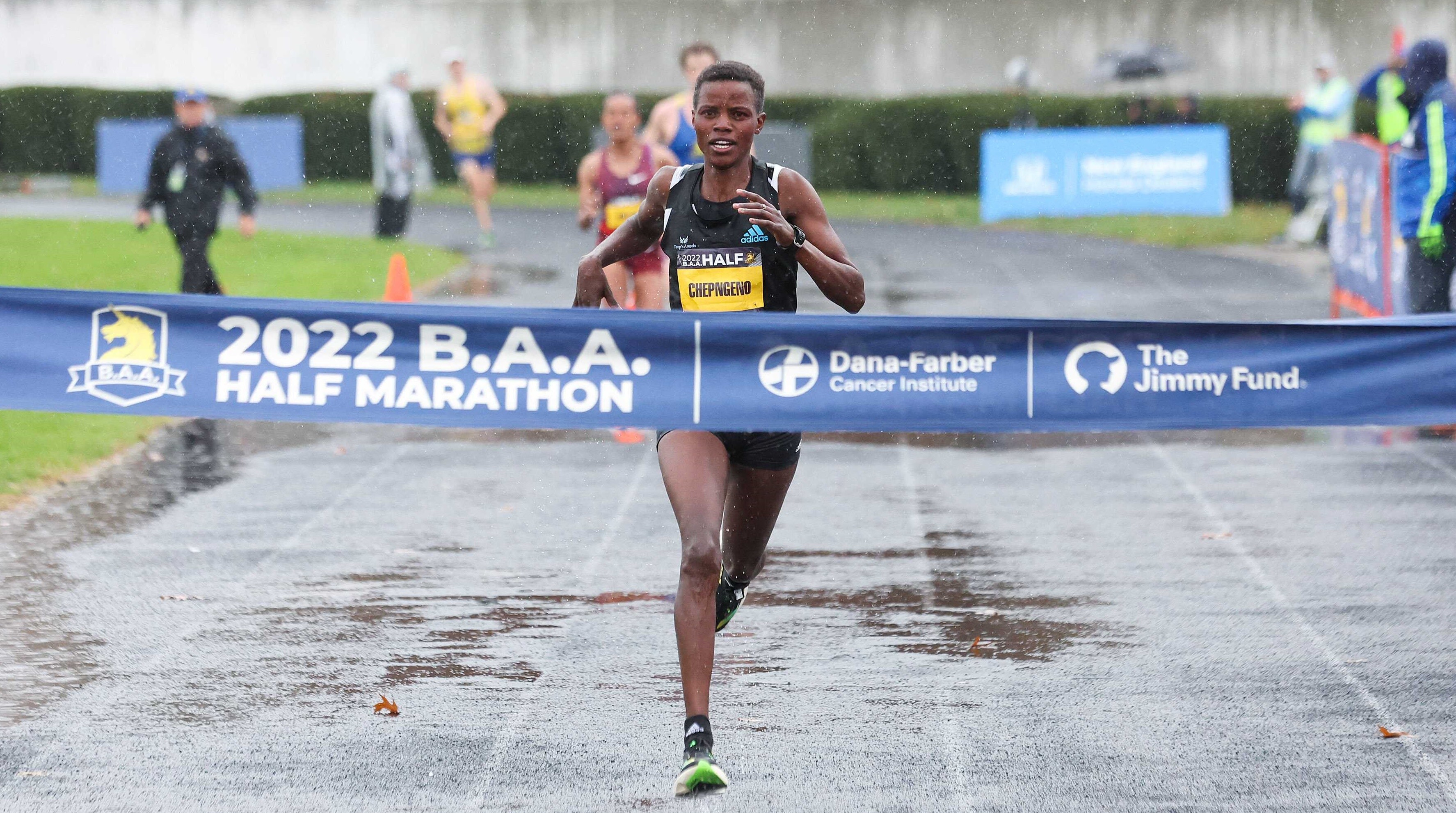
In 2022, Chepngeno (Kenya), Koech (Kenya), and Fesemyer (USA) won the women’s open, men’s open, and women’s wheelchair divisions, respectively, while Marko Cheseto and Jacky Hunt-Broersma (both USA) persevered through rain to finish atop the podium in the Para Athletics Division. To repeat the feat, all will square off against a field that includes national record holders and global medalists.
Senbere Teferi of Ethiopia, the 2022 B.A.A. 5K champion and three-time world championships medalist, looks to continue her winning ways in Boston. She’ll battle Tokyo Marathon champion Rosemary Wanjiru, 2019 B.A.A. 10K winner Fancy Chamutai, world cross country silver medalist Tsigie Gebreselama, last year’s runner-up Bosena Mulatie, and two-time B.A.A. Half Marathon second place finisher Cynthia Limo.
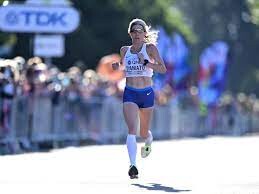
Four Americans who competed at the World Athletics Championships in Budapest in August will toe the line, including D’Amato, Lindsay Flanagan, Susanna Sullivan, and Natosha Rodgers. D’Amato set the national half marathon record of 1:06:39 at this year’s Gold Coast Half Marathon in Australia, and along with Flanagan and Sullivan made up Team USA at the World Championships Marathon. Rodgers raced the 5,000m and 10,000m on the track in Budapest, finishing 14th in the latter event. Rachel Schneider Smith, a 2021 Olympian at 5,000m for Team USA, will be making her B.A.A. Half Marathon debut.
Ten men with sub-61 minute personal bests will line up for the B.A.A. Half Marathon. Abel Kipchumba owns the fastest lifetime best in the field (58:07), while Shadrack Kimining of Kenya, second fastest in the field, placed fifth in 2022. Mohamed El Aaraby (Morocco), Yemane Haileselassie (Eritrea), Pat Tiernan (Australia), and Amanuel Mesel (Eritrea) bring international expertise. The fastest American men’s entrants are Nadir Yusuf (1:03:23), Kevin Koski (1:03:35) and Ryan Cutter (1:03:54) and sub-2:10 marathoner Ian Butler.
Dedham, Mass.-native Brian Reynolds, who set a world record at last year’s B.A.A. Half Marathon in the T62 (lower-limb impairment) category, returns, as does Marko Cheseto (T62) who ran 1:24:54 in 2022. Jacky Hunt-Broersma, last year’s women’s T62 champion, and Liz Willis, a three-time Boston Marathon T62 winner, will compete as well.
In the wheelchair division, Fesemyer set a course record 59:50 in 2022 to become the first women’s wheelchair athlete ever to break one hour in race history. Fellow 2022 women’s wheelchair podium finishers Yen Hoang (second place) and Michelle Wheeler (third) return as well.
James Senbeta and Hermin Garic, veterans of many B.A.A. events, headline the men’s wheelchair field. Garic was victorious at this year’s B.A.A. 10K.
The B.A.A. Half Marathon course runs along the picturesque Emerald Necklace Park System, past landmarks such as the Arnold Arboretum, Jamaica Pond, and Franklin Park Zoo, before finishing at White Stadium in Franklin Park. The B.A.A. Half Marathon is a family-friendly event for athletes and spectators of all ages. Free youth events will be offered on race morning within Franklin Park, including races and medals for all.
Dana-Farber Cancer Institute and the Jimmy Fund has partnered with the B.A.A. Half Marathon since 2003 as the race’s presenting sponsor and exclusive charity team. Through this relationship, Dana-Farber runners have collectively raised more than $8 million to support groundbreaking cancer research, and enabled Dana-Farber scientists and clinicians to positively impact the lives of cancer patients around the world. In advance of the 2023 event, 640 Team Dana-Farber athletes have raised $375,000 to date.
Login to leave a comment
B.A.A. Half Marathon
Dana-Farber and the Jimmy Fund have partnered with the B.A.A. in the Half Marathon for 13 years as the race’s presenting sponsor. Through this relationship, team members have collectively raised more than $5 million to support groundbreaking cancer research, and enabled Dana-Farber scientists and clinicians to positively impact the lives of cancer patients around the world. Dana-Farber runners often participate...
more...Molly Seidel Stunned the World (and Herself) with Olympic Bronze in Tokyo. Then Life Went Sideways.
She stunned the world (and herself) with Olympic bronze in Tokyo. Then life went sideways. How America’s unexpected marathon phenom is getting her body—and brain—back on track.
On a clear December night in 2019, Molly Seidel was at a rooftop holiday party in Boston, wearing a black velvet dress, doing what a lot of 25-year-olds do: passing a joint between friends, wondering what she was doing with her life.

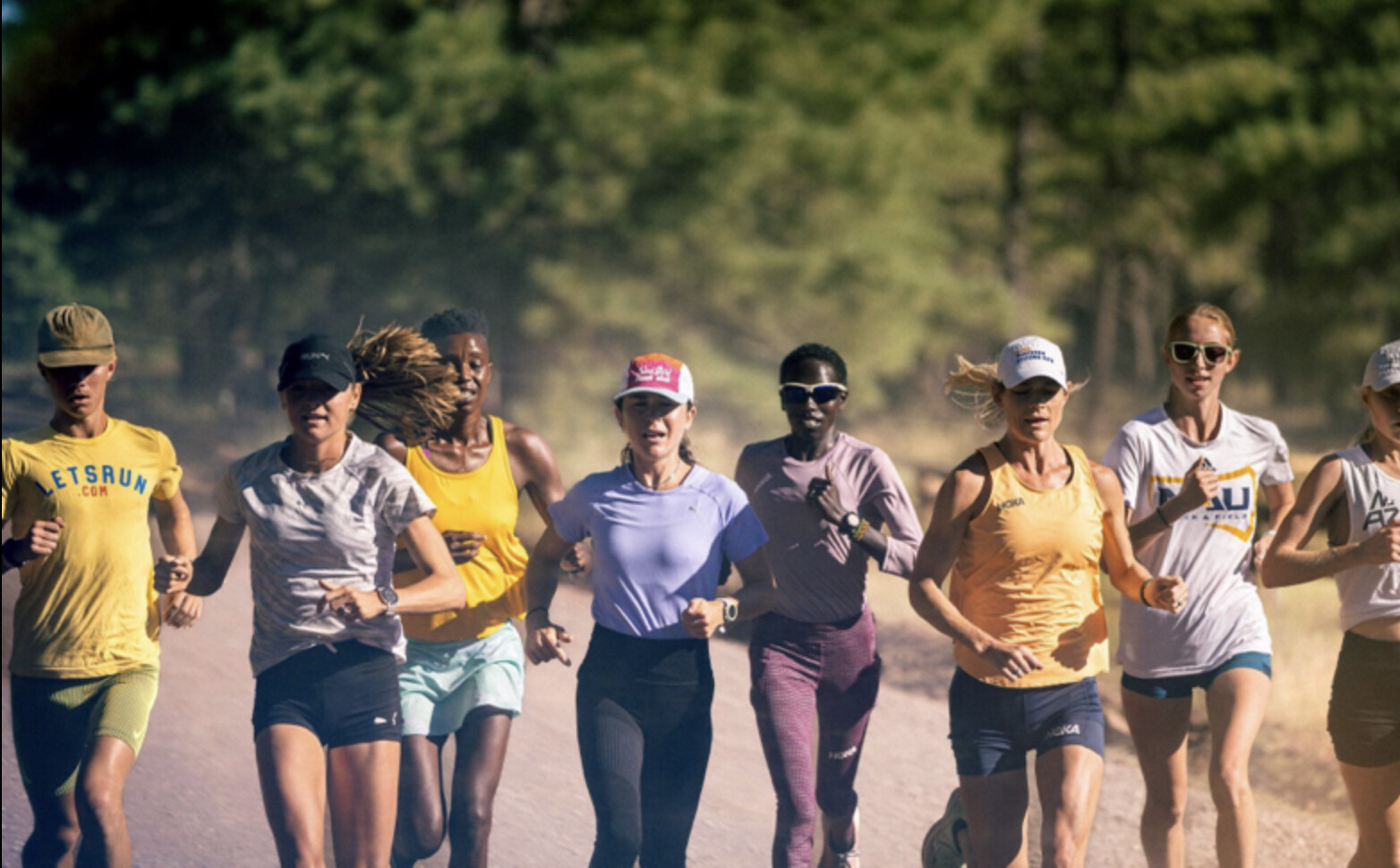
“You should run the Olympic Trials,” her sister, Izzy, said, as smoke swirled in the chilly air atop The Trackhouse, a retail shop and community hub on Newbury Street operated by the running brand Tracksmith. “That would be hilarious if you did that as your first marathon.”
Molly, an elite 10K racer who’d spent much of 2019 injured, looked out at the city lights, and laughed. Why the hell not? She’d just qualified for the trials, winning the San Antonio Half with a time of 1:10:27. (“The shock of the century,” as she’d put it.) True, 13.1 miles wasn’t 26.2—but running a marathon was something to do. If only because she never had before.
A four-time NCAA track and cross-country champion at The University of Notre Dame in Indiana, Molly had moved to Boston in 2017, where she’d worked three jobs to supplement her fourth: running for Saucony’s Freedom Track Club. The $34,000 a year that Saucony paid her (pre-tax, sans medical) didn’t go far in one of America’s most expensive cities. Chasing kids around as a babysitter, driving around as an Instacart shopper, and standing around eight hours a day as a barista—when you’re running 20 miles a day—wasn’t ideal. But whatever, she had compression socks. And she was downing free coffee and paying rent, flying to Flagstaff, Arizona, every so often for altitude camps, and having a good time. Doing what she loved. The only thing she’s ever wanted to do since she was a freckly fifth-grader in small-town Wisconsin clocking a six-minute mile in gym class.
“I was hustling, and I loved it. It was such a fun, cool time of my life,” she says, summarizing her 20s. Staring into Molly’s steely brown eyes, listening to her speak with such clarity and conviction about her struggles since, it’s easy to forget: She is still only 29.
After Molly had hip surgery on her birthday in July 2018, her doctors gave her a 50/50 chance of running professionally again. By summer 2019, she’d parted ways with FTC, which left her sobbing on the banks of the Charles River, getting eaten alive by mosquitoes and uncertainty. Her biggest achievement lately had been being named #2 Top Instacart Shopper (in Flagstaff; Boston was big-time).
The day after that rooftop party, Molly asked her friend and former FTC teammate Jon Green, who she’d newly anointed as her coach: “Think I should run the marathon trials?” Sure, he shrugged. Nothing to lose. Maybe it’d help her train for the 10K, her best shot—they both thought—at making a U.S. Olympic team.
“I’m going to get my ass kicked six ways to Sunday!” she told the host of the podcast Running On Om six weeks before the trials in Atlanta.
Instead, on February 29, 2020, she kicked some herself. Pushing past 448 of the fastest, most-experienced women marathoners in the country, coming in second with a 2:27:31, earning more in prize money ($60,000) than she had in two years of racing—and a spot on the U.S. trio for the 2020 Tokyo Olympics, along with Kenyan-born superstars Aliphine Tuliamuk and Sally Kipyego. “I don’t know what’s happening right now!” Molly kept saying into TV cameras, wrapped in an American flag, as stunned as a lottery winner.
Saucony who? Puma came calling. Along with something Molly hadn’t anticipated: the spotlight. An onslaught of social media followers. And two weeks later, a global pandemic and lockdown—and all the anxiety and isolation that came with it. She was drowning, and she hadn’t even landed in Tokyo yet.
The 2020 Olympics, as we all know, were postponed to 2021. An emotional burden but a physical boon for Molly, in that it allowed her to get in a second marathon. In London, she finished two minutes faster than her debut. When the Olympics finally rolled around, she was ready.
Before the race, Molly says, “I was thinking: ‘Once I cross the starting line, I get to call myself an Olympian and that’s a win for the day.’”
But then she crossed the finish line—with a finger-kiss to the sky and a guttural Yesss!—in third place with a 2:27:46, just 26 seconds behind first (Kenya’s Peres Jepchirchir). And realized: She gets to call herself an Olympic medalist forever. Only the third American woman to ever earn one in the marathon.
Lots of kids have fleeting hopes of making it to the Olympics. I remember thinking I could be Mary Lou Retton. Maybe FloJo, with shorter fingernails. Then I decided I’d rather be Madonna or president of the United States and promptly forgot about it. But Molly held tight to her Olympic aspirations. She still has a poster she made in 2004, with stickers and a snapshot of her smiley 10-year-old self, to prove it. “I wish I will make it into the Olympics and win a gold medal,” she wrote, and signed it: Molly Seidel, the “y” looping back to underline her name. In case there was any doubt as to who, specifically, would be winning the medal.
Molly grew up in Nashotah, Wisconsin, and is the eldest of three. Her sister and brother, younger by not quite two years, are twins. Izzy is a running influencer and corporate content creator for companies like Peloton; and Fritz favors Formula 1 racing and weightlifting and works for the family’s leather-tanning business. The family was active, sporty. Dad, Fritz Sr., was a ski racer in college; Mom, Anne, a cheerleader. You can tell. Watching clips of Molly’s mom and dad watching the Olympic race from their backyard patio, jumping up and down, tears streaming, is the kind of life-affirming moment you wish you could bottle. “I’m in shock. I’m in disbelief,” Molly says into the mic, beaming. “I just wanted to come out today and I don’t know…stick my nose where it didn’t belong and see what I could come away with. And I guess that’s a medal.” When the interviewer holds up her family on FaceTime, Molly breaks down. “We did it,” she says into the screen between sobs and smiles. “Please drink a beer for me.
Molly hasn’t always been unabashedly herself, even when everyone thought she was. A compartmentalizer to the core, she spent most of her life hiding a huge part of it: anorexia, bulimia, anxiety, obsessive-compulsive disorder, debilitating depression.
It started around age 11, when she learned to disguise OCD tendencies, like compulsively knocking on wood, silently reciting prayers “to avoid God getting mad at me,” she says. “It was a whole thing.” She says her parents were aware of the behaviors, but saw them more as odd little habits. “They had no reason to suspect anything. I was very high-functioning,” she says. “They didn’t realize that it was literally taking over my life.”
She wasn’t officially diagnosed with OCD until her freshman year of college, when she saw a therapist for the first time. At Notre Dame, disordered eating took hold, quietly yet visibly, as it does for up to 62 percent of female college athletes, according to the National Eating Disorders Association. As recently as the Tokyo Olympics, she was making herself throw up in the airport bathroom, mere days before taking the podium. Molly hesitates to share that detail; she fears a girl might read this and interpret it as behavior to model. “Having been in that place as a younger athlete, I know I would have,” she says. But she also understands: Most people just don’t get how unrelenting eating disorders can be.
In February 2022, she finally received a diagnosis of the root cause for all of it: ADHD. About being diagnosed, she says, “It made me feel really good, like [I don’t have] a million different disorders. I have a disorder that manifests itself in a lot of different symptoms.”
She waited to try Adderall until after the Boston Marathon in April, only to drop out at mile 16 due to a hip impingement. Initially, the meds made her feel fantastic. Focused. Free. Until she realized Adderall hurt more than it helped. She couldn’t sleep, couldn’t eat, lost too much weight. Within weeks, she devolved. “The eating disorder came roaring back,” she says, referring to it, as she often does, as its own entity, something that exists outside of herself. That ruthlessly takes control over her very need for control. “I almost think of it as an alter ego,” she explains. “Adderall was just bubblegum in the dam,” as she puts it. She ditched the drug, and her life—professionally, physically—unraveled.
In July 2022, heading into the World Championships, she bombed the mental health screening, answering the questions with brutal honesty. She’d been texting Keira D’Amato weeks prior. “Yo girl, things are pretty bad right now. Get ready…” Sobbing on the sidewalk in Eugene, Oregon, she texted D’Amato again. And the USATF made it official: D’Amato would take her spot on the team. Then Molly did what she’d been “putting off and putting off”— checked herself into eating disorder treatment for the second time since 2016, an outpatient program in Salt Lake City, where her new boyfriend was living at the time.
Somehow (see: expert compartmentalizer) mid-meltdown, in February 2022, she had met an amateur ultrarunner named Matt, on Hinge. A quiet, lanky photographer, he didn’t totally get what she did. “I didn’t understand the gravity of it,” he tells me. “I was like, Oh she’s a pro runner, that’s cool. I didn’t realize she was, like, the pro runner!”
Going back to treatment “was pretty terrible,” she says. At least she could stay with Matt. Hardly a honeymoon phase, but the new relationship held promise. “I laid it all out there,” says Molly. “And he was still here for it, for all the messiness. It was really meaningful.” And a mental shift. “He doesn’t see me as just Molly the Runner.”
Almost a year later, on a freezing April evening in Flagstaff, Molly is racing around Whole Foods, palming a head of cabbage, grabbing a thing of hummus, hunting for deals even though she doesn’t need to anymore.
“It’s all about speed, efficiency, and quality,” she says, explaining the secret to her earlier Instacart success. She checks the expiration date on a container of goat cheese and beelines for the butcher counter, scans it faster than an Epson DS3000, though not without calculation, and requests two tomato-and-mozzarella-stuffed chicken breasts. Then she darts over to the beverage aisle in her marshmallow-y Puma slip-ons that Matt custom-painted with orange poppies. She grabs a case of La Croix (tangerine), then zips to the checkout. We’re in and out in under 15 minutes and 50 bucks, nothing bruised or broken.
Other than her body. Let’s just say: If Molly were an avocado or a carton of eggs, she probably wouldn’t pass her own sniff test. The week we meet, she is just coming off a month of no running. Not a single mile. She’s used to running twice a day, 130 miles a week. No wonder she’s spraying her kitchen counter with Mrs. Meyer’s and scrubbing the stovetop within minutes of welcoming me into her new home.
The place, which she shares with Matt and his Australian border collie, Rye, has a post-college flophouse feel: a deep L-shaped couch draped in Pendleton blankets, a bar cluttered with bottles of discount wine, a floor lamp leaning like the Tower of Pisa next to a chew toy in the shape of a ranch dressing bottle. Scattered about, though, are reminders that an elite runner sleeps here. Or at least tries to. (“Pro runner by day, mild insomniac by night” reads the bio on her rarely used account on what used to be Twitter.) There’s a stick of Chafe Safe on the coffee table. Shalane Flanagan’s cookbooks on the counter. And framed in glass, propped on the office floor: Molly’s Olympic kit—blue racing briefs with the Nike Swoosh, a USA singlet, her once-sweat-drenched American flag, folded in a triangle. “I’m not sure where to hang it,” she says. “It seems a little ostentatious to have it in the living room.”
With long brown curls and a round, freckly face, Molly has an aw-shucks look so innocent that it’s hard, at first, to perceive her struggles. Flat-out ask her, though—How are you even functioning?—and she’ll tell you: “I’m an absolute wreck. There’s no worse feeling than being a pro runner who can’t run. You just feel fucking useless.” Tidying a stack of newspapers, she adds, “Don’t worry, I’ve had therapy today.”
She’s watched every show. (Save Ted Lasso, “too sickly sweet.”) Listened to every podcast. (Armchair Expert is a favorite.) She’s got nothing else to do but PT and go easy on the ElliptiGo in the garage, onto which she’s rigged a wooden bookstand, currently clipped with A History of God: The 4,000 Year Quest of Judaism, Christianity and Islam. “I don’t read running books,” she says. “I need something different.”
Like most runners—even the most amateur among us—running, moving, is what keeps her sane. “What about swimming? Can you at least swim?” I ask, projecting my own desperation if I were in her size 8.5 shoes. “I fucking hate swimming,” says Molly. Walking? “Oh, yeah, I can go on walks. Another. Long. Walk.”
The only thing she has on her schedule this week is pumping up a local middle school track team before their big meet. The invitation boosted her spirits. “Should I just memorize Miracle on Ice?” she says, laughing. “No, I know, I’ll do Independence Day.”
Injuries are nothing new for Molly. Par for the course for any professional athlete. But especially for women, like her, who lack bone density—and have since high school, when, according to a study in the Orthopedic Journal of Sports Medicine, nearly half of female runners experience period loss. Osteoporosis and its precursor, osteopenia, are rampant in female runners, leading to ongoing issues that threaten not just their college and professional running careers, but their lives.
Still, Molly admits, laughing: She’s especially accident-prone. I ask her to list every scratch she’s ever had, which takes her 10 minutes, and goes all the way back to babyhood, when she banged her head against the bathtub spout. There was a cracked spine from a sledding incident in 8th grade, a broken collarbone from a ski race in high school, shredded knee cartilage in college when a driver hit her while she was riding a bike. “Ribs are constantly breaking,” she says. In 2021, two snapped, and refused to heal in time for the New York City Marathon. No biggie. She ran through the pain with a 2:24:42, besting Deena Kastor’s 2008 time by more than a minute and setting the American course record.
Molly’s latest injury? Glute tear. “Literally a gigantic pain in the ass,” she posted on Instagram in March. Inside, Molly was devastated. Pulling out of the Nagoya Marathon—the night before her 6:45 a.m. flight to Japan, no less—was not in the plan. The plan, according to Coach Green, had been simple. It always is. If the two of them even have one. “Just to have fun and be consistent.” And get a marathon or two in before the Olympic Trials in February 2024.
She’d been finally—finally—fit on all fronts; ready to race, ready to return. She needed Nagoya. And then, nothing. “It feels like I’m back at the bottom of the well,” says Molly, driving home from Whole Foods in her Toyota 4Runner. “This last year-and-a-half has been so difficult. It’s just been a lot of doubt. How do I approach this, as someone who has now won a medal? Like, man, am I even relevant in this sport anymore?” She pops a piece of gum in her mouth. I wait for her to offer me some, because that’s what you do with gum, but she doesn’t. She’s so in her head. “It’s hard when you’re in the thick of it, you know, to figure out: Why the fuck do I keep doing this? When it just breaks my heart over and over and over again?”
We pull into her driveway. “I was prepared for the low period after Tokyo,” she says. “But this has been much longer and lower than I expected.”
The curse of making it to the Olympics, let alone coming back with a medal: expectations. Molly’s own were high. “I think I thought, after the Olympics, if I win a medal, then I will be fixed, it will fix everything.” Instead, in a way, it made everything worse.
That’s the problem that has plagued Molly for most of her running career: Her triumphs and troubles intermingle, like thunder and lightning. Which, by the way, she has been struck by. (A minor backyard-grill, summer-thunderstorm incident. She was fine.)
The next morning in Flagstaff, Molly’s feeling like she can run a mile, maybe two. It’s snowing, though, and she doesn’t want to risk the slippery track, so we meet at Campbell Mesa Trails. She loops a band around the back of her truck to stretch and sends me off into the trees to run alone while she does a couple of laps on the street.
Molly leaves for an acupuncture appointment, and we reunite later at Single Speed Coffee (“the best coffee in Flagstaff,” promises the ex-barista who drinks up to three cups a day). We curl up on a couch like it’s her living room, and she talks as freely—and as loudly—as if it was. Does she realize everyone can hear her? She doesn’t care. I guess that’s what happens when you’ve grown so comfortable sharing—in therapy, on podcasts, in a three-part video series on ADHD for WebMD—you just…share. Loud and proud.
Mental illness is so insidious, says Molly. “It’s not always this Sylvia Plath stick-my-head-in-a-fucking-oven thing, where you’re sad all the time,” she says. “High-functioning depressed people live normal successful lives. I can be having the happiest moment, and three days later I’m in a total downward spiral.” It’s something you never recover from, she says, but you learn to manage.
“I’m this incredibly flawed person who struggles so much. I think: How could I have won this thing when I’m so flawed? I look at all the people around me, all these accomplished people who have their shit together, and I’m like, ‘one of these things is not like the other,’” she says, taking a sip of her flat white. “I was literally in the Olympic Village thinking: Everybody is probably looking at me wondering: Why the hell is she here?”
They weren’t. They don’t. She knows that.
And yet her mind races as fast as she does. It takes up So. Much. Space. When she’s running, though, the noise disappears. She’s not Olympic Molly or Eating Disorder Molly, she’s not even, really, Runner Molly. “When I’m running,” she says, “I’m the most authentic version of myself.”
Talking helps, too. Molly first shared her mental health history a few years ago, “before she was famous,” as she puts it. After the Olympics, though, she kept talking and hasn’t stopped. The Tokyo Games were a turning point, she says. Suddenly the most revered athletes in the world were opening up about their mental health. Molly credits Simone Biles’s bravery for her own. If Biles, and Michael Phelps and Naomi Osaka, could come clean... then maybe a nerdy, niche-y, unlikely medaling marathoner could, too.
“Those guys got a lot more shit for it than I did,” says Molly. “I got off easy. I’m not a household name,” she laughs. She knows she can be candid and off the cuff—and chat freely in a not-empty café—in a way Biles never could. “I’m a nobody!” she laughs.
Still, a nobody with 232,000 Instagram followers whom she has touched in very IRL ways—becoming an unintentional poster woman for normalizing mental health challenges among athletes. “You are such an incredible inspiration,” @1percentpeterson posts, one comment of a zillion similar. “It’s ok to not be ok!” says another. Along with all the online love is, of course, online hate. Molly rattles off a few lowlights: “She’s an attention-seeking whore,” “Her bones are so brittle she’ll never race again,” “She’s running so badly and posting a lot she should really focus on her running more.” Molly finds it curious. “I’m like, ‘If you hate me, you don’t need to follow me, sir.’”
It’s Molly’s nobody-ness—what Outside writer Martin Fritz Huber called her “runner-next-door” persona, and I’ll just call “genuine personality”—that has made her somebody in running’s otherwise reserved circles.
Somebody who (gasp!) high-fives her sister in the middle of a major race, as she did at mile 18 of the 2021 New York City Marathon. “They shat on me in the broadcast for it,” she says. “They were like, ‘She’s not taking this seriously.’” (Except, uh, then she set the American course record, so…)
Somebody who, obviously, swears like a sailor and dances awkwardly on Instagram, who dresses up like a turkey, and viral-tweets about getting mansplained on an airplane. (“He starts telling me how I need to train high mileage & pulls up an analysis he’d made of a pro runner’s training on his phone. The pro runner was me. It was my training. Didn’t have the heart to tell him.”)
Somebody who makes every middle-aged mom-runner I know swoon like a Swiftie and say: “OMG! YOU HUNG OUT WITH MOLLY SEIDEL!!?” Middle-aged dad-runners, too. “I saw her once in Golden Gate Park!” my friend Dan fanboyed when he heard. “I waved!” Did she wave back? “She smiled,” he says, “while casually laying down 5:25s.”
And somebody who was as outraged as I was that I bought a $16 tube of French toothpaste from my hip Flagstaff motel. (It was 10 p.m.! It was all they had!) “For that price it better contain top-shelf cocaine,” she texted. Lest LetsRun commenters take that tidbit out of context: It’s a joke. It’s, in part, what makes Molly America’s most relatable pro runner: She’s not afraid to make jokes. (While we’re at it… Don’t knock her for smoking a little legal weed, either. That’s so 2009. Per the World Anti-Doping Agency: Cannabis is prohibited during competition, not at a Christmas party two months before it. Per Molly: “People would be shocked to know how many pro runners smoke weed.”)
I can’t believe I never asked to see it. Molly’s medal. A real, live Olympic medal. Maybe because it was tucked into a credenza along with Matt’s menorah and her maneki-neko cat figurines from Japan. But I think it was because hanging out with Molly felt so…normal, I almost forgot she’d won one.
People think elite distance runners have to be one-dimensional, she says. That they have to be sculpted, single-minded, running-only robots. “Because that’s what the sport has been,” she says.
Molly falls for it, too, she says. She scrolls the feeds, sees her fellow pros living seemingly perfect lives. She wants everyone to know: She’s not. So much so that she requested we not print the photos originally commissioned for this story, which were taken when she was at the lowest of lows. (“It’s been...refreshing...to be pretty open and real with Rachel [about] the challenges of the last year,” she wrote in an email to Runner’s World editors. “But the photos [were taken at] a time when I was really struggling and actively trying to hide how bad my eating disorder had become.”)
Molly finds the NYC Marathon high-five thing comical but indicative of a more serious issue in elite running: It takes itself too seriously. It’s too…elitist. Too stilted. “Running a marathon is a pretty freaking cool experience!” If you’re not having fun, she asks rhetorically, what’s the point? Still, she admits, she isn’t always having fun. Though you wouldn’t know it from her Instagram. “Oh, I’m very good at making it seem like I am,” she says.
She used to enjoy social media when it was just her friends. Before she gained 50,000 followers in a single day after the trials, and some 70,000 on Strava. Before the pandemic, before the Olympics. Keeping up with content became a toxic chore. “You feel like you’re just feeding this beast and it’s never going to stop,” she says. She’s taken to deleting the app off her phone, reloading it only to fulfill contractual agreements and post for her sponsors, then deleting it again.
As much as she hates having to post, she enjoys plugging products the only way that feels natural: through parody. As does Izzy, her influencer sister, who, like Molly, prefers to skewer rather than shill (à la their idea behind their joint Insta account: @sadgirltrackclub). “The classic influencer tropes make me want to throw up,” she says (perverse pun as a recovering bulimic not intended). “New Gear Drop!’ or ‘This is my Outfit of the Day!’ Cringe. “Hot Girl Instagram is not how I identify,” she says.
Nor is TikTok. “Sponsors tell me all the time: You should TikTok! I’m like, ‘I am not doing TikTok.’ I know how my brain works. They’ll say, ‘We’ll pay you less if you don’t’—and I’m, like, I don’t care.”
And to those sponsors who ghosted her after she returned to eating disorder treatment, good riddance. “Michelob dropped me like a bad habit,” she says. “Whatever. You have watery-ass beer anyway.”
To those who have stood by her, though, she’s utterly devoted. Pissed she couldn’t wear the Puma panther head to toe in Tokyo, Molly took off her Puma Deviate Elites and tied them over her shoulder, obscuring the Nike logo on her Olympic singlet for all the world to see. Or not see. “Nike isn’t paying my fucking bills.”
The love is mutual, says Erin Longin, a general manager at Puma. After decades backing legends like Usain Bolt, Puma was relaunching road running and wanted Molly as their guinea pig. “She’s a serious athlete and competitor, but she also has fun with it,” says Longin. “Running should be fun. Molly embodies that.” At their first meeting, in January 2020, Molly made them laugh and nerded out over their new shoes. “We all left there, fingers crossed she’d sign with us,” says Longin.
Come February, they all flipped out. Longin was watching the trials, not expecting much. And then: “We were all messaging, “OMG!!” Then Molly killed in London. Medaled in Tokyo. “What she did for us in that first year…” says Longin. “We couldn’t have planned it!”
Then came the second year, and the third, and throughout it all—injuries, eating disorder treatment, missed races, missed opportunities—Puma hasn’t flinched. “It’s easy for a company to do the right thing when everything is going great,” Molly posted in April, heartbroken from her couch instead of Heartbreak Hill. “But it’s when the sh*t hits the fan and they’re still right there with you….” She received 35,000 hearts—and a call from Longin: “You make me feel so proud.”
Does it matter to Puma if Molly never places—never races—again? “Nope,” Longin says.
My last afternoon in Flagstaff, it’s cloudy skies, still freezing. I find Molly on the high school track wearing neoprene gloves, black puffy coat, another pair of Pumas. Her breath is white, her cheeks red. Her legs churning in even, elegant strides. Upright, alone, at peace, backed by snow-dusted peaks. Running itself is what matters, not racing, she tells me. “I honestly don’t give a shit about winning,” she says. All she wants—really wants, she says—is to be healthy enough to run until she’s old and gray.
Molly’s favorite runner is one who didn’t get to grow old. Who made his mark decades before she was born: Steve Prefontaine. “Pre raced in such a genuine way. He made people feel something,” she says. “The sports performances you truly remember,” she adds, “are the ones where you see the struggle, the work, the realness.”
Sounds familiar. “I hate conversations like, ‘Who’s the GOAT?’” Molly continues. “Who fucking cares? Who’s got the story that’s going to get people excited? That’s going to make some kid want to go out and do it?”
I know one of those kids: My best friend’s daughter, Quinn, a rising track phenom in Oregon, who has dealt with anxiety and OCD tendencies. She has a picture of Molly Seidel, and her times, taped to her bedroom wall. This past May, Quinn joined Nike’s Bowerman Club. She was named Oregon Female Athlete of the Year Under 12 by USATF. She wants to run for Notre Dame.
“Quinn loves running more than anything,” her mom tells me, texting photos of her elated 11-year-old atop the podium. “But I don’t know…” She’s unsure about setting her daughter on this path. How could she not, though? It’s all Quinn wants to do. Maybe what Quinn, too, feels born to do.
It’ll be okay, I tell her, I hope. Quinn has something Molly never had: She has a Molly.
Molly and I catch up via phone in June. A team of doctors in Germany has overhauled her biomechanics. She’s been running 110 miles a week, feeling healthy, hopeful. Happy. A month later, severe anemia (and accompanying iron infusions) interrupts her summer racing schedule. She cancels the couple of 10Ks she had planned and entertains herself by popping into the UTMB Speedgoat Mountain Race: a 28K trail run through Utah’s Little Cottonwood Canyon—coming in second with a 3:49:58. Molly’s focus is on the Chicago Marathon, October 8th; her first major race in almost two years.
Does it matter how she does? Does it matter if she slays the Olympic Trials in February? If she makes it to Paris 2024? If she fulfills her childhood dream and brings home gold?
Nah. Not if—like Matt, like Puma, like, finally, even Molly herself—you see Molly the Runner for who she really is: Molly the Mere Mortal. She’s the imperfect one who puts it perfectly: What matters isn’t her time or place, how she performs on the pavement. Or social media posts. What matters—as a professional athlete, as a person—is how she makes people feel: human.
She’d been finally—finally—fit on all fronts; ready to race, ready to return. She needed Nagoya. And then, nothing. “It feels like I’m back at the bottom of the well,” says Molly, driving home from Whole Foods in her Toyota 4Runner. “This last year-and-a-half has been so difficult. It’s just been a lot of doubt. How do I approach this, as someone who has now won a medal? Like, man, am I even relevant in this sport anymore?” She pops a piece of gum in her mouth. I wait for her to offer me some, because that’s what you do with gum, but she doesn’t. She’s so in her head. “It’s hard when you’re in the thick of it, you know, to figure out: Why the fuck do I keep doing this? When it just breaks my heart over and over and over again?”
by Runner’s World
Login to leave a comment
The Road to the Paris Olympics and here is What You Need to Know.
American runners are about to begin training for the U.S. Olympic Trials Marathon
It’s early October, which means it’s the peak marathon season for many runners. But with an Olympic year on the horizon, it also means America’s top marathoners are about to hit the road to Paris.
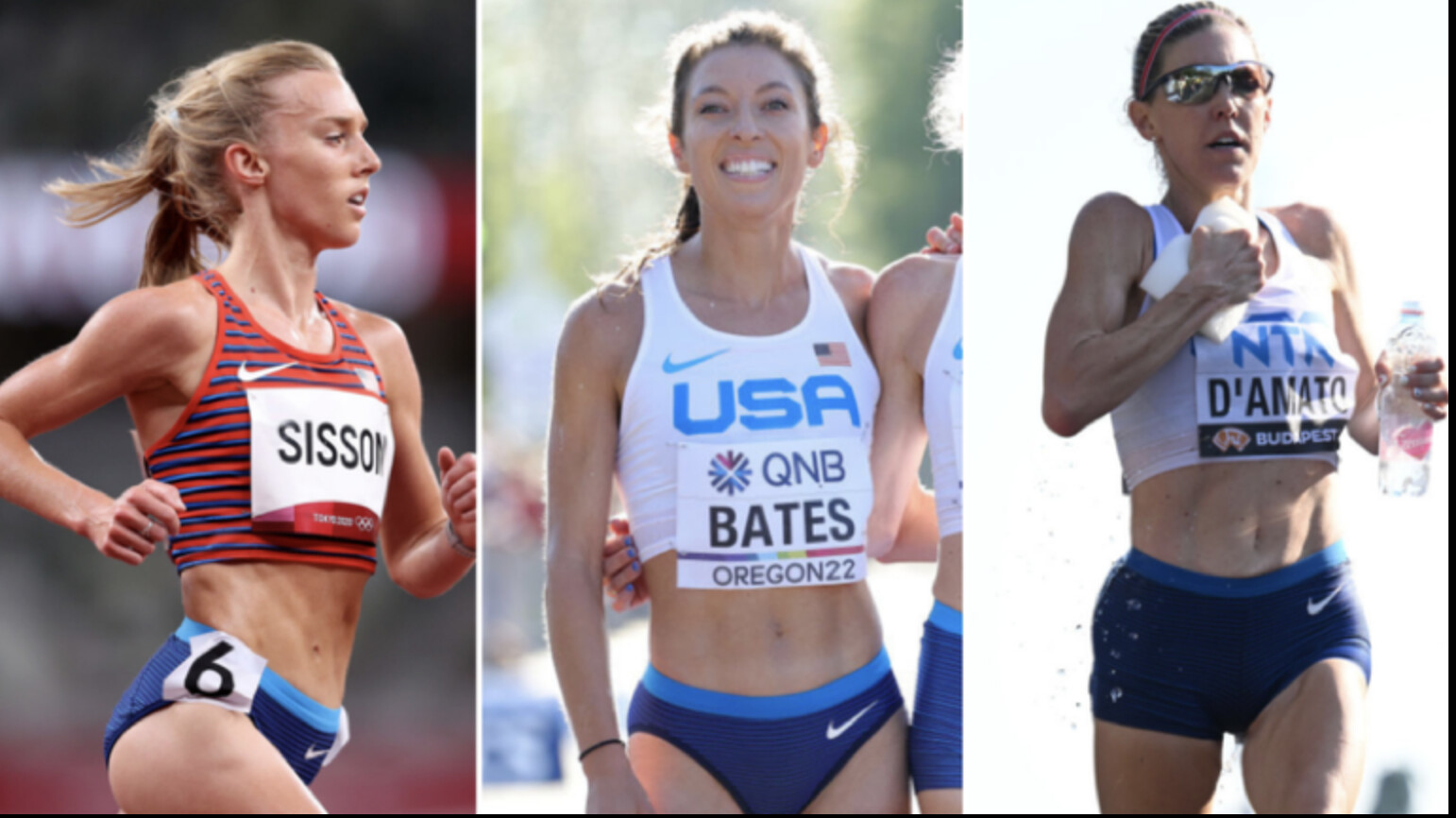
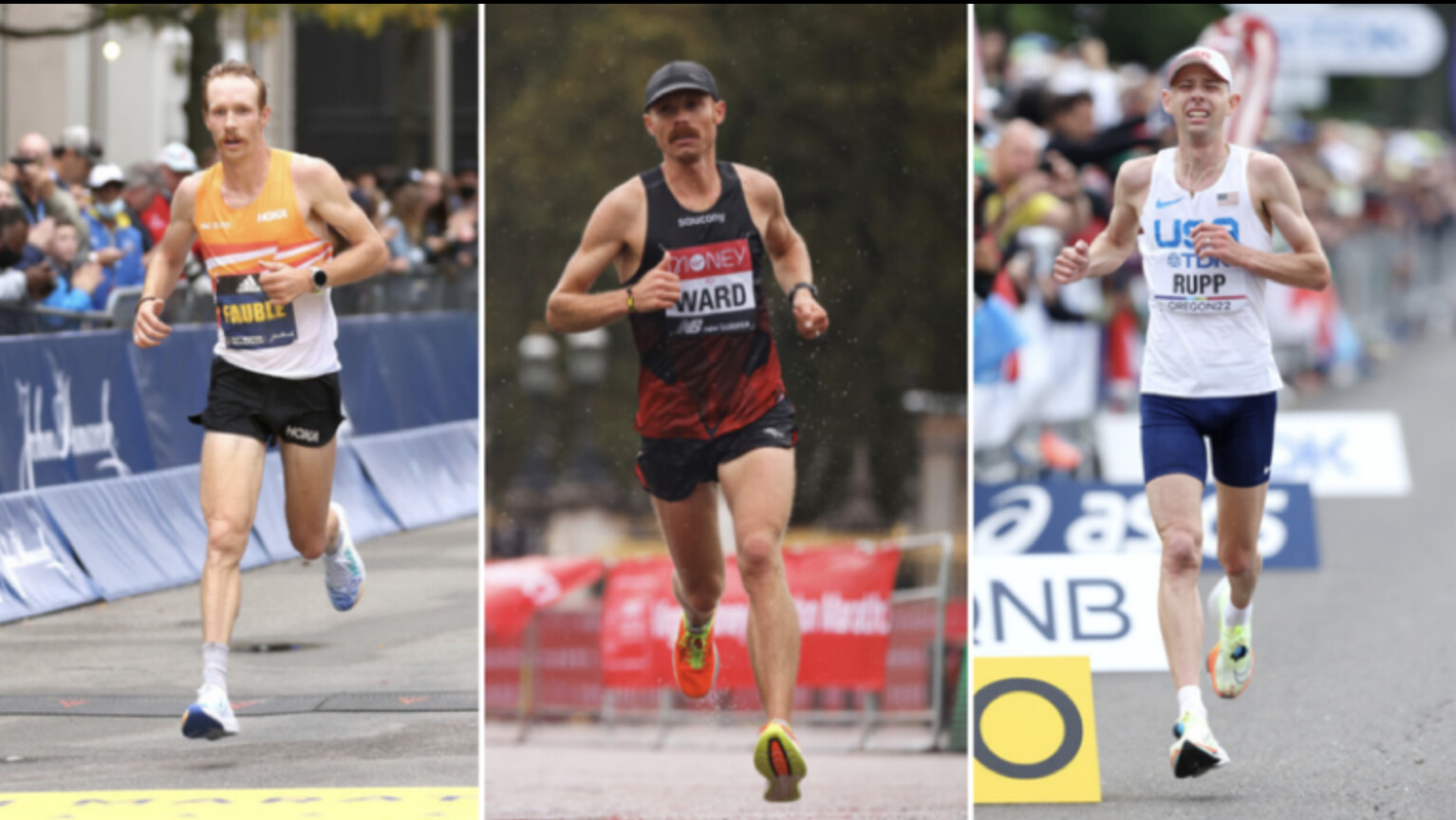
More specifically, the men’s and women’s 2024 U.S. Olympic Trials Marathon races—scheduled for February 3 in Orlando, Florida—are just four months away. And that means the top U.S. runners hoping to represent their country at next summer’s Olympics are about to begin preparing for the all-or-nothing qualifying race that decides which six runners will represent Team USA next summer on the streets of Paris.
Although several top American runners are racing the Chicago Marathon on October 8, even they have their eyes on a much bigger prize next February.
“There’s nothing in my mind that compares with being an Olympian and being in the Olympic Games,” says 26-year-old Utah-based Nike pro Conner Mantz, who returns to Chicago after finishing seventh last year in 2:08:16 in his debut at the distance. “So putting that first has been the plan for a long time. We’re just putting that first and we’re working backwards through the season with other races.”
Registration will open for the U.S. Olympic Trials Marathon in early November for runners who have surpassed the qualifying times in the marathon (2:18:00 for men, 2:37:00 for women) or half marathon (1:03:00 for men, 1:12:00 for women). The qualifying window extends through December 3—the race date of the last-chance California International Marathon, which for decades has been one of the most popular Olympic Trials qualifying races.
In 2020, a record 708 runners—465 women and 243 men—qualified for the U.S. Olympic Trials Marathon in Atlanta just before the onset of the Covid-19 pandemic. But USA Track & Field lowered the women’s qualifying standard by eight minutes from the more attainable 2:45:00 plateau, which means there will most likely be a much smaller women’s field this year.
But even so, amid the handful of runners who have a legitimate shot at making the Olympic team, there will also be dozens of dreamers, wannabes, and just-happy-to-be-there elite amateurs who have worked hard, put in the miles, and earned the chance to be on the start line of the deepest and most competitive U.S. distance-running races that only happen once every four years.
The men’s and women’s races will run simultaneously with the men beginning at 12:10 P.M. EST. and the women starting 10 minutes later. Runners have complained that a high noon start means they will be forced to race in hot, humid conditions. Over the past decade, the average temperature on February 3 in Orlando has been 69.6 degrees Fahrenheit at noon, rising to 73.3 at 4 PM. But actual temperatures have varied drastically, from 81 degrees Fahrenheit at 2 P.M. last year to 56 at the same time the year before. USATF officials have responded by saying that the start times are to accommodate live coverage on NBC and to match the expected conditions in Paris.
Here’s an update and overview of what’s next, who the top contenders are, the course, and what to expect in the next four months.
The 26.2-mile U.S. Olympic Trials course runs through downtown Orlando and consists of one 2.2-mile loop and three eight-mile loops. The marathon course will run through several neighborhoods, main streets, and business districts in Orlando, including Central Business District, City District, South Eola, Lake Eola Heights Historic District, Lake Cherokee Historic District, Lake Davis Greenwood, Lake Como, North Quarter, Lawsona/Fern Creek, SoDo District, and the Thornton Park neighborhood. It will then head east to and around The Milk District neighborhood and Main Street. (Notably, the course will come close to Disney World, which is about 15 miles to the southwest.)
Unlike the Olympic Marathon course in Paris, which will challenge runners with significant hills in the middle, the Orlando course is mostly flat. Each loop has a few minor variations in pitch, but only 38 feet separate the high and low points on the course. Ultimately, though, it’s a spectator-friendly route with chances for family, friends, and fans of runners to see the action several times.
The top women—based on personal best times and recent race results—are Emily Sisson, Emma Bates, Keira D’Amato, Betsy Saina, and Lindsay Flanagan. But the U.S. Olympic Trials races almost always produce surprises with a few great runners having off days and a few good runners having exceptional days, so there is reason to expect the unexpected.
Sisson lowered the American record to 2:18:29 last year when she finished second in the Chicago Marathon. She’s running Chicago again on October 8 along with Bates, who has said she’s hoping to break the American record. In January, Sisson, 31, chopped her own American record in the half marathon in Houston with a 1:06:52 effort, and most recently won the U.S. 20K Championships (1:06:09) on September 4 in New Haven, Connecticut. Bates, also 31, hasn’t raced at all since her sterling fifth-place effort at the Boston Marathon in April, when she slashed her personal best to 2:22:10.
While Chicago will be another good place to test themselves, both have unfinished business after Bates was seventh at the 2020 Trials and Sisson dropped out near the 21-mile mark.
The same goes for Flanagan, 32, who has been one of America’s best and most consistent marathoners for the past five years. She placed 12th at the trials in 2020. She had a breakthrough win (2:24:43) at the Gold Coast Marathon in 2022 followed by a strong, eighth-place finish (2:26:08) at the Tokyo Marathon earlier this year. In August, she ran perhaps the best race of her career, when she finished ninth (2:27:47) at the world championships in Budapest amid hot, humid conditions.
The 38-year-old D’Amato, meanwhile, just capped off another strong season with a 17th-place showing (2:31:35) at the World Athletics Championships in Budapest, a year after finishing eighth in the world championships and setting an American record 2:19:12 at the 2022 Houston Marathon. She was 15th at the Trials in 2020 in 2:34:24, just two years into her competitive return to the sport after having two kids and starting a career in real estate in her early 20s.
“It’s such a huge goal of mine to become an Olympian,” says D’Amato, who lowered Sisson’s U.S. record in the half marathon with a 1:06:39 effort at the Gold Coast Half Marathon on July 1 in Australia. “It’s really hard for me to put words into this because my whole life, wearing a Team USA jersey has been like a huge dream. And when I left the sport (temporarily), I felt like I said goodbye to that dream and I kind of mourned the loss of being able to represent my country. I feel like it’s the greatest honor in our sport to be able to wear our flag and race as hard as possible.”
Saina, a 35-year-old Kenya-born runner who ran collegiately for Iowa State University, became a U.S. citizen in late 2021. She placed fifth in the 10,000-meters at the 2016 Olympics in Rio de Janeiro while competing for Kenya. She’s spent the past several years splitting time between Kenya and Nashville, Tennessee, where she gave birth to a son, Kalya, in December 2021.
She’s returned with a strong fourth-place 1:11:40 result at the Tokyo Half Marathon last October and a fifth-place 2:21:40 showing at the Tokyo Marathon in February. In May, Saina won the U.S. 25K Championships in Michigan. Two weeks ago she broke the tape at the Blackmores Sydney Marathon in Australia in 2:26:47.
Other top contenders include but are not limited to Tokyo Olympics bronze medalist Molly Seidel (who’s personal best is 2:24:42), 2022 U.S. Olympic Trials champion Aliphine Tuliamuk (2:24:37, 11th in Boston this year), Susanna Sullivan (2:24:27 personal best, 10th in London this year), two-time Olympian and 2018 Boston Marathon winner Des Linden (2:22:38), and Sara Hall (2:20:32, fifth at last year’s world championships), plus Kellyn Taylor (2:24:29), Nell Rojas (2:24:51), Sarah Sellers (2:25:43), Lauren Paquette (2:25:56), Dakotah Lindwurm (2:25:01), Annie Frisbie (2:26:18), Sara Vaughn (2:26:23), Tristin Van Ord (2:27:07), and Jacqueline Gaughan (2:27:08).
The list of potential men’s top contenders isn’t as clear-cut, partially because there are so many sub-2:11 runners and several fast runners who are relatively new to the marathon. But all that suggests a wide-open men’s race where more than a dozen runners are legitimately in the mix for the three Olympic team spots. That said, the top runners on paper, based on both time and consistent results over the past few years, are Scott Fauble, Jared Ward, Galen Rupp, Conner Mantz, Leonard Korir, Matt McDonald, and C.J. Albertson.
The 31-year-old Fauble, who was 12th in the Olympic Trials in 2020 and owns a 2:08:52 personal best, has finished seventh in the Boston Marathon three times since 2019 and also finished seventh in the New York City Marathon in 2018. Ward is a 2016 U.S. Olympian and has three top-10 finishes at the New York City Marathon and a 2:09:25 personal best from Boston in 2019. He’s 35, but he just ran a 2:11:44 (27th place) at the Berlin Marathon in late September.
Rupp, who won the past two U.S. Olympic Trials Marathons and earned the bronze medal in the marathon at the 2016 Olympics, is nearing the end of his competitive career. He boasts a 2:06:07 personal best and has run under 2:10 more than any American in history, including when he finished 19th at the world championships (2:09:36) last year. He’s a bit of a wild card because he’s 37 and hasn’t raced since his lackluster 17th-place showing at the NYC Half Marathon (1:04:57) in March, but the world will get a glimpse of his fitness in Chicago this weekend.
Mantz followed up his solid debut in Chicago last fall with a good Boston Marathon in April (11th, 2:10:25) and solid racing on the track and roads all year, including his recent runner-up showings at the Beach to Beacon 10K in August and the U.S. 20K Championships in September.
McDonald, 30, who was 10th in the 2020 U.S. Olympic Trials, has quietly become one of the best marathoners in the U.S. while serving as a postdoctoral associate in chemical engineering at M.I.T. His last three races have clocked in at 2:10:35 (Boston 2022), 2:09:49 (Chicago 2022), and 2:10:17 (Boston 2023). The only other runner who rivals that kind of consistency is Albertson, 29, who has run 2:10:23 (Boston 2022), 2:10:52 (Grandma’s Marathon 2022) and 2:10:33 (Boston 2022) in his past three marathons and was seventh in the U.S. Olympic Trials in 2020 (2:11:49).
The men’s race will likely have a mix of veteran runners and newcomers who have run in the 2:09 to 2:10 range since 2022. Among those are 2020 U.S. Olympic Trials runner-up Jake Riley (2:10:02 personal best), who is returning from double Achilles surgery; 2016 U.S. 10,000-meter Olympian Leonard Korir (2:07:56), who ran a 2:09:31 in Paris in April; Zach Panning (2:09:28, plus 13th at the world championships in August); U.S. 25K record-holder Parker Stinson (2:10.53); Futsum Zienasellassie who won the California International Marathon last December in his debut (2:11:01) and then doubled-back with a new personal best (2:09:40) at the Rotterdam Marathon in the spring; Abbabiya Simbassa, who ran a solid debut marathon (2:10:34) in Prague this spring; and Eritrean-born Daniel Mesfun (2:10:06) and Ethiopian-born Teshome Mekonen (2:10:16), who both received U.S. citizenship within the past year; and solid veterans Nico Montanez (2:09:55), Elkanah Kibet (2:10:43) and Nathan Martin (2:10:45).
Additional sub-2:12 runners who will be in the mix are Andrew Colley (2:11:26), Clayton Young (2:11:51), Brendan Gregg (2:11:21), Josh Izewski (2:11:26), Jacob Thompson (2:11:40), and Kevin Salvano (2:11:49).
As noted previously, some top contenders will season their marathon legs one final time at the flat and fast Chicago Marathon on October 8. An even more select few will opt for the New York City Marathon on November 5. After that, nearly every American with eyes set on an Olympic berth will double-down over the holiday season for that one final, critical marathon training cycle. Expect to see a wide range in heat training, from sauna protocols, to warm weather training trips, to simply an adjusted race day strategy.
Of course, with the Olympic Marathon falling under the purview of World Athletics, qualifying for the U.S. Olympic Marathon team is not quite as simple as finishing on the podium in Orlando. Any American looking to have a breakout performance and finish within the top three at the U.S. Olympic Trials Marathon will need to have run under 2:11:30 for men and 2:29:30 for women within the qualification window, which spans from November 1, 2022 to April 30, 2024. Given the possibility of oppressively hot and humid temps on February 3 in Orlando, they’re best bet is to secure that time now.
These qualification standards are in accordance with a new rule from World Athletics, which allows national Olympic committees to circumvent the typical Olympic qualification process of running under 2:08:10 for men and 2:26:50 for women, or being ranked among the top 65 in the world on a filtered list of the top three athletes from each country. The catch, though, is that three other runners from said country must have met one of these two standards. If this sounds complicated, that’s because it is.
For the hundreds of elite amateurs on the cusp of hitting that coveted U.S. Olympic Trials qualifying time, it’s do or die mode. While a few made the cut at the Berlin Marathon on September 24, one of those opportunities was lost when the Twin Cities Marathon was canceled on October 1 because of excessive heat. Temperatures are shaping up for an auspicious day in Chicago this weekend, and many more will give it a final shot at the Columbus Marathon on October 15; Indianapolis Monumental Marathon on October 28; the Philadelphia Marathon on November 18; and the last-call California International Marathon, a point-to-point race ending in Sacramento, California on December 3.
Ultimately, only six American runners will likely continue on along the road to Paris and earn the chance to run in the men’s and women’s Olympic marathons next August 10-11. For a handful of younger runners, the 2024 U.S. Olympic Trials will be a motivation to reinvigorate the Olympic dream or keep a faint hope alive, at least until the 2028 U.S. Olympic Trials that will determine the team for the Los Angeles Olympics. But for many runners, the journey to the U.S. Olympic Trials in Orlando will lead to the end of their competitive road running careers as new jobs, young families, a switch to trail running, and other priorities will take hold.
“I think the Olympic Trials is an important part of American distance running,” says Kurt Roeser, 36, a two-time U.S. Olympic Trials Marathon qualifier who works full-time as a physical therapist in Boulder, Colorado. “I’m glad that they kept it the same event for this cycle and hopefully for future cycles because it gives people like me a reason to keep training. I’m older now and I’m not going to actually have a chance to make an Olympic team, but for somebody that’s fresh out out of college and maybe they just barely squeak in under the qualifying time, maybe that’s the catalyst they need to start training more seriously through the next cycle. And maybe four years from now, they are a serious factor for making the team.”
by Outside Online
Login to leave a comment
Scott Fauble Is Aiming for the Olympic Standard at Berlin Marathon
Fauble will hope to become first American man to hit 2:08:10 Olympic standard in Sunday’s race
Scott Fauble was not planning on running a fall marathon in 2023. On April 17, he finished 7th at the Boston Marathon to earn top American honors — just as he did in Boston and New York in 2022. His time of 2:09:44 represented the fourth sub-2:10 of his career, making him just the seventh American to accomplish that feat after Ryan Hall, Galen Rupp, Meb Keflezighi, Khalid Khannouchi, Alberto Salazar, and Mbarak Hussein. In previous years, a top-10 finish at a World Marathon Major counted as an automatic qualifying standard for the Olympic marathon; Fauble, with three straight top-10 finishes on his resume, figured he was in good position for Paris and could shift his focus to the US Olympic Trials in February 2024.
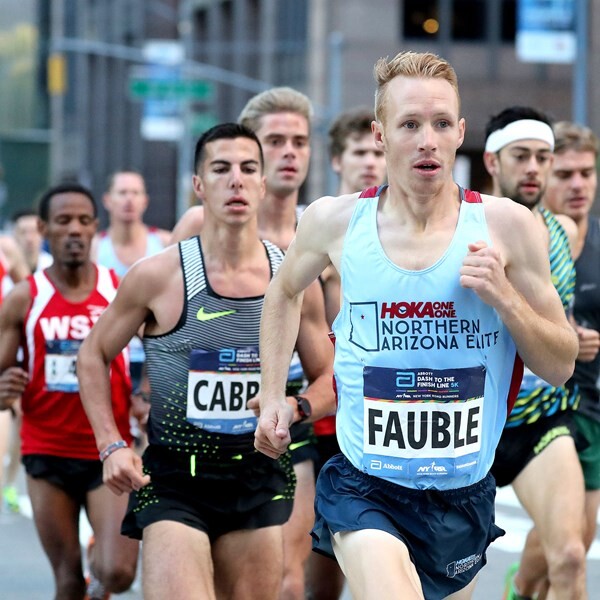
But the Olympic qualifying system for 2024 is far more complicated than in previous years, with ever-shifting world rankings and things like “quota reallocation places” creating confusion among fans and athletes alike. Any athlete ranked in the top 65 of the filtered “Road to Paris” list on January 30, 2024, is considered qualified…except the “Road to Paris” list does not currently exist. After Boston, Fauble, who is currently ranked 122nd* — that’s in the world rankings, which is a different list than “Road to Paris” — tried to take a closer look at where he stood, creating spreadsheets and projecting where he might rank after accounting for time qualifiers, the three-athlete-per-country limit, and potential changes after the 2023 fall marathon season. After a while, his brain began to hurt.
“I felt like the Pepe Silvia meme from It’s Always Sunny in Philadelphia,” Fauble said. “…It was like, this is complicated and stressful and I can just get the standard. This doesn’t need to be an issue.”
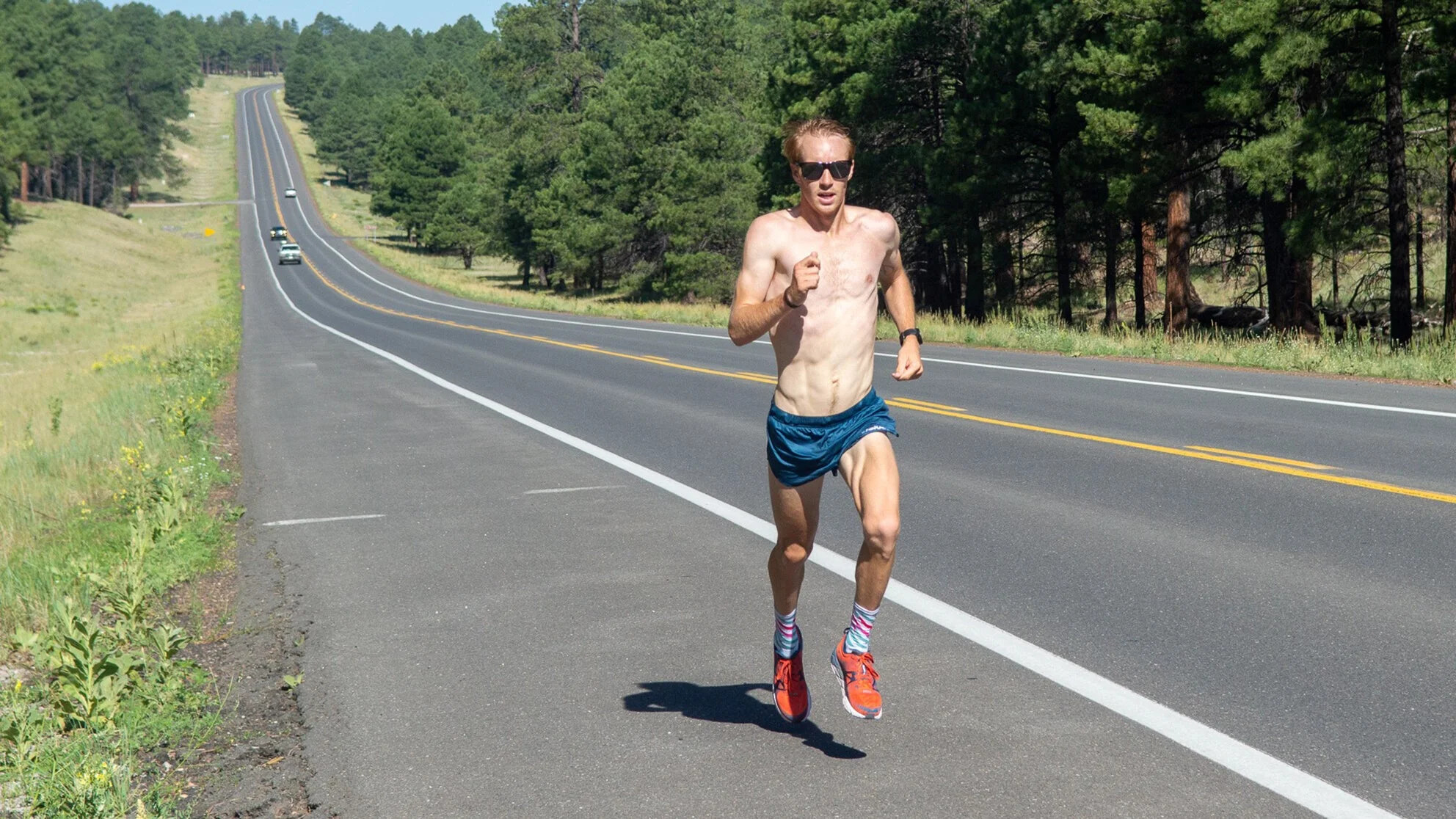
That is why Fauble, begrudgingly, made the decision to run the Berlin Marathon. He was not initially looking forward to the race, but with a strong training block in Boulder behind him and the race just four days away, he has changed his tune.
“I’m very excited,” Fauble said. “I wasn’t planning on doing a fall marathon after Boston and I had to figure out ways to get excited for it and I think that’s one of the things that has fired me up, actually seeing how fast I can go and pushing for a PR as opposed to letting the race play out and seeing what I can do.”
Chasing a time is a dramatically different approach to Fauble’s typical marathon M.O. Of the nine marathons he has run, only two have featured pacemakers: his debut in Frankfurt in 2017, and the Marathon Project in 2020. When Fauble runs Boston and New York, the hilly courses where he has found the greatest success, he does not enter with a goal time in mind. Instead, Fauble will wait until the race begins and assess a number of factors — the weather, how he’s feeling, how fast the other runners are going — before deciding which pace to run. Typically, that has led to Fauble letting the leaders go early and picking off stragglers as they fade over the second half of the race.
Berlin will be different. There are no hills to account for, and while Fauble will still fight for every place, he is not hiding the fact that the primary goal of this race is to hit a time. Specifically, the Olympic standard of 2:08:10. Only five Americans have ever bettered that time in history, but Fauble, who ran his personal best of 2:08:52 in Boston in 2022, believes he is capable of doing it.
“I don’t think that me running in the 2:07s is a huge stretch of the imagination,” said Fauble, who has removed some of the hillier routes from his training under coach Joe Bosshard but has otherwise prepared similarly for Berlin as he would Boston or New York. “I think I’ve been in that kind of shape a bunch of times.”
Every American marathoner will be rooting for Fauble
Currently, no male American marathoner has earned the 2024 Olympic standard — either by hitting the time standard of 2:08:10 or by finishing in the top five of a Platinum Label Marathon (which includes Berlin). It’s pvery likely someone such as Fauble or Conner Mantz will be ranked in the top 65 of the “Road to Paris” list at the end of January, but with the Olympic Trials less than five months away, US marathoners are getting antsy.
American pros rarely run the Berlin Marathon, typically opting for Chicago or New York in the fall — both of which pay much bigger appearance fees to American runners. But this fall, many are bypassing New York because of the date (just 13 weeks before the Trials) and the course (too slow for a shot at the Olympic standard). A sizeable crew, led by Mantz and Galen Rupp, will be in Chicago, while a far larger number than usual have opted for Berlin.
Berlin’s course is just as fast as Chicago’s, if not faster. It’s also two weeks before Chicago — an extra two weeks to prepare for the Trials — and the weather is typically a little better in Berlin than Chicago. That’s why Keira D’Amato opted for Berlin over Chicago for her American record attempt last year. It’s also why 60:02 half marathoner Teshome Mekonen — another American targeting the Olympic standard this fall — chose Berlin over Chicago.
In addition to Fauble and Mekonen, the 2023 Berlin field also includes 2016 Olympian Jared Ward, 2021 Olympian Jake Riley, and Tyler Pennel, who has finished 5th and 11th at the last two Olympic Marathon Trials. All of them will be looking to run fast. And every other American marathoner will be hoping they do the same.
That’s because of a new provision in the Olympic qualification system which states that any country with three qualified athletes may choose to send any three athletes it wants to Paris — as long as they have run at least 2:11:30 (men) or 2:29:30 (women) within the qualifying window. That’s why every American will be rooting for Fauble and others to run fast this fall: if the US has three athletes with the standard, then anyone who has run under 2:11:30 has the opportunity to make the team by finishing in the top three at the Trials.
The above provision, which World Athletics is referring to as “quota reallocation” means that someone such as Fauble could run the Olympic standard and open up a spot in Paris for an American athlete who ends up beating him at the Trials — thus taking a spot that would not otherwise be available had Fauble not run the standard. Fauble, obviously, is hoping such a scenario does not come to pass. But he is aware of the possibility and has accepted it as part of his reality.
“I don’t mind it,” Fauble said. “Sports have never really been about identifying the best team or the best athlete. They’re an entertainment product and they overemphasize very specific days on the calendar. Even if I was the only one with the standard and I get beat at the Trials, the 73-9 Warriors didn’t win the NBA title that year. You’ve gotta do it on the big days. That’s what being a professional athlete is about.”
by Jonathan Gault
Login to leave a comment
BMW Berlin Marathon
The story of the BERLIN-MARATHON is a story of the development of road running. When the first BERLIN-MARATHON was started on 13th October 1974 on a minor road next to the stadium of the organisers‘ club SC Charlottenburg Berlin 286 athletes had entered. The first winners were runners from Berlin: Günter Hallas (2:44:53), who still runs the BERLIN-MARATHON today, and...
more...World Athletics Championships Budapest 23 preview: marathon
In Oregon last year, Tamirat Tola ran his way into the World Championships history books with the fastest ever winning time in the men’s marathon: 2:05:36. Thirteen months on, the 31-year-old Ethiopian has the chance to add his name to the select band of marathon men to manage a successful title defence.
Only three have achieved the feat thus far: Spain’s Abel Anton (1997, 1999), Jaouad Gharib of Morocco (2003, 2005) and the Kenyan whose championship record Tola broke in Oregon, Abel Kirui (2009, 2011).
Tola was a class apart in 2022, the 2016 Olympic 10,000m bronze medallist showing his track pedigree as he blitzed the final 10km circuit in 28:31 to finish a decisive 1:08 clear of compatriot Mosinet Gerenew, also the silver medallist in Doha in 2019.
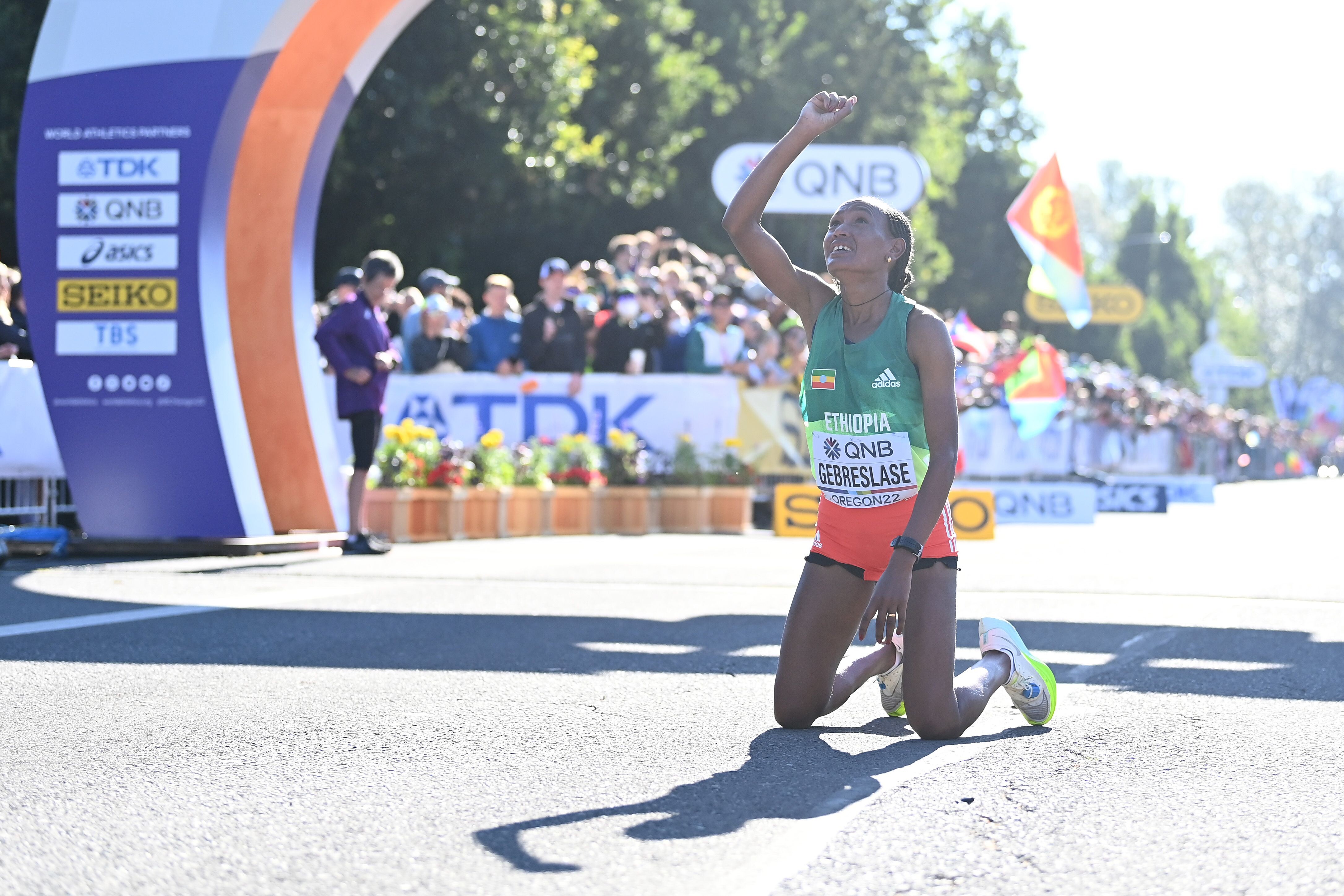
Tola, who was the marathon runner-up at the 2017 World Championships, has maintained his form this year, finishing third at the London Marathon in April in 2:04:59, behind Kelvin Kuptum (2:01:25) and Geoffrey Kamworor (2:04:23).
Neither of those two Kenyans will be on the start line in Budapest, but the defending champion will face two rivals from Kenya who have run faster than him in 2023. Timothy Kiplagat stands third on the world list with the 2:03:50 he clocked as runner-up to Belgium’s Bashir Abdi in Rotterdam in April. Abdi, the bronze medallist in Eugene, will be absent in Budapest but Kiplagat will be joined on the Kenyan team by Joshua Belet, runner-up at the Hamburg Marathon in April in 2:04:33. The third Kenyan in the field is Titus Kipruto, fourth at this year’s Tokyo Marathon in 2:05:32, who set a PB of 2:04:54 as runner-up in Amsterdam last year.
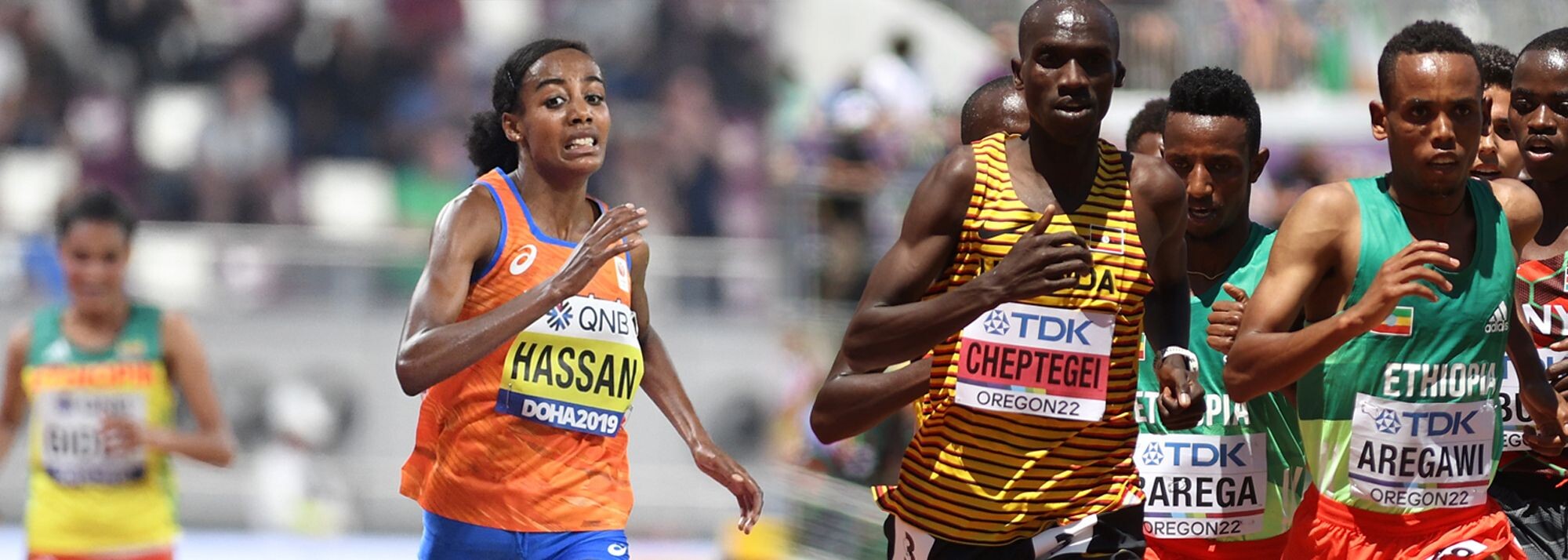
Ethiopians have finished first and second at the last two World Championships and Tola will have notable support in Budapest. Milkesa Mengesha, the 2019 world U20 cross-country champion, won the Daegu Marathon in April and clocked a best of 2:05:29 in Valencia last December. Chalu Deso won in Tokyo in March in 2:05:22. Leul Gebresilasie finished second and fourth at the last two London Marathons and has a best of 2:05:12. Tsegaye Getachew placed third in Tokyo in April in 2:05:25.
Not that the race looks like being an exclusive battle between the two established East African giants of distance running.
Abdi Nageeye of the Netherlands was runner-up to Eliud Kipchoge in the 2021 Olympic marathon in Sapporo. The 34-year-old finished third in New York last November and in Rotterdam in April.
Tanzania’s Alphonce Felix Simbu is a seasoned major championship marathon campaigner. The 31-year-old earned world bronze in London in 2017 and Commonwealth silver in Birmingham last year. He also finished fifth and seventh in the last two Olympic marathons.
Commonwealth champion Victor Kaplangat is joined on the Ugandan team by Stephen Kissa, who set a national record of 2:04:48 in Hamburg last year. Morocco’s Mohamed Reda El Aarby placed second in New York in 2021 and fourth last year.
There are a host of other sub-2:06 performers in the field: Israel’s European bronze medallist Gashu Ayale, Kaan Kigen Ozbilen of Turkey, Eritreans Goitom Kifle and Oqbe Kibrom, plus the Japanese duo Kenya Sonota and Ichitaka Yamashita.
Ayale’s Israeli teammate Marum Terifi is the second-highest placed runner from last year’s race on the entry list. He finished 11th in Oregon and then took silver at the European Championships in Munich.
Veteran Spaniard Ayam Lamdassem was sixth in Munich but fifth at global level in the Olympic marathon in 2021. Another 41-year-old on the start line will be the remarkable Ser-od Bat-Ochir. The Mongolian is unlikely to be troubling the medal contenders but will be contesting his 11th successive World Championships marathon – his 16th successive global championship marathon, having also contested the past five Olympic marathons.
Women's marathon
In Oregon last year Gotytom Gebreslase won in the fastest ever time in a women’s championship marathon, 2:18:11, but the Ethiopian will have to beat two of the six fastest women of all time if she is to successfully defend her title in Budapest.
The 2011 world U18 3000m champion was unable to keep up with one of them on the rolling hills of Boston in April, finishing 10th in her only marathon of the year in 2:24:34 – eight places and 2:44 behind compatriot Amane Beriso Shankule, who was runner-up to two-time world champion Hellen Obiri.
At 31, the formerly injury-plagued Beriso produced a stunning performance in Valencia in December last year, upsetting world 10,000m champion Letesenbet Gidey’s world record attempt with a victory in 2:14:58, putting her third on the world all-time list behind Kenyans Brigid Kosgei (2:14:04) and Ruth Chepngetich (2:14:18).
Gebreslase will also have to contend with Rosemary Wanjiru, who moved above Gidey to sixth on the world all-time list with a winning time of 2:16:28 in Tokyo in March. The 28-year-old Kenyan, fourth in the world 10,000m final in Doha in 2019, clocked one of the fastest marathon debuts in history, 2:18:00, as runner-up to Ethiopia’s Tigist Assefa in Berlin last year.
In addition to Gebreslase, five other finishers from the top 10 in Oregon last year will be on the start line: bronze medallist Lonah Salpeter from Israel and fourth-placed Nazret Weldu of Eritrea, plus Keira D’Amato of the US (eighth), Japan’s Mizuki Matsuda (ninth) and Mexico’s Citiali Moscote (10th).
The loaded field also includes the second-fastest woman of 2023, Ethiopia’s Tsehay Gemechu, the runner-up to Wanjiru in Tokyo in 2:16:56, who finished fourth in the 5000m in Doha in 2019, and Bahrain’s 2017 marathon world champion Rose Chelimo.
The Ethiopian challenge will be strengthened by world 10km record-holder Yalemzerf Yehualaw, who ran 2:17:23 on her marathon debut last year then won in London later in 2022 before finishing fifth at this year’s edition of the race. Wanjiru, meanwhile, is joined on the Kenyan team by 2014 world half marathon bronze medallist Selly Kaptich, who was third in Berlin in 2019, and Shyline Jepkorir, a winner in Enschede in April in 2:22:45.
At 36, the veteran Kaptich is four years younger than Australia’s two-time Commonwealth medallist Lisa Weightman, who showed her enduring class with 2:23:15 for fourth place in Osaka in February.
Another notable entrant is Poland’s Aleksandra Lisowska, who broke away in the final 2km to win the European title in Munich 12 months ago.
Bat-Ochir made his world debut in Paris back in 2003 and boasts a highest placing of 19th in Daegu in 2011. He finished 26th in Oregon last year, his second-best global performance. His appearance in Budapest will match Portuguese race walker Joao Viera’s tally of 11 – two shy of Spanish race walker Jesus Angel Garcia’s record.
by World Athletics
Login to leave a comment
World Athletics Championships Budapest 23
From August 19-27, 2023, Budapest will host the world's third largest sporting event, the World Athletics Championships. It is the largest sporting event in the history of Hungary, attended by athletes from more than 200 countries, whose news will reach more than one billion people. Athletics is the foundation of all sports. It represents strength, speed, dexterity and endurance, the...
more...Ethiopia’s Addisu Yihune, Kenya’s Hellen Obiri win Beach to Beacon 10k
Ethiopia’s Addisu Yihune and Kenya’s Hellen Obiri won the men’s and women’s titles at the 2023 TD Beach to Beacon 10K on Saturday morning.
Yihune crossed the finish line in an unofficial time of 27 minutes, 56 seconds. Conner Mantz of Utah was second (27:58) and Muktar Edris of Ethiopia was third (28:06).
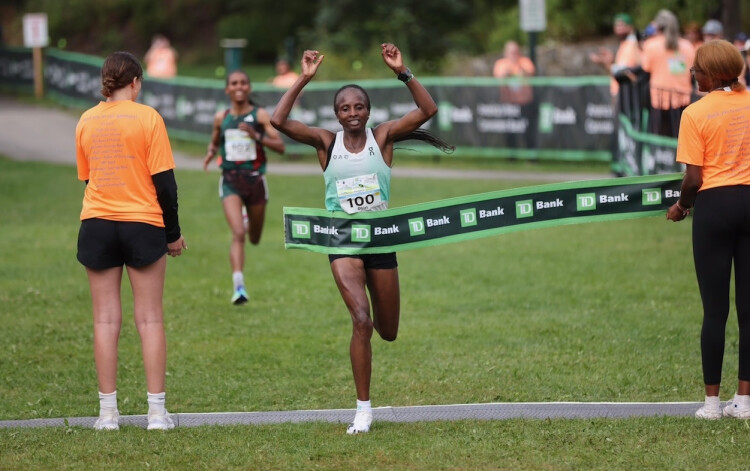
Obiri won the women’s race in an unofficial time of 31:36, followed by Ethiopia’s Fotyen Tesfay (31:38) and Keira D’Amato of Virginia (31:58).
Matt Rand of Portland was the top finisher among the Maine men in an unofficial time of 30 minutes, 44 seconds, followed by Grady Satterfield of Bowdoinham (30:52) and Ryan Jara of Gorham (30:55).
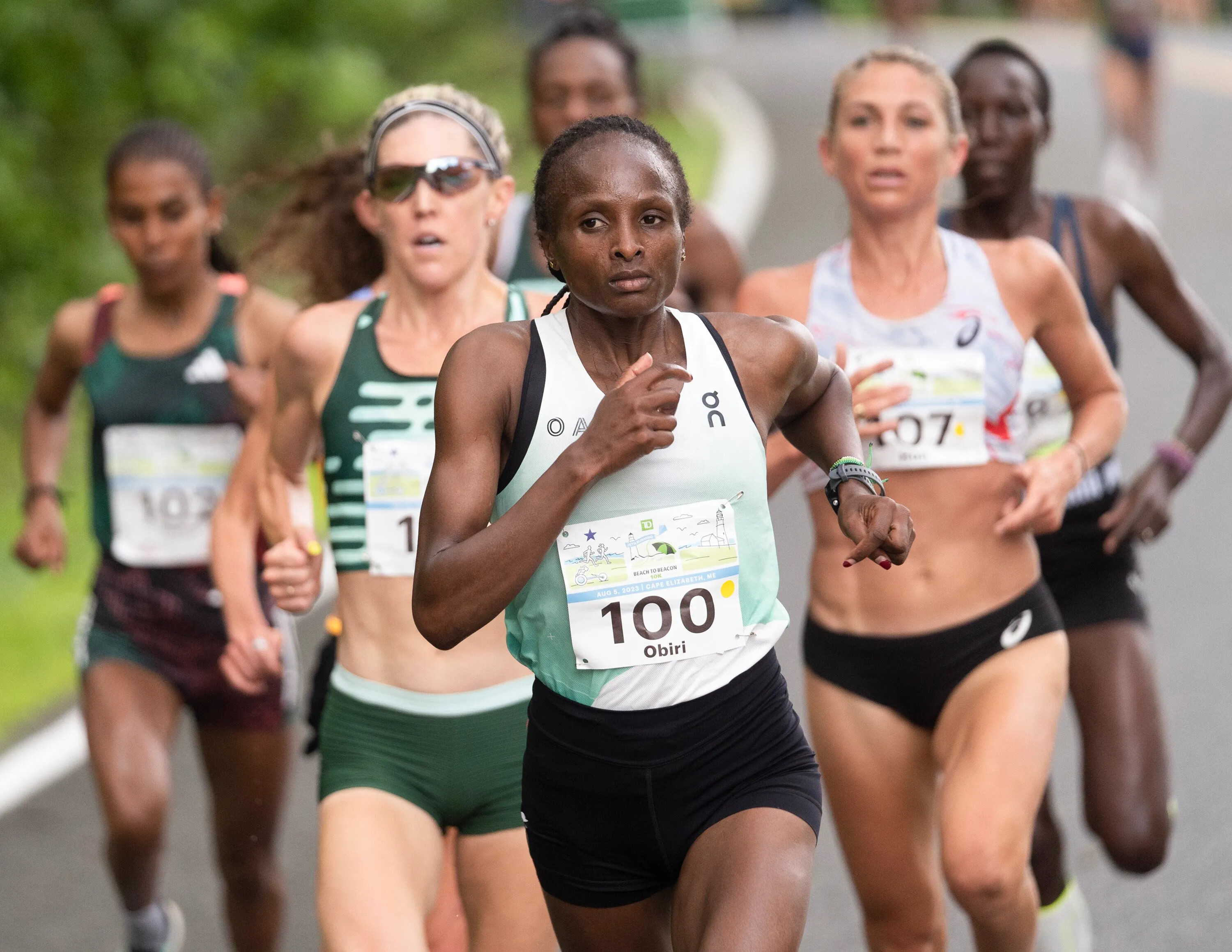
Ruth White, who will be a senior this fall at Orono High, was the top finisher among Maine women in an unofficial time of 34:56. Alexis Wilbert of Cumberland placed second (35:46) and Veronica Graziano of Falmouth was third (36:15).
Hermin Garic of Utica, New York, won the men’s wheelchair division in an unofficial time of 23 minutes, 20 seconds. Yen Hoang of Vancouver, Washington, won the women’s wheelchair division in 28:24.
In the men’s race, Mantz, 26, was visibly upset when he finished the race. He said Yihune, 20, twice pushed him in the final quater-mile, both times causing him to break stride and bang into the fencing that separated the runners from the crowd. Yihune, through the translation of countryman Edris, said he did not push Mantz. Yihune, competing in his first road race, said he was merely closing the lane to block Mantz’s path. Mantz, who had a fresh abrasion on his upper left arm, said that possibly the first incident with about 400 meters could have been accidental or unintended.
The second time, with about 200 meters to go, “The second time I tried to pass him there was plenty of room. Enough for two people to pass on his left. The second time I hit the fence pretty hard. I hate this because there’s a part of me that feels like I got gypped but I also don’t want to go out and protest and like make it into somebody else’s bad experience.”
Yihune won $10,000 for the victory. Mantz also earned $10,000 – $5,000 for finishing second and another $5,000 as the top American.
“I feel like I had first in me today and when you lose by just that much and you lose your momentum, it’s easy to get upset,” Mantz said.
Beach to Beacon, founded by 1984 Olympic women’s marathon champion Joan Benoit Samuelson, is celebrating its 25th anniversary. More than 8,000 people registered for the event, Maine’s largest road race and one of the premier road races in America, with over 6,400 finishing.
Login to leave a comment
TD Beach to Beacon 10K
Joan Benoit Samuelson, a native of Cape Elizabeth, Maine, won the first-ever women's Marathon at the 1984 Olympics in Los Angeles and is founder and chair of the TD Bank Beach to Beacon 10K. "A long time dream of mine has been realized" says Samuelson. "I've always wanted to create a race that brings runners to some of my most...
more...Kenya’s Hellen Obiri highlights field for Beach to Beacon 10K
Kenya’s Hellen Obiri highlights field for Beach to Beacon 10K on Saturday
Obiri, the 2023 Boston Marathon winner and the only woman to win world championships outdoors, indoors and in cross country, will compete at Beach to Beacon for the first time.
Hellen Obiri of Kenya won the women’s division of the Boston Marathon in April. On Saturday, she’ll compete for the first time in the TD Beach to Beacon 10K in Cape Elizabeth. Charles Krupa/Associated Press

Kenya’s Hellen Obiri, the 2023 Boston Marathon champion, highlights a group of elite runners who will compete Saturday in the TD Beach to Beacon 10K road race in Cape Elizabeth, race officials announced Monday.
Obiri – a two-time Olympic silver medalist and the only woman to win world championships outdoors, indoors and in cross country – will compete at Beach to Beacon for the first time. She’ll be joined by fellow Kenyan and two-time Boston Marathon champion Edna Kiplagat.
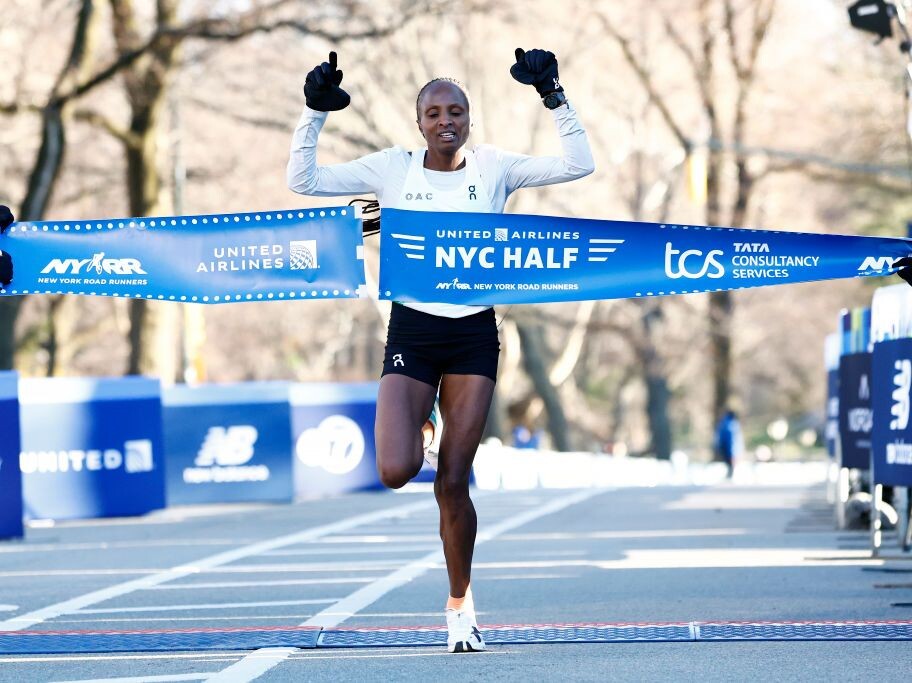
The women’s division also will feature Keira D’Amato of Virginia, who set an American marathon record (2 hours, 19 minutes and 12 seconds) last year, and Sanford native Rachel Schneider Smith, who competed for the United States in the 5,000 meters at the Tokyo Olympics in 2021 and placed fifth at last year’s Beach to Beacon.
A trio of Ethiopians – Addisu Yihune, Amedework Walelegn and Muktar Edris, a two-time world champion – are expected to contend for the men’s title. Top Americans in the field include Utah’s Conner Mantz, a two-time NCAA cross country champion, and Biya Simbassa, who placed third at the 2022 Beach to Beacon.
This year marks the 25th anniversary of Beach to Beacon, founded by Cape Elizabeth native and 1984 Olympic women’s marathon champion Joan Benoit Samuelson.
Login to leave a comment
TD Beach to Beacon 10K
Joan Benoit Samuelson, a native of Cape Elizabeth, Maine, won the first-ever women's Marathon at the 1984 Olympics in Los Angeles and is founder and chair of the TD Bank Beach to Beacon 10K. "A long time dream of mine has been realized" says Samuelson. "I've always wanted to create a race that brings runners to some of my most...
more...Keira D’Amato tells us more about her new Half Marathon American record
(On July 1 Keira D'Amato clocked 1:06:37 at the Gold Coast Half Marathon setting a new American record. This is her story as it unfolded posted on FB)
I don’t know why this post has been so tough for me to write. There was so much emotion in my reaction to crossing the finish line and I think it boils down to one thing: hope.
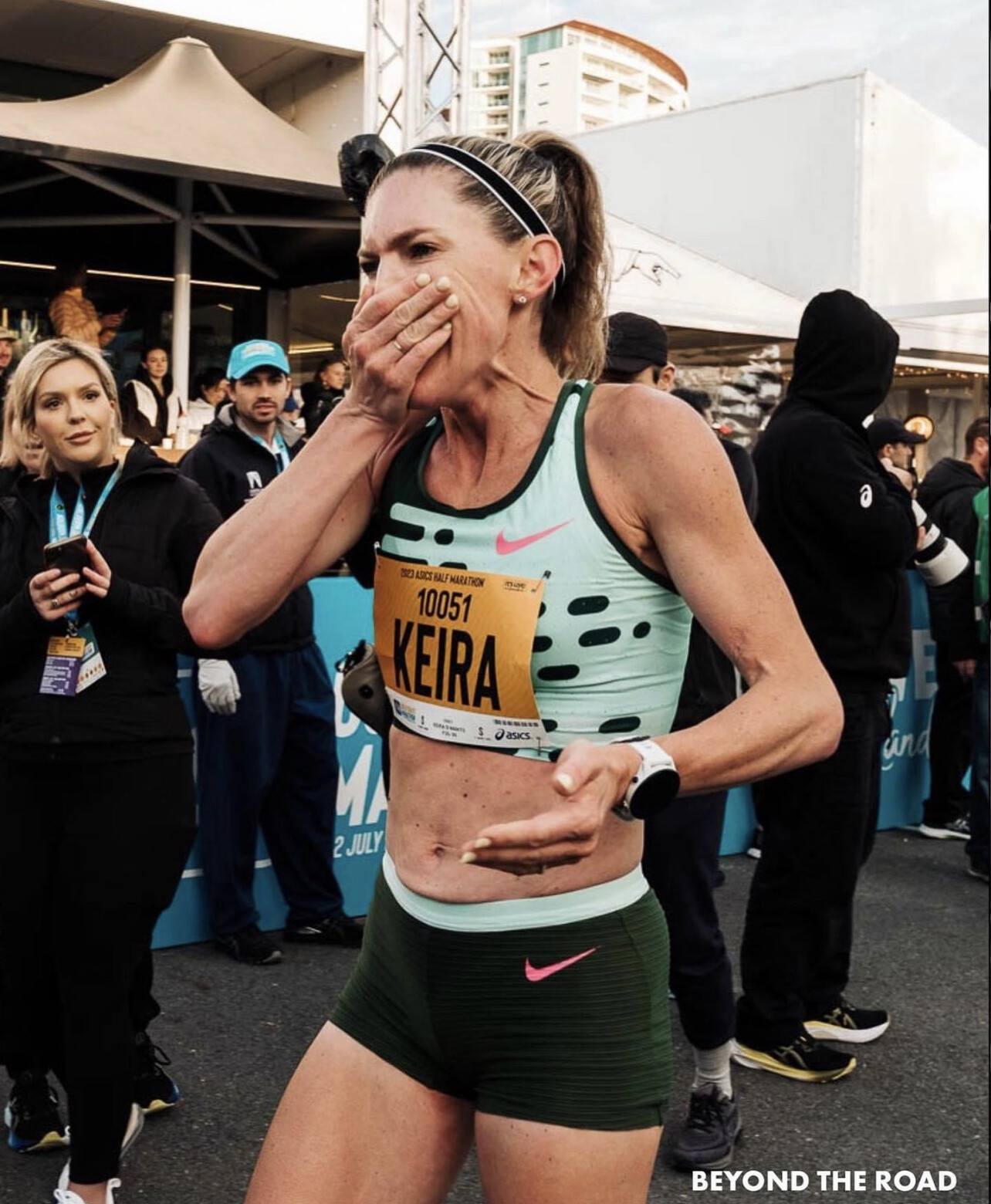
Earlier this year, I was injured, I had to scrap my spring racing plans, but I was in the pool everyday hoping it would heal so I could get back to my goals.
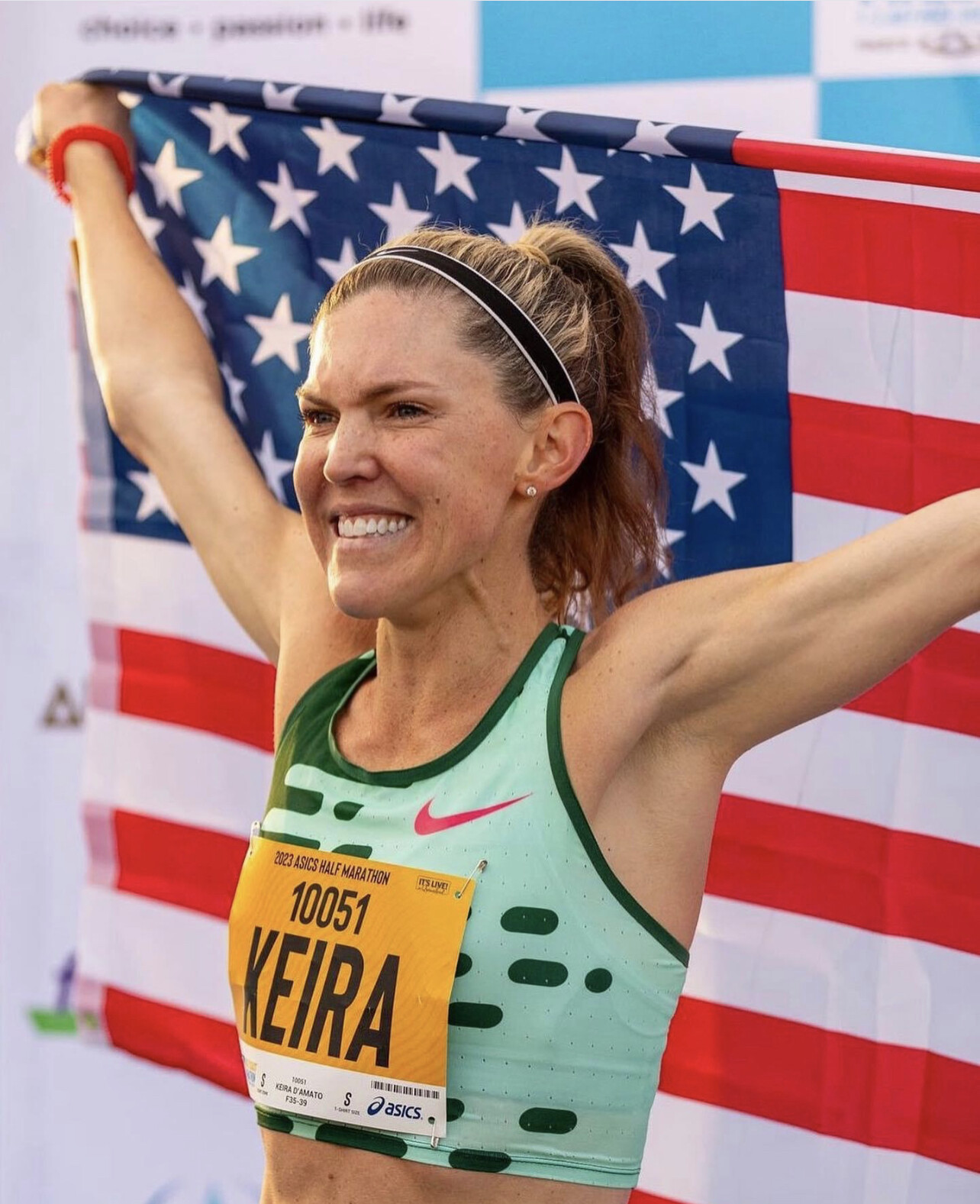
Once I was healthy, the year started off slow. It always does when you are starting something. It takes a few months for me to really start feeling like my buzzsaw self. I had hope that if I stayed patient, I could build back to an even higher level.
My flights got cancelled, and delayed, and cancelled again. But I hoped if I pushed through the travel, I would make it to the starting line.
My daughter wasn’t exactly thrilled I was going to away for a week. That stings the heart. But I hoped, I could show her what it is to chase a dream and why the family has worked to hard to support my running.
I hoped for good enough weather, I hoped my legs would feel good enough despite the travel, and I hope I could find sometime new within myself, that I wasn’t even certain was there.
Then, with about 100 or meters to go, I saw the clock and all that hoping was actually coming true. We all know it doesn’t always workout like that. In fact, most of the time, it feels like it doesn’t. But on Saturday, July 1 in Australia at the @gcmarathon half marathon it did for me.
So that’s why I look crazy crossing the finish line.
I hope everyone has an excuse to make a crazy face like this too. Here’s to hoping. ❤️
Photos by: @caseysims_ and @beyondtheroad
by Keira D’Amato
Login to leave a comment
ASICS Half Marathon
Run before the sun in the ASICS Half Marathon (21.095km) at 6am on Saturday 1 July. Enjoy the good times on our world-standard course while soaking up the beautiful broadwater on your return journey from Southport to Paradise Point. Enjoy scenic sunrise views over the water as you run through Labrador to Runaway Bay before being championed to the finish...
more...Keira D’Amato Sets American Record in the Half Marathon
Keira D’Amato averaged 5:05 per mile pace and broke the American record set by Emily Sisson by 13 seconds.
Once she finally got to Australia, all the stars aligned for Keira D’Amato.
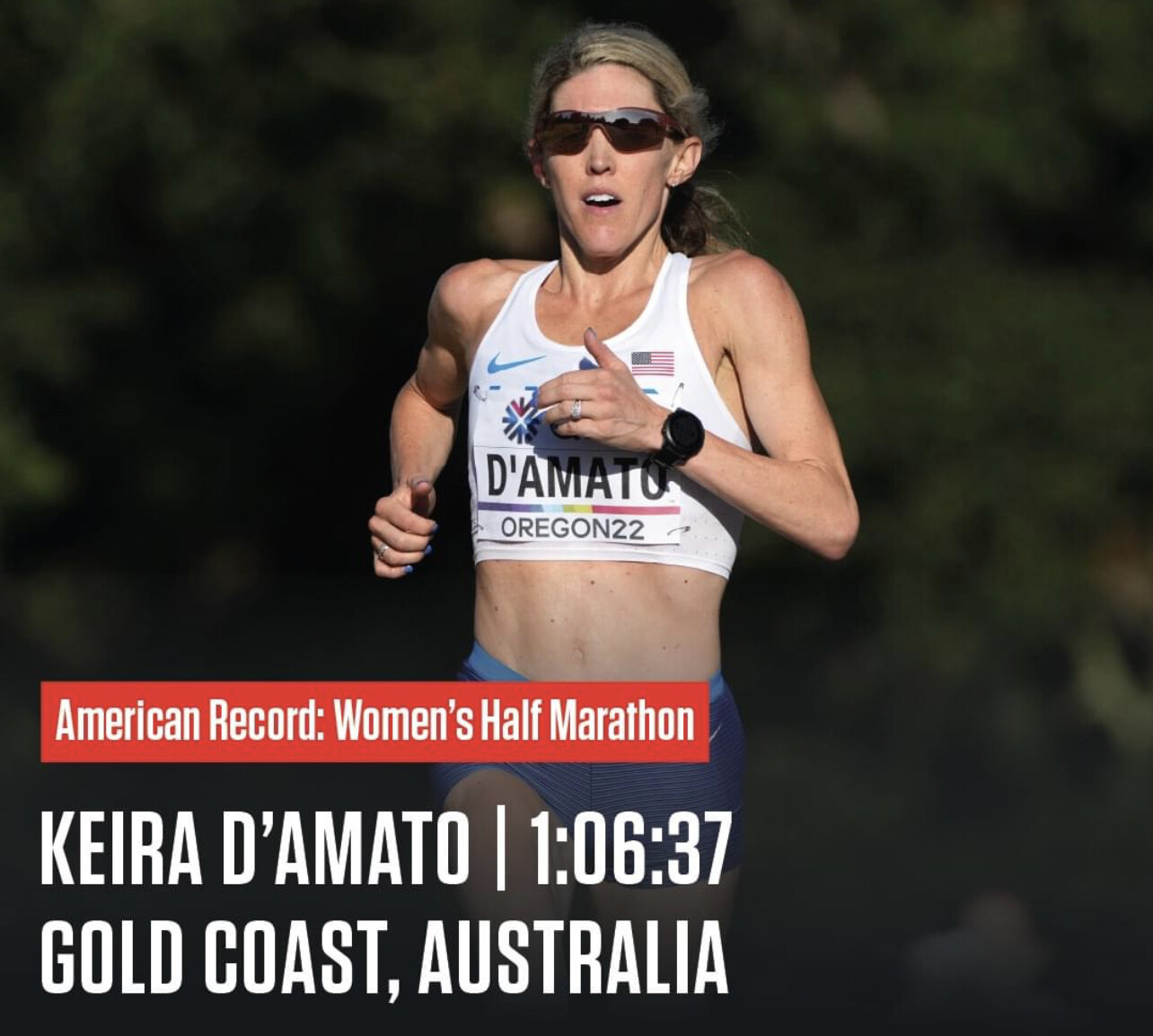
On July 1, she ran the Gold Coast Half Marathon in 1:06:39 and broke Emily Sisson’s American record by 13 seconds.
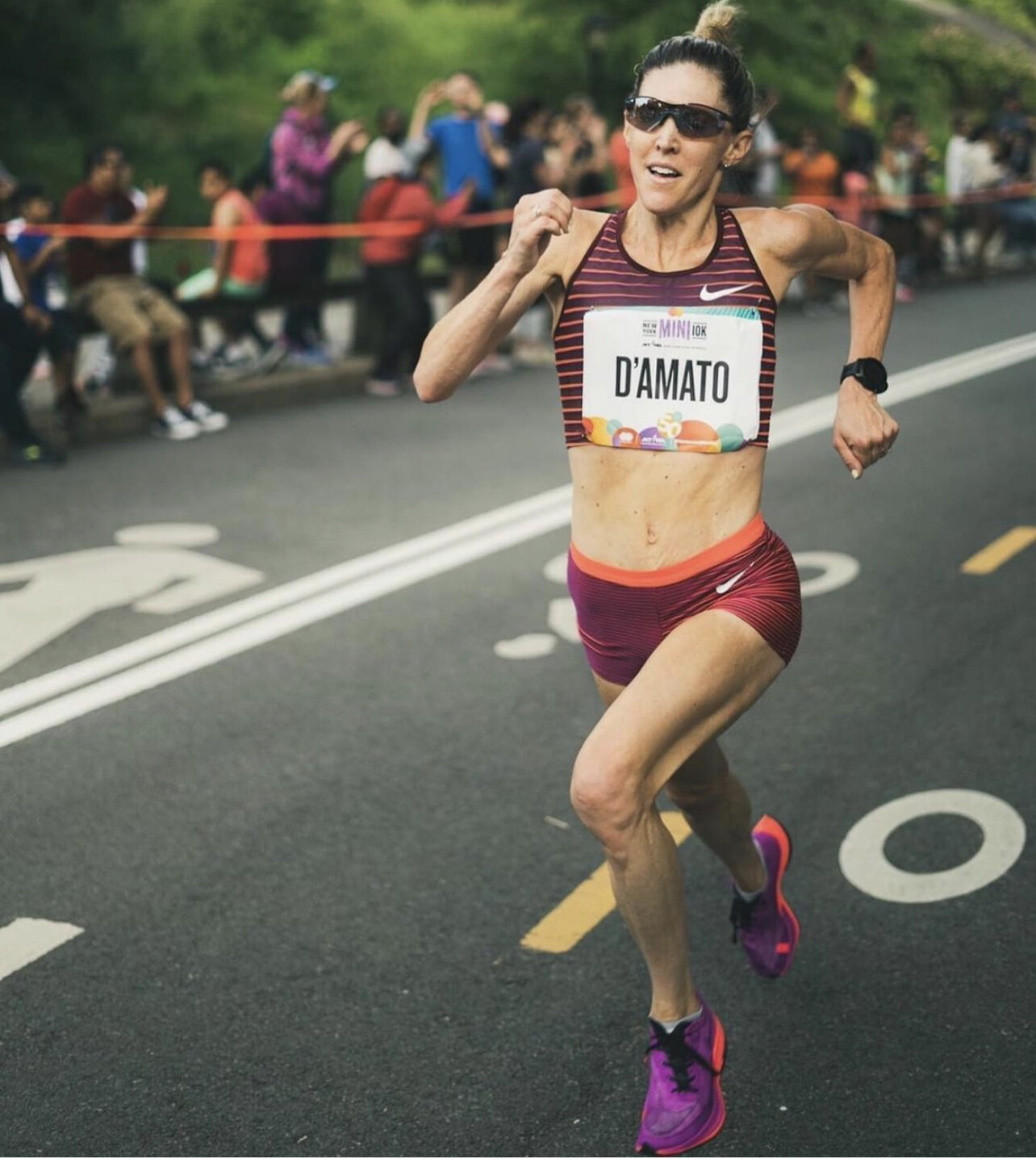
In perfect conditions—temperatures were 50 degrees with just a touch of wind from the west—D’Amato, 38, ran behind a pacesetter on the flat course and averaged 5:05 per mile.
Getting to Oz, however, was full of travel challenges. D’Amato’s flight from her home in Virginia on Sunday was delayed and then canceled. The same happened on Monday. When she finally made it to Los Angeles, she missed her connection, had to spend the night (and do a track workout in there, according to her Instagram).
Once in Australia, D’Amato soaked up the cheers from the local fans.
“The crowds were amazing,” she said in a post-race interview on the race broadcast on YouTube. “Being from another country, hearing my name all over course, it made me feel so powerful today.”
Meanwhile, the back-and-forth duel between Sisson and D’Amato over American records continues.
D’Amato held the American record in the marathon from January 16, 2022, until October 9, 2022, when it was broken by Sisson.
Sisson held the American record in the half marathon from May 7, 2022—until D’Amato broke it.
Emily Sisson posted on Twitter;
Congrats @KeiraDAmato on breaking the U.S. women’s half marathon record today! It’s awesome to be a part of this era of U.S. women’s distance running where records are continuously improving. Especially impressive considering your travel—enjoy the moment Keira.
D’Amato’s next marathon will be at the World Championships in August in Budapest, Hungary.
She makes it clear with every interview that she’s enjoying her return to elite running after 10 years off and having two kids.
“I think when I first came back into running, it was for me,” she said during the post-race interview. “Somewhere along the way, it turned into a we. Doing this for all of us that think, ‘We’re too busy’ or ‘We’re too old.’ Or too whatnot. Feeling people cheer for me, I felt like they were part of my journey.”
by Runner’s World
Login to leave a comment
World class racing returns to Boston on Sunday with the BAA 10K
The BAA 10K is this Sunday in Boston. The elites—as well as a mass field of nearly 10,000 runners—will race through the streets of the Back Bay neighborhood.
Emily Sisson has her eyes on another American record; she’s been on a tear the past year on the roads. In October, at the 2022 Chicago Marathon, she took 43 seconds off Keira D’Amato’s American record, running 2:18:29 for second place. Three months later, at the Houston Half Marathon, she broke her own American record, crossing the line in 1:06:52. She’s setting her sights on Shalane Flanagan’s 10K record of 30:52, which Flanagan set at the 2016 edition of the BAA 10K.
Also toeing the line is Molly Seidel, who’s been running some shorter races to prepare for a fall marathon. In February, she finished eighth at the U.S. Half Marathon Championships in 1:13:08.
A slew of former Boston Marathon champions are also competing on Sunday. Hellen Obiri, who won April’s race, will line up next to two-time champion Edna Kiplagat and 2015 winner Caroline Rotich. The course record of 30:36 could be up for grabs.
The men’s field is highlighted by 2021 Boston Marathon champion Benson Kipruto, who won the BAA 10K in 2018. American Leonard Korir returns as the race’s reigning champion, taking last year’s win in 28:00—12 seconds off the American record of 27:48 that has stood since 1985. Gabriel Geay, Geoffrey Koech, and Tsegay Kidanu should also be in contention.
Those in the Boston area can catch coverage of the race on WCVB. The BAA Racing App will also provide live updates and results, but there is no stream of the race. The elites are scheduled to start at 8 a.m. ET.
by Runner's World
Login to leave a comment
B.A.A. 10K
The 6.2-mile course is a scenic tour through Boston's Back Bay. Notable neighborhoods and attractions include the legendary Bull and Finch Pub, after which the television series "Cheers" was developed, the campus of Boston University, and trendy Kenmore Square. ...
more...Teferi runs 30:12 race record to win New York Mini 10k
Senbere Teferi outsprinted Hellen Obiri to win the New York Mini 10K in a PB and event record of 30:12 on Saturday (10).
Ethiopia’s 2015 world 5000m silver medallist Teferi beat Kenya’s two-time world 5000m gold medallist Obiri by seven seconds to retain her title in New York.
Teferi and Obiri broke away from the rest of the field in the first half of the race, leaving a chase group of Emily Sisson, Laura Galvan, Cynthia Limo, Keira D’Amato and Emily Durgin behind.
The leaders reached the 5km mark in 15:28, 10 seconds inside the half way split recorded by Teferi en route to her win in 30:43 in 2022.
Galvan and Sisson were seven seconds behind them at half way, with Limo and D’Amato another couple of seconds back.
Just before the clock showed 27 minutes, Teferi put in a surge and moved a stride ahead, but Obiri – who won the Boston Marathon in April and the NYC Half in March – was quick to cover it. A minute and a half later, it was Obiri’s turn to push the pace as they hit another hill, but again, Teferi – runner-up behind Obiri at the NYC Half – matched it and they continued to run shoulder to shoulder.
The six-mile marker sent a signal to Teferi and, clearly still feeling good, she kicked again. This time Obiri couldn’t respond and the 28-year-old sprinted away over the final 200m to a successful title defence.
“It was tough,” said Teferi, speaking through an interpreter. “From the beginning, we were running together. It was extremely competitive. On the uphills I could tell she (Obiri) was tiring a bit, so I could pull away then. I also know the course well, so that helped me.”
Although the fastest women’s 10km ever recorded on US soil, Teferi’s performance does not improve the US all-comers’ record as the undulating course is slightly downhill overall, and is therefore not record-eligible.
Mexico’s Galvan finished third in 31:14, while Sisson finished fourth (31:16) and D’Amato fifth (31:23).
Leading results
1 Senbere Teferi (ETH) 30:122 Hellen Obiri (KEN) 30:193 Laura Galvan (MEX) 31:144 Emily Sisson (USA) 31:165 Keira D’Amato (USA) 31:236 Cynthia Limo (KEN) 31:277 Emily Durgin (USA) 31:358 Kellyn Taylor (USA) 32:159 Edna Kiplagat (KEN) 32:1710 Emma Grace Hurley (USA) 32:32
by World Athletics
Login to leave a comment
New York Mini 10K
Join us for the NYRR New York Mini 10K, a race just for women. This race was made for you! It’s the world’s original women-only road race, founded in 1972 and named for the miniskirt, and it empowers women of all ages and fitness levels to be active and to look and feel great on the run. Every woman who...
more...International Stars and Record-Holders to Clash at New York Mini 10K
TCS New York City Marathon champion Sharon Lokedi to challenge Boston Marathon champion Hellen Obiri; record-holders Emily Sisson and Keira D’Amato to lead Americans.
This year’s Mastercard® New York Mini 10K, the first women-only road race in the world, will feature Olympians, Paralympians, national-record holders and past event champions in what is expected to be the largest race in the event’s 51-year history with around 9,000 runners on Saturday, June 10 in Central Park.
The Mini 10K, which began in 1972 as the first women-only road race known then as the Crazylegs Mini Marathon, has gone on to garner more than 200,000 total finishers to date. Former NYRR President Fred Lebow named the race after the miniskirt, which back then was in vogue. A total of 72 women finished the first race, and three weeks later, Title IX was signed into law, guaranteeing girls and women the right to participate in school sports and creating new opportunities for generations of female athletes.

The open division will be headlined by TCS New York City Marathon champion Sharon Lokedi of Kenya, Boston Marathon champion Hellen Obiri of Kenya, and two-time Olympian and defending event champion Senbere Teferi of Ethiopia. Joining them will be a strong American contingent led by Olympian and U.S. marathon record-holder Emily Sisson, and U.S. 10-mile record holder Keira D’Amato.
Lokedi, who will return to Central Park for the first time since winning the TCS New York City Marathon in her marathon debut in November, was the runner-up at last year’s Mastercard® New York Mini 10K. Obiri, a two-time Olympic and seven-time world championships medalist, will be making her debut in the race after winning the United Airlines NYC Half in March and the Boston Marathon in April.
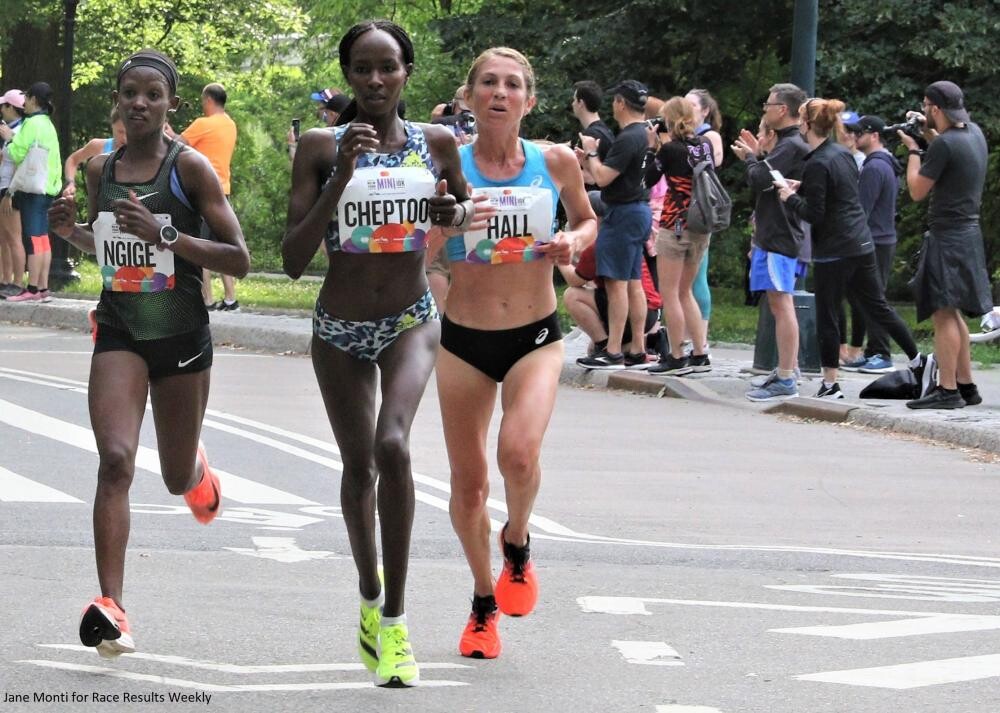
“The last time I was in New York, my entire life changed when I won the TCS New York City Marathon,” Lokedi said. “This iconic city will now always hold a special place in my heart and I’m eager to keep improving and show that I’m on top of the podium to stay.”
“There is no greater feeling than having my daughter watch me win races, and having her with me when I won the United Airlines NYC Half and Boston Marathon this year was truly special,” Obiri said. “Now, I’m looking forward to lining up for the women-only Mastercard Mini 10K for the first time, and having so many girls from the next generation watch me race, just like my daughter does.”
Teferi is a two-time Olympian who won the 2022 United Airlines NYC Half in an event-record time and returned to Central Park three months later to win her first Mastercard® New York Mini 10K. She is also a two-time World Championships silver medalist and the 5K world-record holder for a women-only race.
“Winning the 50th edition of the Mastercard New York Mini 10K last year was very emotional for me, and I was proud to lead thousands of women in celebration,” Teferi said. “I’m excited to return to Central Park again, which has been so kind to me in recent visits.”
Susannah Scaroni, a two-time Paralympic medalist, is the most dominant woman in wheelchair racing now as the defending champion of the TCS New York City Marathon, Boston Marathon, and Chicago Marathon. She has won the wheelchair division of the Mastercard® New York Mini 10K every year since it first began in 2018, and has previously set the world-best 10K mark at the race. This year, in addition to racing the likes of U.S. Paralympians Jenna Fesemyer and Hannah Dederick in the wheelchair division, she will serve as an ambassador for the NYRR Run for the Future program at the event.
NYRR Run for the Future is a free seven-week program is for high school girls in New York City with little to no running experience. It introduces participants to running and wellness through practices and panels focused on mental health, nutrition, and body image – some of which Scaroni has helped lead. At the end of the seven weeks, participants will take part in their first-ever 5K at the Mini 10K with Scaroni cheering them on at the finish line. Mastercard® will make a donation of $10,000 to NYRR Run for the Future – $5,000 on behalf of the open division champion and $5,000 on behalf of the wheelchair division champion.
“I’ve been fortunate to compete at this event since the addition of the professional wheelchair division to the Mini 10K in 2018, and I’ve absolutely loved everything about competing at this race,” Scaroni said. “This year, I’m thrilled to be giving back to NYRR and the next generation of women at the event by serving as an NYRR Run for the Future Ambassador cheering on the Run for the Future participants as they run their first-ever 5K will be incredible.”
The Mastercard® New York Mini 10K will offer $45,000 in total prize money, including $10,000 to the winner of the open division and $2,500 to the winner of the wheelchair division.
The professional athlete races will be streamed live on USATF.TV beginning at 7:40 a.m. ET. Mastercard® will serve as title sponsor of the event for the third time, and as part of its on-going partnership with NYRR will also serve as the presenting sponsor of professional women’s athlete field.
by Running USA
Login to leave a comment
New York Mini 10K
Join us for the NYRR New York Mini 10K, a race just for women. This race was made for you! It’s the world’s original women-only road race, founded in 1972 and named for the miniskirt, and it empowers women of all ages and fitness levels to be active and to look and feel great on the run. Every woman who...
more...SAINA VICTORIOUS and KORIR REPEATS AT THE USATF 25 KM CHAMPIONSHIPS
GRAND RAPIDS, Michigan — It was a thrilling morning of racing in Grand Rapids on Saturday, as both the women’s and men’s races came down to the final mile, with Betsy Saina earning her first USATF title and Leonard Korir repeating as champion at the USATF 25 km Championships.
The USATF 25 km championships was hosted by the Amway River Bank and is the sixth stop on the USATF Running Circuit.

The women started first Saturday morning in Grand Rapids, and as the gun sounded it was USATF Running Circuit veteran Dakotah Lindwurm jumping to the early lead and setting a pace that immediately strung out the field. Lindwurm, along with other top competitors, would eventually pack up and run much of the front half of the race together.
As the lead pack passed the 10 km split, Lindwurm continued to drive the pace, while the remaining athletes in the group, Saina, Keira D’Amato, Jessa Hanson, Jeralyn Poe, and Nell Rojas all seemed content letting Lindwurm pace the way up front.
By 15 km, the trio of Lindwurm, Saina, and D’Amato were the remaining three runners up front, with Hanson and Poe running together a few seconds back. Eventually, D’Amato put in a surge to jump to the lead, as Lindwurm dropped off pace and connected with Hanson and Poe.
The move put D’Amato and Saina up front, claiming valuable seconds between themselves and the chase group as the final stages of the race were now upon them. D'Amato and Saina started to work together, and while Lindwurm and Hanson worked to try to maintain contact, their effort eventually couldn’t match that of the front running duo.
With just under a mile and a half to go, Saina put in a surge that D’Amato simply couldn’t match. Saina charged forward, never looking pack, working hard to create crucial space between her and D’Amato. As the finish came into view, Saina nearly missed the final turn, allowing D’Amato to regain a few seconds on her rival, but ultimately Saina held off D’Amato, claiming her first USATF title as she crossed the line in 1:24:32.
D’Amato claimed the runner-up spot at the USATF 25 km Championships for the second year running, this time crossing the finish in 1:24:39, adding another strong result to her young 2023 campaign. Behind the leading duo, Hanson held off Lindwurm for third, crossing the finish in 1:25:33, while Lindwurm held on over the final miles to claim fourth overall in 1:25:58. Rojas and Poe stayed close to the chase, as well, taking home fifth and sixth place in 1:26:19 and 1:26:32. With their third and fifth place finishes, Hanson and Rojas leapt Emma Hurley in the USATF Running Circuit overall standings, as the duo are now tied for first with 29 points.
Hurley now sits third with 22 points, having not raced Saturday in Grand Rapids. Breanna Sieracki took home seventh in 1:28:43, Mackenzie Caldwell claimed eighth in 1:29:19, Katrina Spratford-Sterling earned ninth in 1:30:13, and Joanna Stephens finished tenth for the second consecutive year with a 1:30:49 finish.
As the men’s race got underway, reigning champion Korir and Thomson jumped to the lead immediately, pushing the early pace and dropping the majority of the field within the first 5 km, leaving a small group of only eight men in the lead pack.
Over the next 5 km, Korir and Thomson would continue to lead, with USATF Running Circuit veterans Brian Shrader and Joel Reichow, along with Connor Winter, making a top group of five runners. Rolling along, the lead pack passed through 15 km, with Reichow dropping off the group, leaving four men to race the final 10 km in Grand Rapids. Winter would eventually fall off pace, making it a three-man race to the finish with less than 5 km to go.
With a mile to go, Korir started to push the pace, one that both Shrader and Thomson couldn’t match. Korir used his experience in Grand Rapids, picking it up around the curves of the final stages of the race, putting enough space on his competition to hold on to victory, repeating as USATF 25 km champion in 1:14:45.
Thomson was able to hold off Shrader over the final quarter mile of the race, taking second place in 1:14:49 to Shrader’s third place effort of 1:14:53. Korir’s finish pushed him into the top spot in the USATF Running Circuit overall rankings with 46 points. Thomson’s runner-up effort kept him in second, but moving ahead of Hillary Bor in points, totaling 43 points through six races on this year’s circuit. Shrader’s third place effort moved him up to fourth, five points behind Bor’s 31-point total with 26 points.
Winter held on to fourth place, running a magnificent race from start to finish, crossing the line in 1:15:30. John Dressel and Reichow finished fifth and sixth overall in 1:16:06 and 1:17:12 respectively. Rounding out the top ten, Jarrod Ottman ran to seventh in 1:18:58. Adam Walker and Will Norris both ran under 1:20:00, with 1:19:06 and 1:19:21 eighth and ninth place finishes. Brendan Gregg took home tenth in 1:22:27, outlasting two-time USATF 25 km champion Fernando Cabada, who took eleventh with the same time. The seventh and eighth stop on the 2023 USATF Running Circuit are the USATF Women’s 6 km Championships in Canton, Ohio, and the USATF Men’s 8 km Championships in Kingport, Tennessee, both events taking place on July 15.
Login to leave a comment
Famed Costumed Runner Finishes Broad Street Run as Charles Barkley
This was not Rusty Burrell's first race dribbling a basketball.
Rusty Burrell is making a name for himself in the running community by running as other athletes, but not in the bib-swapping sense. Burrell ran last weekend’s Broad Street Run dressed as Charles Barkley while dribbling a basketball in 1:31:55.
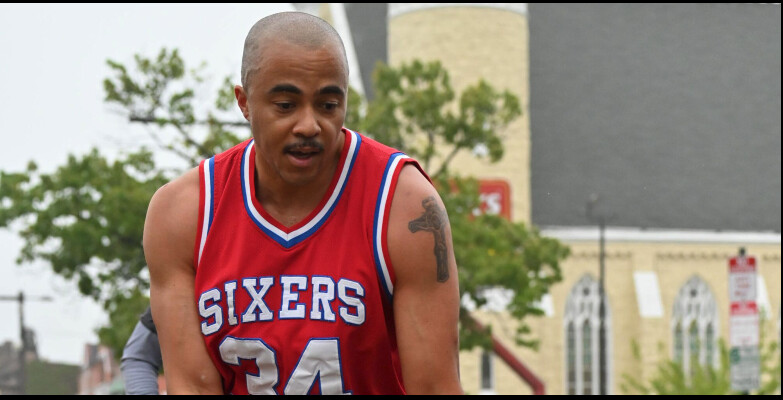
Burrell, 37, covered last year’s Broad Street course dressed as 76ers legend Allen Iverson, a smidge slower, in 1:32:40.
The former college runner previously told Runner’s World that “running in costume is a fun twist on doing these races.”
In the past he’s also run races as a Star Wars Stormtrooper, wearing a Washington Nationals uniform, and a full University of Richmond football uniform—shoulder pad, helmet, and football included.
A week prior to the Broad Street Run, Burrell ran as Darth Vader, on which Keira D’Amato commented, “Yesterday someone asked me if I saw the dude wearing the Darth Vader outfit at the race… you are a legend!!!”
Burrell's run was even featured on NBA on TNT, which features none other than Charles Barkley himself, who said, "I got so tired running those 10 miles...Hey man, thanks for the love, Rust."
by Runner’s World
Login to leave a comment
Who Will Run the World Championships Marathon for the U.S. This Summer?
The three men and three women are selected by a descending order time list. But not everyone accepts their spot. Over 9 days in August, the World Athletics Championships will take place in Budapest, Hungary. The women’s marathon is scheduled for August 26, and the men’s is August 27, the last day of competition.
USA Track and Field (USATF) uses different selection procedures for this event than it does for the Olympic Games. Instead of using a Trials race, as it does for the Olympics, USATF offers spots to athletes using a descending order time list for certain marathons run between December 1, 2021, and May 30, 2023, as long as those athletes have met the qualifying criteria set by World Athletics. (The rules are complicated. For instance, the Boston Marathon is not on the list of “World Athletics approved” courses, but USATF is allowing times run at Boston in 2022 and 2023 for the descending order list.)

Not every American athlete will accept a spot, if offered. Some instead will choose to focus on a fall marathon, where they can earn substantial appearance fees and prize money that aren’t offered at worlds. Others won’t race at all this summer or fall, and instead they’ll train for the Olympic Marathon Trials in February 2024. How is it likely to shake out? Runner’s World reached out to the top seven men and women currently on the list or their coaches or agents to inquire about their plans. The window to run a qualifying time, however, remains open until the end of May. So a top performance in the next month could shake up the list.
Here’s what they said:
Women
Emily Sisson, 2:18:29, 2022 Chicago Marathon: Not likely, per her agent, Ray Flynn
Keira D’Amato, 2:19:12, 2022 Houston Marathon: Yes, if offered a spot
Betsy Saina, 2:21:40, 2023 Tokyo Marathon: No, she is focusing on a fall marathon
Sara Hall, 2:22:10, 2022 World Championships marathon: Has not yet decided
Emma Bates, 2:22:10, 2023 Boston Marathon: Not likely, per her agent, Ray Flynn
Susanna Sullivan, 2:24:27, 2023 London Marathon: Yes, if offered a spot
Aliphine Tuliamuk, 2:24:37, 2023 Boston Marathon: Will consider if offered a spot, per her agent, Hawi Keflezighi
Wild card: Will Molly Seidel run a May marathon?
Men
Conner Mantz, 2:08:16, 2022 Chicago Marathon: Not likely, per his agent, Ray Flynn
Scott Fauble, 2:08:52, 2022 Boston Marathon: No Elkanah Kibet, 2:09:07, 2022 Boston Marathon: Yes, currently deployed with the U.S. Army in Poland but will accept a spot if offered
Zachery Panning, 2:09:28, 2022 Chicago Marathon: Yes, per coach Kevin Hanson
Leonard Korir, 2:09:31, 2023 Paris Marathon: Did not immediately respond to a message from Runner’s World
Galen Rupp, 2:09:36, 2022 World Championships marathon: No, will run a fall marathon, per his agent, Ricky Simms
Futsum Zeinasellassie, 2:09:40, 2023 Rotterdam Marathon: Will consider if offered a spot, per his agent, Hawi Keflezighi
Wild card: Biya Simbassa runs the Prague Marathon, his debut, on May 7.
by Runner’s World
Login to leave a comment
Eliud Kipchoge is human afterall
Eliud Kipchoge came to Boston seeking to add the world’s most storied annual marathon to his unrivaled trophy case. He will leave with a sixth-place result and questions about whether he can achieve two outstanding, unprecedented goals.
“I live for the moments where I get to challenge the limits,” was posted on Kipchoge’s social media four hours after he finished. “It’s never guaranteed, it’s never easy. Today was a tough day for me. I pushed myself as hard as I could but sometimes, we must accept that today wasn’t the day to push the barrier to a greater height.”
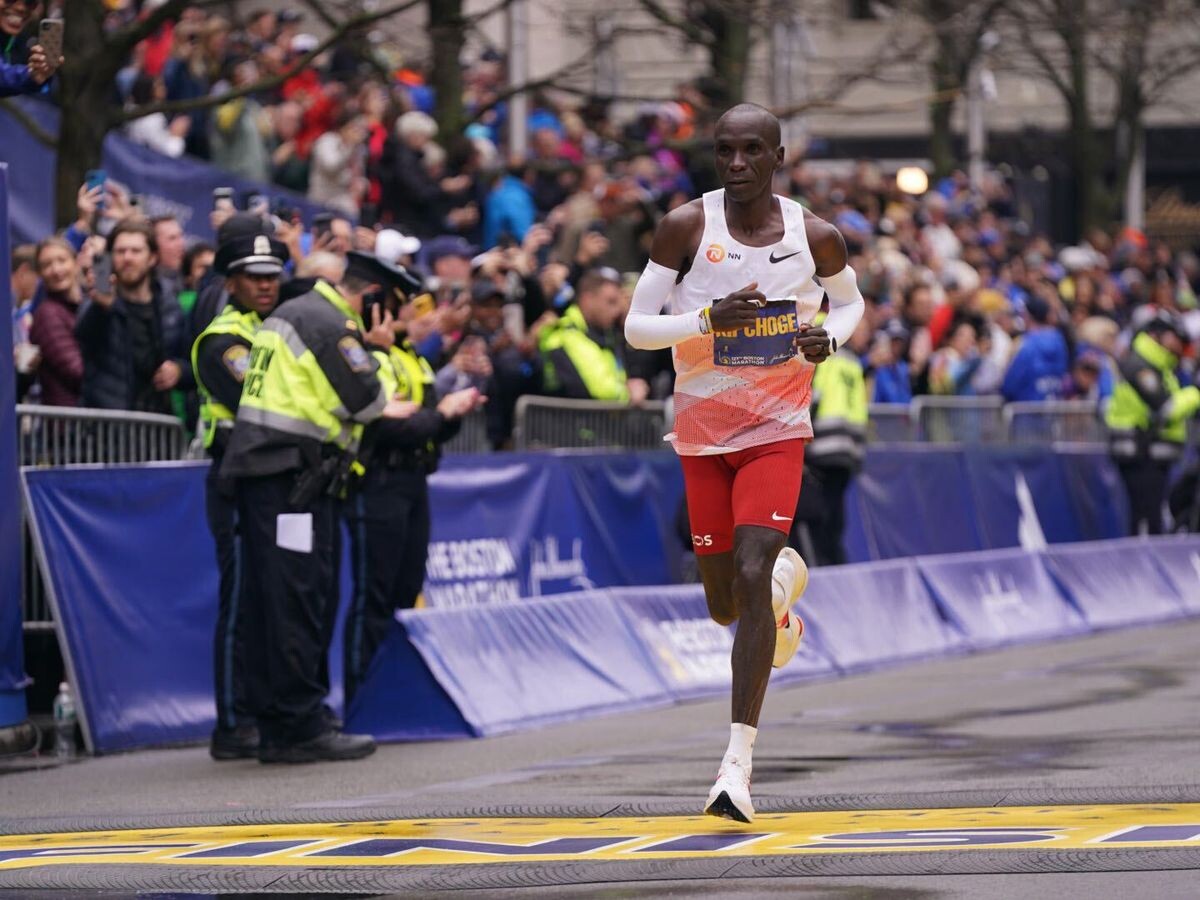
Kipchoge was dropped in the 19th mile in his Boston Marathon debut in the middle of the race’s famed hills. He finished 3 minutes, 29 seconds behind fellow Kenyan Evans Chebet, who clocked 2:05:54 and became the first male runner to repeat as Boston champion since 2008.
“I did not observe Kipchoge,” Chebet said of what happened, according to the Boston Athletic Association. “Eliud was not so much of a threat because the bottom line was that we trained well.”
It marked just Kipchoge’s third defeat in 18 career marathons, a decade-long career at 26.2 miles that’s included two world record-breaking runs and two Olympic gold medals.

Kipchoge, 38, hopes next year to become the first person to win three Olympic marathons, but major doubt was thrown on that Monday, along with his goal to win all six annual World Marathon Majors. Kipchoge has won four of the six, just missing Boston and New York City, a November marathon that he has never raced.He skipped his traditional spring marathon plan of racing London to go for the win in Boston, the world’s oldest annual marathon dating to 1897.
Kipchoge has yet to speak to media, but may be asked whether a failed water bottle grab just before he lost contact with a leading pack of five contributed to his first defeat since he placed eighth at the 2020 London Marathon. Boston’s weather on Monday, rainy, was similar to London in 2020.
Kipchoge’s only other 26.2-mile loss was when he was runner-up at his second career marathon in Berlin in 2013.
He is expected to race two more marathons before the Paris Games. Kipchoge will be nearly 40 come Paris, more than one year older than the oldest Olympic champion in any running event, according to Olympedia.org. Kenya has yet to name its three-man Olympic marathon team.
“In sports you win and you lose and there is always tomorrow to set a new challenge,” was posted on Kipchoge’s social media. “Excited for what’s ahead.”
Kenyan Hellen Obiri won Monday’s women’s race in 2:21:38, pulling away from Ethiopian Amane Beriso in the last mile.
Obiri, a two-time world champion and two-time Olympic medalist in the 5000m on the track, made her marathon debut in New York City last November with a sixth-place finish. She was a late add to the Boston field three weeks ago after initially eschewing a spring marathon.
“I didn’t want to come here, because my heart was somewhere else,” said Obiri, who is coached in Colorado by three-time U.S. Olympian Dathan Ritzenhein. “But, my coach said I should try and go to Boston.”
Emma Bates was the top American in fifth in the second-fastest Boston time for an American woman ever, consolidating her status as a favorite to make the three-woman Olympic team at next February’s trials in Orlando. Emily Sisson and Keira D’Amato, who traded the American marathon record last year, didn’t enter Boston.
“I expected myself to be in the top five,” said the 30-year-old Bates, who feels she can challenge Sisson’s American record of 2:18:29, if and when she next races on a flat course.
The next major marathon is London on Sunday, headlined by women’s world record holder Brigid Kosgei of Kenya, Tokyo Olympic champion Peres Jepchirchir of Kenya and Olympic 5000m and 10,000m champion Sifan Hassan of the Netherlands in her 26.2-mile debut.
by Olympic Talk
Login to leave a comment
Boston Marathon
Among the nation’s oldest athletic clubs, the B.A.A. was established in 1887, and, in 1896, more than half of the U.S. Olympic Team at the first modern games was composed of B.A.A. club members. The Olympic Games provided the inspiration for the first Boston Marathon, which culminated the B.A.A. Games on April 19, 1897. John J. McDermott emerged from a...
more...Emily Sisson withdraws from 2023 London Marathon due to hip injury
The stacked women’s field at 2023 TCS London Marathon will not include American record holder Emily Sisson. At 7:00 am ET today, the race announced Sisson had withdrawn from the race and then a few hours later Sisson explained why in an Instagram post.
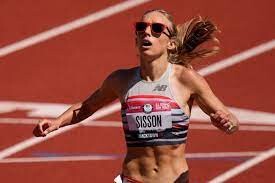
“I tweaked something in my hip during a workout a few weeks ago, and it just didn’t quite heal fast enough! I have taken a few days off since then & have been slowly increasing my runs—and things are feeling a lot better!” wrote Sisson. “Initially I was pretty bummed, but I’m going to pivot to some shorter races this summer instead now! And I will do a marathon later this year. I will keep my race schedule posted.”
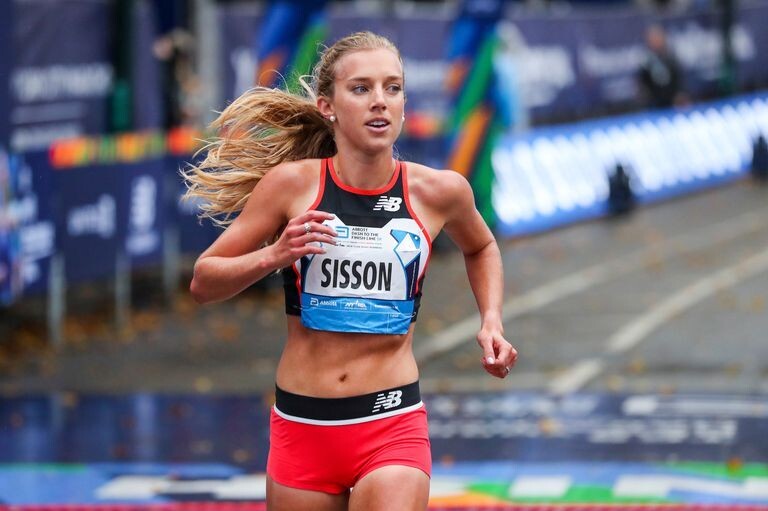
Sisson’s withdrawal comes just 13 days after the former American record holder Keira D’Amato told Runner’s World she also wouldn’t be competing in London due to a tweaked knee.
The race also announced today that the fourth fastest Brit in history, Jess Piasecki (2:22:27 pb) , would not be competing as well due to injury. Since the race announced its record-breaking lineup in February, a number of people have withdrawn besides the two Americans and Piasecki. Also withdrawing have been the 5th fastest woman in history Tigist Assefa (2:15:37 pb) of Ethiopia, Australian record holder Sinead Diver (2:21:34), as well as Brits Charlotte Purdue (2:23:16 pb) and Stephanie Davis (2:27:16 pb).
by Robert Johnson
Login to leave a comment
TCS London Marathon
The London Marathon was first run on March 29, 1981 and has been held in the spring of every year since 2010. It is sponsored by Virgin Money and was founded by the former Olympic champion and journalist Chris Brasher and Welsh athlete John Disley. It is organized by Hugh Brasher (son of Chris) as Race Director and Nick Bitel...
more...Unbelievable! Camille Herron Shatters 48-Hour World Record
She covered 270.5 miles in two days of running.
She averaged 10:39 per mile pace, which included at least one 40-minute nap, according to her Instagram, so her actual moving pace was faster.
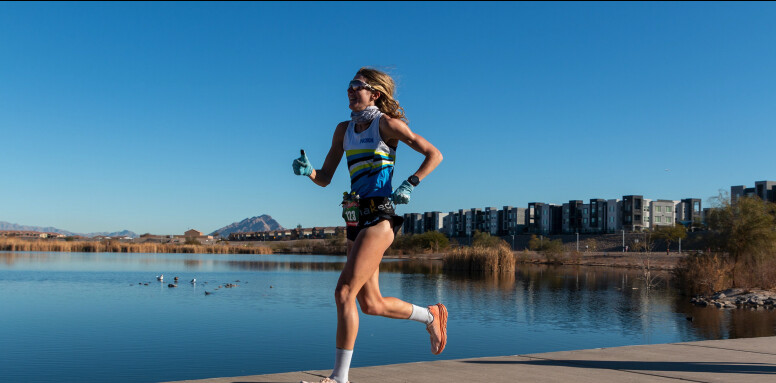
She hit 148 miles for the first 24 hours, and 122.5 miles in the second day, as rain poured down on the runners. Only two men have ever run farther over 48 hours. She covered 1,088 laps of the track.
Herron, 41, ran marathons in the early part of her career, recording a personal best of 2:37:14 in 2012 in Houston. She began running ultra distances in 2015 and found immediate success. She won the 2017 Comrades Marathon in South Africa, and she’s also the world record holder for 100 miles, 12 hours, and 24 hours.
In a phone call with Runner’s World before she left for Australia, Herron said she planned to take 6- to 8-minute power naps a couple of times in the first 24 hours. “A lot of 24-hour runners don’t sleep at all for 24 hours, but I found when I did that little bit of lying down and closing my eyes and meditating, it really helped me,” she said. “I was able to extend my 24-hour record by 5 miles.
“You hear about hallucinations with ultra runners,” she continued. “When I start to feel that happening with my brain is when I lie down.”
Earlier in her career she was sponsored by Nike and Hoka, but at the end of 2022 she left Hoka and signed a new deal with Lululemon.
Other elite runners weighed in on the snippets of video posted to Herron’s instagram during the event. Colleen Quigley, Keira D’Amato, and Zach Bitter were among those expressing their admiration for Herron’s feat.
Camille Herron destroyed the world record for 48 hours of running, covering 435.336 kilometers (270.5 miles) around a 400-meter track in Bruce, Australia.
The previous record, 411.5 kilometers (255 miles), was set by Jo Zakrzewski of Great Britain in February. Herron exceeded that by 15.5 miles. She bested the previous record about 45 hours into the event—and kept running for almost another 3 hours after that.
by Runner’s World
Login to leave a comment
Defending Champions Return to Run 50th Anniversary Credit Union Cherry Blossom 10 Mile
Organizers of the 50th annual Credit Union Cherry Blossom 10 Mile (CUCB) announced today the first of two rounds of news about this year’s invited field; look for the second announcement to come out on Wednesday, March 29. Today’s announcement features past champions and top-5 finishers expected to toe the respective men’s and women’s starting lines on Sunday, April 2. (The elite women will start first, at 7:18 a.m., followed by the men and the masses at 7:30 a.m.)
Three past champions are part of the women’s elite field: Susanna Sullivan, last year’s women’s champion from Reston, VA; 2021 champion Nell Rojas from Boulder, CO; and 2013 champion Caroline Rotich, a Kenyan who lives in Colorado Springs, CO. As part of the 50th celebration two additional former champions are entered: Colleen De Reuck from Boulder, CO, who won the race in 1998 and still holds the women’s course record of 51:16; and 1973 winner Kathrine Switzer.
Other top women finishers from past 10 Miles include: Carrie Verdon from Boulder, CO, who placed second last year; Paige (Stoner) Wood, last year’s third place finisher from Flagstaff, AZ; Sara Hall, also from Flagstaff, who placed fourth in 2014; and Flagstaff’s Diane Nukuri, who was fifth in 2018.
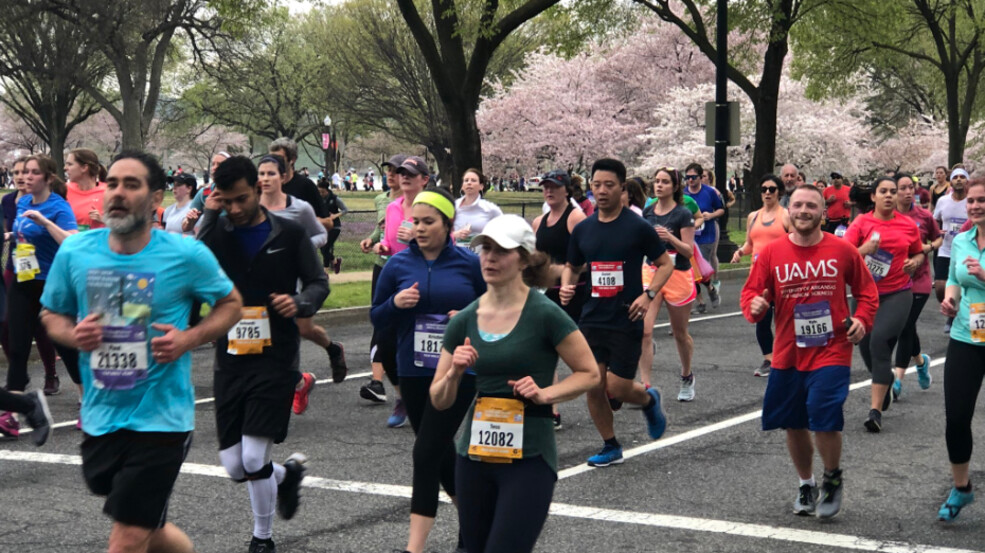
In the men’s race, the top-three finishers from 2022 return. All hailing from Kenya, they include champion Nicholas Kosimbei, second-place runner Wilfred Kimitei, and third-place finisher Shadrack Kimining. They’ll be joined on the starting line by second-place finisher in 2021 Abbabiya Simbassa from Flagstaff, AZ. Returning for the 50th running and starting a little bit farther back in the pack will be Bill Rodgers, from Boxborough, MA, who won the race four consecutive times between 1978 and 1981; placed second in 1982 and third in 1983; and has run CUCB a total of 22 times. Greg Meyer, whose American record of 46:13 still stands 40 years later, will be present for the 50th celebration, and will be holding the tape for the first American male finisher, who will be in hot pursuit of Greg’s mark — there’s a $50,000 shared bonus on the line for any American Records or World Bests set at the event.*
“It’s always a vote of confidence in the reputation of the event to see a large number of top finishers from previous years coming back. I am excited about this year’s set of repeaters, both past and present. This is another factor that will make our 50th anniversary special,” said Event Director Phil Stewart.

This year, international elite runners will be competing for $40,000 in prize money. The prize purse for Americans totals $25,000, and American runners placing in the top-10 overall are eligible to receive both open and American-only prize money. There is an additional $6,000 in RRCA RunPro Alumni Development Awards — runners eligible for the RRCA awards can also collect top-10 open and/or top-10 American payouts.
There is also a time-based set of bonus payments on offer for fast times:
• $50,000 to be shared by any runners setting a World Best or American Record*• Time incentives of $1,000 for the 1st male to run sub-46 minutes and 1st female to run sub-52 minutes, with an additional $750 on offer should a second male and/or female achieve those same sub-46 and sub-52 minute milestones.
The 10 Mile will serve as the USATF 10 Mile Championships, the RRCA National 10 Mile Championships, and the 2022-2023 Professional Road Racing Organization (PRRO) Circuit Championship.
Winners of the individual 2022-2023 PRRO Circuit events will be eligible for the $10,000 PRRO Super Bonus by winning the PRRO Championship (the bonus is split if an eligible male and female win the Championship). Susanna Sullivan and Nicholas Kosimbei are eligible for the PRRO Super Bonus. Any non-eligible winner of the PRRO Championship Super Bonus will earn $2500.
* If World Best times and American Records for men and women are set by the winners at the event (e.g. four records set), the $50,000 record bonus would be split into four $12,500 shares. If only one World or American record is set for either men or women, the athlete setting the record would get the full $50,000. If an American sets an American record and no other World or American records are set, he or she would receive the entire $50,000 as well. Currently, the times to beat are as follows:• Haile Gebreselassie’s (ETH) World Athletics Best of 44:24, run at the Tilburg 10 Mile in Tilburg, Netherlands, September 4, 2005;• Keira D’Amato’s World Athletics Best in a women’s only race of 51:23, run at the UpDawg 10 Mile in Washington, DC, November 24, 2020;• Greg Meyer’s American Record of 46:13, run at the Cherry Blossom 10 Mile in Washington, DC, March 27, 1983; and• Keira D’Amato’s previously mentioned World Best 51:23, which is also the American Record for a women’s only race.
For reference, the fastest CUCB time among the men’s field announced today is Kosimbei’s 45:15, which tied the event record set by Kenya’s Allan Kiprono in 2012. Among the elite women, Nell Rojas’s 52:13 from 2021 is the best CUCB finish time among this year’s elite entrants. Abbabiya Simbassa’s 46:18 from 2021 is the best CUCB mark among the American men, while Nell’s 52:13 is, of course, the leading mark among the American women.
The inaugural Cherry Blossom Ten Mile in 1973 was won by Sam Bair, in a time of 51:22; the women’s winner was Kathrine Switzer, in a time of 1:11:19; 127 men and 12 women ran that first race. Bill Rodgers holds the honor of most victories, with four consecutive wins between 1978 and 1981. Three women have each won the race three times: Julie Shea (1975-77), Lisa Weidenbach (1985, '89 and '90) and Lineth Chepkurui (2008-10). Ben Beach leads all Cherry Blossom finishers with an active streak of 49 years. A comprehensive media guide detailing a wide variety of statistics from the first 49 CUCB races is available here.
Thanks to Credit Union Miracle Day’s title sponsorship since 2002, the Credit Union Cherry Blossom Run has raised over $10.2 million for the Children’s Miracle Network Hospitals, including $323,000 in 2022.
About the Credit Union Cherry Blossom 10 Mile:
The Credit Union Cherry Blossom races, organized by Cherry Blossom, Inc., a 501c(3) chapter of the Road Runners Club of America, are known as “The Runner’s Rite of Spring®” in the Nation’s Capital. The staging area for Sunday’s 10 Mile is on the Washington Monument Grounds, and the course passes in sight of all of the major Washington, DC Memorials. In 2023, the reimagined Saturday 5K will stage on Freedom Plaza and traverse the route of Presidential Inaugurations down Pennsylvania Avenue before crossing the National Mall in the shadow of the Capitol Building and returning by the same route. The Kids Run is staged on the grounds of the National Building Museum. All events serve as a fundraiser for the Children’s Miracle Network Hospitals, a consortium of 170 premier children’s hospitals across North America. About one-third of the funds raised support Washington, DC’s own Children’s National (“Children’s Hospital”). The event also funds the Road Runners Club of America’s “Roads Scholar” program designed to support up-and-coming U.S. distance running talent.
Credit Union Miracle Day, Inc., a consortium of credit unions and credit union suppliers, is the title sponsor of the Credit Union Cherry Blossom 10 Mile, 5K, Kids Run and Virtual Run. Current presenting sponsors include ASICS, REI Co-op and Wegmans; supporting sponsors include CACI, Co-op Solutions, CUNA Mutual Group, FinisherPix, Gatorade Endurance, Guayaki, MedStar Health, PSCU, Potomac River Running, Suburban Solutions, The MO Apartments and UPS.
The 10 Mile is a proud member of the PRRO Circuit (PRRO.org), a series of this country’s classic non- marathon prize money road races with circuit stops in Washington, DC; Spokane, WA; and Utica, NY. The 2023 10 Mile will serve as the 2022-2023 PRRO Championship.
In addition to being sanctioned by USA Track & Field and the Road Runners Club of America, the Credit Union Cherry Blossom races have earned Gold Level Inspire Certification from the Council for Responsible Sport in recognition of its legacy of commitment to sustainability and thoughtful resource management.
To learn more, visit CherryBlossom.org and follow the event on social media @CUCB and #CUCB2023.
by David Monti
Login to leave a comment
Cherry Blossom Ten Mile Run
The Credit Union Cherry Blossom is known as "The Runner's Rite of Spring" in the Nation's Capital. The staging area for the event is on the Washington Monument Grounds, and the course passes in sight of all of the major Washington, DC Memorials. The event serves as a fundraiser for the Children's Miracle Network Hospitals, a consortium of 170 premier...
more...Keira D’Amato withdraws from London Marathon After Knee Problem
Keira D’Amato has decided to skip the London Marathon, after inflammation in her left knee in January set her training for the April race back by a few weeks.
D’Amato, 38, said in a phone call with Runner’s World that she tweaked her knee and instead of trying to run through it, she decided to take a couple of days off. Those days turned into a couple of weeks, long enough she would have had to rush her London buildup.
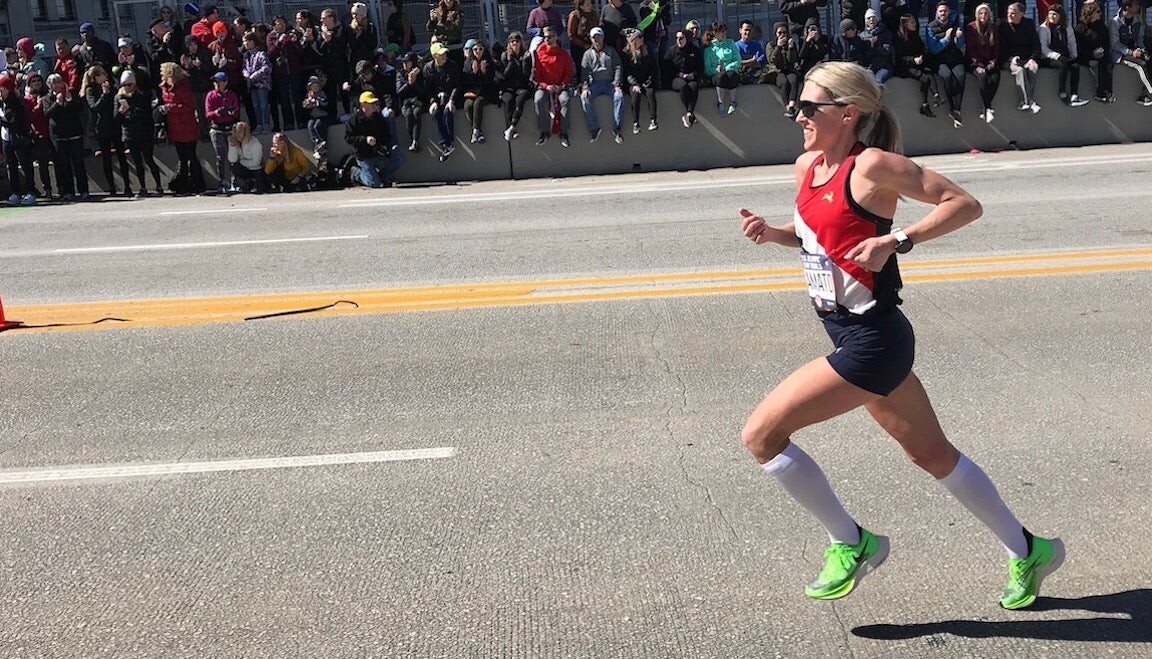
She’s done marathons off of shorter training cycles, including twice last year. She ran the New York City Marathon in November just six weeks after the Berlin Marathon. In New York, she ran 2:31:31—after running 2:21:48 Berlin.
She was also a last-minute replacement for Molly Seidel at the 2022 World Championships in July in Eugene, Oregon. D’Amato finished eighth in 2:23:34, despite being named to U.S. team less than three weeks earlier.
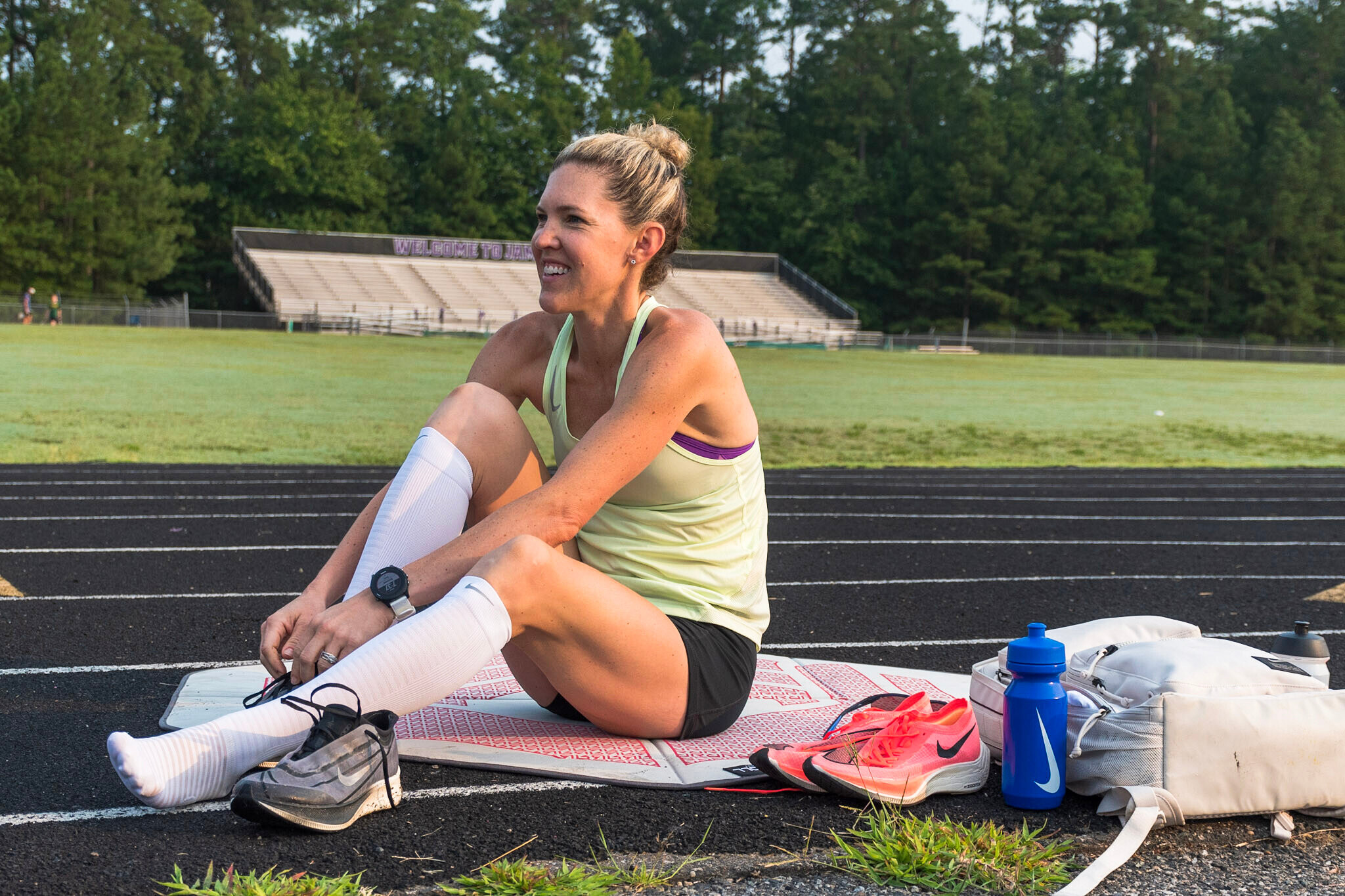
Having done those rushed marathons, D’Amato said, “I want to make sure my next one is totally right.”
She had X-rays and an MRI on her knee—both were negative. She then spent a few days at the Olympic Training Center in Colorado Springs, where she had her form and balance evaluated to make sure nothing structural was contributing to her knee pain. The evaluations turned up nothing.
“I crossed my Ts and dotted my Is,” D’Amato said. “It was a little bit of freak thing.”
She hopes her next marathon will be at the World Championships in August in Hungary. The team will be selected by a descending order time list for marathons run between December 1, 2021, and May 30, 2023. D’Amato has the second-fastest time on the list currently, 2:19:12, from her American record in January 2022 in Houston.
Emily Sisson, who is planning to run London, has the fastest time, 2:18:29. She broke D’Amato’s record in October in Chicago. The idea of a head-to-head matchup between the country’s two fastest marathoners in London had fans excited.
D’Amato, however, is looking forward. She is beginning her build now for August, and she hopes if it goes well, she’ll be racing at shorter distances on the roads through the spring and summer. She feels she has more great marathon performances in her.
by Sarah Lorge Butler
Login to leave a comment
TCS London Marathon
The London Marathon was first run on March 29, 1981 and has been held in the spring of every year since 2010. It is sponsored by Virgin Money and was founded by the former Olympic champion and journalist Chris Brasher and Welsh athlete John Disley. It is organized by Hugh Brasher (son of Chris) as Race Director and Nick Bitel...
more...Designing a Shoe for “The Running Class”
Why Tracksmith, an apparel brand immersed in the culture and heritage of running, started making shoes
Several times every month, Matt Taylor can be spotted wearing a well-worn gray cotton T-shirt on his daily morning runs in suburban Boston.
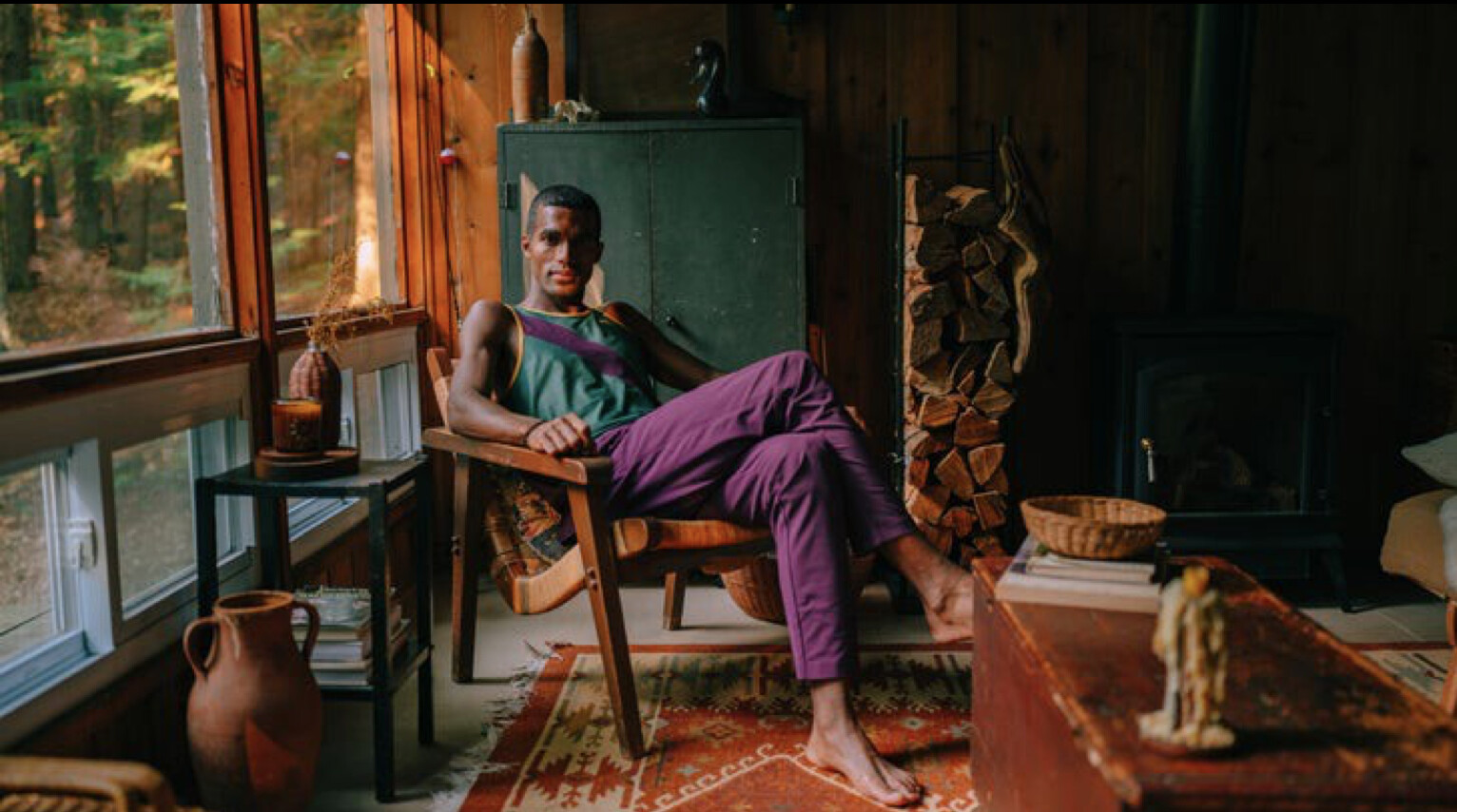

The “Tracksmith” lettering across the front has faded after an estimated 1,000 miles of running and more than a 100 cycles through the wash, but the original Grayboy brand produced at Tracksmith’s inception, in 2014, has otherwise held up pretty well.
To Taylor, the 45-year-old co-founder, CEO, and primary visionary for the venture capital-backed upstart, it’s a personal reminder and validation of the quality Tracksmith strives for in everything it makes, but also tied to the durable functionality necessary for the authentic daily training of a committed runner. It hearkens back to the previous generations of runners who toiled in the daily grind, another key element of Tracksmith’s vibe.
“We want to make high-quality products with the best raw materials, but we think about value, not price,” Taylor says. “If we can create a product that has a lot of value because of those things—durability, some performance characteristics, even something that aesthetically that looks and feels a lot better than anything else in the market—that’s where we put our focus.”
After eight years of making a name for itself in the apparel business, Tracksmith is making new waves at the start of 2023 with the launch of its first shoe, the Eliot Runner. It’s a retro-inspired, everyday training model with a modern Pebax midsole and insole that embodies the look and quality craftsmanship the brand has become known for, while also celebrating the culture of the sport.
The Eliot Runner is designed to be a performance-oriented training workhorse that’s capable of long runs, up-tempo workouts, recovery runs, and, well, just about any kind of running except for racing. And true to the brand’s running lifestyle aesthetic, it also looks nice with jeans.
The new shoe, like a lot of Tracksmith’s running apparel, ranks at the higher end of the price range for training models, but that’s directly related to the high-quality products it strives to produce, Taylor says. Tracksmith is focused on style, quality, and running culture. Those three tenets are baked into everything it produces—its apparel line, its thoughtful storytelling content, and now, its training shoe—by way of premium materials and a distinctive design aesthetic rooted in the heritage of the sport.
“It’s about being uncompromising on performance, but bringing more of a refined look to it, too,” says Tracksmith brand president Ryan Eckel, who previously worked alongside Taylor when both held marketing roles at Puma more than a decade ago. “When the company launched with apparel, it was able to rethink the aesthetic of what traditionally would look like for running, and we’ve tried to take that approach to footwear as well.”
When Tracksmith burst onto the scene as a premium running apparel brand in 2014, it didn’t intend to be a disruptor, but it quickly caught the attention of the marketplace with its retro vibe. It comes across as proud of its small but growing indie status, while relentlessly waving the flag of the “running class,” non-professional yet competitive runners dedicated to the pursuit of personal excellence.
At the time, the running apparel market was dominated by running shoe companies and outdoor brands focused primarily on making brightly colored nylon and spandex clothes in the midrange price point.
Tracksmith’s rise, along with Oiselle, Ciele, and Rabbit at about the same time, opened the floodgates for a wave of upstart apparel brands blending style and performance, including Roark, Saysky, Bandit Running, Satisfy, and Territory Run Co.
“Running apparel was not very inspired back then,” says Taylor, himself a former collegiate steeplechase runner. “All the resources were going into footwear, creating an opportunity to come out with product that was higher quality, with a different style and aesthetic to it, that was built from the subculture of running. That was a really powerful way to launch the brand, and it also created some reactions from people who were not sure what to make of it.”
In its early years, Tracksmith’s disruption was met with some resistance by an aging adult running population dominated by Baby Boomers and Gen Xers, but it found a connection with Millennials and Gen Z’ers who were interested in a different look and deeper meaning in their identity to running. Tracksmith has served that up continually with authentic, multi-platform storytelling.
Although runners have known Tracksmith as an apparel company, they’ve also been able to immerse in the brand’s social media posts, TV commercials, printed catalogs, and Meter magazine, all providing an immersive look into the sport. Prior to working at Puma, Taylor was an independent filmmaker who produced a series called “Chasing Tradition” about college cross country programs and athletes in pursuit of U.S. Olympic Trials qualifying times.
With Taylor’s leadership, Tracksmith has made it a point to create marketing campaigns based on real athletes doing real workouts, as opposed to having super fit models pose or do camera run-bys as most other brands do. During the 2021 U.S. Olympic Trials track championships, Tracksmith aired several TV spots during the NBC broadcast that included raw footage of amateur runners doing a workout of 400 repeats on the track. These more avant garde commercials, narrated by author and amateur runner Malcolm Gladwell, earned rave reviews from running fans for their authenticity and also because they weren’t blatantly hawking Tracksmith products.
Tracksmith also recently produced a mesmerizing long-form video called “Church of the Long Run,” in which director Emily Maye orchestrated a crew and a sophisticated camera rig mounted on a truck to film runner Sam Roecker as she did a solitary 14-mile, 80-minute run on a snow-covered road in the foothills near Rollinsville, Colorado.
“Matt has really been ahead of his time with that type of storytelling,” says running coach Mario Fraioli, creator of “The Morning Shakeout” podcast and newsletter. “He was doing that before his experience at Puma, and his experience at Puma clearly helped put him in the position to launch Tracksmith. But if you look at the storytelling that the brand does, that’s been there since day one, and that’s all Matt Taylor. It’s been very intentional on his part. He saw an opportunity that, from a brand perspective, those types of stories weren’t being told.”
Inherent to the Tracksmith’s DNA is the celebration of the daily grind, the long-term training journey toward big goals, and the community and culture built around the shared suffering it fosters. It doesn’t sponsor top-tier elites like Nike, New Balance, and Hoka, but instead embraces the amateur spirit of passionate athletes who are otherwise unsponsored but are fervently committed to training. For example, Tracksmith’s community manager, Lou Serafini, broke four minutes in the mile as an unsupported runner and lowered his marathon PR to 2:14, after starting with the company in 2017. (He eventually signed a pro contract with Puma.)
A few years ago, Tracksmith began informally supporting amateur athletes who were close to the U.S. Olympic Trials qualifying standards in the marathon and long-distance events on the track. That led to a more formal Amateur Support Program (ASP) that provided racing kits and training gear to 130 athletes who competed in the 2020 U.S. Olympic Trials Marathon in Atlanta. The program expanded to support dozens of athletes in every discipline at the Track and Field Trials in Eugene, Oregon, in 2021, and has continued to evolve into 2023.
This year, athletes from both the U.S. and U.K. can apply to be part of the program that will provide them four quarterly stipends of $250 along with a racing kit, warmups, and Tracksmith Eliot Runner shoes, as well as virtual coaching and support through Zoom-based seminars.
That goes a long way in supporting hard-working athletes on the cusp, says Carmen Graves, a Denver-based runner in her second year with the ASP. “It’s pretty wild to see the sea of Tracksmith jerseys at the U.S. championships and Olympic Trials,” says Graves, who was seventh in the 3,000-meter steeplechase at last year’s U.S. outdoor track championships. “Tracksmith definitely stepped up to fill that gap between unsponsored and under-sponsored athletes. Just giving us something to help is sometimes enough to get to the next level, and I think that’s really important.”
Mostly, the program helps athletes sustain their careers with the chance to chase their dreams, but for several runners it has led to compete at the highest levels of the sport. For example, Keira D’Amato was 12th at the U.S. Olympic Trials Marathon while racing in Tracksmith gear, which she leveraged into an eventual Nike sponsorship that led to her breaking the American record last year at the Houston Marathon. Similarly, 3,000-meter steeplechase athlete Mason Ferlic competed unsponsored in Tracksmith gear on the track and earned a spot on the U.S. team that competed in the Tokyo Olympics.
“We know as runners, there are no shortcuts to anywhere worth going, but I think a lot of brands—and they would never say this explicitly—take a lot of shortcuts in how they do things, whether it’s with the products they’re making or marketing campaigns,” Fraioli says. “With Tracksmith, from the beginning, they have really prioritized authenticity and quality over quantity. They’ve never sacrificed the quality of their offerings, whether its products, events, experiences, in order to go big and appeal to a mass market. I think that was a major differentiating point, and I think that resonated with their customers and the people who feel most connected to their brand.”
Although Taylor is nearly 10 years into his role at Tracksmith, he says footwear has been on the brand’s roadmap since it set out to be a full-fledged running brand. It was always just a matter of timing and when the company would have the resources, internal team, and the bandwidth to properly develop a shoe coherent with its image and likeness, he says.
“We’re pretty particular in how we bring things to market,” Taylor says. “We wanted to make sure it was the best version of what we could achieve. To be honest, it took a little bit longer than expected. I think entrepreneurs are eternal optimists, and in my original pitch deck, I thought we’d get to footwear in year three, and we’re doing it in year eight. As we continue to execute our vision of being a global lifestyle running brand, footwear will play prominently into that strategy.”
When Tracksmith started its initial foray into the shoe business, internally, more than five years ago, the first modern marathon super shoes hadn’t even been released yet. But as soon as Nike unveiled its original models with carbon-fiber propulsion plates embedded in their midsoles in 2017, it signaled a massive shift in the industry that had every big running shoe brand consumed by the racing shoe category.
And while every brand eventually did launch their own versions of modern racing shoes, it created a hole in the training shoe category of the market. As Tracksmith worked behind the scenes on developing its new shoe, several other small brands entered the market, too, including Atreyu, Speedland, Norda, Nobull and Vimazi, while also giving rise to “athleisure” brands like AllBirds.
What sets Tracksmith’s approach to shoes apart, says product line manager product line manager Brent James, is that its focus has been more about serving the needs of dedicated runners and less about the actual products. In other words, it got into footwear on its own terms and timeline without concern for wholesale sales pressures about timing, pricing, and quantities.
“Being authentic to running and runners, it’s not always about those glamor race moments when you’re achieving PRs or winning races,” James says. “We know running is really about the work, and that’s really communicated through the imagery we share and the blood, sweat, and tears we represent through each launch. Delivering a shoe that is along for that ride and helping you through that, and equipping you for that work, is what we set out to do first.”
Launching a footwear line, even if it’s just one shoe, is no small task. In addition to gaining a company-wide competency of the footwear business and ramping up with new team members, Tracksmith also required developing new manufacturing partners and creating a distribution plan that doesn’t, at least at the outset, include running specialty stores. Most of Tracksmith’s apparel has been sold directly through its website, its original Boston retail store, and pop-up stores managed in New York and London.
Initially, the Eliot Runner will only be available through a similar network, although the brand’s presence in New York and London has evolved into exquisitely crafted retail shops with the same boutique atmosphere as its Boston location. Additional pop-up stores might become part of the brand’s marketing strategy, as well as wholesale distribution avenues.
Taylor and Eckel expect footwear to become a large part of Tracksmith’s business going forward, but not overnight. While the brand has a lot of ideas about potential future models, for the moment, there’s nothing else in the development channel. The brand will focus on pushing the Eliot Runner into the marketplace this spring and summer, while evaluating the feedback it gets from its unique distribution model.
“We want to be competitive with those brands within the mindshare of the consumers, for sure,” Eckel says. “Whether that’s at a literal shoe wall at a specialty store or somewhere else. We’re confident in our abilities to make product that is as good or better than other brands out there. So yeah, we certainly think we can compete with those brands over the long-term.”
by Outside
Login to leave a comment
Emily Sisson sets a new half marathon American record in Houston
Emily Sisson shattered her own American record in the half marathon by finishing in 1:06:52. She is now the first American woman to break the 1:07 barrier after placing second behind race winner Hiwot Gebremaryam of Ethiopia, who ran 1:06:28.
Ethiopian Leul Gebresilase Aleme won the men’s half in a sprint finish. He ran 1:00:34—less than a second ahead of runner-up Wesley Kiptoo of Kenya.
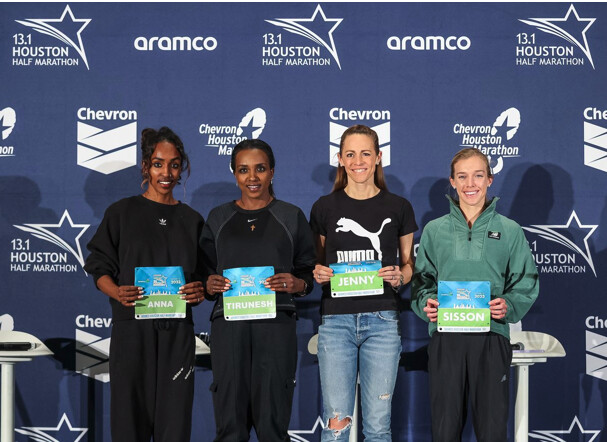
Emily Sisson Re-Breaks Her Own American Record
Sisson improved on her record the hard way by going out fast, slowing down slightly through the last sections, and kicking it in towards the finish. After Gebremaryam broke the race open in the first few miles—by 5K, she was already 17 seconds ahead of the chase pack—Sisson ran with Jessica Warner-Judd of Great Britain through 15K. The American record-holder averaged 5-minute mile pace through the first 5K but struggled in the latter half of the course, clocking 5:12 miles around 20K.
“I went out a little too fast the first 5K or so, so the last few miles I was definitely feeling it,” Sisson said on the ABC 13 broadcast.
But Sisson pushed through the discomfort as she neared the finish line to make history once again. “I’m really excited about it. I really wanted to break 67 minutes and I’m happy I did,” she said. “I actually think I could have run a little more evenly so I’m already hoping to run another half and even try to run faster.”
Sisson broke the American record for the first time in May 2022 at the USATF Half Marathon Road Championships in Indianapolis. The Providence College alum won the national title in 1:07:11, four seconds faster than the previous American record set by Sara Hall less than four months earlier at the 2022 Houston Half Marathon.
Prior to the U.S. championships, Sisson came extremely close to the mark on two occasions. When the record was 1:07:25 (held by her former training partner Molly Huddle), she ran 1:07:30 in 2019 and 1:07:26 in 2020.
Last year, the momentum continued in a big way for Sisson when she broke the American record in the marathon. In October, she demolished the time by running 2:18:29 in Chicago—lowering the previous record set by Keira D’Amato at the 2022 Houston Marathon by 43 seconds.
Close Finish in the Men’s Half Marathon
The men’s half marathon featured one of the most exciting finishes of the day. After pulling away from the chase pack together with a few miles remaining, Aleme and Kiptoo battled down to the wire. The East African competitors fought through the homestretch—where Kiptoo kept looking back to assess the distance between himself and his rival—until Aleme sprinted ahead at the last second to claim the victory.
Aleme’s performance follows a breakthrough season, which included a runner-up finish at the 2022 London Marathon in October.
Conner Mantz was the first American to finish after placing sixth in 1:01:12.
Past Greats Return to Racing, While Familiar Faces Make Debuts
In addition to Sisson’s record, there were several other notable performances in the Houston women’s half marathon, including Huddle in her postpartum return to competitive racing. The previous American record-holder finished fifth in 1:10:01 almost nine months after welcoming her daughter. In her 13.1 debut, former 1500-meter specialist and Olympic bronze medalist Jenny Simpson placed ninth in 1:10:35. Also making her debut, Vanessa Fraser finished 13th in 1:11:00. All three had room to spare in achieving the standard to compete at the 2024 U.S. Olympic Marathon Trials.
Three-time Olympic champion Tirunesh Dibaba also made her highly anticipated return. In the Ethiopian's first race in four years, she finished 16th in 1:11:35.
by Runners World
Login to leave a comment
Aramco Houston Half Marathon
The Chevron Houston Marathon provides runners with a one-of-a-kind experience in the vibrant and dynamic setting of America's fourth-largest city. Renowned for its fast, flat, and scenic single-loop course, the race has earned accolades as the "fastest winter marathon" and the "second fastest marathon overall," according to the Ultimate Guide to Marathons. It’s a perfect opportunity for both elite athletes...
more...Track legend Jenny Simpson puts her most challenging year behind her as she turns to the roads in 2023
After a year in which her world was turned upside down, the track legend has a new sponsor and new event as she makes her half marathon debut in Houston on Sunday.
As the Marshall Fire approached her house on December 30, 2021, there was a brief moment where Jenny Simpson thought to herself, I can’t believe I’m doing this. The house Simpson shares with her husband Jason was formerly a schoolhouse, built in 1900 and located in Marshall, Colo., 15 minutes southeast of Boulder. And on that day, it was under threat from what would eventually become the most destructive fire in state history.
The fire, spread by wind gusts of over 100 miles per hour, was moving quickly. As thick smoke enveloped their property, choking their lungs and blocking their vision, the Simpsons prepared for the worst. Trying to limit the burn, they watered down the yard with hoses, inadvertently soaking their clothes as the wind blew the spray everywhere. Then, as the flames moved in, Simpson took one last lap around the house, grabbing their laptops, their Jack Russell terrier Truman, and a bag containing her running medals and memorabilia — one she had assembled a month earlier while being interviewed for a documentary and fortunately had yet to unpack.
Simpson, like many of us, had previously had that conversation about the one thing you would grab if your house was burning down. She had always answered with her Bible, handed down to her from her great-grandmother Genevieve Schermerhorn (“Grandma Jenny”), for whom she was named. So, as she grabbed the Bible from her office and dashed out of the house, it hit her: I think I’m grabbing the thing that you get because we might lose everything.
By the time Simpson made it to her car, she no longer knew where Jason was or whether he would make it back to the car — the smoke was so dense, it was difficult to see. He eventually made it and they sped away from their house, not knowing when they would return — or if the house would still be there when they did.
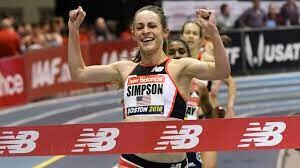
Over the course of two days, Marshall Fire would ultimately burn over 6,000 acres, destroy over 1,000 buildings, and cause over $500 million in property damage, making it the most destructive fire in Colorado history. It was a traumatic event for Simpson and her community.
Though the Simpsons’ home survived the fire, it sustained damage, forcing them to live elsewhere while it was repaired. They bounced around from a hotel to the spare bedroom of some friends from church to, eventually, a sparse apartment near the University of Colorado campus, living out of a backpack with the few things they had managed to grab from their home before the fire hit.
“It’s hard to describe how stressful that time was,” Simpson says.
On top of that, Simpson was working through a sports hernia and stress reaction in her right hip — the most significant injury of her career — and her professional future was less certain than ever. During the 2010s, few athletes were more consistent and dependable than Simpson. From 2007 through 2019, Simpson made all nine World/Olympic teams for the United States, piling up 11 national titles, three World Championship medals, and an Olympic bronze in 2016. That success led to a series of lucrative contracts from her sponsor, New Balance, and, as a highly-ranked athlete, health insurance from USOPC.
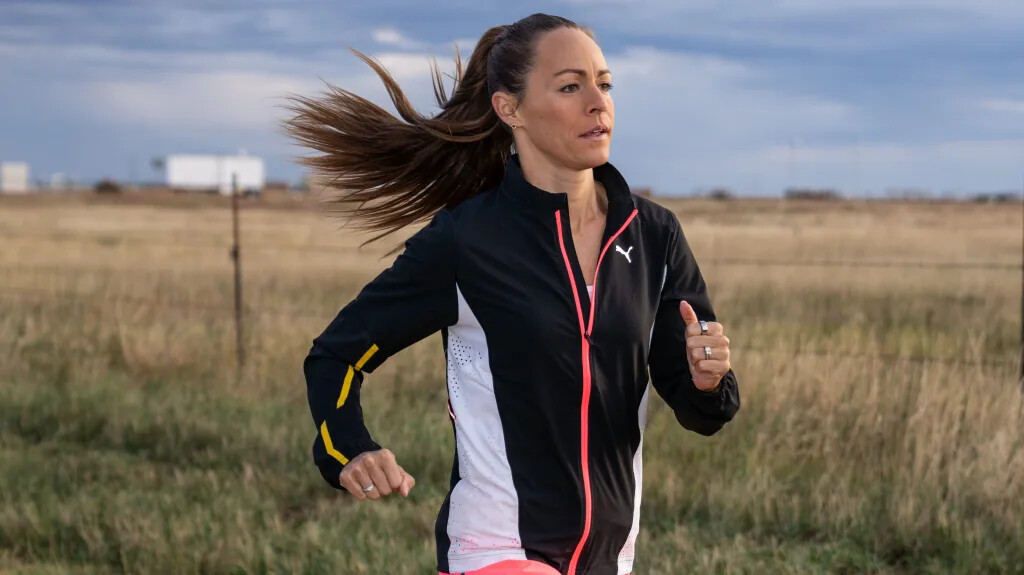
But Simpson’s New Balance contract expired at the end of 2021 — just two days after the fire that displaced her from her home. On January 1, she lost her health insurance coverage from USOPC (to qualify for coverage, an athlete had to have medalled at either the 2019 Worlds or 2021 Olympics, finished in the top 12 at the 2021 Olympics, or finished the season ranked in the top 15 in the world in their event; Simpson no longer met any of the criteria). As 2022 began, she still had Jason, and she still had the support of her longtime coaches, Mark Wetmore and Heather Burroughs. But the other constants in her life suddenly weren’t so constant.
“This last year, I felt more vulnerable than ever,” Simpson says. “The major safety nets in my life have been being a top-performing athlete and being in the tier system and in the USATF system, being a New Balance athlete and knowing I have a future there and my security at home. And my health. All of those things were really wobbly and testy and some of them fell apart in the last year.”
Rebuilding and replacing
One year has passed since the fire that upended Simpson’s world. Some elements of her life have been rebuilt, others replaced. The Simpsons moved back into their house in Marshall on April 1, and after months of work, she says it is 100% back to normal. Her body is also back to full health. That too required months of work.
Simpson had felt pain in her hip area during the fall of 2021 and though she didn’t give it much thought initially, it grew into something that significantly disrupted her training. Even as 2022 began, she remained in denial. After her streak of making teams ended at the 2021 Olympic Trials, Simpson knew she couldn’t afford to miss time if she was to return to her best.
“Pushing through cross training, pushing through the life challenges that we were going through, I definitely made my circumstances a lot worse,” Simpson says. “And I don’t think that’s unusual for runners. That’s kind of in our nature.”
Simpson was determined to avoid surgery, but realized such a path would require a more conservative approach. As winter turned to spring, Simpson, reluctantly, began to back off the intensity to allow her body to heal.
“The toughest thing about having a sports hernia injury and choosing to rehab and go that route and not jump straight into surgery is that it’s just slow,” Simpson says. “And none of us that are athletes, I think in particular runners, want to take anything slow.”
Simpson did not race at all last spring or summer, missing USAs for the first time since 2006 and missing the chance to represent the US at the first World Championships held on American soil. Simpson is now healthy again, but she’s still rebuilding the fitness she lost in 2022.
Another pillar of Simpson’s life — her New Balance contract — had to be replaced rather than rebuilt. Simpson did not want to go into specifics, but says that while New Balance verbally offered her a deal at a reduced level from her previous contract, the two sides ultimately could not reach an agreement. Eventually, Simpson, who had not used an agent since 2014, hired Hawi Keflezighi to negotiate a new deal and announced a sponsorship agreement with Puma in October.
Leaving New Balance behind was painful. Simpson signed with the company coming out of the University of Colorado in 2010, and after 12 years together had envisioned staying with the brand in some fashion for the rest of her life. Seconds after crossing the finish line in 10th in the 2021 Olympic Trials 1500, Simpson looked at the scoreboard and saw that Elle St. Pierre, Cory McGee, and Heather MacLean — all New Balance athletes — had gone 1-2-3 to make the team; Simpson was the first to congratulate them. She figured that, even once her racing days were over, there would still be some sort of role for her at New Balance.
“My whole future in sport and beyond was about how can I take what I’m learning in my career and make that in any possible way benefit the women’s team in the future,” Simpson says. “So seeing that [1-2-3 at the Trials] and knowing there was a strong middle distance future here and how can I continue to pour into that, that’s what I thought my future was.”
A move to the roads and a new beginning
For the first decade of her professional career, Simpson’s running life was fairly straightforward. She was consistently one of the best in the world in her event, meaning she could enter any race she wanted and was always in-demand from her sponsor (two of the reasons she went without an agent for so long). Every year since rejoining Wetmore and Burroughs in 2013 (she was coached by Juli Benson from 2010-12), she would sit down with them and figure out how to be at her best in the biggest race of the year, either the World Championship or Olympic final. More often than not, she succeeded.
But after failing to make the Olympic team in 2021, Simpson began to ponder her athletic mortality. She was nearing her 35th birthday and had a few options if she wanted to stay in the sport.
“The biggest consideration was, do I move up to the 5k, do I try to run a great 10k, or do we do something totally different?” Simpson says.
(LetsRun founder Robert Johnson will be devastated to learn Simpson did not mention the steeplechase, the event in which she won two US titles and set the American record in 2009).
Simpson dipped her toes into Option C by running the Cherry Blossom 10-Miler in September 2021 (she finished 2nd in 52:16). Midway through 2022, she had fully committed to the roads.
“It’s always been part of the plan that I would give the roads some good years of my career,” says Simpson. “And I think I just saw those really good years becoming fewer and fewer and I realistically wanted to make the transition before I was so, not just physically tired, but also just emotionally drained and psychologically drained from the intensity of it.”
The last few years, Simpson carved out a niche as a mentor to some of the up-and-coming athletes in the Colorado program. As a volunteer assistant at CU, Simpson was able to watch runners like Dani Jones and Sage Hurta at practice, then aid their transition to the professional ranks by traversing the circuit alongside them as a competitor/friend. With Simpson’s move to the roads, that period of her career is over.
“I think that’s what I’ll miss the most, is feeling like I get to be a little bit of a mother hen for the [Colorado] women that are doing really well and have a future as a pro in the sport,” Simpson says.
Now, Simpson is heading into the unknown. The training, obviously, is different. Though Simpson ran relatively high mileage for a 1500 runner — it was not uncommon for her to hit 80 miles in a week — she is now running 80+ regularly, doubling up to five times per week. During her track career, a long workout for Simpson would consist of 12 or 14 by 400m. Now she’s running 2k and 3k repeats on the track.
“That’s a long way to go for someone like me,” Simpson says. “…You go out on the first lap or two and you think, Are you kidding me? This is it? But it doesn’t stay easy for very long.”
Simpson has also had to educate herself about the road races themselves. When we first spoke for this story in November, Simpson admitted that, outside of the World Marathon Majors, she didn’t know many of the major road races and was still learning about how they stacked up against each other in terms of prestige.
Part of that is due to how the sport is structured. Track is simple: Worlds or the Olympics is the end goal and the rest of the season is built around that. The roads are different — people reach top fitness at different times. For marathoners, it’s fairly intuitive — pick one race to peak for in the spring and one in the fall. But Simpson isn’t a marathoner (yet). For road racers at shorter distances, it’s more choose-your-own-adventure.
Simpson’s plan: sit down with Wetmore and Burroughs, pick a race to gear that year’s training around, and attack it like they would a World Championship or Olympics.
“Even though it’s not to the world a big World Championships, it will be Mark and Heather and Jenny’s World Championships,” Simpson says.
As for the marathon, Simpson would not commit to running one eventually, but did not rule it out either. She watched Jason, after years of grinding, finally qualify for the Olympic Marathon Trials at CIM in 2018 and knows how difficult the event is. She has no desire to rush into one.
“It is really freaking hard,” Simpson says. “You don’t know for sure that your body is suited for it just because you’ve been a good runner…What it will take for me to run a marathon? If I have a great half and I feel like my body’s handling that workload really well, we’ll absolutely do a marathon. Because at that point, you’ve gotta find out, right?”
Next stop: Houston
The big question hanging over all this: will Jenny Simpson be any good on the roads? It’s no certainty that prime Simpson, the one who won a record eight Fifth Avenue Miles, would have been a force over 10k and beyond, much less the 36-year-old version coming off the most disruptive injury of her career.
Thirty-six is not necessarily old by distance standards, though. Last year, Keira D’Amato broke the American marathon record at 37 and Sara Hall broke the American half marathon record at 38. Like Simpson, both were for a time milers on the track before moving up — though it took each several years before their big breakthrough.
After down years in 2021 and 2022, logic says Simpson could have a tough go of things. The bar for success, certainly, will have to be recalibrated. At her best on the track, Simpson was one of the top three women in the world in her event. That level of accomplishment is virtually impossible for her on the roads, but could she become one of the best in the US in the 10k, half, or marathon?
Her road debut at Cherry Blossom in 2021 was auspicious (2nd place, 52:16), her appearance at last fall’s USATF 5K champs in New York less so (she was 17th in 16:07, 39 seconds behind winner Weini Kelati) — though Simpson wasn’t fully fit in New York and knew that going in.
2023 will be the real test of whether Simpson has anything left to give on the roads. And for Simpson, 2023 begins in Houston, where she will make her half marathon debut on Sunday. There is a lot riding on the outcome, which is how Simpson likes it. She has yet to pick that one race that she will plan her 2023 season around; Houston will help her make that decision.
“This will kind of chart my course of whether we stick with the half marathon, whether I start dreaming about a marathon, or whether I say maybe it’s better for me to get back on the track, spike up, and do some faster stuff over the next year,” Simpson says.
Simpson says that while her training has gone well, the adjustment to training for the half marathon has been more challenging than she expected.
“When I ran Cherry Blossom and I ran 5:14/mile pace the whole way, the idea of running 5:10’s for a half marathon (67:43 pace) seemed right around the corner,” Simpson says. “Now having gone through a year of injury and a lot of other life challenges, I’m having to adjust what I think my half marathon debut is going to look like.”
Simpson will have Jason with her as a pacer on Sunday and said they will plan to go out faster than her pace at the Army 10-Miler in October, a race she won in 54:16 (71:08 half marathon pace). She says she has a time goal in mind but elected not to share it. Her main hope is that she can finish the race well. During her track career, Simpson was famous for her strength in the final 100 meters, but in her last two road races, she felt as if she was holding on for dear life at the end.
Simpson will step to the line on Sunday with an uncertainty that did not exist during her track career. When Simpson started a 1500-meter race, she came armed with knowledge gleaned from years of experience. She knew exactly what sort of time she could expect her workouts to translate to and how to respond tactically to every race scenario. In the half marathon, she’s starting over.
“That’s one of the trepidations of going into the race in Houston is that I’m so used to having such a clear idea of what I am capable of,” Simpson says. “My race in Houston will be as much of a discovery as the training has been.”
Even Simpson admits she doesn’t know how many more years she’ll continue to race professionally. A few years ago, she had scripted out a storybook ending for herself: a fourth Olympic team in Tokyo and a home World Championships in front of friends and family in Eugene. Make those two teams, she thought, and she would have total freedom to do whatever she wanted afterwards, whether it was continuing to race on the roads, pursuing a coaching career, or starting a family.
That, of course, did not happen. In professional sports, endings rarely go according to plan. But Simpson is embracing the adventure that comes with her new path, wherever it leads.
“The idea I had in mind was kind of cool, but there are some things that we’re now looking forward to that I couldn’t have even imagined,” Simpson says. “And if it turns out that way, it will end even better.”
by Jonathan Gault
Login to leave a comment
Aramco Houston Half Marathon
The Chevron Houston Marathon provides runners with a one-of-a-kind experience in the vibrant and dynamic setting of America's fourth-largest city. Renowned for its fast, flat, and scenic single-loop course, the race has earned accolades as the "fastest winter marathon" and the "second fastest marathon overall," according to the Ultimate Guide to Marathons. It’s a perfect opportunity for both elite athletes...
more...

